

MANASLU CIRCUIT TREKKING GUIDE

Pin 523 Tweet Share WhatsApp 523 Shares
MANASLU CIRCUIT TREK
The Essential Guide
So you’re thinking about tackling the Manaslu Circuit Trek? Great choice! Of the various treks we’ve done around Nepal, including Annapurna Circuit, Everest Three Passes, Langtang Valley and Upper Mustang, we think this is one of the best. The scenery is diverse and impressive, and in an age where development is proceeding at breakneck speed, the Manaslu Trek has the advantage of being quieter and much less impacted by road building. Additionally, Tibetan cultural influences at higher altitude lend a unique flavour to the experience that is notably different from other areas.
In this guide we’ll cover a whole range of essential topics including when to go, what to take, how to organise your trek, budgeting for your trek, accommodation, food, and much more. Want to know more about the Manaslu Circuit itinerary itself? Check out our day by day account of the trek . Want to see what the trek is really like? Watch our complete Instagram Stories from the journey ( part one / part two ), and check out our video below.

WATCH THE VIDEO
Read through our complete Manaslu Circuit trekking guide or jump to a particular section by clicking on the links below.
Read through our complete Manaslu Circuit trekking guide or jump ahead to a particular section by clicking on the links below.
MANASLU CIRCUIT ITINERARY | MANASLU CIRCUIT TREK MAP | WHEN TO GO | HOW LONG IT TAKES | MANASLU CIRCUIT TREK DIFFICULTY | HOW TO ORGANISE THE TREK | THE D.I.Y. APPROACH | HOW TO CHOOSE A GUIDE | BOOKING AN INCLUSIVE TOUR | MANASLU CIRCUIT PERMITS | MANASLU CIRCUIT TREK COST | TIPPING GUIDES AND PORTERS | MONEY ON MANASLU CIRCUIT | ACCOMMODATION | FOOD AND DRINK | DRINKING WATER | INTERNET AND CHARGING | WHAT TO TAKE | ALTITUDE AWARENESS | TRAVEL INSURANCE | TSUM VALLEY SIDE TRIP | MANASLU CIRCUIT TREK HIGHLIGHTS | THINGS WE WOULD DO DIFFERENTLY | GETTING TO/FROM THE TRAIL | GETTING TO NEPAL | TOURIST VISAS | EXTRA RESOURCES
MANASLU CIRCUIT ITINERARY MANASLU CIRCUIT TREK MAP WHEN TO TREK MANASLU HOW LONG THE TREK TAKES MANASLU TREK DIFFICULTY HOW TO ORGANISE THE TREK THE D.I.Y. APPROACH HOW TO CHOOSE A GUIDE BOOKING AN INCLUSIVE TOUR MANASLU CIRCUIT PERMITS MANASLU CIRCUIT COST TIPPING GUIDES AND PORTERS MONEY ON MANASLU CIRCUIT ACCOMMODATION FOOD AND DRINK DRINKING WATER INTERNET AND CHARGING WHAT TO TAKE ALTITUDE AWARENESS TRAVEL INSURANCE TSUM VALLEY SIDE TRIP MANASLU TREK HIGHLIGHTS WHAT WE’D DO DIFFERENTLY GETTING TO/FROM THE TRAIL GETTING TO NEPAL TOURIST VISAS EXTRA RESOURCES
*Some of the links in this post are affiliate links – if you purchase a product or service via these links, we may earn a small commission at no extra cost to you . This helps offset the cost of running this blog and keeps us travelling so that we can continue to produce great content for you. We greatly appreciate your support!*
MANASLU CIRCUIT TREK ITINERARY
Below is an overview of the Manaslu Circuit trek itinerary. This is not set in stone, just a suggested route. Some people stay in alternative villages along the way, or add an extra acclimatisation day at Samdo. Trekking distances and times are approximate.
*If you are concerned about altitude sickness, adding an extra day at Samdo is a good idea. From here you can do an acclimatisation hike to the Tibetan border at Rui La (4998m, 19km/10 hours) or easier hikes up the hills around the village.
**It is now possible to take a shared jeep from Tilche so you have the option of finishing the trek there instead of Dharapani
MANASLU CIRCUIT TREK MAP
We’ve marked the Manaslu Circuit trekking route on the map below, along with key villages and sights along the way. Tap the menu button at the top left for more details, to toggle layers on and off, and switch between satellite and terrain view.
To use an offline version of this map, download our KML file for use with Maps.me ( iOS / Android ) or Organic Maps ( iOS / Android ) , or the GPX file for use with alternative offline mapping apps such as Gaia ( iOS / Android ). See our expandable box below for tips on using these apps.
Download GPX | Download KML
HOW TO SAVE THIS MAP (ONLINE VERSION)
To save this map to use online on desktop or mobile just tap the star symbol at the top. When you open Google Maps on your phone, navigate to ‘Saved’ at the bottom, then swipe along to ‘Maps’ at the top. You’ll find this map in your list of maps.
On desktop, click ‘Saved’ on the left side, then ‘Maps’. Click the map, then select ‘Open in My Maps’ to access the interactive version .
Alternatively, just tap the rectangle symbol at the top right of the map in this blog post to view the My Maps version larger on desktop.
Unfortunately, it’s not possible to view this version of the map offline, but we’ve created a similar version for offline use as per below.
HOW TO SAVE THIS MAP (OFFLINE VERSION)
ORGANIC MAPS
Organic Maps is our go-to offline mapping app. We find it straightforward to use for planning routes in advance, as well as navigating on the trail. It doesn’t drain our phone battery, and it’s quick and easy to save and organise ‘bookmarks’. There are many trails already marked on Organic Maps, plus you can download and import a KML track of your route to the app.
To use Organic Maps, first download the app ( iOS / Android ). Hover over the region or country that you want to visit and the app will prompt you to download this map. Once downloaded, it can be viewed offline.
You can tap anywhere and save it as a ‘bookmark’ by tapping the star symbol at the bottom. Hit ‘Edit Bookmark’ to personalise the bookmark colour, organise your bookmarks into different folders, and rename them.
You can navigate easily or plan routes in advance by tapping your start point and selecting ‘route from’, then tapping your end point and selecting ‘route to’. Tap the car, walking, or cycling symbol at the top of the screen to indicate your mode of travel. If you want to plot a different route to the one suggested by Organic Maps, just tap a third (or fourth, fifth, etc.) bookmark between the start and end points and select ‘add stop’.
Organic Maps shows the distance and travel time, plus elevation profiles for hiking trails . Note that the estimated time isn’t always reliable, but we’ve always found the distance and elevation gain/loss to be largely accurate. It only shows very basic contour lines.
You can track your progress on the trail using GPS . The arrow shows your direction of travel. Tap the compass at the top right of the screen to keep the map in a fixed position (the arrow will rotate). Alternatively, tap the arrow at the bottom right of the screen to rotate the map in the direction of travel (the arrow will stay in a fixed position).
Note that Maps.Me works in almost the exact same way, but it has in-app ads making it less user friendly in our opinion.
Gaia ( iOS / Android ) is another offline mapping app that is very useful. It shows the contours in much more detail than Organic Maps, and you can download both the topographical and satellite view of your route in advance for offline use. The app has existing OpenStreetMap trails marked and you can import GPX tracks and view them offline. You can also create new routes online yourself and export them as GPX or KML files. You can navigate easily on the trail using the arrow that shows your GPS location. You can also check distances between places offline , however you will only get elevation profiles while online. There are a lot of useful features in the free version and even more benefits if you have a paid annual membership, so if you spend a lot of time outdoors it is worthwhile learning how to use the app to its full advantage.
In our experience, Gaia drains your phone battery much quicker than Maps.me, even in flight mode, so it’s best to shut down the app completely each time you finish using it.
WHEN TO TREK THE MANASLU CIRCUIT
Autumn/fall.
The best time to go trekking in Nepal is from September to November . The weather is generally dry and clear, with warm sunny days and excellent visibility. There’s a lower likelihood of weather related natural disasters at this time of year, making for a much safer trekking environment. The downside as far as the Manaslu Trek goes? The Manaslu Restricted Area Permit (RAP) is $100 per week during this period as opposed to $75 per week at all other times. Furthermore, given that it’s the best season, it’s also the busiest. Saying that, we hiked the Manaslu Circuit in October, had a great time, and still found it to be much less busy than other treks in Nepal.

A cold, crisp, clear morning view of Manaslu (8163 m) at first light, seen from Samagaun (3520 m) on the Manaslu Circuit in October

A clear morning view of Manaslu (8163 m) seen from Samagaun (3520 m) in October
The spring season from March to May is considered to be the next best option . The weather is generally clear although a little colder, particularly at higher altitudes. Mornings are sunny and flowers are in bloom. There is however a higher chance of rain, or even snow, and melting ice increases the chances of landslides or avalanches – something we experienced trekking to Annapurna Base Camp in April.
June to August is to be avoided. The monsoon is responsible for warm and wet weather, with cloud and mist making visibility extremely poor. We can testify to this. Our very first trek in Nepal was in June and we hardly saw a mountain. Leeches are a big problem at this time of year, as is the risk of landslides. As the Manaslu Region was one of the worst affected by the 2015 earthquake, there are many landslide areas – these can be more dangerous in wet weather.
In the winter, from December to February , temperatures in higher altitudes plunge. Snow and ice make this time of year unsuitable for the Manaslu Circuit Trek.
OUR RECOMMENDED TREKKING AGENCY
We partnered with Himalayan Masters for our Langtang Valley, Gosainkunda, and Everest Three Passes treks, and found them to be professional and committed to a high level of service
To enquire about your own trek, get in touch via email at [email protected] and mention the code HOGG5 to get a 5% discount off the cost of your trip
HOW LONG DOES THE MANASLU CIRCUIT TREK TAKE?
The whole Manaslu Circuit Trek can be done in 13 days. That includes 2 travel days getting to and from the trail. However, some itineraries suggest longer, including an extra acclimatisation day at Samdo and/or continuing to walk from Dharapani rather than taking transport.
On our own journey, we took 13 days to reach Dharapani where we joined the Annapurna Circuit . This included the standard acclimatisation day at Samagaun, the travel day by bus from Kathmandu to Arughat, and 2 days trekking between Arughat and Machakhola (now no longer required as the road goes all the way to Machakhola).

Surrounded by snowy mountains on an acclimatisation day trek to Pungen Gompa (4050 m)

Surrounded by mountains on an acclimatisation trek to Pungen Gompa (4050 m) from Samagaun
TREK DIFFICULTY
So how difficult is the Manaslu Circuit Trek?
We’ve seen this trek described as hard, strenuous and moderately difficult to name but a few. Which doesn’t really tell you a lot. However, there are some things we can say with certainty.
As far as the trail itself goes, the paths are mostly in good condition. No technical skills are required so the act of walking is pretty straightforward. There are a few exceptions where things can get a little tricky, such as when the trail detours around landslides. The ground in these areas can be a bit less firm and a bit more slippery, so extra care is needed here.
Over the course of the trek, you ascend in altitude from 700 m to 5106 m. This takes a considerable physical effort, and what’s more, it’s not all up, up, up. Much of the route, particularly in the early days, involves plenty of up and down – descending to cross the river, ascending again, then repeating the process further along the trail.

Time to put effort in on the trail. Climbing stone steps after crossing the Budhi Gandaki, on a morning of steep ups and downs from Dyang/Deng (1860 m) to Ghap (2050 m)

Putting some effort in on the trail. Climbing the stone steps after crossing the Budhi Gandaki, enroute from Dyang (1860 m) to Ghap (2050 m)
So given the physical effort required, it clearly helps to be as fit as possible. Saying that, you don’t have to be an athlete, far from it. People of all ages and levels of fitness complete the Manaslu Circuit Trek. The key point to remember is to hike at your own pace.
How Much Weight Will You Carry?
Aside from your physical fitness, this is the most important factor in determining how difficult the trek will be.
If you choose to carry all your own gear, clearly it will be more challenging. To make things easier for yourself, think carefully about what you need to take, and try to make your gear as lightweight as possible.
If you choose to hike with a porter as well as a guide, then the difficulty level becomes much easier. Carrying only a small daypack with a few essentials means the trek can be tackled by anyone with a moderate level of fitness.
CHALLENGE YOURSELF ON THE EVEREST THREE PASSES TREK

PLAN YOUR TREK WITH OUR GUIDE

TRAIL NOTES AND OTHER USEFUL INFO
HOW TO ORGANISE A MANASLU CIRCUIT TREK
The Manaslu region is a restricted area, and as such, it’s not permitted to hike the Manaslu Circuit Trek independently . You must be accompanied by at least one government authorised person and there are two options to choose from. The first is a D.I.Y. approach where you arrange a guide (and/or porter) and pay for food, accommodation and transport along the way. The second is to book a prepaid package tour which includes everything.
THE D.I.Y. APPROACH
If you plan on trekking by yourself, as a couple, or as part of a small group, there are a few things to consider before deciding who to hire. The two most common situations on the Manaslu Circuit are those hiking with a guide or with a guide and porter, but before you decide which is best for you, it’s important to think about what you need. To help with that decision, first we’ll outline the differences between the various options, then go on to discuss how best to choose a guide and what to look for.
Guides, Porters & Porter Guides: Which Setup To Choose
If you’re relatively fit and can keep the weight of your bag to a sensible level (around 15 kg), then you probably don’t need a porter. In which case, hiring a guide makes the most sense.
You can expect them to have a good level of English, know the trail and places on it well, and be more likely to have knowledge about the history, culture and geography of the area. Saying that, it can very much depend on the trekking company you choose and the individual guide provided. A guide generally costs $20-30 USD per day , although some agencies may charge more.
Porter Guide or Porter
If you don’t want to carry all your own gear then you’ll need to hire at least a porter or a porter guide. A porter is the cheapest option at around $18-25 USD per day , while a porter guide costs around the same as a guide . So, how to choose?
Well, a porter will be cheaper, but it’s probable that they will speak very little English. You can expect very little other than that they carry your bag. Porters can carry up to 30 kg (maximum, but less is better), so you generally only need one for every two trekkers. While trekking with just a registered porter is possible, it’s important to note that this is not very common.
A porter guide will be more expensive (roughly the same as a guide). They tend to be trainee guides who will also carry your gear, although perhaps not as much as a porter. You can expect them to have better English than a porter, although not as good as a guide (this may vary with experience). Having a porter guide (or guide) with good communication skills can make a big difference. Unlike other regions where it’s possible to trek independently, guesthouses and lodges on the Manaslu Circuit are used to dealing with guides, not trekkers.

Kim and our guide, climbing the trail from Samdo (3640 m) to Dharamsala/Larke Phedi (4460 m)

Kim and our guide, climbing the trail from Samdo (3640 m) to Dharamsala (4460 m)
Guide & Porter
If you don’t want to carry your gear and are not limited by an overly tight budget, then this is likely the best option for you: a knowledgeable guide to lead the trail and communicate on your behalf, as well as a porter to carry your gear.
This setup is most cost effective when you have a group with an even number of trekkers, as you generally only need one porter for every two trekkers. Most agencies allow up to five people per guide, the total cost being shared among the group.
How To Choose A Guide
The trekking industry in Nepal is huge and there are no shortage of registered companies and accredited guides competing for business. As such, it can seem a bit of a minefield when it comes to finding and choosing a guide, especially when looking online.
Finding a guide in Kathmandu
If you have a few days in Kathmandu and are comfortable not having anything pre-booked, it is definitely advantageous to shop around in person. It is much easier to get a sense of a trekking company and a guide when you meet them face to face. There are many trekking agencies in the Thamel area of Kathmandu, which is also the main backpacking hub and an ideal place to base yourself.
Organise a guide before travelling to Nepal
If you’re organising a guide before you go, a recommendation from someone you know and trust goes a long way. Just make sure you get a guarantee of who your guide will be. We’re aware of people arranging with a particular company for a certain guide, only to arrive and discover that they have a different guide. As the guide is the person you’ll be spending all your time with, they are the most important factor.
If you don’t have a recommendation but still want to organise a guide before you go, you can browse guide profiles here and here . Both sites outline the guides’ daily rate, experience and contact details so you can get in touch directly and discuss options with them.
Local trekking agencies commonly sell package tours but it is usually possible to arrange something more bespoke if you contact them directly to outline what you need and want, such as a guide only option
Our Recommended Trekking Agency
Our recommended trekking agency is Himalayan Masters , a company we’ve partnered with on two major treks, Langtang Valley/Gosainkunda and Everest Three Passes. They can arrange guide only, guide plus porter, or inclusive packages for a Manaslu Circuit trek, whatever suits your needs.
The company is professional, committed to a high level of service, and competitively priced. They are the third company we’ve trekked with in Nepal, and we can honestly say that Himalayan Masters provided us with the best guided experience we’ve had. What’s more, having met numerous other Himalayan Masters guides on the trail, and getting feedback from the trekkers with them, we’re confident that our positive experience with the company is one shared by others.
To enquire about a trek with Himalayan Masters just contact them via email at [email protected] to discuss your plans, and quote our referral code ‘ HOGG5 ’ for a 5% discount off your trip cost.
Trekking Solo
If you’re a solo trekker and want to hook up with others to share the costs of a guide, then take a look at this page . Here you’ll also find people looking to partner up in order to get the Manaslu Restricted Area Permit (RAP). A minimum of two trekkers is needed to get the permit, although it is possible to get around this ( see permits section ).
Female Guides
If you would like to hire a female guide, there are a few companies out there who can help with this. 3Sisters Adventure Trekking is an agency based out of Pokhara which is very highly regarded.

Appreciating the view at the Numla Khola suspension bridge between Shyala and Samagaun

Appreciating the view at the suspension bridge over the Numla Khola, between Shyala and Samagaun
Things to consider when choosing a guide
Whether you’re getting organised ahead of time or finding someone in Kathmandu, here are the main things to keep in mind.
Talk to as many guides/agencies as possible to compare prices and services.
Ask about the guide’s experience with the trek.
Have a conversation to gauge their level of English.
Ask if they have had any safety training and ask to see the certificate if they say yes. Ask how they would handle an emergency situation.
Ask whether they will drink alcohol on the trek (not necessarily a deal breaker, just use your judgement).
If after this you’ve found someone you’re comfortable with, here are a few things to remember when finalising your arrangement.
Check that they are properly registered and insured (ask to see proof).
Agree on the daily rate, number of days and total price.
Agree on who pays for your accommodation and food (it’s most cost effective to pay for yourself along the way rather than paying up front to the trekking agency).
Confirm that the guide covers their own food and accommodation along the way (this is usual).
Agree that you have the final decision on which guesthouse/teahouse you’ll stay in at each place. A guide will often have a preferred place to stay for their own reasons which may not align with yours. This works best if you’re paying for your own accommodation as you go.
Make sure your guide (and porter) is well equipped
Make sure your guide and porter have everything they need prior to setting off on your Manaslu Circuit trek. If you’re hiring an experienced guide through a long established agency, then chances are they will be well prepared for conditions on the trail. However, this isn’t always the case. Younger, more inexperienced guides often don’t have the equipment they need. Porters too can sometimes lack what we would consider to be basic trekking necessities. We’ve seen some young porters with trainers on their feet that were practically falling off.
Check that your guide and porters have the following.
Warm clothing for higher altitudes (down jacket, gloves, hat, etc.)
Proper boots in good condition
Suitable waterproofs
Sleeping bag (it’s common for guides and porters to sleep in lodge dining areas on the Manaslu Circuit if it’s busy and there are not always enough blankets)
What To Expect From A Guide (And Porter)
Having a professional and experienced guide is invaluable when it comes to your time on the trail, making for a safe and hassle-free journey, and giving you the opportunity to learn more about the history, culture, and geography of the land.
You will usually meet a guide (and porter) in Kathmandu prior to your trek, travel to the trailhead together, and then return to Kathmandu together at the end.
During your trek a guide will stick with you on the trail, recommend the best spots to stop for lunch, and suggest overnight accommodation options. At busy times, they may be able to call ahead and pre-book a room for you (depending on phone service). They will act as your go-between at each guesthouse, arranging your room, taking your food orders, and settling the bill. It’s normal for a guide to run through the following day’s itinerary each evening, giving you an overview of the trail, trekking time, and any other relevant information. Your guide will always be around at your guesthouse, but they won’t stick by you constantly. You will have plenty of freedom to hang out in your room or the dining room, read your book, chat with other guests, play cards, etc. Guides sleep and eat in the same guesthouse as you, always in a separate room.
Porters often trek at their own pace, meaning you won’t always be with them on the trail. It’s common for you to pack your porter bag before breakfast and have it ready for them, and for your bag to already be in your room when you arrive at your guesthouse for the evening. On the Manaslu Circuit trek, porters will sleep and eat at the same guesthouse as you, again in a separate room.
MORE TREKKING & HIKING ADVENTURES

Hiking, Bothy Stays and Wild Camping on Skye

Everest Base Camp Trek: The Essential Guide

Everest Three Passes Trekking Route Guide

Everest Three Passes Trek: The Essential Guide

Gosainkunda Helambu Trekking Route Guide

Gosainkunda Trek: The Essential Guide

Langtang Valley Trekking Route Guide

Langtang Valley Trek: The Essential Guide

What To Pack For Trekking In Nepal

Our Complete Hiking Gear: What We Use and Why

Our Backpacking Camping Gear: What We Use and Why

A Guide To The Moray Coast Trail

9 Things To Know About Trekking In Georgia

West Highland Way Route Sections: A Stage-By-Stage Guide

A Guide To Trekking In The Geghama Mountains, Armenia

West Highland Way: The Ultimate Guide

Udziro Lake Hiking Guide

A Guide to Borjomi-Kharagauli National Park

Borjomi-Kharagauli NP: Panorama Trail Hiking Guide

Hiking From Ushguli To Chvelpi Via Latpari Pass

Mestia to Ushguli: Svaneti Transcaucasian Trail Hiking Guide

Chuberi to Mestia: Svaneti Transcaucasian Trail Hiking Guide

A Guide To The Kelitsadi Lake Trek

Black Rock Lake Trek in Lagodekhi National Park

Trekking from Tusheti to Pankisi Valley

Trekking from Shatili to Omalo via Atsunta Pass

Hiking from Juta to Roshka via Chaukhi Pass

Truso Valley Hiking Guide

Hiking To Gergeti Glacier And Gergeti Trinity Church From Kazbegi

Kojori To Tbilisi Day Hike

Upper Mustang Trek: The Essential Guide

Upper Mustang Trek Itinerary: A Day By Day Account

Annapurna Circuit Trek: The Essential Guide

Annapurna Circuit Trek Itinerary: A Day By Day Account

Manaslu Circuit Trek: The Essential Guide

Manaslu Circuit Trek Itinerary: A Day By Day Account

Jeju Olle Trail: Routes 13 to 18-1

Jeju Olle Trail: Routes 7 to 12

Jeju Olle Trail: Routes 2 to 7-1

Jeju Olle Trail: Routes 18 to 1

Camping The Jeju Olle Trail: Everything You Need To Know

Wat Pha Lat: Hiking To Chiang Mai’s Hidden Temple

Fann Mountains Trekking Routes & Travel Guide

The Scottish Bothy: An Introduction

Trekking in Tajikistan’s Fann Mountains: Haft Kul (7 Lakes) to Alauddin Lake

Hiking Hallasan: South Korea’s Highest Peak

Saryangdo: The Best Day Hike in Korea
Booking an inclusive tour.
If you want to have everything packaged together in an inclusive tour, there are no shortage of options out there. Group tours with international companies such as Exodus and World Expeditions include all of your transport, accommodation, and guide, plus meals on certain tours. These international companies tend to work with the very best local trek operators, so you can expect very professional service, highly experienced guides, and a pricetag to match.
Less expensive package tours run by local trekking agencies may just include your days on the trail and won’t necessarily be group treks with set departure dates. The professionalism and experience of the guide can vary greatly. You can browse a range of options on Tourradar.
Alternatively, contact our recommended local trekking agency directly, Himalayan Masters , who offer inclusive packages for a Manaslu Circuit trek from $995 USD. As outlined in the ‘How To Choose A Guide’ section above, we and other trekkers we’ve met have had a highly positive experience trekking in Nepal with them. To organise your trek, get in touch via email at [email protected] and mention our referral code ‘ HOGG5 ’ for a 5% discount off your trip cost.
The pros and cons are the same with any inclusive tour. Everything is organised for you, but the costs can be considerably higher and freedom to choose is limited. So it entirely depends on what you need and want. If you have limited time and want to simply relax and enjoy your trip, without any of the hassle of organising the logistics along the way, then booking a tour could be for you.
Things to remember when booking a tour
Depending on the tour you book and the company you book with, different things will be included. Here are a few key questions to ask.
Transport How will you be getting to and from the trail (private jeep or public bus?)
Accommodation Will you be sharing a room and with how many people?
Food Can you order what you like or are your choices limited?
Drink What drinks are included and how many a day?
Permits Are all permits included in the cost of the trek?
MANASLU CIRCUIT TREK PERMITS
In order to do the Manaslu Circuit Trek, there are three separate permits required per person. Here we’ll outline what they are and how much they cost. Your trekking agency can get all three permits for you.
Restricted Area Permit for Manaslu (Manaslu RAP)
The restricted area status stems from the fact that it shares a border with Tibet. This permit is needed between Jagat and Dharapani.
There are two different costs depending on the season:
September – November: 100 USD for 7 days ($15 for every additional day)
December – August: 75 USD for 7 days ($10 for every additional day)
For a standard 13 day Manaslu Circuit Itinerary, 7 days in the restricted area is enough and there is no need to pay for extra days.
This permit can only be obtained from the Department of Immigration by a fully licensed trekking agency. You will need to provide your passport.

An example of the Manaslu Restricted Area Permit (RAP)

The Manaslu Restricted Area Permit (RAP)
A minimum of two trekkers travelling together is needed to get this permit , but if you’re a solo traveller, there is a way around this. There is a practice of “ghost permits”. This is where a trekking agency uses another person’s passport who isn’t trekking to get a second permit. Alternatively, agencies who have guides trekking with solo travellers on the same dates can apply for the permit as if they were together, then trek separately on the trail. We met people who had done just that. If you’re travelling solo, you’ll need to discuss these options with your guide and their company.
Manaslu Conservation Area Project (MCAP Permit)
The MCAP Permit is to help protect the ecosystem of the area and help improve the lives of the local population.
The MCAP Permit costs 3000 NPR per person (local currency only)
You can get this permit yourself from the Nepal Tourism Board in Kathmandu or your guide can get it for you. To get the permit you need your passport and two passport photographs.

An example of the Manaslu Conservation Area Project Permit (MCAP)

Manaslu Conservation Area Project Permit (MCAP)
Annapurna Conservation Area Project (ACAP Permit)
The Manaslu Circuit crosses into the Annapurna Conservation Area, just below Bimthang on the way to Dharapani. This permit is needed as far as Besisahar.
The ACAP Permit costs 3000 NPR per person (local currency only)
As with the MCAP, you can get this permit yourself from the Nepal Tourism Board in Kathmandu or your guide can get it for you. To get the permit you need your passport and two passport photographs. It looks pretty much the same as the MCAP permit.
There is no need for a TIMS Card (Trekking Information Management System) on the Manaslu Circuit, although you would need one if you were continuing on the Annapurna Circuit.
SEE MORE OF NEPAL ON THE LANGTANG VALLEY TREK

PLAN YOUR LANGTANG VALLEY TREK WITH OUR COMPLETE GUIDE

DETAILED TRAIL NOTES AND OTHER INFO FOR THE LANGTANG TREK
MANASLU CIRCUIT TREK COST
So, how much does the Manaslu Circuit trek cost? Your overall budget will depend on a variety of different factors. We’ll look at a ballpark figure for both the D.I.Y. Approach and an inclusive tour, then break down the costs for permits, guides and porters, accommodation and food, and transport.
INCLUSIVE TOUR
For a standard 13 day tour, prices start from around $950 USD per person with a local trekking company, although it’s worth noting that there are few options at this price. There is quite a range beyond this with some international group tours costing $2000 USD or more. The majority of packages lie somewhere between $1000 – $1600 and can be anything from 11 -18 days.
If you’re thinking about booking a tour, remember to check all the inclusions, ask questions of the operator, and look at reviews before making a decision.
Planning to pay as you go? Using the amounts outlined in the individual sections below, here’s an estimated figure for the cost of a Manaslu Circuit Trek based on trekking staff, accommodation, permits, food and transport to/from Kathmandu.
Based on two trekkers travelling together with one guide , you could expect to pay around $600 – 750 USD per person for a 13 day trip .
Based on two trekkers travelling together with one guide and one porter , you could expect to pay around $900 – 1050 USD per person for a 13 day trip .
As outlined in the permit section, there are three permits required for the Manaslu Circuit. The combined cost of these permits will be $150 (Sept-Nov) or $125 (Dec-Aug) .
If you’re a solo traveller there may be extra costs if you need a ‘ghost permit’ ( see permits section )
Guides & Porters
Let’s say a guide will cost on average $25 per day and a porter will cost on average $23 per day .
For a standard 13 day trip a guide will cost $325 and a porter will cost $300
For a guide and porter together that would be $625
Obviously, the more people you share this cost with, the cheaper it will be per person.

Porters loading up and getting ready for the day ahead at Jagat (1340 m)

Porters loading up and getting ready for the day ahead at Jagat (1340 m)
Accommodation
The standard price for a twin room in our experience was 600 NPR .
The cheapest price we paid was in Dharapani (500 NPR), and the most expensive was in Samdo (650 NPR). Whether the room is used by one person or two, t he price is the same.
Based on 12 nights, let’s say an accommodation budget of 7500 – 8000 NPR for two people is reasonable . That would be around $60 USD . Many trekking agencies online suggest that a room is $6-10 USD per night, however in our experience $6 would be at the high end of the scale.
Food and Drink
Food and drink costs can vary widely from person to person depending on how much you consume, but the following figures should provide a good guide.
On our 12 days of actual trekking we spent an average of 2000 NPR per day per person .
The early days at lower altitudes were cheaper at around 1500 -1800 NPR per person.
From Lho onwards our daily food costs were around 2000 -2500 NPR per person.
Our most expensive day was at Dharamsala which cost us 3400 NPR per person.
This was for three meals a day and plenty of hot drinks, especially at higher altitudes. Prices creeped up at first then shot up significantly at much higher altitudes where supplies are harder to come by. Finally, having bought plenty of snacks in Kathmandu we never had to splash out on anything to keep us going between meals.
Given these figures, a daily food budget of $15-20 USD should be plenty , with $20 being generous.
Including a bit for the travel days either side, a total food budget of $200 – 250 USD per person is certainly sufficient.
Transport costs vary widely depending on whether you travel by local bus or private jeep.
Taking the local bus options to and from Kathmandu should cost no more than a total of $20 USD per person .
A local jeep from Dharapani to Besi Sahar at the end should cost no more than a maximum of $20 per person .
This would bring total transport costs to a maximum of $40 USD per person.
A private jeep to and from Kathmandu would cost around $200-250 USD each way (total for vehicle, not per person).
Service Charge & Taxes
It’s standard for trekking agencies to charge a fee for their services and to cover the cost of government taxes. You can expect this to be no less than $50 USD per person.
TIPPING GUIDES AND PORTERS
While tipping trekking guides and porters is not essential, it is recommended, expected, and is generally a good thing to do. It rewards them for their service and helps supplement relatively low wages.

A couple of hardworking porters ready for their lunchtime dal bhat after a serious uphill stretch

How Much Should You Tip?
So how much should you tip? The following figures are generally accepted guidelines.
Recommended Minimum Amount
500 NPR ($4 USD) per person, per day for guides
400 NPR ($3 USD) per person, per day for porters
For larger groups tip 10% of total tour cost to be split between all trekking staff
How good was the service?
While it is good practice and expected to tip, if for some reason you’re unhappy with the level of service then it’s entirely up to you whether you tip less, or maybe even not at all. This could be anything from poor communication to bad advice, or perhaps even drunkenness. On the other hand, if your guide or porter has gone above and beyond, then by all means tip more if you can afford to.
MONEY ON THE MANASLU CIRCUIT
The amount of money you need to take on the Manaslu Circuit Trek will depend on whether you’re on an inclusive tour or taking the D.I.Y. Approach. If you are on an inclusive tour then you’ll only need money for any snacks or drinks over and above what’s included in your package. If you are paying as you go, then you’ll need to have enough cash to cover all costs: accommodation, food, drink, etc. ( see budget section )
Everything is payable in the local currency, Nepalese Rupees (NPR). Take plenty of small denomination notes as change is not readily available on the trail, particularly at higher altitudes. If you have a few days in Kathmandu beforehand, pay for things in big notes to build up your supply of small ones. Also beware that ATMs have max withdrawal amounts, and your bank may have a max daily withdrawal limit, so you may not be able to withdraw the total amount that you need all in one day.
There are no ATMs on the trek and you must pay in cash for everything.
LOOKING FOR ANOTHER BIG TREKKING ADVENTURE?
Why not trek to K2 Base Camp on one of Pakistan’s most rewarding active adventures?
Book with Epic Expeditions and get 5% off with our code WHOLEHOGGISEPIC
ACCOMMODATION & FACILITIES ON THE MANASLU CIRCUIT
Accommodation is in guesthouses (often called teahouses) along the way. These guesthouses are often clustered together in small settlements to cater for trekkers, or occasionally by themselves in quieter spots. In larger places, like Samagaun and Lho, they sit alongside or nearby the homes of locals.

The K.L.S.P. Jungle Hotel (2260 m) tucked away in a secluded spot between Ghap and Namrung

This region of Nepal was badly affected in the 2015 earthquake, with many guesthouses and homes being damaged or destroyed. However, most rebuilding has been completed and new places continue to spring up all the time.
So what’s accommodation on the Manaslu Circuit like? If you’ve trekked in Nepal before then you’ll know what to expect. The accommodation is similar to what you find on other treks, although generally more basic than on the Annapurna Circuit, for example. Places do vary in size, decor and state of repair, but most things are pretty standard.
Rooms have two single beds and usually a small window. Pillows and blankets are always provided but a sleeping bag is a must (don’t expect the blankets to be particularly fresh or clean). Think of the blanket as supplementary to your sleeping bag when it gets cold.

A twin room at the Larke Peak Hotel in Machhakhola (869 m). Pretty standard at lower altitudes but rooms are more basic higher up.

A twin room at the Larke Peak Hotel in Machhakhola (869 m). Standard at lower altitudes, with rooms more basic higher up
There are most often shared toilet facilities rather than en-suite bathrooms on the Manaslu Circuit Trek. These can be inside the main building or in an outhouse. It can be a western style toilet or a squat. Things tend to become more basic in places at higher altitude. You’ll need to have your own toilet paper, and soap isn’t always provided so make sure you have hand sanitiser too. Generally speaking, used toilet paper goes in a bin (read battered old metal can or such like) next to the toilet. You flush the squat toilet by scooping water out of the nearby bucket with whatever receptacle is provided.
Dining Room
There’s always a dining room where meals are served, and it’s a good place to get to know your fellow trekkers. The higher you go, there will usually be a fire in the dining room around dinner time, although this is by no means guaranteed.

Many guesthouses have a courtyard or garden too, like this one at Raju Hotel and Lodge in Samagaun (3520 m)

Many guesthouses have a courtyard or garden too, like this one at Raju Lodge in Samagaun (3520 m)
Showers are available over the first few days, but chances for a hot shower dwindle the higher you go. Gas needs to be transported by mules and it’s more important for cooking and heating. It’s sometimes possible to get one for a fee, but you might be standing in a cold room under a spray with very little pressure. Best to be prepared to keep yourself clean with wet wipes and look forward to a hot shower when you reach Dharapani.
Busy Trekking Season
Rooms can be scarce, particularly in the peak trekking season. If there are a couple of big tour groups on the trail then it can be harder to find accommodation in some smaller places. It’s not unknown for guides to call ahead to guesthouses they’re familiar with to secure a room. Porters will also often go ahead to get rooms for their clients if it’s a busy time. Something worth discussing with your guide.
Accommodation at Dharamsala/Larke Phedi (4460 m)
Accommodation options are limited at Dharamsala, the last place you stay before heading over the Larke Pass. For a long time there was only one old lodge, with a row of tents outside for trekkers and some dank, musty rooms on offer. There are now two newer prefab lodges as well, but even so, if the trail is busy then expect everywhere to be full.

The new pre-fab lodges at Dharamsala (4460 m) providing more room for trekkers the night before the Larke Pass (5106 m)

The new pre-fab lodges at Dharamsala (4460 m)
It’s worth planning to arrive here early to secure a room, or have someone from your trekking party go ahead if possible. Either way, discuss this day with your guide in advance.
FOOD & DRINK ON THE MANASLU CIRCUIT
Food and drink on the Manaslu Circuit is similar to what you find on Nepal’s other treks, although options are usually more limited than on busier routes like the Annapurna Circuit. Those options become even more limited throughout the trek as altitude increases, while prices go up as the cost of fuel and transporting goods gets higher.
POINTS TO NOTE
You are expected to eat dinner and breakfast at your guesthouse. Lunch will generally be at a different place somewhere along the trail unless it’s a short day and you arrive at your destination earlier.
Try to order the same as the people you’re trekking with. Your food will usually arrive more quickly and less fuel will be needed to cook it.
Think carefully before ordering meat. Refrigeration, storage and kitchen standards mean that eating veggie is the safest option.
So what can you expect to see on the menu? Let’s take a look at what’s on offer and get an idea of how much it all costs. For more info, check out this article with example menus from guesthouses throughout the trek.
While trekking the Manaslu Circuit we ate Dal Bhat almost every day for both lunch and dinner. A combination of dal (lentils), veg curry, pickle, rice and vegetables (sometimes), this staple of the Nepali diet is a great option. It comes with a guaranteed refill of rice and curry, and usually some extra dal too. The vegetable component varies depending on what or if there’s anything growing in the garden (and it pretty much disappears the last few days before the Larke Pass).
An added benefit is that it’s usually ready pretty quickly – great if you’re stopping for lunch and don’t want to wait an hour. Dal Bhat is what all guides and porters eat so it’s constantly being prepared, unlike more western style dishes which always have to be made to order. And as the whole cooking process requires less energy, this means that it’s better for the environment too.

Although it sometimes seems a more expensive choice, the option for free refills makes it worth it, and this meal will give you all the energy you need. Dal Bhat ranges from 500 – 900 NPR on the Manaslu Circuit.
Main Dishes
Standard dishes on menus are soups, pasta dishes, various fried rice dishes, momos (a kind of dumpling), pizzas, and of course, Dal Bhat. Some dishes have meat options but this is something to be wary of. Lots of dishes have egg and some tuna (from a can). Prices range from around 500 – 800 NPR for a main meal, depending on what you get and the altitude you’re at.
Breakfast options generally range in price from 400-600 NPR and include porridge, pancakes, omelettes, boiled eggs, and various breads (Tibetan bread, buckwheat bread, chapatis, and so on).
Hot drinks are on the menu at every guesthouse, with an often huge range of options stretching from regular black tea and coffee to masala tea, lemon ginger honey tea, and hot chocolate. Prices range from 50 – 250 NPR per cup, depending on altitude and the drink ordered. ‘Pots’ (thermal flasks) of various sizes are also always available, which is sometimes good value and sometimes not – one guesthouse’s medium pot is another one’s small. Take a look at the size of the pots before ordering if you want to make sure!
Unlike other treks in Nepal, snacks (chocolate bars, etc.) are not widely available to buy. You can usually get some biscuits but that’s about it. When they are available, they tend to be very expensive. It’s a good idea to buy enough in Kathmandu to see you through the whole trek – only as much as you can sensibly carry of course!
DRINKING WATER ON THE MANASLU CIRCUIT
The Manaslu Circuit is physically demanding and drinking plenty of water is a must. The first few days at lower altitudes can be hot, so expect to need a lot of water. At colder, higher altitudes you might feel less thirsty, but drinking lots of water helps you acclimatise. Planning to have at least two litres of water while trekking each day is a good place to start.
Where To Get Water
Filling up water is easy. Taps in, at or outside guesthouses mean there are plenty of places to fill up your bottles and/or water bladders. This can be at the place you’re staying, a lunch stop, or a communal tap used by locals. If you find yourself empty on the trail, there are often streams of cold, clear water that do the job nicely.

There’s always somewhere to fill up water, but it won’t always be as fancy as this

There’s always somewhere to fill up, but it won’t always be as fancy as this
Sterilisation
Use an effective sterilisation method to make sure your water is safe to drink.
Our preferred method is the Steripen Ultra . It uses ultraviolet light to kill bacteria and treats one litre of water in 90 seconds. The bulb has a lifetime of around 8,000 treatments, making the initial cost (about $100 USD) seem cheap when you realise how many litres of water that is. If you happen to use up the bulb, the company will replace it for free. We use our Steripen in conjunction with a filter to keep any weird floaty bits out. It’s quick and hassle free, especially when compared to using purification tablets, and the Ultra model is rechargeable via USB.
Other popular means of sterilisation are Lifestraw , Grayl , Water-To Go , a squeeze filter system , and of course water purification tablets (we always have a few strips of these as a backup). Personally, we like the versatility of the Steripen . It allows us to sterilise water in 1L Nalgene bottles before filling up our water bladders for use with our backpacks.
Bottle or Water Bladder
Should you use a water bladder, water bottle, or both? A combination of both works well for us, but it’s totally down to personal preference.
We’ve used water bladders/reservoirs for many years. Having 2-3 litres in your backpack at the start of the day makes drinking water on the go easy. No stopping to get your bottle out, just drink from the handy tube. These days we use the excellent Hydrapak Shape-Shift Reservoir .
We always have our Nalgene Tritan Wide Mouth 1L bottles with us too. They’re great for using at the guesthouses or when wandering around the villages, and for sterilising 1L of water at a time for the bladders. They work well in conjunction with Steripen’s wide mouth bottle filter , perfect for getting rid of any particulates in the water.
Bottled Water
Bottled water is available to buy throughout the trek, but we would advise against this for a number of reasons.
First | With the sterilisation methods outlined above, there is absolutely no need to buy bottled water, in the mountains of Nepal or virtually anywhere.
Second | All plastic waste is supposed to be carried out of the mountains, but in reality, this doesn’t always happen. Instead, the environment is polluted either by burning plastic or unsustainable waste disposal.
Third | As if those reasons aren’t enough, think about your wallet. As well as creating a huge amount of unnecessary waste, you’ll also spend a fortune if you buy bottled water each day (one bottle can cost over 300 rupees at altitude).
Fill up your water bladders and bottles the night before.
This is handy for two reasons: one, it will save you time in the morning; and two, water sources can sometimes be frozen first thing in the morning, especially at higher altitudes.
Liking This Guide? Pin It For Later!
Internet, wifi, sim cards and staying charged.
If you’re looking to stay connected while trekking the Manaslu Circuit, the options are fairly limited.
Wifi is increasingly available at guesthouses throughout the trek. There is sometimes a charge for using the internet (300-500 NPR), but aside from a few places such as Samagaun, coverage is patchy and the speeds can be very slow.
4G sim cards and packages can be bought at the airport, or from numerous vendors in the Thamel area of Kathmandu. They’re great in the city but as soon as you leave the coverage is patchy.
Some recommend Nepal Telecom (NTC) for 3G/4G coverage, while others recommend Ncell. It’s safe to say that in the mountains, neither are really great, although NTC seems to be better for phone signal and data connection on the Manaslu Circuit trek (NTC is also what most of the trekking guides seem to use). We had Ncell sim cards during our trek and found that after the first day they were useless – no data connection at all. Considering that wifi is freely available in virtually all Kathmandu bars, cafes, restaurants and hotels, think about whether you really need that sim card in Nepal.
Heads up – we bought a 60 day sim card package from a tourist shop in Kathmandu to cover our 40 day trek. We paid what we later realised was a ridiculously inflated price. After 30 days, our data allowance ran out. We later discovered that Ncell don’t sell packages for longer than 30 days and we had been conned. Returning to the shop in Kathmandu, we got our money back after threatening to involve the police. Something to bear in mind if you’re going to be in Nepal for longer than a month.

It’s possible to get wifi in certain guesthouses in Samagaun

It’s possible to get wifi in guesthouses in Samagaun
Staying Charged
With a minimum of 12 days in the mountains, you’ll no doubt need to charge batteries at some stage. While sockets and electricity are freely available for the first couple of days, this doesn’t last long. Beyond this, if you need to charge batteries there is usually a cost, which could be 200 NPR or more, depending on the item you want to charge.
For cameras in particular, it’s always advisable to have a spare battery or two. And if like us you’re toting around multiple cameras, video cameras, and other electrical items, then a power bank never goes amiss. Just remember that someone’s going to have to carry all the extra weight.
Another option is to pack a lightweight solar panel . We’ve been using one for a few years now, and in sunny conditions, it really is amazing how quickly it can charge things.
WHAT TO PACK FOR THE MANASLU CIRCUIT TREK
There are two things to keep in mind when packing for your trek: one, only take what you need, and two, make your bag as light as possible.
Beyond that the season will also play a part. You can expect to need more warm clothes in the colder months. Also, crampons may be needed if there’s ice and snow on the pass (your guide and trekking agency can advise on this before leaving Kathmandu).
If you’re taking camera equipment and carrying your own bag then you might want to make a few trade-offs to keep the weight down. On the other hand, if you plan to trek with a porter then this will make choosing what to take a bit easier – just don’t overload your porter of course. Also, bear in mind that it’s very common to leave excess baggage at hotels and guesthouses in Kathmandu.

Try to keep your bag as small and light as possible (more like the 50 litre one on the right). Your body will thank you for it on the trail!

Attempt to keep your bag as small and light as possible (more like the 50 litre one on the right). Your body will be thankful for it on the trail!
PACKING LISTS
Below you’ll find our packing lists for the Manaslu Circuit Trek. The first outlines the clothing you should take and the second is a list of equipment we recommend for the trek. Not everything is essential but all of it is useful.
You need to be prepared for all weather conditions and eventualities. Quality gear and the right materials will make a big difference to your enjoyment and how much/little you need to pack.
Layers are important – you need a baselayer (like this ), a mid-layer (like this ), an insulating layer (like this ), plus a top shell (like this ).
Avoid cotton clothing as it will quickly become smelly and be very difficult to dry when wet – particularly at higher altitudes. Opt for merino wool instead. It keeps you cool when it’s hot and warm when it’s cool, and amazingly won’t stink even after days of wearing it. It will dry relatively fast too.
Make sure you have a separate change of clothes for the evening/sleeping in and get out of those sweaty clothes as soon as you arrive at your guesthouse. Changing your clothes, including your socks, will keep you much warmer.
Break in your hiking boots before you trek! Blisters and hot spots can ruin your hike. Pack Compeed just in case.
CLOTHING LIST
Merino T-Shirts x 3 His / Hers
Merino Thermal Baselayer His / Hers
Merino Thermal Leggings His / Hers
Merino Underwear x 3 His/ Hers
Sports Bra x 2
Fleece His / Hers
Down Jacket His / Hers
Rain Jacket/Shell His / Hers
Waterproof Trousers His / Hers
Quick Drying Hiking Trousers (preferably with zip-off shorts) His / Hers
Trousers to wear in the evening (Lightweight, similar to above)
Trekking Socks x 3 His / Hers
Warm Socks to wear at night x 1
Gloves Liner & Waterproof Outer
Sunglasses (plus a spare pair)
Hiking Boots His / Hers
Waterproof sandals / Crocs (for evening)
Belt You might lose weight on the trek!
Equipment, Gear & Miscellaneous Items
As Manaslu Circuit is a ‘teahouse trek’, you don’t need much in the way of specialist gear or equipment. There are however a few items which are essential.
Most obviously you’ll need a good backpack. Osprey backpacks with their Anti-Gravity (AG) back system are the most comfortable and easy to carry we’ve ever used. We highly recommend them. Look for a backpack capacity between 40-70L, depending on how much you plan to carry and how long you’ll trek for. If you’re joining an inclusive tour or trekking with a porter, you’ll need a comfortable day pack for your water, snacks, camera, warm layers, etc.
Sleeping Bag
There are always blankets but we recommend taking your own sleeping bag. We used these 3 season Rab down sleeping bags on our Nepal treks along with these silk liners . Down sleeping bags offer the best warmth to weight ratio, and can really pack down small. Using a compression sack will save even more space in your backpack.
Hiking Poles
Hiking poles are a huge help on the Manaslu Circuit, particularly if you’re carrying your own bag. There is a fair bit of ascending and descending over gravelly landslide areas, where hiking poles make a big difference. Cork handles are by far the best when it comes to hot sweaty palms and carbon fibre will help you keep the weight down. These poles have done us proud on countless treks.
Everything Else
For a comprehensive list of everything else you might need or want for the trek, click on the drop down menu below.
EQUIPMENT, GEAR & MISCELLANEOUS LIST
Backpack His / Hers
Day Pack (if you have a porter)
Eye Mask & Earplugs
Travel Towel
Water Bottle / Bladder
Scrubba & Suds (portable washing machine)
Washing Line
Travel Adapter
Solar Panel
First Aid Kit
Sunscreen (lips)
Lightweight Padlock (We needed this at Dharamsala – all other rooms had a lock)
Hand Sanitiser
Toilet Paper
Toiletries (soap, toothpaste, etc.)

OUR COMPLETE NEPAL TREKKING GEAR GUIDE
ALTITUDE AWARENESS
You will encounter many opinions in Nepal about how best to deal with altitude acclimatisation, or what the best cures are for symptoms of altitude sickness . The best approach? Do your own research beforehand. Consult your doctor if you’re considering taking preventative medication like Diamox, and have a clear understanding of the correct way to take it. Don’t assume that all guides and porters know the facts, no matter how confident they sound. And don’t believe any nonsense about garlic soup or other supposed remedies. Stock your medical kit with plenty of paracetamol and ibuprofen in advance.

Trekkers descending from the Larke Pass (5106 m)
Altitude sickness becomes a concern at altitudes of around 2500m and above. It can affect anyone and everyone, regardless of age, sex or physical fitness. Just because you’ve been unaffected at altitude in the past, does not mean you’ll be unaffected every time. On the other hand, if you have a history of suffering from altitude sickness, chances are you’ll be affected again (this is the case for Kim). The higher you go, the higher the risk. The best approach is to ascend slowly. The general rule of thumb at higher altitudes is not to sleep more than 300-500 metres higher than the previous night.
As we said, the best way to be confident at altitude is to know the score before getting there. There’s a lot of misinformation and contradictory advice flying around the trail, so knowing your facts will ensure you react smartly to any symptoms instead of potentially endangering yourself.
TRAVEL INSURANCE
Getting the right travel insurance cover is essential preparation for your Manaslu Circuit Trek. It’s important to check exactly what is and isn’t covered under the policy.
Trekking At Altitude
Not all policies will cover trekking at altitude. You will need cover for trekking above 4500m. This isn’t usually covered as standard, but many travel insurance policy providers will have activity pack add-ons that you can pay extra for to be covered for trekking at this height. It’s also wise to ensure you have Search and Rescue and Medical Evacuation cover included. Always check the exclusions of your policy carefully.
Trekking In Nepal
Some travel insurance companies have specific exclusions or conditions when it comes to trekking in Nepal. The excess for helicopter evacuation, for example, may be considerably higher for Nepal than elsewhere. This is due in part to a scam in recent years whereby trekkers who become ill are pressured or encouraged into flying out of the mountains by helicopter for medical attention. Unscrupulous guides, doctors and even some trekkers have profited from this. The result has been more expensive insurance policies, with some insurers threatening to no longer provide cover unless the government takes action.
Travel Insurance Providers
Whether you are already travelling or not, two travel insurance policy providers that you can get cover with for trekking in Nepal are World Nomads and True Traveller (UK/EEA residents only). Both have activity pack add-ons to cover you for trekking up to the required altitude, and can cover you for search and rescue. Get a quote and see what suits you best. Having used World Nomads for a while, we opted for True Traveller for our last Nepal trip as they were significantly cheaper when factoring in the adventure activities we needed cover for.
For the full lowdown on choosing a travel insurance policy check out this post .
GET A QUOTE
TSUM VALLEY SIDE TRIP
A side trip up the Tsum Valley offers a multitude of spectacular views, a fascinating insight into a distinct culture, and a chance to better acclimatise before continuing on with the Manaslu Circuit.
This secluded valley, thick with pine forests and lined with waterfalls, lies in the shadow of mountain giants such as Himalchuli (7893 m) and Ganesh Himal (7140 m) . There are opportunities to visit Ganesh Himal Base Camp (4200 m), Milarepa’s Cave and Poshyop Glacier.

There are plenty of great mountain views while trekking up the Tsum Valley

There is no shortage of great mountain views while trekking up the Tsum Valley
Only opened for trekking and tourism in 2007, the Tsum Valley is an area that’s had limited interaction with the outside world. As such you can experience a unique buddhist culture in the villages along the way. The people have their own dialect and traditions, including polyandry, a system in which women have more than one husband. In addition, many archaeological and religious relics are well preserved.
The trek up the Tsum Valley takes you to an altitude of around 4200 m before descending the same way to rejoin the Manaslu Circuit at around 2000 m. This makes it perfect for acclimatisation and could help reduce the chances of any altitude sickness symptoms later on the trek.
How long does the Tsum Valley Side Trip take?
Adding a Tsum Valley Side Trip onto your trek will take an extra 6 – 8 days. This depends on your pace of travel, plus how much you choose to see and do while you’re there. Speak to your guide/trekking agency to work out the details.
Tsum Valley Side Trip Permit
As the Tsum Valley is also a restricted area, it requires a restricted area permit (RAP) on top of the Manaslu RAP. Similarly, it can only be obtained on your behalf by a licensed trekking agency and there must be a minimum of two trekkers ( see Permits section ).
Again, there are two prices depending on the time of year:
September – November: 40 USD per person for 7 days ($7 for every additional day)
December – August: 30 USD per person for 7 days ($7 for every additional day)
MANASLU CIRCUIT TREK HIGHLIGHTS AND LOWLIGHTS
For us there were many highlights on the Manaslu Circuit Trek, while there were barely any lowlights.
Manaslu Circuit Trek Highlights
Pretty much all of the Manaslu Circuit Trek was enjoyable for us, however there are some real standout moments.
Firstly, the Tibetan villages of Samagaun and Samdo . The setting of both of these villages is spectacular. They are also big enough (particularly Samagaun) to feel like real villages with local homes, not just settlements that have sprung up for trekkers. We enjoyed wandering the streets, people watching, and visiting the Buddhist monasteries in the area.
Secondly, the Larke Pass . Wow. The scenery here is eerily beautiful and completely different to any other day. The sense of achievement reaching 5106m after ten days of trekking can’t be underestimated. It knocked the socks of any other pass we have traversed in Nepal.
Thirdly, we really enjoyed the initial descent from Bimthang on our last trekking day. Because you descend so quickly, the change in landscape is very noticable. The scenery around the Annapurna Conservation Area boundary is jaw-droppingly beautiful; a milky blue river tumbling down from snow covered peaks, surrounded by slivers of sandy beach and leafy trees. Divine!

Looking back up to the mountains, from the trail below Bimthang

Looking back up to the mountains from the trail below Bimthang
Manaslu Circuit Trek Lowlights
Honestly, there aren’t many. We don’t enjoy trekking on roads, so the short sections of dirt road at the very start and end were definitely the least enjoyable parts of the trek. However, they weren’t particularly busy and so didn’t annoy us too much.
THINGS WE WOULD DO DIFFERENTLY
On the whole, we are happy with how our Manaslu Circuit Trek went, but there are a few things we would do differently if we had our time again.
Firstly, we would start the trek at Machakhola instead of Arughat . We took the public bus from Kathmandu to Arughat and so just started walking from there, although at the time it was possible to take another bus as far as Soti Khola. These days, as outlined in this updated guide, the road goes to Machakhola, so it’s best to start there.
Secondly, we would stay in Samdo for an extra night . Partly to acclimatise better, and partly because we liked the area so much. It would be good to hike to the Tibetan border and back on the extra acclimatisation day.
Thirdly, we would include a side trip up the Tsum Valley . We had the time, but we just didn’t really know about it until it was too late.
GETTING TO AND FROM THE TRAIL
The start of the Manaslu Circuit is best accessed from Kathmandu. With increased road access in recent years, the trail now begins at Machakhola (rather than Soti Khola), and can end anywhere from Tilche or Dharapani to Besisahar.
There are two main ways to get to and from the trail. One, a combination of public bus and local jeep, or two, private jeep. We’ll first take a look at the options for getting to the trail, then at the options for getting back.
As you must trek the Manaslu Circuit with a government authorised person (usually a guide), he/she will likely be able to assist with the logistics of booking bus seats and dealing with local jeep drivers. If you’re on an inclusive tour then this will all be taken care of.
GETTING TO THE TRAIL
Public bus and local bus/jeep.
The most cost effective option is to take the public bus from Gongabu Bus Park in Kathmandu to Machakhola. This takes from 8-10 hours with a lunch stop along the way and costs around $10 USD. The road is hilly and rough in places and any bad weather can adversely effect the road conditions, likely resulting in a longer journey.

A local bus stopped in the village between Arughat Bazar and Soti Khola, pretty similar to the bus that comes from Kathmandu

A local bus stopped in the village between Arughat Bazar and Soti Khola, a bus that’s pretty similar to the one from Kathmandu
Tips For The Bus
Your bag will be put up on the roof of the bus and not always handled with the care you’d like. Keep anything valuable or breakable with you inside the bus. And be there to get your bag when it’s passed/dropped down at the end of your journey.
Take advantage of the deliciously fresh Dal Bhat at the local lunch stop canteen. At around 200 NPR, it’s the cheapest meal you’ll be having for quite some time.
Private Jeep
This is the quickest and most convenient way of getting to the trail, but it is also more expensive by far. It costs around $240 – 260 USD for the vehicle.
The major benefits are time saving, extra comfort, flexibility (not bound by the bus schedule and can stop when you like) and a safer place to store your bags.
RETURNING FROM THE TRAIL
local jeep from tilche/dharapani .
After arriving at Dharapani, for many years most people have chosen to take a local jeep to Besisahar. However, the road has now extended up the valley to Tilche (5 km before Dharapani), so it’s possible to end the trek and take a jeep from there. Your guide and trekking agency will be able to advise on prices.
Local jeeps with a 9 passenger capacity run between Chame and Besisahar several times a day. During the busy trekking seasons you can expect them to be roughly every hour. Tourist prices are around 1500 – 1800 NPR per person and the journey takes about 3 – 4 hours.
Public Bus from Besisahar to Kathmandu
Buses are frequent from Besisahar to Kathmandu, via Mugling, where the road joins the main highway between Pokhara and Kathmandu. This should cost no more than $10 USD.
Public Bus from Besisahar to Pokhara
Heading on to Pokhara? Buses are regular and can be smaller local affairs or large tourist coaches. The journey takes around 4 – 5 hours and costs around $10 USD.
Private Jeep from Tilche/Dharapani
Prices are similar to those at the beginning of the trek ($240 – 260 USD per vehicle) and can of course take you to Pokhara or Kathmandu. It is advisable to have this arranged ahead of time.
Continue on the Annapurna Circuit
Not done trekking yet? Just join the Annapurna Circuit by heading in the opposite direction to Chame!

Morning sunlight strikes the Annapurna Massif, seen from the village of Ngawal (3680 m) on the Annapurna Circuit

Morning sunlight hits the Annapurna Massif, seen from Ngawal (3680 m) on the Annapurna Circuit
GETTING TO NEPAL
The easiest way to get to Nepal is by flying and this is how the vast majority of people arrive. A number of different airlines operate flights out of the country’s only international airport, Tribhuvan International Airport on the outskirts of Kathmandu. However, there are very few long distance flights so you can expect to stop and transfer somewhere in Asia or the Middle East, depending on your direction of travel.
Get your flights organised at the earliest possible opportunity. During busy times, such as the peak trekking season from September – November, flights are often fully booked.
CHECK OUT FLIGHT OPTIONS HERE AND NOW
The other option is to arrive overland from India, crossing the border at Sunauli. Take a look at this post on Seat 61 to learn how to go about it.
HOW TO GET A NEPAL VISA
Tourist visas are available on arrival at Tribhuvan International Airport and at all land border crossings that are open to foreign travellers.
In order to get a visa on arrival you’ll need four things:
- A passport valid for at least six months
- At least one blank page in your passport
- The visa fee in cash (US Dollars is best)
There are three different visa options and prices:
- 15 Days – 30 USD
- 30 Days – 50 USD
- 90 Days – 125 USD
While this is available for most foreigners, citizens of some countries are required to get a visa prior to arrival, while those from SAARC countries can get their visa free of charge. See this for more details.
Maps & Guidebooks
There are plenty of shops in Kathmandu selling detailed trekking maps of the Manaslu Circuit. Although you must trek with a registered guide, it’s good to learn as much as can about the area, and have an idea about places on the trail, elevation changes, etc. Maps are great for this.
You can get prepared by sourcing a map online before you travel. And if you want to dive a little deeper, there are guide books specific to the Manaslu area . For a more general guide book check out the Lonely Planet Nepal Guide or the Rough Guide to Nepal .
Mapping Apps
We would also suggest having a mapping app on your phone that can be used offline . Using a mapping app on the trail is a great way to get an appreciation of where you are, distances travelled, elevation gained, etc.
Organic Maps ( iOS / Android ) (very similar to Maps.me, but with less ads) which is easy to use and has a straightforward interface. You can download maps for the area beforehand and use it offline with the GPS on your phone. The trekking routes for the Manaslu Circuit are marked in the app, and you can also download our KML file of the trekking route to the app.
We also use the Gaia GPS app ( iOS / Android ) when we want more detailed topographical info, ensuring that we’ve downloaded the relevant map region online in advance. Again, the Manaslu Circuit trekking route is already marked on the map in Gaia, but you can also download our GPX of the route.
You can download our GPX and KML files for the Manaslu Circuit Trek in the map section above , with the main villages and sights marked along the way. Just be sure to download the apps first.
THANKS FOR READING!
If you’ve found this guide helpful, please consider leaving us a small tip. Your support is greatly appreciated and helps cover the costs of running this blog.
Kim and Del Hogg
If you’ve found this guide helpful, please consider leaving us a small tip.
Your support is greatly appreciated and helps cover the costs of running this blog.
That’s it for our essential guide to the Manaslu Circuit Trek. We hope you found it useful.
Don’t forget to check out our Manaslu Trek itinerary and day by day account .
Have you trekked in Nepal before? If not does this sound like something you’d love to do? Share your thoughts in the comments below.
ORGANISE YOUR TRIP
Liked This Guide? Pin It For Later!
See more from asia.

The Essential Ayutthaya Guide

Images Of Tajikistan

The Curious Case of the Soviet Bus Stop

What To See & Do In Tainan

Finding Frunze: Soviet-era Art & Architecture In Bishkek

Where To Eat & Drink In Tainan

The Essential Pamir Highway Guide

Pamir Highway Road Trip: An Alternative 15 Day Itinerary

The Best Beaches On Jeju Island

A Quick Guide To Dadaocheng: Taipei’s Oldest District

A Taste Of Northern Thailand: The Best Lanna Cuisine in Chiang Mai

3 Great Local Markets Around Chiang Mai

Songkran Festival In Chiang Mai

Veniks and Hot Pots: A Morning at Almaty’s Arasan Baths

Hidden Alma-Ata: Soviet-era Art and Architecture in Almaty

World Nomad Games 2018

Our Favourite Places To Eat And Drink In Bishkek

7 Days In The Gobi

A Guide to Hahoe: Korea’s Most Charming Folk Village

How To Visit The Tsaatan Reindeer Herders, Mongolia

A Guide to Kurokawa: A Japanese Onsen Town

True Gobi Welcome

The Essential Guide to a Budget Gobi Desert Tour

The Essential Tongyeong Guide

Diving Jeju Island South Korea

The Essential Seoul City Guide

A Week On The Olle: A Video From Jeju’s Island Walking Trail

Longshan: Impressions of Taipei’s Oldest Temple

Teaching English in Korea: Work, Travel & Save

Korean Food: Kimchi Jjigae

7 Best Things To Do In Taipei

Yokjido: A Korean Island Guide

Taipei Night Market Culture: A Quick Guide

A Day Trip From Taipei: Jiufen, Shifen & Pingxi

The Essential Busan City Guide

Bijindo: A Guide to Korea’s Sleepy Island Getaway

46 Leave a Reply
Wow! Great post – thank you so much! I’ll be heading to Nepal in March of 2025 and Manaslu has definitely peaked my interest. It sounds like you did Manaslu and Annapurna Circuit back to back. How long did this take you? Would you recommend doing this, or would you suggest sticking to Manaslu and adding on Tsum Valley? I’m also wondering how Manaslu compared to Three Passes for you.
Thanks in advance!!
Cheers from Canada
very nice article thanks
The article is quite long but found very informative with simple explanation. Manaslu Circuit Trek, one of the least explored region of Nepal compare to Everest and Annapurna.
Glad you found it informative, we tried to cover all the aspects that would be useful to people planning this trek. It is becoming more popular but is definitely not as busy as the Everest and Annapurna regions. This remains one of our favourite treks in Nepal and we are always happy to recommend it as an interesting and adventurous option.
What a wonderful post. Thank you for sharing
You are very welcome, thank you
Extraordinary blog. I took pleasure in scrutinizing your articles. This is extremely a marvelous scrutinized for me.
Details of Manaslu Circuit Trek if anyone wants to explore Off the beaten Path Restricted Region Trek In Nepal.
Great share! Such a nice content, Good you explained everything in detail it has been a great help. Thank you for such detailed description of the destination.
Wonderful & very informative blog. Thanks for sharing such a informative and useful travel post. Thank you for such detailed description of the destination. Good you explained everything in detail it has been a great help.
I really can’t thank you enough for this amazing guide.
You’re welcome!
Thanks for this lovely post. I trekked the Annapurna circuit back in 2017 and Three passes back in 2019, and then, you could sleep for free at the guesthouses (less so in everest region) if you had dinner and breakfast there. Has that changed? Are they charging per bed/room regardless of where you eat? Thank you!
wonderful content
such informative articles about the Manaslu circuit trek love to see more articles in the future too.
Wow i have really enjoyed reading and watching your video ,thanks for great information so i am even more exited to be booked on this trek 28 October this year. Can you tell me what you filmed the footage on please ? I will be taking a Digi pocket 2 and a Cannon M50 camera so i am also wondering if charging is available at Dharamasala . I sympathize with you re your upset tummy as i had one for 7 days last year during our Khopra Ridge Trek , turned out to have been food poisoning after a check … Read more »
Hi Ian, glad you enjoyed our video and guide, that’s great you’ll be experiencing this trek for yourself soon! This video was shot using our previous camera set up: Canon 700D with a couple of different lenses, a GoPro Hero 4, and the Mavic Air drone. We don’t recall there being any charging available at Dharamsala, but it was a few years ago so it’s possible this could have changed. Perhaps it’s best to have a power bank for battery charging. Have a wonderful time on your trek! Cheers, Kim
wow, great article.
Hi, we loved your blog for preparing for the Manaslu Circuit and we have done it one month ago. So thanks a lot for the informations! We did the tour with the Tsum Valley and that was great. For us personally it was the highlight of the tour. Maybe some updates on your blog: – The weather is more difficult to predict due to the climate change and therefore the general recommendations about when is the best time to travel are not so coherent anymore. This year, for example, there was no snow in winter and in spring for it, … Read more »
Hi Matti, thanks for your informative feedback! Yes, we were trekking in Nepal in March and April this year and were surprised by how much snow there was. The weather is less and less predictable, and we were glad we had microspikes with us. We would love to trek in the Tsum Valley some day, it definitely seems like a great addition to a Manaslu Trek, especially given that the start of the trek is at Macchakhola these days, and possibly even Jagat in the future. Cheers, Kim
very interesting story thanks for sharing with us.
Wow! I must say yours is one of the best travel blogs I’ve ever come across! Extensive, objective information and great tips – something that is hard to find in the world of influencers. I appreciate that you are honest about both the ups and downs during your treks, not just sugarcoating everything. Me and my husband are planning to do the Upper Mustang (now Circuit trek – thanks to your blog). But Manaslu also sounds amazing. Which one would you recommend if you were to choose one? I have been to Annapurna base camp and Manang, while we did … Read more »
Hey Tara, thanks for the kind words and we’re happy to have helped! Honestly, it’s very hard to pick between the two treks because they are soooo completely different. If you’re looking for a classic ‘teahouse trekking’ experience, then Manaslu is like this, but with fantastic and varied scenery along the way. Upper Mustang is quite different to other Nepal treks like ABC or Manaslu, with more of a focus on the culture of the region, and a more traditional and homely feeling in the guesthouses. The landscape is completely different too, very dry without the classic ‘snowy peaks’ views. … Read more »
this blog is so amazing, always enjoy reading it
what a mesmerizing places. )
Amazing blog, this blog is very useful,informative and helpful for the tourist visit Nepal.Detail descriptions of every topic is best part.Love the blog..
That’s great, thank you very much!

WORK WITH US
We use cookies to ensure we give you the best possible user experience on Going the Whole Hogg. By continuing to browse this site, we assume you're happy with this.
Cookie and Privacy Settings
We may request cookies to be set on your device. We use cookies to let us know when you visit our websites, how you interact with us, to enrich your user experience, and to customize your relationship with our website.
Click on the different category headings to find out more. You can also change some of your preferences. Note that blocking some types of cookies may impact your experience on our websites and the services we are able to offer.
These cookies are strictly necessary to provide you with services available through our website and to use some of its features.
Because these cookies are strictly necessary to deliver the website, refusing them will have impact how our site functions. You always can block or delete cookies by changing your browser settings and force blocking all cookies on this website. But this will always prompt you to accept/refuse cookies when revisiting our site.
We fully respect if you want to refuse cookies but to avoid asking you again and again kindly allow us to store a cookie for that. You are free to opt out any time or opt in for other cookies to get a better experience. If you refuse cookies we will remove all set cookies in our domain.
We provide you with a list of stored cookies on your computer in our domain so you can check what we stored. Due to security reasons we are not able to show or modify cookies from other domains. You can check these in your browser security settings.
We also use different external services like Google Webfonts, Google Maps, and external Video providers. Since these providers may collect personal data like your IP address we allow you to block them here. Please be aware that this might heavily reduce the functionality and appearance of our site. Changes will take effect once you reload the page.
Google Webfont Settings:
Google Map Settings:
Google reCaptcha Settings:
Vimeo and Youtube video embeds:
You can read about our cookies and privacy settings in detail on our Privacy Policy Page.

Manaslu Circuit Trek: The Ultimate Guide
Jackson Groves
Posted on Last updated: July 10, 2023
Categories HIKING , NEPAL
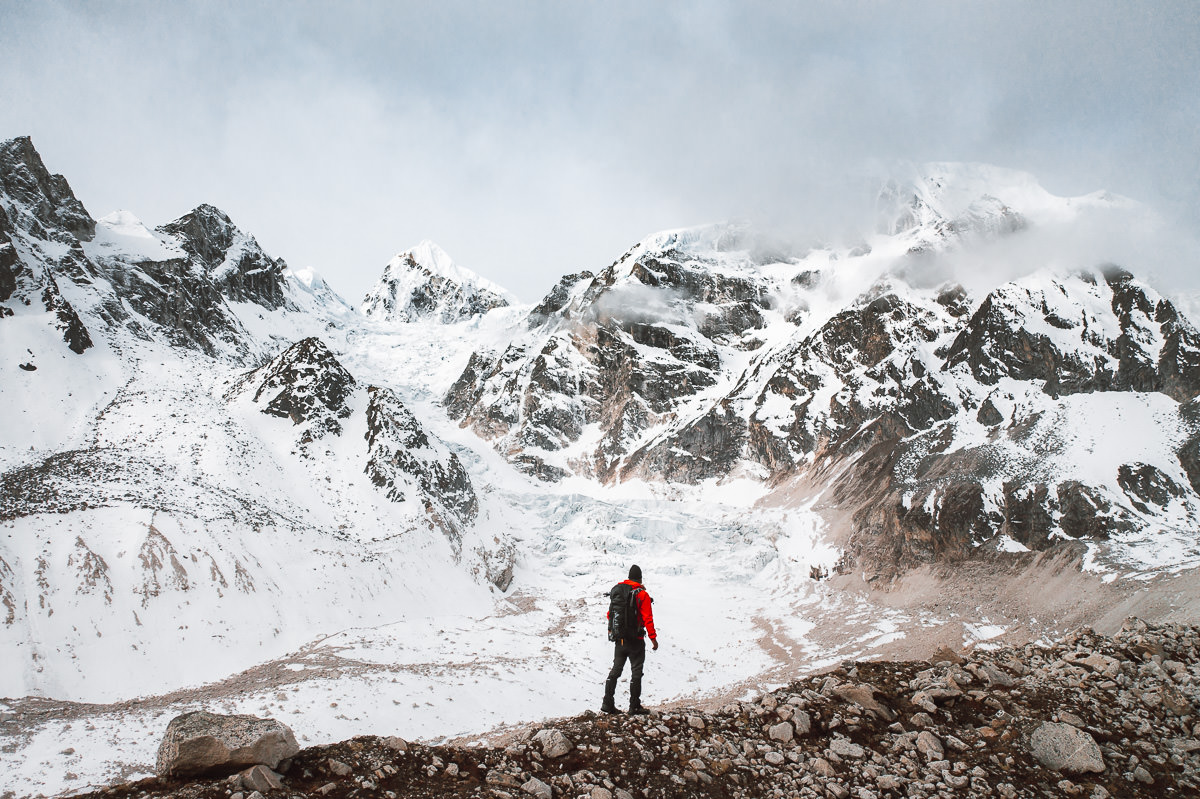
The Manaslu Circuit Trek is an off-the-beaten-path trail in the Himalayas of Nepal. The route leads you up and around the base of Mount Manaslu as you stay each night in different Tibetan villages along the way. The scenery is incredible, especially the last few days of the circuit as you reach heights of above 5000 meters while crossing the Larke Pass, also known as Larkya La Pass.
TRY THE 3 BEST TREKS IN NEPAL

Manaslu Circuit : My personal favorite 2-week trek through Tibetan villages and stunning scenery. Less crowded and more authentic.
Annapurna Circuit : The most beautiful & scenic 2-week trek in Nepal although can be crowded at times.
Everest Base Camp Trek : The most iconic 2-week route reaching the famous (EBC) Everest Base Camp at 5,300m.
I highly recommend this circuit for those who looking to avoid the crowds of Annapurna Circuit and the Everest Base Camp Trek. The highlight of this circuit is the authentic culture of the Tibetan villages along the way and takes you around Manaslu, the world’s eighth-highest mountain at 8,163 meters (26,781 ft).
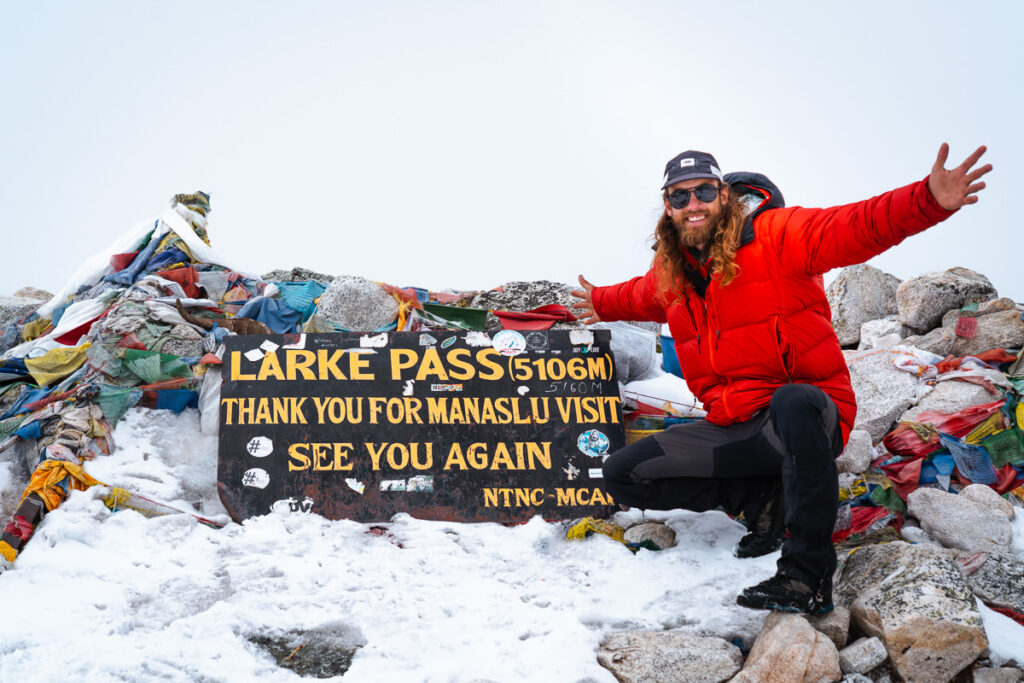
Before sharing my experience on the trek with One Globe Travel in the second section of this blog post, I will detail all of the information you have to know in this complete guide about the Manaslu Circuit Trek.
You can use my discount code ‘ JACKSON5 ‘ for 10% off the total price of your trek with One Globe Travel , which is a pretty handy saving of almost $200! To book the trek with One Globe Travel you can visit their site by CLICKING HERE or contact them via the details below:
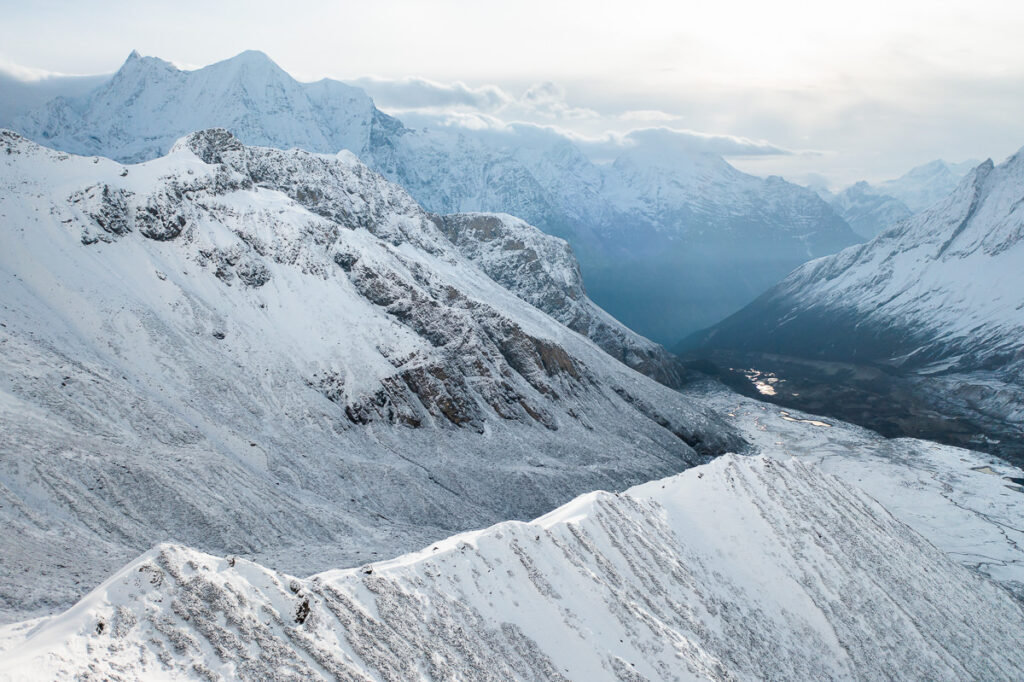
Table of Contents
THE MANASLU CIRCUIT TREK GUIDE
In this blog post, I will cover everything you need to know about the logistics of the Manaslu Circuit Trek and also share with you my experience on each day of the trek in the form of a short journal entry and my photos from that day. This will give you an idea of what to expect and a great insight into the scenery you will find on each day of the trek.
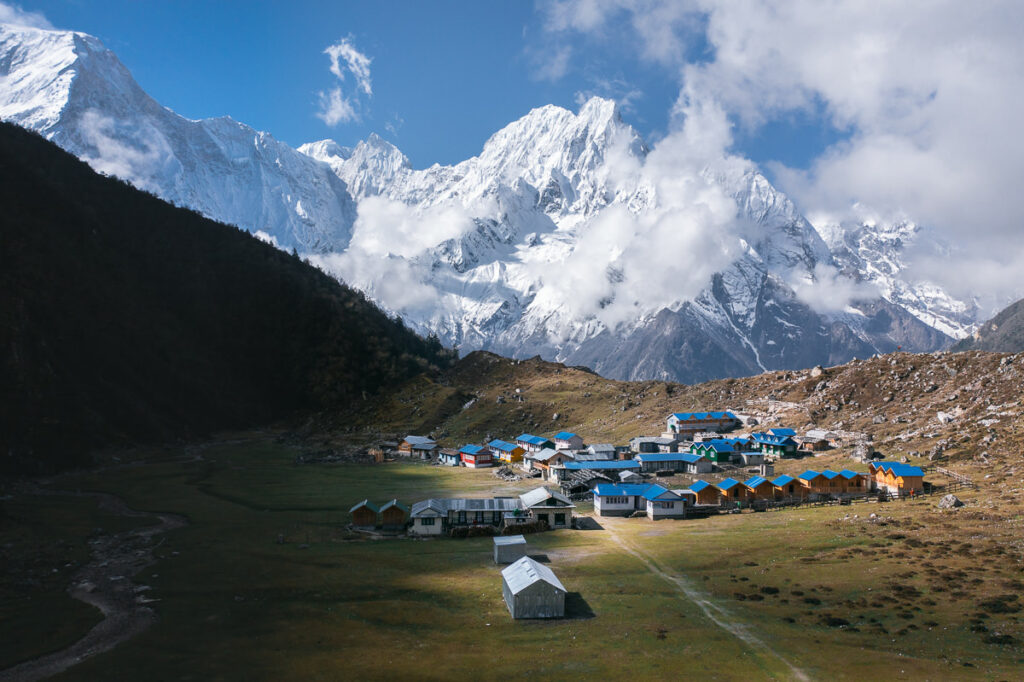
MANASLU CIRCUIT TREK DETAILS
- Distance : 180 km through-hike from Machhakola to Dharapani
- Days required : 12 days
- Total Incline : ( with undulation) – 11,000 m
- Total Decline :(with undulation) – 9,800 m
- The highest point on the trek : 5200m, which was just above the Larke Pass (Larkya La Pass) on day 11.
- Difficulty : This trek was much harder than Everest Base Camp Trek as it was 30% longer, much steeper, and less commercialized. Having said that, it was basic walking and there was nothing technical. Our longest day was 27km with 1600m of incline. If you can handle the altitude of 5,200m and can walk each day for 6-10 hours, you will be fine on this trek. The acclimatization profile was very good as you have 11 days to reach the highest point, so it eases you into it.
- Permits : Your tour operator will take care of these in each town and for the Manaslu Circuit Trek it isn’t possible to hike independently. You must hike with a guide and there must be at least two in your group, as well as the guide.
- Guide : A guide is required on this trek and the guide manages all of the logistics, distances, directions, and tea houses. The directions weren’t always very clear like on the Everest Base Camp trek and having the guide manage all of the logistics was great. I went with One Globe Travel and highly recommend them.
- Accommodation: Guest Houses, also known as Tea Houses, are available along the way where you will sleep in a comfortable bed and have access to showers (extra charge) and restaurant facilities. Very comfortable accommodation and great after a long day of hiking. Most of the villages were Tibetan, which gave us a great insight into their unique culture.
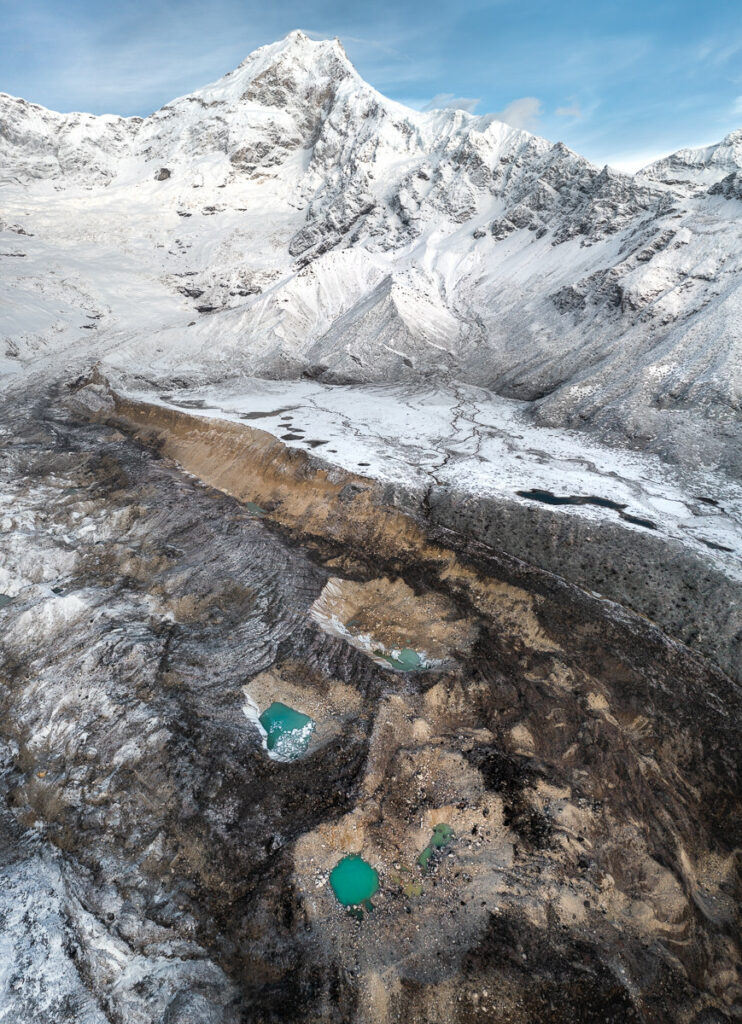
TOP 3 PLACES TO STAY IN KATHMANDU

- Ultimate Luxury: The Dwarika’s Hotel – Luxury, Spa-service, Pool
- Best Value : Aloft Kathmandu Thamel – Swimming Pool, Gym & Great Restuarant
- Budget Choice: Hotel Jampa is easily the top cheap hotel in Kathmandu
KEY POINTS ABOUT THE MANASLU CIRCUIT TREK
- This circuit is way less crowded than Everest Base Camp and the Annapurna Circuit. It is growing in popularity but it’s still a great time to trek this circuit before it hits the mainstream.
- The Manaslu Circuit trek is off-the-beaten-path and remote. However, there are teahouses in each village along the way so each night you get a great sleep in a bed with blankets, have access to showers, eat great meals in a restaurant, and can charge your electronics and cameras.
- The trailhead can be reached by car so there is no need to pay for expensive domestic flights.
- The first few days of the circuit run along the trail next to the river in a deep gorge called the Buri Gandaki with lots of suspension bridge crossings. The trek transitions to the snow for the last few days although you can trek with regular hiking boots while enjoying the massive snowy mountains on either side of the trail.
- The scenery is constantly changing and you will experience a subtropical jungle while at lower elevations before entering the Himalayan foothills. Finally, you will reach the Larkya La above 5,100 meters / 17,000 feet.
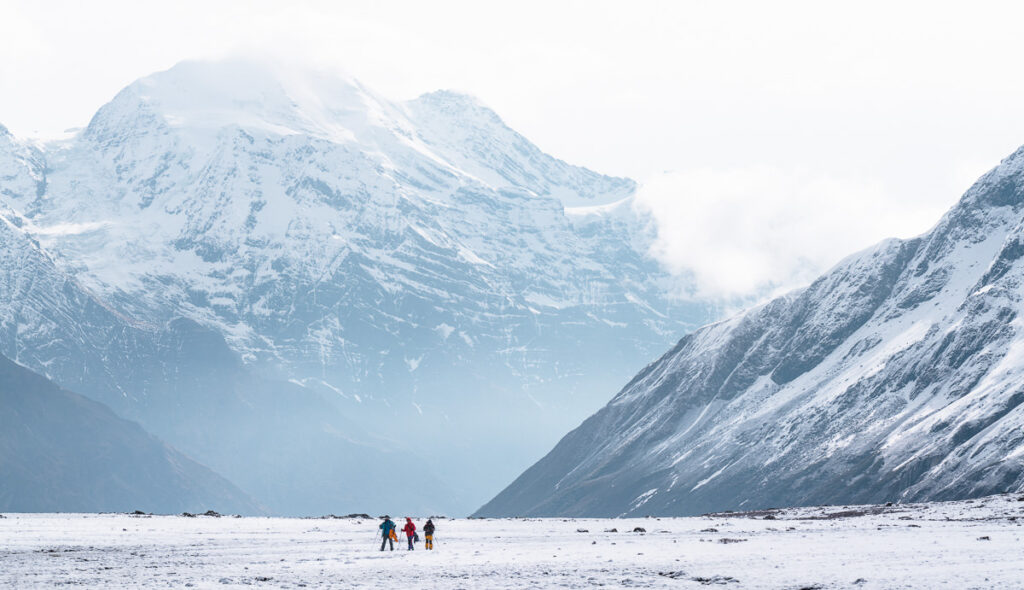
BOOKING A GUIDE FOR THE MANASLU CIRCUIT
The Manaslu Circuit Trek does require a guide. Everest Base Camp and Annapurna Circuit can be done independently but the rules on the Manaslu Circuit are stricter about having a guide. I did the trek with Samip from One Globe Travel , which is one of the top trekking companies when it comes to Manaslu Circuit. The owner, Nawang, is a Tibetan himself, which is the main culture you will experience along the circuit.
The trek costs around $1800 USD with One Globe Travel as of 2021 and includes all transfers, accommodation, meals, drinks permits, and even the hotel stay before and after the trek at a 4.5-star hotel with a rooftop pool. I honestly had a great time, the guide was great and I can wholeheartedly recommend One Globe Travel. They even helped me many weeks after the trip during the lockdown in Kathmandu.
Book now: One Globe Travel
Email: [email protected]
Phone Number: +977-01-4003071/72/73
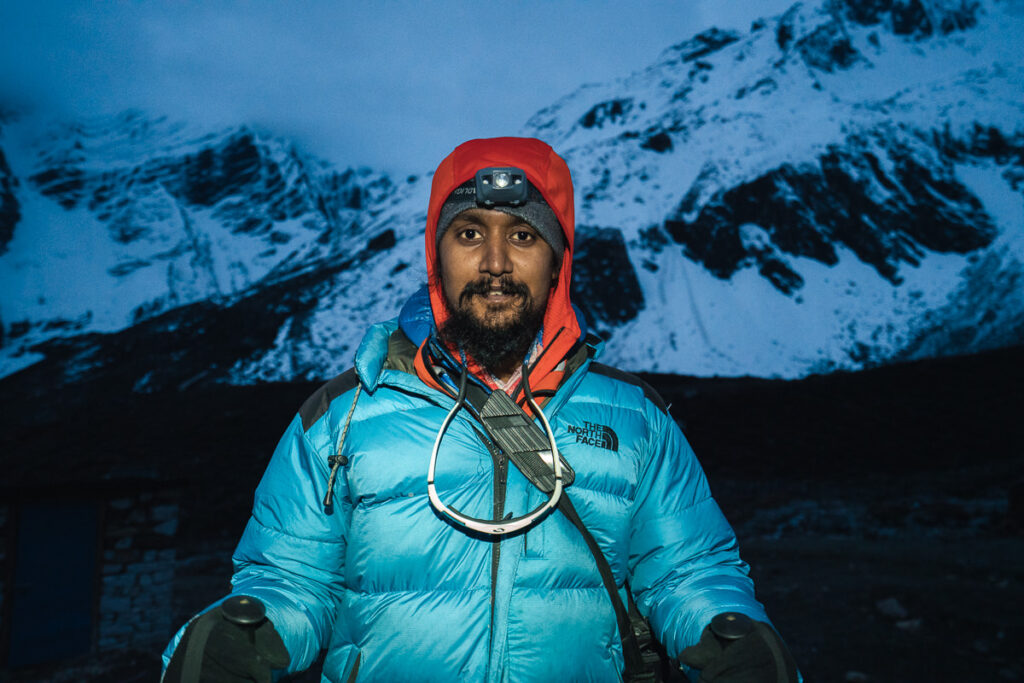
MANASLU CIRCUIT TREK PACKING LIST
I pack pretty light and managed to wash most of my clothes each afternoon/night for the first half of the trip. In the latter stages of the trip, it was pretty cold so we weren’t sweating as much and we wore our warm gear basically nonstop while at the teahouses and there was no real need for multiple outfits. This is just a guide and it worked quite well for me with no complaints from my set-up.
You won’t need a sleeping bag as there are blankets in each guesthouse and when it got cold I just wore my down jacket. This meant I didn’t have to carry a sleeping bag for 12 days, although our guide did.
- 1 pair of pants that maybe convert to shorts
- 1 pair of shorts
- 1 Warm or thicker pair of hiking pants
- 1 Long sleeve quick-dry shirt
- 1 Long-sleeve thermal shirt
- 2 Short-sleeve t-shirts
- 1 Thermal long underwear
- 4 pairs of quick-dry underwear
- 1 Lightweight down jacket
- 1 Heavy-duty summit down jacket
- 1 Neck Buff
- Hiking boots
- Microspikes
- 1 pair of warm summit socks
- 2 pairs of regular socks
- Trekking poles
- Water filter
All of this should fit into a backpack no bigger than 50L and be less than 15kg. I actually took a 40L camera bag, which you can see in the photos so I went super light. My camera gear included a DJI Mavic Pro 2 drone, 100-400mm, Mirrorless body, 16-35mm lens, 24-105mm lens, GoPro Max, Sony RX100, and a tripod. Without all of that, a 30L backpacking bag would have been enough.
Having said that, our guide and one of the girls on the trek had an 80L pack. I would say a 60L pack would be just about right for this trek and you would have lots of space assuming you wouldn’t need to fill it up.
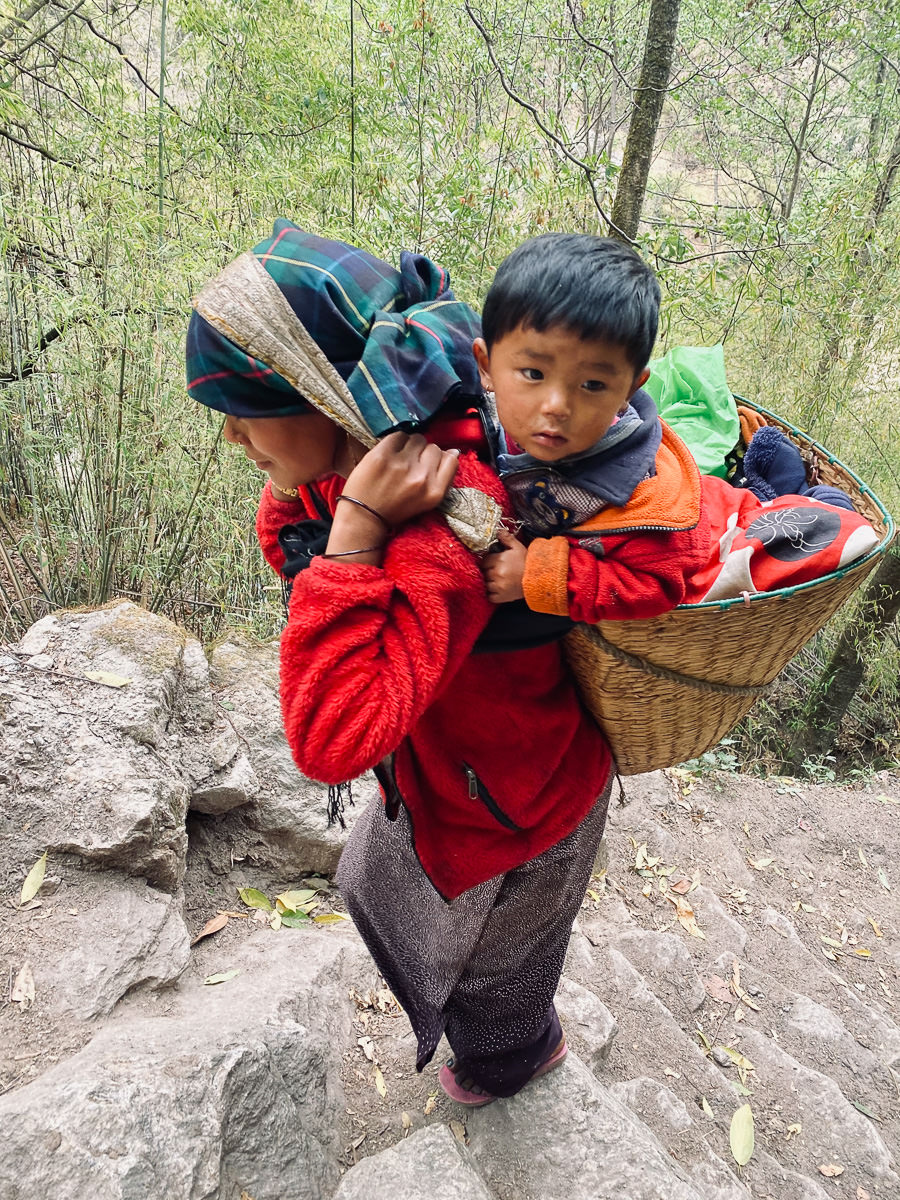
TREKKING THE MANASLU CIRCUIT: WIFI/ELECTRICITY AVAILABILITY
Wifi: Costs anywhere from $free to $4 to use wifi at the guesthouses. Buy an NTC Sim before you go. It worked early on in the trek with a weak signal and I was able to get emails and chat on Facebook messenger all the way up until about day seven and then we were off-grid.
Lots of the tea-houses say they have free wifi but then will blame the weather that it isn’t working. If you really do need it, test the wifi before picking your tea-house. Overall we had some minimal connection about 40% of the time on the trek. Samaguan had decent wifi and we stayed there for two nights so caught up with all of the news and action online.
Electricity: You will have to pay anywhere from $free at low elevations to $5 to charge your power banks, cameras, and phones. The key is to get a fat power bank. Pay to charge that then charge everything from your power bank. My power bank lets me charge my phone and four camera batteries before it would be done.
Most of the places we stayed let us charge our gear for free but when it is busy they usually charge as they run off gas or solar in many of the tea houses.
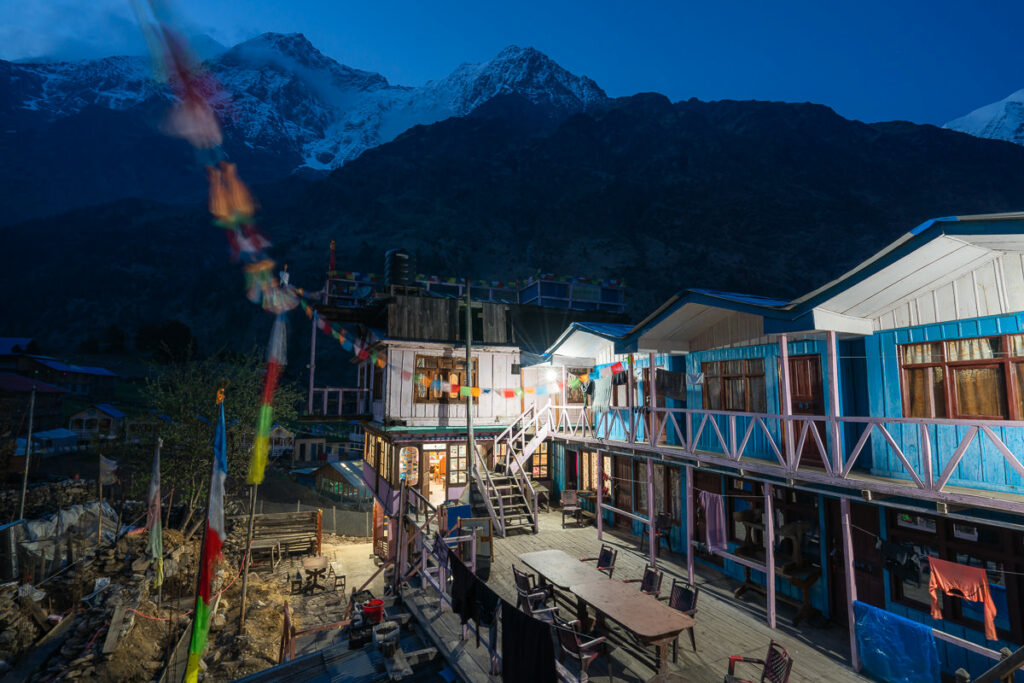
MANASLU CIRCUIT ITINERARY
There are many ways to alter the route on the Manaslu Circuit just as there are lots of different options for day trips on your acclimatization days. However, for the sake of giving you a rough idea of what your itinerary and acclimatization profile will look like this is a proposed itinerary and what my trek entailed but depending on the weather, your guide, and your preference it can be altered.
- Day 1, Machhakholagaon (862m) to Jagat (1,330m) – Distance: 26km, Incline 1512m
Day 2, Jagat (1,330m) to Deng (1880m) – Distance: 21km, Incline 1636m
Day 3, Deng (1880m) to Prok (2275) – Distance: 14km, 1082m
Day 4, Acclimatisation day: Prok day-trip to Kal Tal Lake (4100m) – Distance: 13km, Incline 1600m
Day 5, Prok (2275m) to Namrung (2661m), Distance: 10km, Incline 660m
Day 6, Namrung (2661m) to Lho (3200m), Distance: 11km, Incline 900m
Day 7, Lho (3200m) to Samagaon (3500m), Distance 8km, Incline 600m
Day 8, Acclimatisation day: Day trip to Pungen Gumba (4200m), Distance 17km, Incline: 800m
Day 9 , Samagaon (3514m) to Samdo (3862m), Distance: 9km, Incline 600m
Day 10, Samdo (3862m) to Dharma Shala (4466m), Distance 7km, Incline 700m
- Day 11, Dharma Shala (4466m) to Bhimtang (3709m) via Larke Pass 5134m, Distance: 18km, Incline 800m
Day 12, Bhimtang (3709m) to Dharapani (1860m), Distance: 25km, Incline 350m
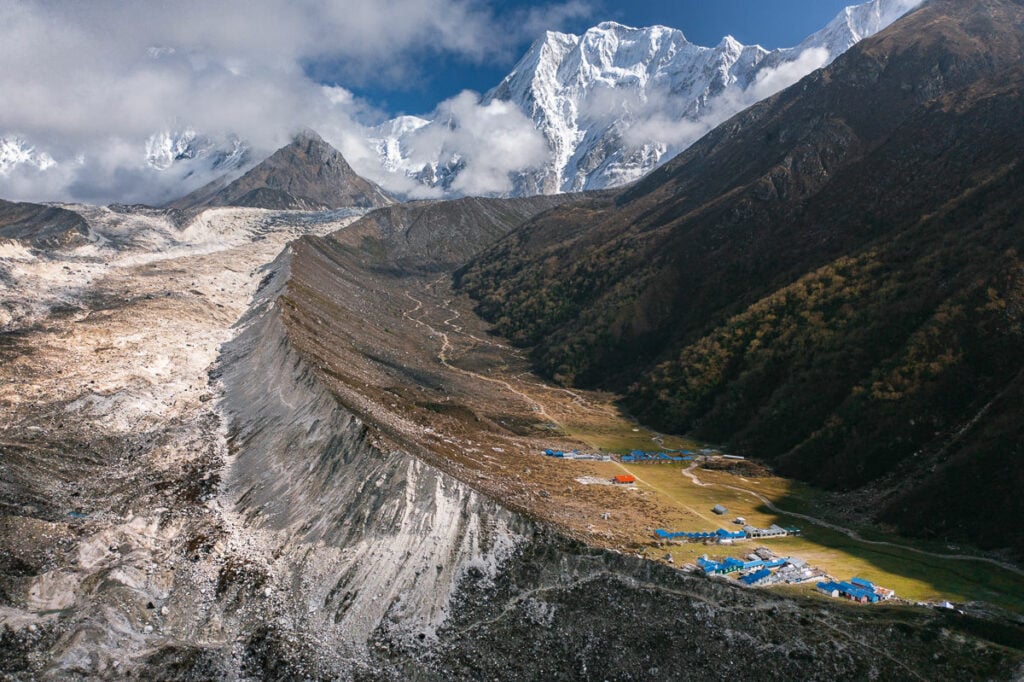
MY MANASLU TREK VIDEO
I filmed from start to finish to give you an insight into how the trek looks and what to expect. I hope you enjoy the video.
MY EXPERIENCE ON THE MANASLU CIRCUIT TREK
For each day of the trek, I will share the details of the route for that day, a few highlights of mine personally that I wrote each night while trekking, and some of my favorite photos from that section of the route.
Day 1 , Machhakholagaon (862m) to Jagat (1,330m) – Distance: 26km, Incline 1512m
The first day of the trek begins in the small town of Machhakholagaon . You will quickly find your place alongside the Budhi Gandaki River, which follows the gorge. The trail is a dusty road blasted into the cliffside for the most part although there are a few narrow sections including a number of river crossings (no wet feet) and suspension bridges. Expect to be exposed to the sun with little tree cover and be greeted by some steep staircases that will be a shock to the legs on the first day of trekking.
Day 1 Highlights:
- Setting off out of the town in golden light. Felt lucky to be here and excited for what was to come. With little idea of the landscapes in store, it was a truly adventurous atmosphere surrounding our group.
- Following the raging river, all day provided some stunning scenes. Around each turn and beyond each set of stairs we found a beautiful view. Mountains high our necks hurt towered above us on either side, with the river winding its way through like a serpent.
- On a very hot day, the Coca-Cola at our lunch break really hit the spot. Temperatures stung the skin as we battled through 25km and 1500m of incline underneath a piercing sun.
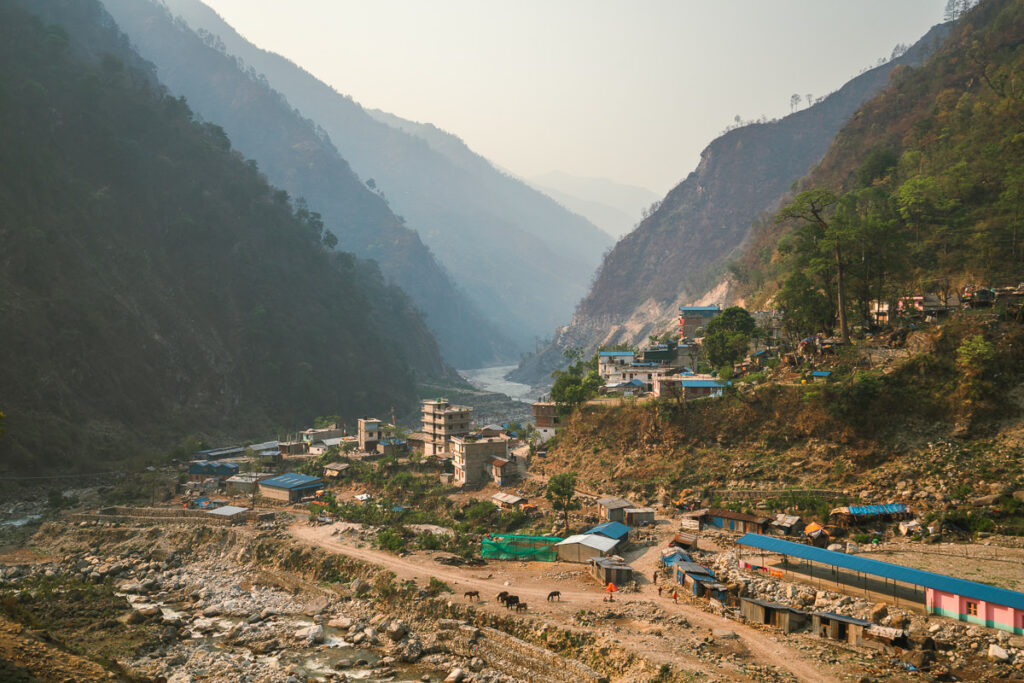
We woke a little bit sore and tired as our bodies adjusted to life on the trekking route. From Jagat, the trail wound through sub-tropical forests, alongside small rivers and quiet villages where we often stopped for a cup of tea.
The valley opens up in the early stages of the trail, which reaches Ghatta Khola river. One of the interesting parts about the route today is the very long suspension bridge in Philim, which is a large Gurung village. Later in the day, the route passes through a wild gorge as you criss-cross the river on suspension bridges before passing through the bamboo forests to the Deng Khola river. After crossing the river, you’ll reach the tiny village of Deng.
Day 2 Highlights:
- The layers of mountains were sometimes five or six deep as I began to wonder how we could be so high, yet so far below these peaks.
- Reaching camp today just before sunset was a great feeling. Back-to-back days of 20Km+ day with 1500m of climb means I surely deserved a Gorkha beer!
- The suspension bridges are always fun and today we crossed a couple of very high passes. There’s always an element of risk and excitement with these suspension bridges as they’re tattered with holes and battered by rockfall.
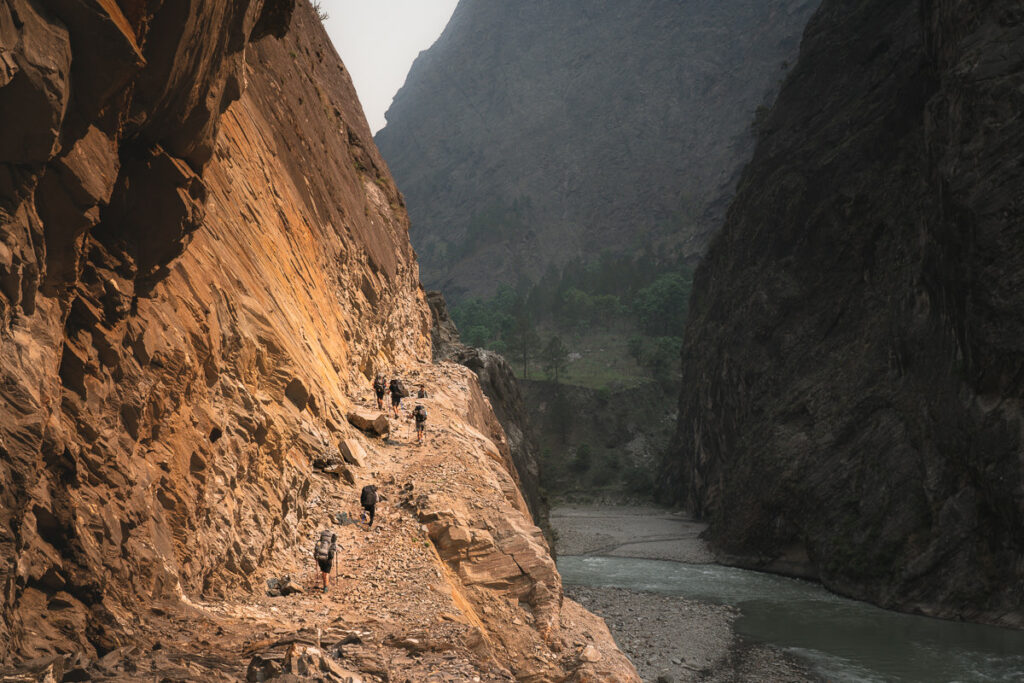
After breakfast in Deng, the trail takes you to one of the most important and culturally significant sections of the trek. Firstly, you will cross the Budhi Gandaki river and make the climb up to the bridge, where you’ll ascend further to join a trail from Bhi. The trail then leads you through the lush forests, alpine vegetation, and small villages. This is the first time the major peaks will start to appear in the distance.
Today is a shorter day and after a final ascent through the forest, you will reach Prok, a Tibetan village situated on a very scenic plateau beneath towering peaks. Green and yellow farming fields create a patchwork display of colors in this traditional town. It’s time to settle in because on this itinerary, we stay in Prok for two nights.
Day 3 Highlights:
- Sitting inside a tiny tea house, precariously perched on a cliff-side when a storm hits. As the rain hits the tin roof and the wind blows wildly all I can think about is how isolated people in this region are and how inhospitable the weather can be. That gets more and more apparent the higher we climb.
- A few stunning suspension bridges today with a lush green forest below contrast against the cool hues of the glacial river. Nepal is truly beautiful.
- We reached our guest house for the night in Prok, which is a very small village. I sat in the kitchen loft with the 81-year-old grandmother and the wife for Tibetan tea as we watched the Daal baht process. The kitchen and entire house were traditional Tibetan style. The grandmother spun her prayer wheels and through our guide’s translation told us she feels Tibetan, not Nepali. Having two of the guys on the trek translate gave us unique insight into the experiences and life of a Tibetan from the pre-Chinese occupation era.
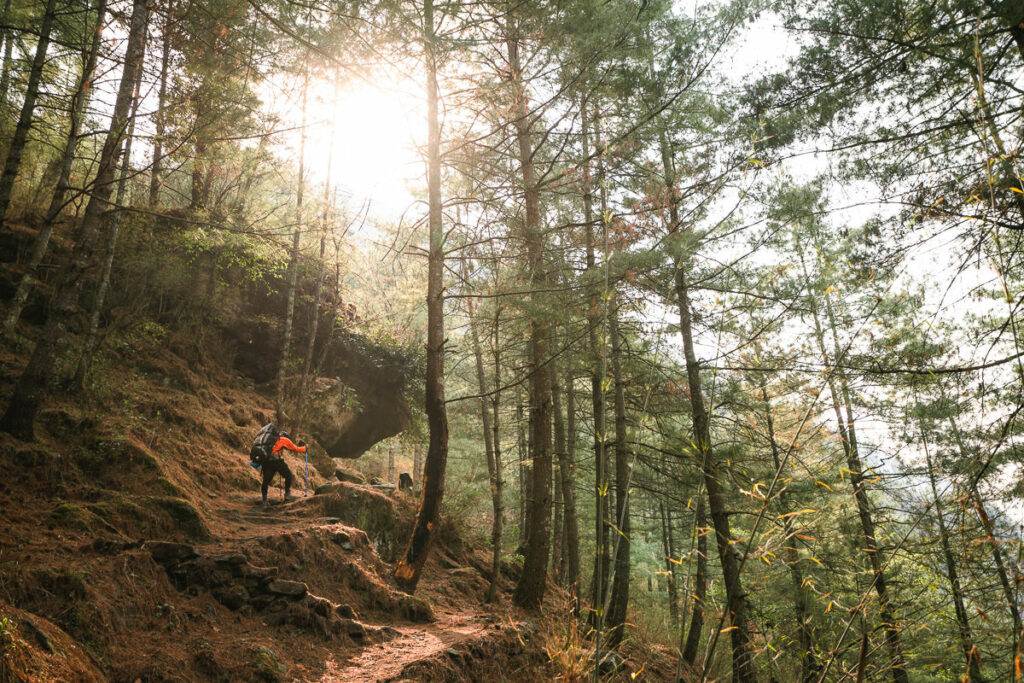
Today was a pretty heavy day with a very steep climb up to Kal Tal lake. The route is basically straight up and winds along switchbacks through the forest. Along the way, we passed a beautiful monastery and several meditation huts and accommodations scattered throughout.
The total climb was more than 1500m over less than seven kilometers so it is very steep and coming down gave the legs a huge workout. Today capped off over 6000m of an incline in just four days so it was a pretty aggressive start to the trek.
On a sunny day, this alpine lake is spectacular. Crystal clear water and towering, snowy mountain peaks provide an epic backdrop. We were a bit unlucky with the weather as it was grey and gloomy but still spectacular.
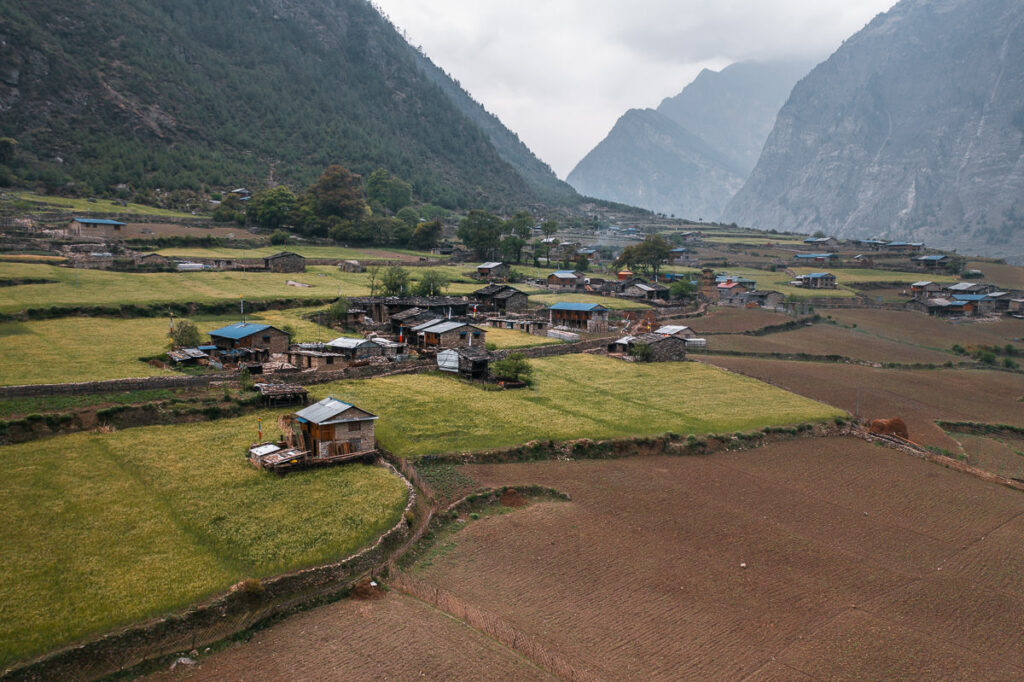
View this post on Instagram A post shared by Jackson Groves (@jackson.groves)
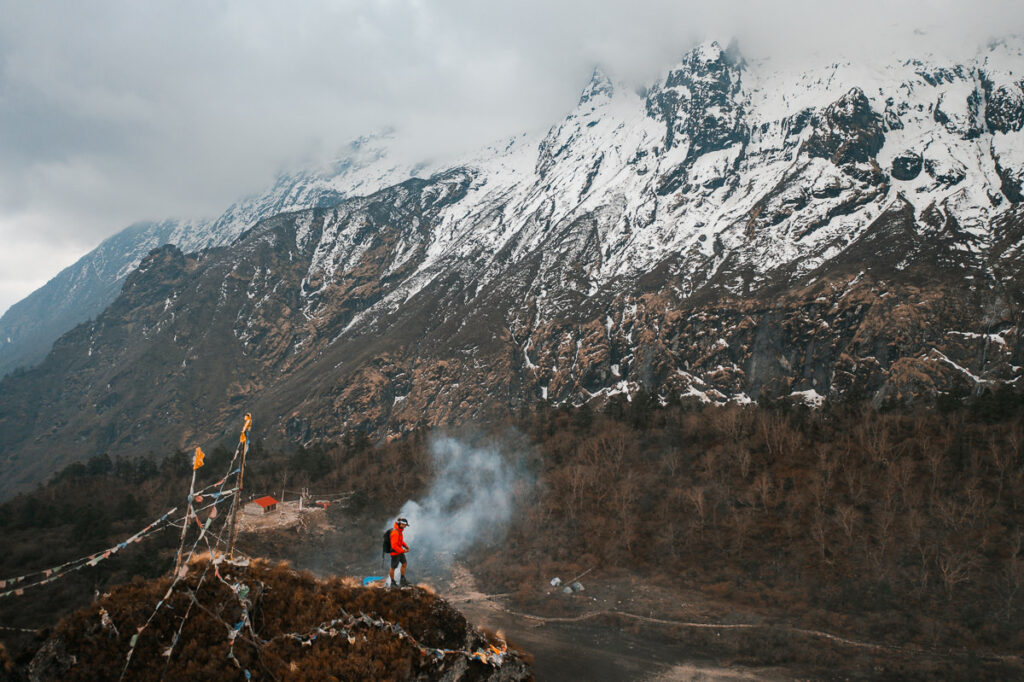
Finally, an easy day arrived and we all needed it badly. After 6000m of incline and 80km on the first four days of the trek in some pretty heavy sun, we were spent. Today seemed like a stroll in the park as we meandered our way to Namrung, taking just a few hours.
The path today is in the phase of switching out of the sub-tropical forest into the alpine forest so it had a mix of everything. At the entrance to each town, we can now find lots of ancient scripts displayed at the entry path.
Day 5 Highlights:
- A shorter day from Prok to Namrung was just what the doctor ordered so when we rolled into Namrung in the early afternoon, we all breathed a sigh of relief to have time to rest our bodies.
- A steaming hot shower for $2.50 on the fifth day of a trek is always money well spent. Clean, refreshed, and ready to push on.
- We bought a pack of cards for $1 at Namrung and had a few different games rolling throughout the night. It’s fun to enjoy the good vibes amongst this really chill group from Nepal.
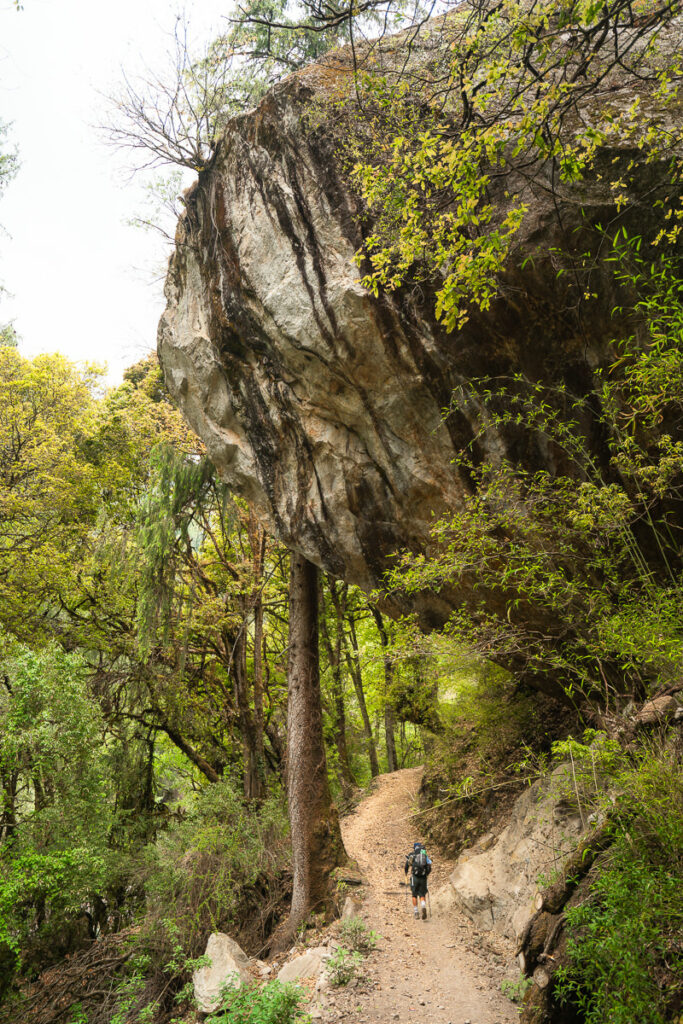
The trek to Lho leads us through wild sections of oak, fir, and rhododendron forests throughout the climb higher up into the valley. The air is beginning to thin for the first time so the pace is slightly slower today but with just 11km to cover, it was a touristic day with some nice cultural sites and stupas throughout the route.
Day 6 Highlights
- Larkye our Manaslu dog has officially joined us. Despite being asleep as we headed off from Namrung, he quickly caught up to us and has hardly left my side since.
- Lunchtime was at a small village with an epic view across the fields and up towards towering hills. Spicy noodles out in the sunshine had us feeling incredibly relaxed and on the recovery after the first four savage days of the trek.
- Sunset from Lho was very grey and cloudy but in the midst of blue hour, Manaslu appeared. It was the first time we’d all laid eyes on the 8000er and it was a pretty majestic moment.
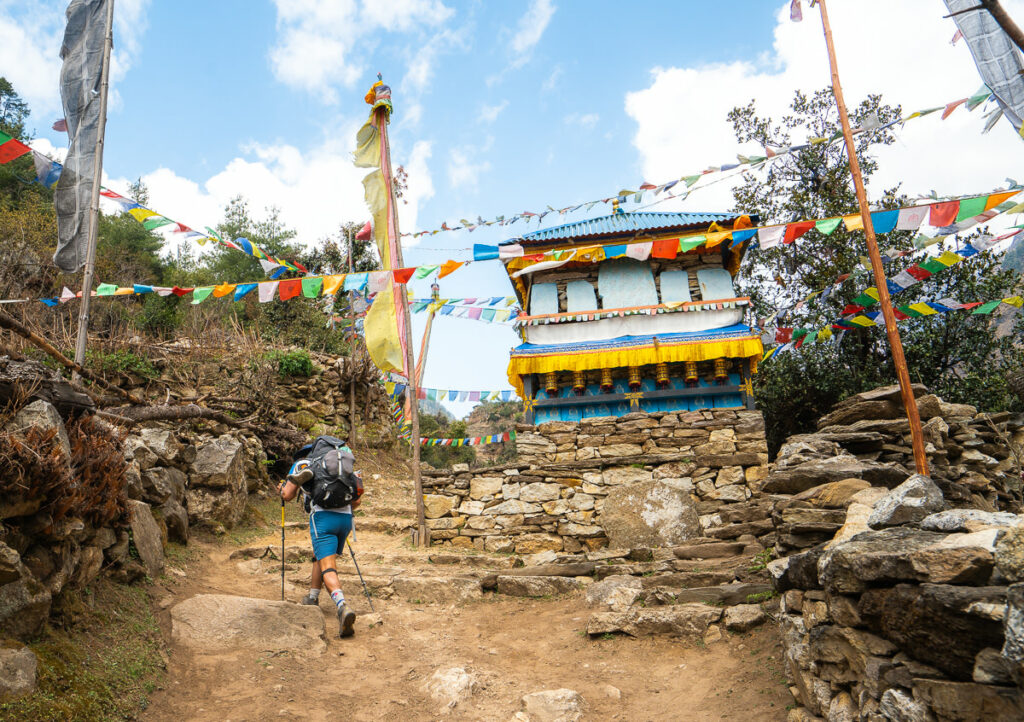
Today the climb continues up the valley and enters the high alpine pastures. Expect to see lots of Yaks grazing across the expansive hills and steep mountainside. One of the best suspension bridges of the trip with a huge mountain backdrop was the highlight of the day.
At our tea break, we had views of snow peaks in all directions and that’s where I shot most of the photos you can see below. From our lodge, we will have an incredible view directly up at Mount Manaslu that towers over the valley and we would stay here for two nights.
Day 7 Highlights
- A blue hour from the rooftop and an incredible sunrise with views of Manaslu was such a memorable start to the day. I felt like I was in Switzerland. We all had breakfast together on the rooftop and it might just be the most scenic fruit muesli I’ve ever had.
- A tea break on our way to Samaguan gave us the best views yet as the clouds were yet to engulf the surrounding peaks. I ripped out the 100-400mm and got some incredible shots of the snowy ridges as the clouds swept through.
- Our first WiFi of the trip at Samaguan was a great chance to catch up on the real world. We quickly realized nothing much had changed and were grateful to be out in the wilderness of the Himalayas.
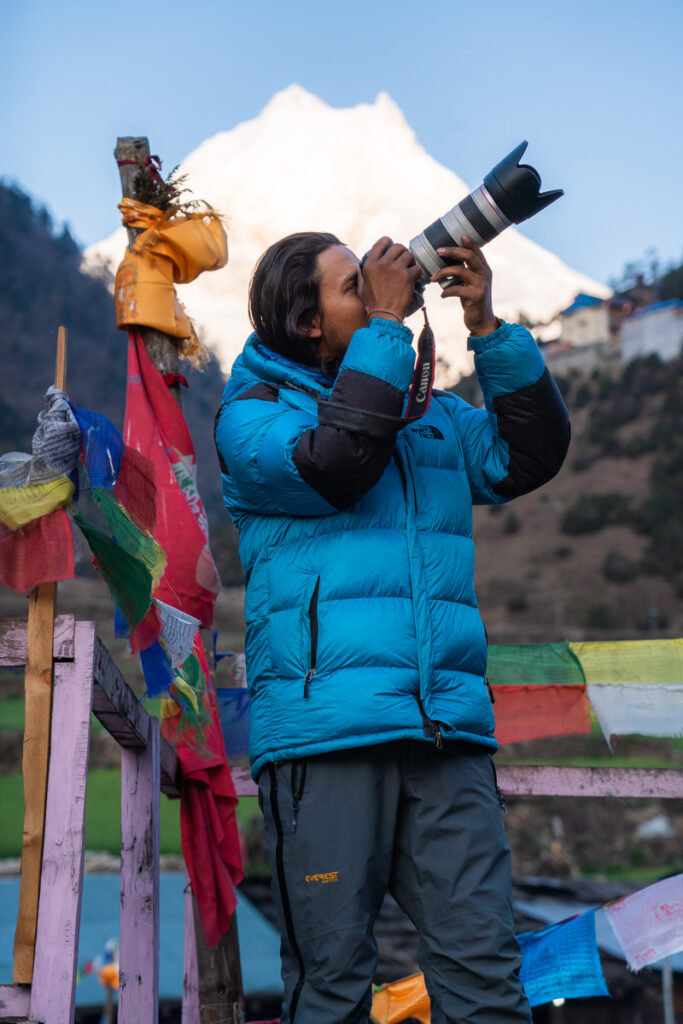
This was by far one of my favorite days of the trip aside from the Larke Pass day. Pungen Gumba is a monastery site at 4200 meters. It sits directly beneath Mount Manaslu at the top of a huge plateau in an ampitheater of mountains. I set off on my own at 4 am to make the 8-kilometer trek in the dark hoping to see some alpenglow or sunrise colors with a clear Mount Manaslu.
The weather gods shined on me and the effort up the rocky hill to the monastery provided me with the best views of the entire trip.
Day 8 Highlights
- After a rainy night before we committed to a sunrise mission. I left solo at 4 am to Puneng Gumba, a monastery built into the cliffs at 4,100. The others joined me a little later and our efforts were rewarded with clear views of Manaslu and one of the most stunning locations I’ve ever explored. One of the best mornings of my life, just me and the dog up at 4,100 meters taking it all in.
- Sitting in the sun at the monastery, the other three finally arrived and brought some tea. Sipping on my cup I was just incredibly grateful to be out here. The views were just jaw-dropping.
- Yaks, foxes, and marmots up in the snow at Pungen Gumba were quite a cool wildlife sighting and the latter two came unexpectedly.
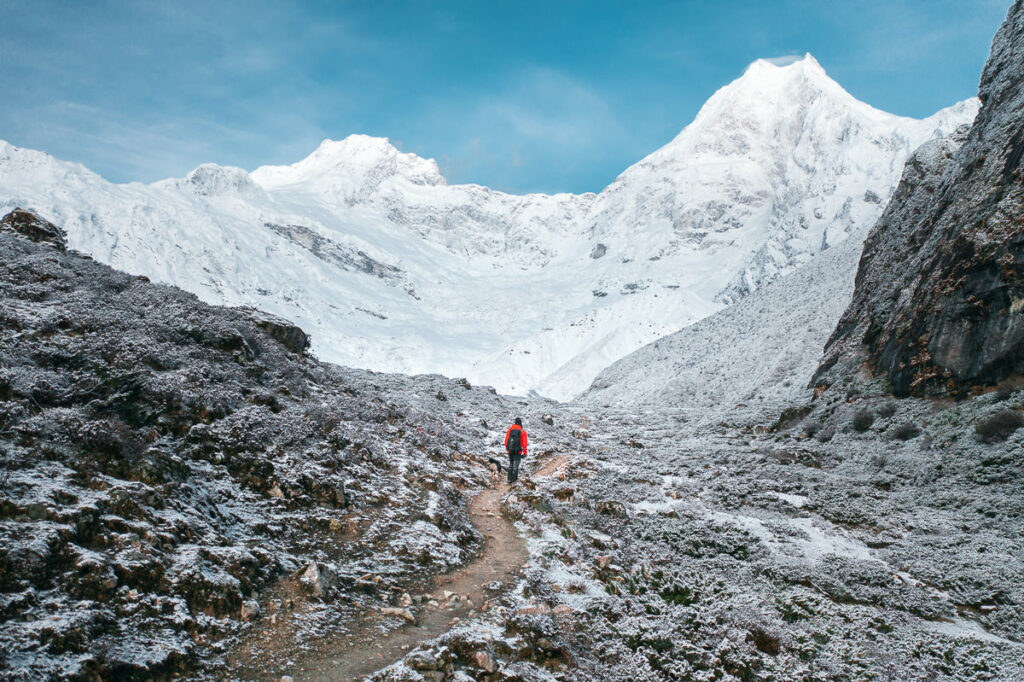
On day nine we began with a short visit to Birendra Lake before breakfast and then the trek heads up through the valley to the Tibetan village of Samdo. This is actually the highest Tibetan refugee camp in Nepal and is pretty remarkably perched on the cliffside.
Sunset at Samdo is truly a spectacle with peaks in all directions. Along the way, we will pass through Birch forests and we will see a few Marmots running to hide from us in their little holes. We will have the afternoon to relax and enjoy the views from our cute little village
Day 9 Highlights
- Our first rain was endured on the short trek to Samdo, a town at almost 4000m of elevation. Along the way, we passed hundreds of huge yaks who were more interested in grazing than us trekking through.
- Samdo was freezing but a warm fire at night in the tea house kept our spirits high. Cards, coffee, and incredible sunset sends us into day ten full of energy.
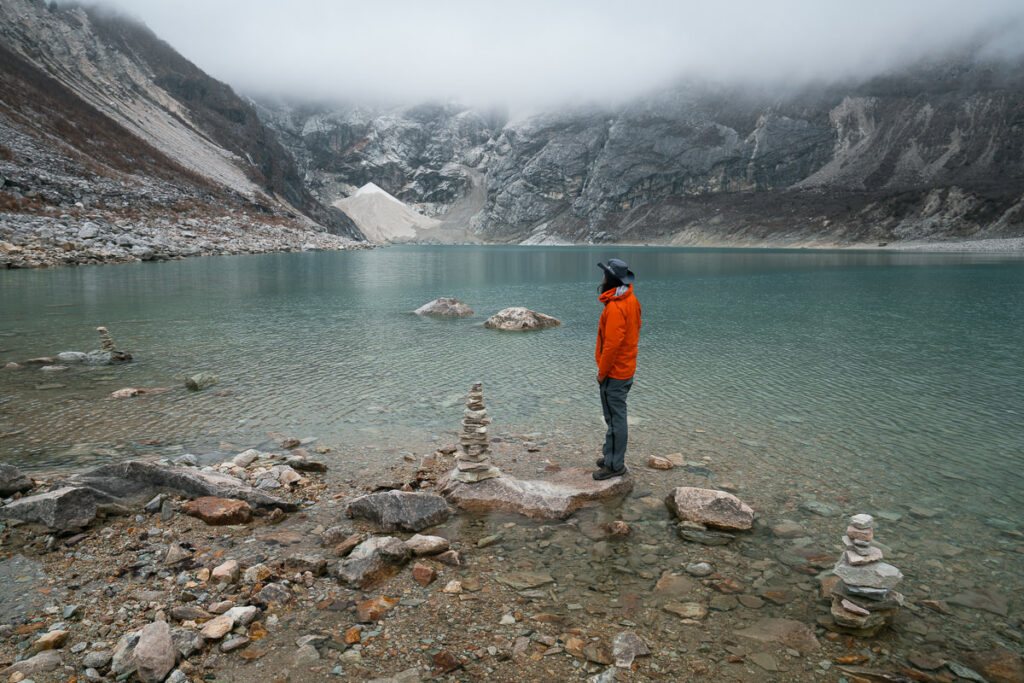
There’s just one day left until we cross Larke La tomorrow so today we ascend to the small base camp of Dharma Shala for the night. It’s bloody freezing here at almost 4500m and there’s no heater. It’s literally just a bunch of rooms perched up on the hill with one small kitchen. It’s a short walk to reach Dharama Shala taking just a few hours but you are at altitude, so you may begin to have a small headache if you are unlucky.
Day 10 Highlights
- I woke up and opened my door to the sight of fresh snow falling in Samdo. In the morning, the Tibetan refugee village was incredibly isolated and covered in a thick blanket of snow, which only exacerbated that feeling of being hidden in the mountains.
- At 4,460m, Dharma Shala is a freezing place to stay the night. With no fire or heater, we slept in all of our winter trekking gear. The hot bottle of water was the only thing adding any warmth to our bodies as we enjoyed our last sleep before attempting the Larke Pass.
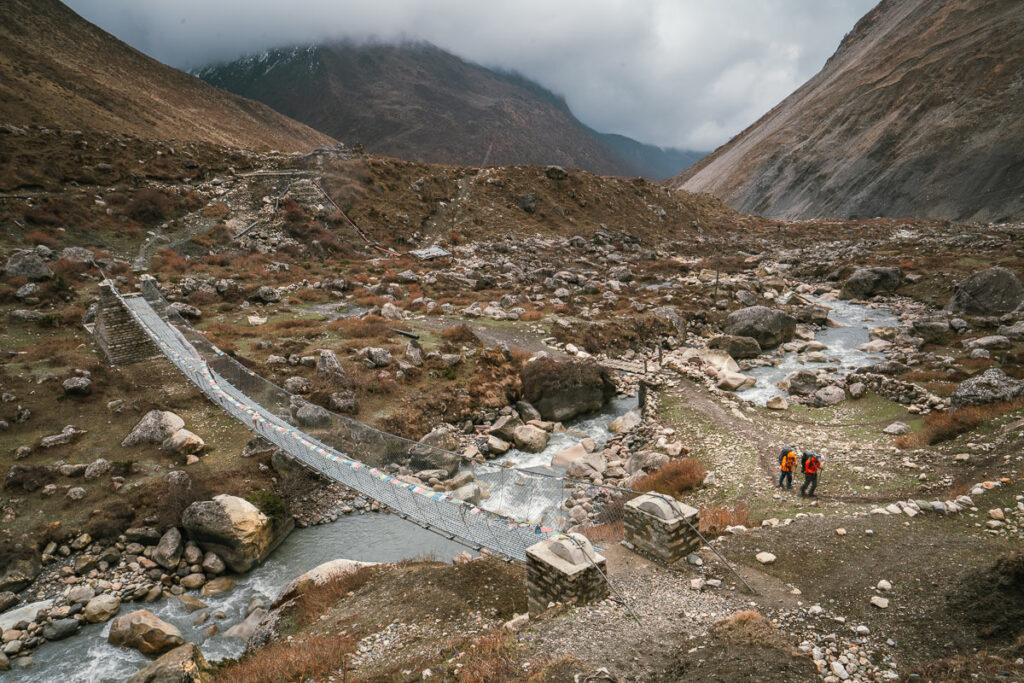
Day 11, Darmashala (4466m) to Bhimtang (3709m) via Larke Pass 5134m, Distance: 18km, Incline 800m
Today is the big day. We woke at 3:30 am and set off just after 4:30 am in time to catch the first moments of the blue hour and sunrise. It takes about three to four hours to reach Larke La at 5106 meters. Along the way, you have an amazing corridor with huge peaks on either side. This was one of my favorite sections of trail throughout the entire route.
At Larke Pass, it is time to have the prayer flags and take in the view and the achievement! The descent is quite steep and I even put on the micro-spikes for a portion of the downhill. The first village we reach is Bhimtang where we will stay for the night and enjoy a good rest.
Day 11 Highlights
- After a rainy and cloudy night, we were a little worried about our journey to Larke Pass would lack the incredible views it had promised. Upon waking up at 3:30 am, we could faintly make out the lines of the mountain ridges. We knew we had lucked out and were in for a day of clear weather.
- I walked the Larke Pass alone for the most part. I turned on some music as my head tilted from side to side trying to etch these incredible peaks and mountain views into my mind. I never wanted to leave nor forget this incredible corridor in the Himalayas of Nepal.
- Reaching Larke Pass at 5,106m was a milestone and something we had spent 11 days working towards. With just a slight headache, I was glad to reach the collection of prayer flags at the top and take it all in.
- The snowy descent down to Bhimthang was the type of adventure I crave. With microspikes on and a few slips, we enjoyed the high-tempo descent into town. We were thankful for a hot coffee and noodles as we huddled around the kitchen fire in Bhimthang. We had made it, safe and sound.

The final day of trekking is long and downhill. Your legs are tired from the day before but thankfully the incline is very rare and you basically just walk your way out of the alpine zone, into the forest, and then emerge to Dharapani beside the river. It was a long day with more than 25 kilometers to tick off but the walking was easy and going down in altitude is always a refreshing change. It was a good journey through the beautiful forests to reflect on the trek.
Day 12 Highlights
- Spicy noodle soup at mid-morning in a small hut with a lovely local serving us.
- A well-deserved beer (or two) at the Heaven Hotel in Dharapani to cap off an incredible journey.
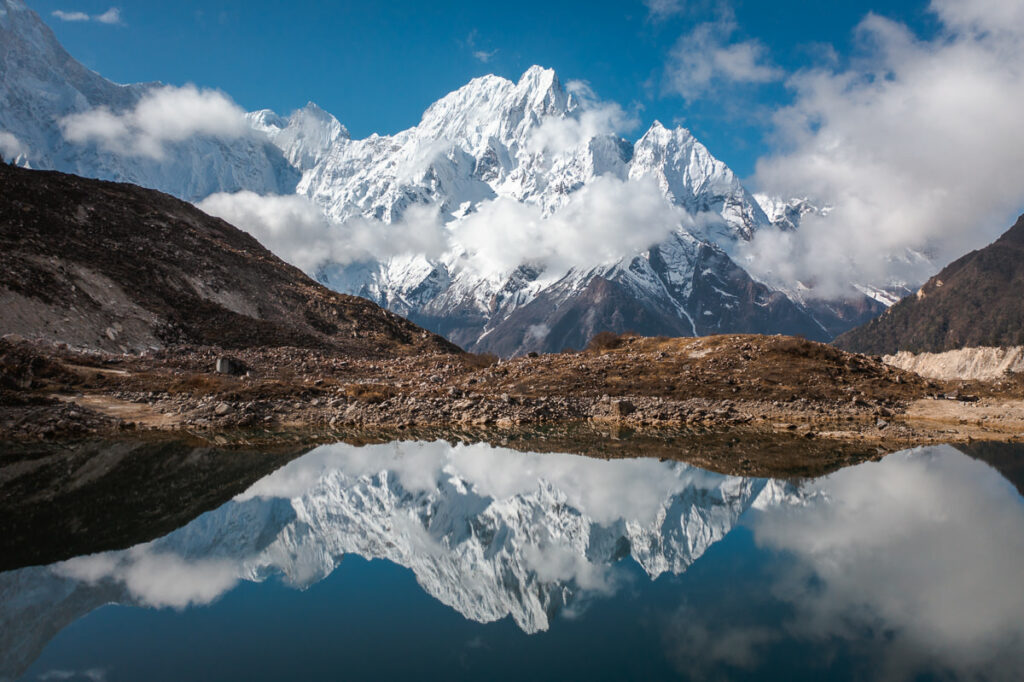
I hope you enjoyed this massive wrap-up of the Manaslu Circuit Trek. I loved photographing and filming the expedition and I truly loved the trail. I think it offers much more adventure than the other popular circuits in Nepal although let’s face it, any trek amidst the Himalayas is probably going to be epic. Do leave me a comment below if you have any questions or want to share any thoughts about your trek on the Manaslu Circuit. Happy hiking!
HAVE YOU READ MY OTHER NEPAL BLOGS?
I’ve been lucky enough to have many awesome adventures in Nepal, which you can check out below where I’ve listed some of my favorite blog poss from Nepal.
- The Most Iconic route: Everest Base Camp Trek
- The Most Scenic Route: Annapurna Circuit Trek
- My Favorite Trek in Nepal: Manaslu Circuit Trek
- An Easy Nepal Trek: Langtang Valley Trek
- A great beginner peak: Island Peak Climb (6,165m)
- My Favorite Climb in Nepal: Climbing Ama Dablam (6,812m)
- My first 8000er: Climbing Manaslu (8,163m)
- My toughest climb in Nepal: Climbing Makalu (8,463m)
- Where to stay: 16 Best Places to Stay in Kathmandu

Tuesday 11th of April 2023
Beautiful photographs! I am also wondering what time of year you went?
Sunday 29th of August 2021
Bonjour, merci pour ce généreux partage et vos très belles images. A quel période de l'année avez vous fait ce trek ? Je vous souhaite une belle poursuite à vos projets.
Saturday 15th of May 2021
Well done, Jackson! Those sunrises and sunsets in the mountains look incredible. Can't believe you got to visit Tibetan villages before me too! Next time eat the tsampa with your hands haha
Ken McKinney
What a great writeup! I have a couple of questions: 1) what time of year did you do this trek? 2) I've previously hiked Annapurna and EBC, but I am older now and less fit. Would it be possible to make the Manaslu Circuit less difficult by doing shorter daily stages, or does lack of teahouses make this impossible?
Wednesday 22nd of June 2022
@Ken McKinney, He did it in March 2020. See his remarks about lockdown. And yes, it is possible to make it more manageable, the number of lodges is about the same as the number of lodges on the Annapurna Circuit in the 1990's.
We offer excellent, independent, and inspiring service and advice for an amazing trip experience in Manaslu Circuit Trek. Feel easy to chat.
Manaslu Circuit Trek – A Complete Guide
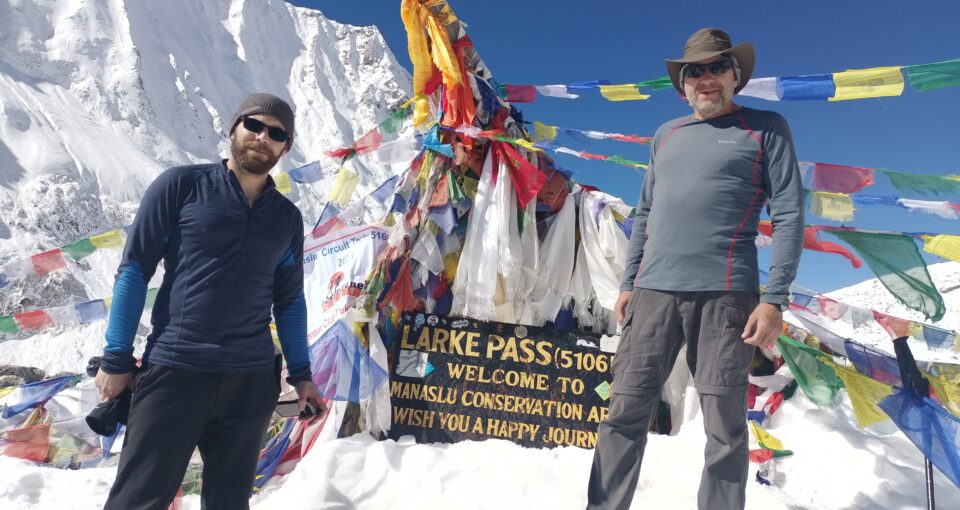
Manaslu Circuit Trek is the best for its unique culture, Buddhism, and teahouse trail which crosses Larkya La Pass 5106 m while simultaneously reaching the world’s 8th highest mountain – Mt. Manaslu (8163m) . The 12 Days Manaslu Circuit Trek is one of the most enthralling best seller trekking trails in Nepal just after EBC and ABC Trek .
Manaslu is a popular remote area located in the central west part of the Himalayas in Nepal. It reckons in the sub-tropical Himalayan foothill to dried Trans-Himalaya high meadow bordering Tibet, China. The elevation of its sub-tropical zone varies from 1000 meters to 2000 meters; whereas the sub-alpine zone ranges from 3000 meters to 4000 meters. Its zone above 4500 meters is called an arctic zone.
Mt Manaslu (8163m) is the main attraction of the Manaslu region which is the 8th highest mountain in the world. Besides Mt Manaslu (8163 m) , Ngadi Chuli (7871m), Himalchuli (7893m) , and Siringi Himal (7187m) are also major peaks located in this region, which are bordered on the east by Budhigandaki river and Ganesh Himal, on the west, the gorge of Marshyangdi and Annapurna Massif.
Table of Content [Collapse/Expand]
- Why to trek in Manaslu
- Detailed Itinerary
- Around Manaslu Trek at a Glance
- Around Manaslu Trek Trails and Routes
- Best Time to trek to Manaslu
- Accommodation in Around Manaslu Trek
- Around Manaslu Trek Difficulty
- Trekking Insurance
- Packing List for Manaslu Trek
- Manaslu Permit
- Communication Medium in Manaslu
- Visa Information
Manaslu Circuit Trek At a Glance
- A teahouse trek
- Best season to trek – Sept to Nov and March to May
- One of the less crowded trail
- The optimal shortest trail circuit is 178 km. However, it may vary on the exact route from where you start your trek.
- Highest point – Larkya La 5106m
- Close Resemblance of Tibetan Culture
- Explore the Gompas & Monastery
- Magnificent view of Mt Manaslu 8163m and its neighboring peaks
- Opened for trekking in 1991 but gain popularity since 2010 because of the teahouses built in the circuit.
- On-going road construction
Why trek in Manaslu Circuit
Manaslu Circuit Trek has all the elements and even more than other trekking regions of Nepal as it portrays the Buddhist culture , wildlife habitats, raging rivers with suspension bridges, greenery of the forest, and the remarkable necklace view of mountains. Manaslu Conservation Area which resides in Manaslu Region covers 1663 square kilometers. It was declared as a conservation area in 1998 since it is the home of many endangered animals, including red pandas, snow leopards, Himalayan tahr, Asian black bears, Himalayan musk deer, blue sheep, etc. More than 110 bird species, 35 mammals, and 3 reptiles live in this area. In addition, Himalayan honey bees whose scientific name is Apis Laboriosa, who is responsible to produce Mad Honey and best known for world’s largest honey bee is also found in the Manaslu region.
Nubri, Tsum, Bhutias, and Gurung ethnicities are the major inhabitants of Manaslu who have been living here for more than 700 years. Especially, Gurung is inhabited on the central hill of Manaslu, whereas, Nubri and Tsum live in Tsum Valley and are closer to the Tibet border. That is why their culture closely resembles Tibetan culture . A major number of people in this region follow Buddhism.
Before 1991, foreigners were not allowed to visit the Manaslu region. Now, it is a popular tea-house trekking route in Nepal. However, some of its areas still belong to a restricted or controlled zone. It literally means that foreigners cannot visit this place without special permits .
Detailed Itinerary of Manaslu Circuit Trek
Day 01 kathmandu to soti khola (720 m / 2,362 feet).
Manaslu Circuit Trek begins from Kathmandu offering scenic greenery views of the Hilly region of Nepal following the bank of Trishuli River until reaching Benighat, then moving toward Aarughat and finally Soti Khola. It takes an entire day to reach Soti Khola.
Day 02 Soti Khola to Machha Khola (900m / 2,920feet)
On the second day, you will find the true meaning of the trek as we start the trek from Soti Khola to Machha Khola. The journey will bless you with beautiful green forests, terrain rice fields, steep ridges, and a few suspension bridges.
Day 03 Machha Khola to Jagat (1370m / 4494feet)
After beginning the wonderful trek to Machha Khola, the trek then moves toward Jagat village leaving behind Tatopani and Dobhan villages. In between Machha Khola and Dobhan, there is a traditional Gurung village called Khorla Besi. On reaching Tatopani i.e hot water, you can take a warm bath and relax for a while. The trek continues following the bank of the Budhigandaki River and crosses a suspension bridge just to arrive at Dobhan. The Nepali meaning of Dobhan is the interflow of two rivers. Following the waves, you can see the river getting flattened at Yaru village where you need to cross a long cantilever suspension bridge to reach Jagat. Jagat – a Gurung village where you will see a checkpoint to verify the entry permits of the trekkers. From today, you are entering the restricted area.
Day 04 Jagat to Deng (1,804m / 5920 feet)
The very next day, the trek ascends to Salleri and descends to Sirdibas. Then the valley widens and reaches the Ghatte Khola River. Meanwhile, you will be blessed with several prayer flags and gompas. There are some stop points where you can get local alcohol to try. However, it’s all up to you whether you want to try it or not. On the trail, you will encounter beautiful rhododendron forests, hanging cliffs, and towering peaks which are the highlights of the trail.
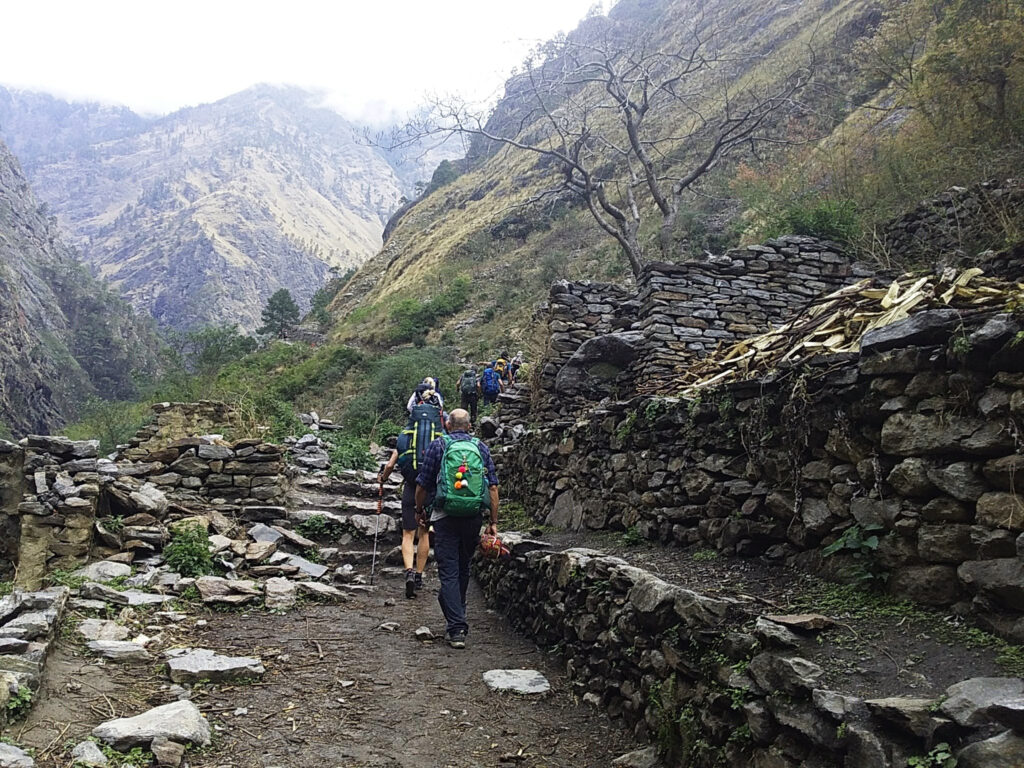
The trail continues walking upstream to a suspension bridge and reaches Philim – a Gurung village, and crosses the millet fields to the village of Ekle Bhatti. After a few minutes’ walk, the trail makes an entry to grassy slopes and crosses the Budhi Gandaki River. After that, trekking along the west bank for a while and crossing the east bank, you then return to the west side to follow the trail. Now, the trail widens and you pass through bamboo forests to Deng Khola and reach Deng village.
Day 05 Deng to Namrung (2,630m / 8628feet)
After having breakfast in Deng, you then further start your trek. This is one of the important days of the trek which you will be experiencing. First, cross a suspension bridge over the Budhi Gandaki River, and climb a ridge of Rana and Bihi Phedi. Now you will be passing through Lush forests and ethnic communities of the Manaslu region. Meanwhile, some beautiful peaks begin to appear in distance.
Today, you will be heading toward Prok which is a beautiful vintage point for the astounding view of snowcapped Siringi Mountain. Along the way, you will pass through several Gompas and crosses the Budhi Gandaki River. And the trail follows dense forests which reside inside the Manaslu Conservation Area, then you take a last steep climb to reach Namrung village.
Day 06 Namrung to Samagaon (3,530m / 11581 feet)
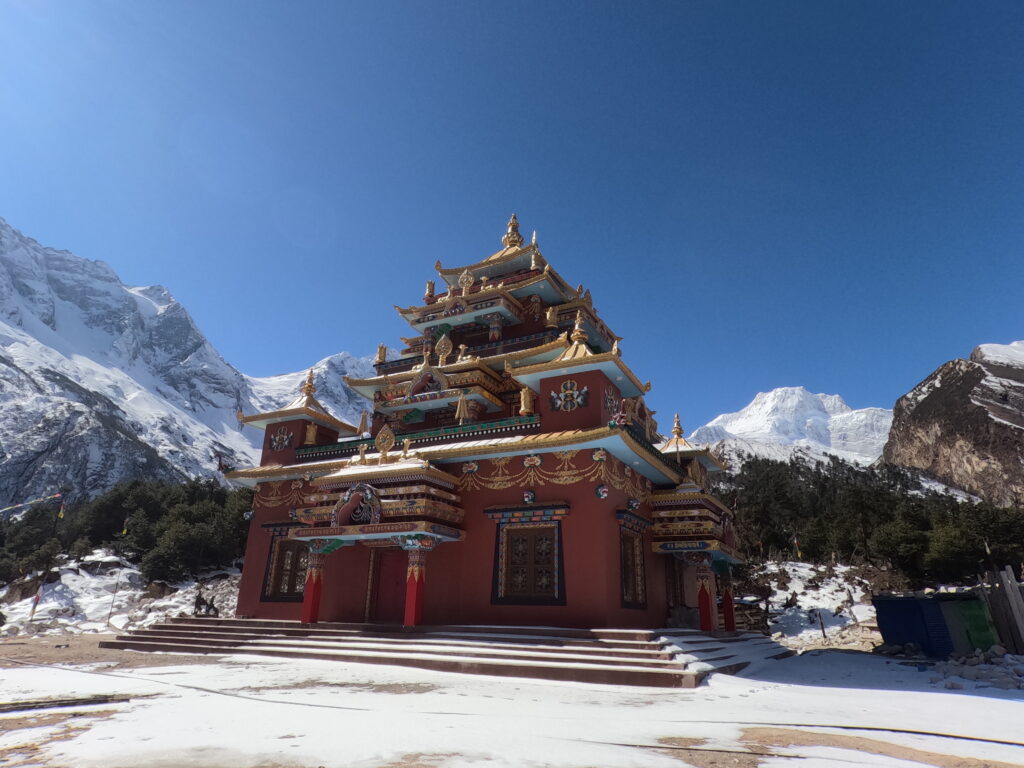
Today in the morning after having breakfast, you may like to walk around Namrung and get the best view of Siringi Himal, Ganesh Himal, and Himchuli. After that, you will pass through a few beautiful small villages like Lhi. Lhi is a beautiful small village having many stupas and barley terraces. In this area, you will get to witness the lifestyles of the Nubri people and explore the Tibetan lifestyle and cultures while passing through several mani walls, and lush terraces before entering Fir. You then encounter rhododendron and oak forest in between Lhi, Sho, and Shyala villages before reaching Samagaon. You will notice the amazing scenery of Mt Manaslu from Lho.
Day 07 Rest in Samagaon (Or take a hike)
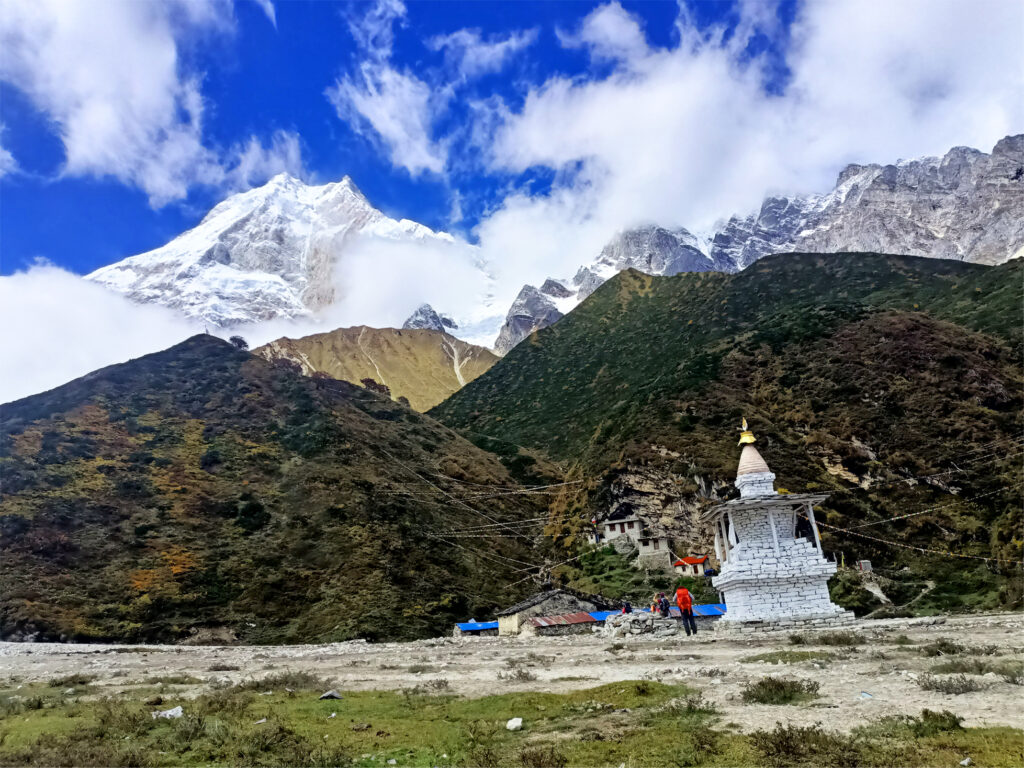
- Acclimatization day
- Have a refreshing breakfast and spend the day around Samagaon
- You can take a small hike on a little hill near Sama Village where you will find an old gompa called Pungyen Gompa while you may explore Sherpa culture and witness thousands of mani stones with a Buddhist text.
Day 08 Samagaon to Samdo (3,875m / 12713 feet)
- Descend to the Budhi Gandaki river and follow the bridge over the side stream
- Pass through several mani walls and get an amazing view of the mountain
- Get closer to the Tibetan border
- After reaching Samdo, explore nearby villages and hike to Samdo Peak. You can find the Larkya trail on the left side above the valley
Day 09 Samdo to Dharmasala (4,460m / 14632 feet)
- Climb to reach Dharmasala – an adventurous day
- Enjoy the scenic view of the Himalayan range while walking through a rugged trail.
Day 10 Dharmasala to Bhimtang (3590m / 11778 feet) via Larkya La (5160 m / 16929 feet)
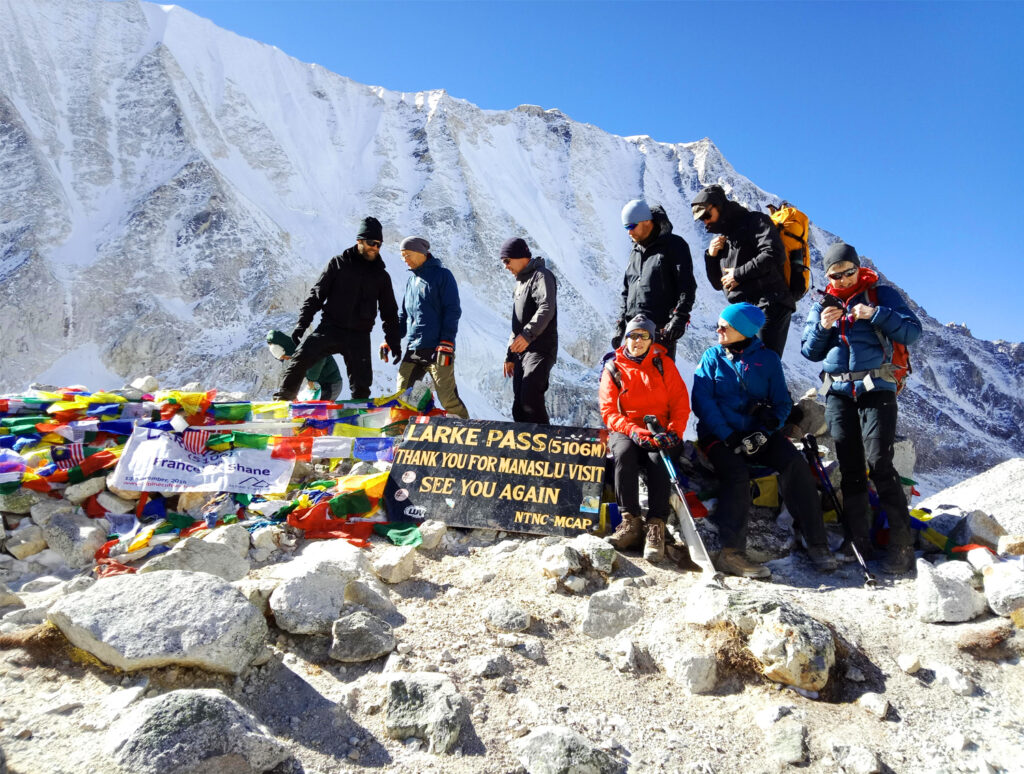
- Today is the special day of the trek – a challenging part of the trek
- Crosses Larkya La Pass steadily – the highest altitude of the trek before the afternoon
- Spend special time at the pass and get enjoyed the view of Himlung, Kang Guru, and Annapurna II
- And down toward Bimthang, it takes around 3 hours
Day 11 Bhimtang to Dharapani
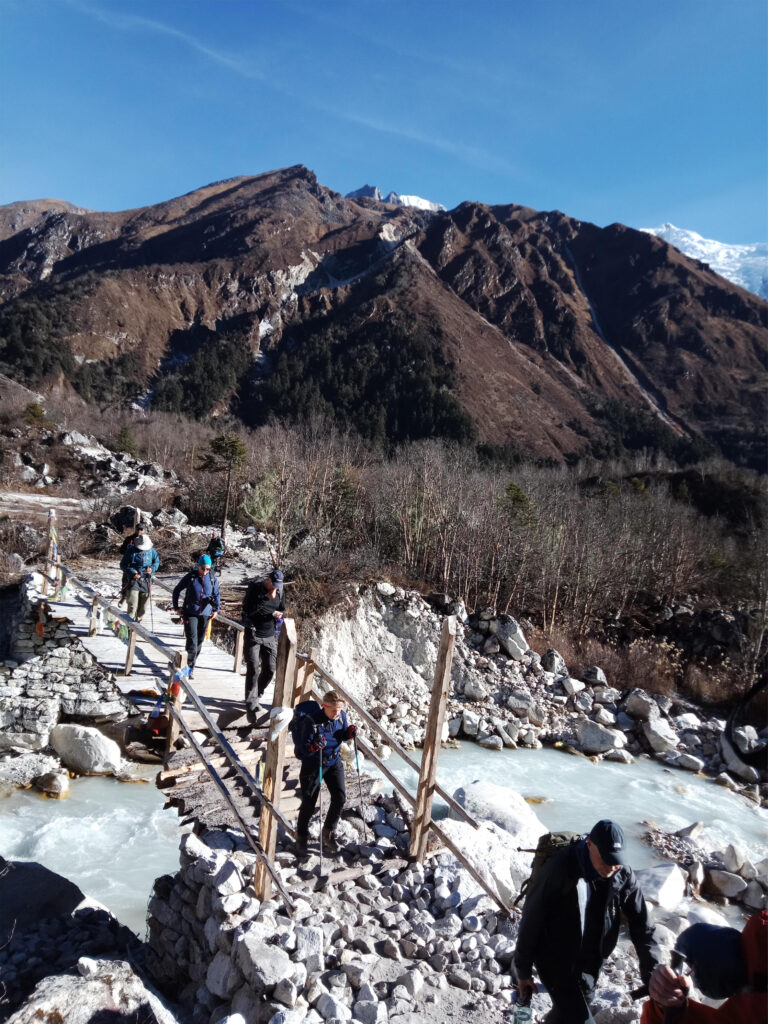
- Descend through pine and rhododendron forests, passing through several small settlements.
- Enjoy views of the Lamjung Himal and cross a river before reaching the village of Tilije.
- Overnight stay in Tilije.
- Continue descending through villages and terraced fields.
- Pass through the village of Thonje and cross a bridge to enter the Annapurna region.
- Reach Dharapani, where you’ll join the Annapurna Circuit trail.
- Overnight stay in Dharapani.
Day 12 Dharapani to Kathmandu
- Take a shared jeep or bus from Dharapani back to Kathmandu (approximately 7-8 hours).
- Arrive in Kathmandu and transfer to your hotel.
- Spend the evening relaxing and celebrating the completion of your trek.
Order a trek quote in your inbox
Manaslu circuit trek routes.
Trekking in Manaslu offers a remarkable experience for every adventurer as it passes through the 8th highest Mountain Manaslu (8163m). It combines the amazing mountain ranges with diverse flora and fauna along with rich cultural and archaeological sites. Around Manaslu Trek often called Manaslu Circuit Trek is one of the most popular treks which encircles Mt. Manaslu. During the trek, trekkers are gifted with a wide variety of stunning mountain sceneries as well as Tibetan origin culture.
Concerning Manaslu’s historical and cultural aspects, the government has issued a special permit for foreigners to visit this area. Foreigners must issue permits from the Department of Ministry. Mainly, Autumn and Spring are the best seasons and busiest times in Nepal. So booking the Manaslu trek earlier means securing a place on tour in Manaslu.
If you are interested in doing Manaslu Circuit Trek, check out the below itineraries.
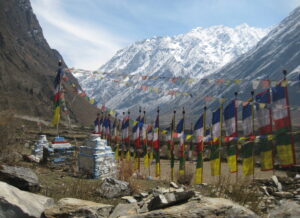
Tsum Valley Trek
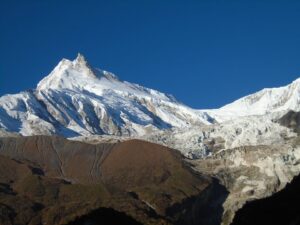
Manaslu Circuit with Tsum Valley Trek
Best time to trek manaslu circuit.
Apparently, there are two seasons for adventure in subtropical Nepal Himalayas – A dry season of winter begins around late August and ends at end of November, and a wet warmer season starts in early March and ends at end of May.
In fact, the most popular time to trek in Manaslu is Autumn (September to November) and Spring (March to May) . That is why trails become busy in these seasons. However, Manaslu is open for trekking. Even trekkers leave for trekking to Manaslu in winter (December to February) and summer (June to August). To be true, if you want to avoid crowds, winter and summer can also be the best time for you. Winter of Nepal is not like the winter of Canada and many European countries where the winter season is really a harsh one.
Nepal is diversified into 3 different geographical regions – Mountain, Hilly, and Plain regions. It causes variations in the temperature of Nepal in different places. But your trek begins in the Hilly region, goes through the Mountain region, and comes back to the Hilly region. Basically, the temperature in trekking zones tends to be average throughout the year, with an average high between 24 to 30 degrees Celsius and average lows of 12 to 1 degrees Celsius .
Click the article best time to trek in Nepal for the detail information regarding it.
Food and Accommodation in Manaslu Circuit Trek
While trekking the Manaslu Circuit, you will primarily be served Dal Bhat Tarkari, a typical Nepali meal, for lunch and dinner. The food options are somewhat limited compared to the more frequented Everest Region due to fewer teahouses and a smaller variety of available dishes. For breakfast, you can expect to find options such as Tibetan bread served with honey or jam, porridge with local honey, or eggs prepared to your liking (boiled, fried, or scrambled) accompanied by chapati or toast. Lunch often mirrors dinner with Dal Bhat being a common staple, but you may also find noodle soups like Thukpa, which are particularly comforting in cooler weather. Despite the limitations, the meals provided are nourishing and fitting for the trekking experience, ensuring you have the energy needed to explore this beautiful region. To get detailed information, click the article Manaslu Circuit Trek Food .
As you arrive in Kathmandu, you will be welcomed and picked up, then transferred to a Hotel if you order airport pick-up service. You stay in a hotel in Kathmandu. Several types of hotels can be found in Kathmandu. 5-star levels to homestay are available to stay overnight. However, we normally provide a 3-star level hotel with breakfast included . Each member will get a separate room. While you are trekking, you are provided tea house accommodation as there is no luxurious hotel or lodges in the Manaslu region. So the trek is also called a tea house trek . In fact, you can not find a deluxe hotel in the Nepal Himalayas.
Manaslu Circuit Trek Difficulty (Altitude Sickness, Acclimatization, and Training)
All trekking routes of Manaslu reach up to 5106 meters in altitude i.e Larkya La Pass. So it can cause altitude sickness to trekkers. While you are crossing Larkya La Pass, you may encounter altitude sickness. So, before you embark on your Manaslu trek, you should understand its symptoms and also should have knowledge of the process of acclimatization. And note that all the trekking in Manaslu is moderate but quite strenuous. Nevertheless, a trekker, aged between 58 – 65 years can also successfully complete this trek if s/he takes proper acclimatization during the trek. For detailed information, check out the Manaslu circuit trek difficulty .
Travel and Trekking Insurance for Manaslu Circuit Trek
Travel and Trekking insurance is mandatory for Manaslu Circuit Trek . Most of the trekking operators ask you to have proper travel and trekking insurance, although the risk of injury in Manaslu is relatively low. If something, unfortunately, goes wrong, you will need substantial insurance to cover your medical charges and any emergency evacuation costs.
It is important that your insurance must cover a maximum altitude of up to 6000 m. By the way, high altitude is not a standard policy on travel insurance ; it must be added separately. For more detail about travel insurance click here.
Manaslu Circuit Trek – Packing lists
The packing list for Manaslu Circuit Trek differs in different seasons, which includes some important items. Some of the items can be rented. But we suggest some personal things that you should bring with you to Nepal. Find a complete packing list for Manaslu Trek here .
Necessary Permit for Manaslu Circuit Trek
Foreigners need 3 different permits to trek. Moreover, it needs a special restricted permit, which requires at least 2 trekkers and a local guide to acquire.
For more detail about the Manaslu permit, go here .
Communication Medium in Manaslu Circuit Trek
Now Internet WiFi service is available in most of the teahouses. You also can get SAT phone to communicate with your friends and families paying a certain amount of charge. But local telephone hardly works in this region. Mobile networks (NTC and NCELL) do also provide coverage in this region.
Manaslu Trek Map
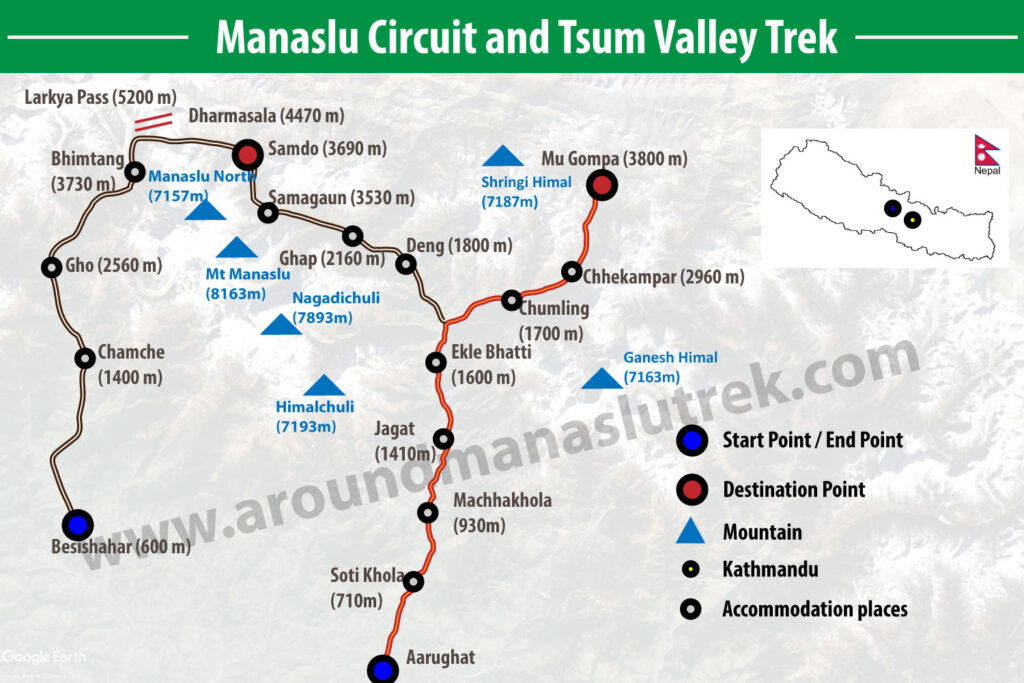
Tourist Visa Information for Manaslu Circuit Trek
All foreigners except Indian nationals require a visa to visit Nepal. Citizens of some countries like SAARC (South Asian Association for Regional Cooperation) countries and China do get free visas upon arrival in Nepal. However, the rest of the world’s people must issue visas to enter Nepal. You can easily get an arrival visa at Tribhuvan International Airport. You just require to have a passport with at least 6 months validity, a PP-size photo, and a visa fee, then you will get the visa in Nepal. As of now, the visa fee is $50 USD for 30 days which you can pay in cash.
There are a few countries like Ghana, Zimbabwe, Nigeria, Cameroon, Swaziland, Somalia, Liberia, Ethiopia, Iraq, Palestine, and Afghanistan; the citizen of these countries do not receive an on-arrival visa. They have to contact the embassy of Nepal or the nearest consulate.
FAQs of the Manaslu Circuit Trek
How much does manaslu circuit trek cost.
To get detailed information about it, look at our article titled Manaslu Circuit Trek cost .
Can I trek to Manaslu without a guide and porter?
No, you can’t trek to Manaslu without a guide but without a porter it is possible. As per the rule of the government of Nepal in order to visit a restricted area, one should have a special permit. So, you need to issue a special permit to trek to Manaslu, whereas a special permit can not be issued without a guide. Hence, foreigners can not visit Manaslu without a guide.
How far is Manaslu from Kathmandu?
The trekking point of Manaslu is nearly 126 km far from the capital Kathmandu. However, it is about 123 km of aerial distance from Kathmandu valley.
How do I reach Manaslu from Kathmandu?
You either choose a local bus or a private vehicle to reach Manaslu. There is no fly route or waterways to reach Manaslu. It takes around 8 hrs to get there by local or private vehicle.
Where is Manaslu located?
Manaslu is located northwest of Kathmandu bordered by the Annapurna region in the west and Langtang Ganesh Himal in the east.
Is Manaslu Circuit Trek better than Annapurna Circuit Trek?
Indeed, both are separate trails! Annapurna Circuit comes with a fantastic landscape and view of spectacular high mountains encircling Mt Annapurna while Manaslu Circuit offers Tibetan-like culture and tradition along with a beautiful view of Mt Manaslu, Ganesh Himal, Buddha Himal, and more. Annapurna Circuit Trek is not as same as it was before because of the road construction. However, it has shortened the trekking duration. Now, you can directly drive to Manang Village via Jeep but the road is too dangerous and muddy. On the other hand, Manaslu Circuit Trek Trail is intact though there is ongoing road construction. It is still considered to be an off-the-beaten-track as it is a less visited region in comparison to the other areas.
How is the climate in the Manaslu region?
Manaslu region covers both subtropical to tundra climates ranging from a hilly area to a high mountain area. So, 10 to 25 degree Celsius temperature could be expected throughout the year while it may fall to -22 degree Celsius and below in the upper parts of the Himalayas.
Is Manaslu Helicopter Tour possible like Everest Base Camp Helicopter Tour?
Of course, it is possible and open to fly to Manaslu by Helicopter. Manalsu Helicopter Tour is for those travelers who want to take the advantage of exploring most of the areas of the Manaslu region in a short amount of time. This tour is optimal for those who are physically unable to trek to Manaslu Circuit. It offers marvelous views of mountains from a close distance.
Is natural water drinkable on the Manaslu Circuit Trek?
Basically, the flowing water of the mountain area seems to be very clear. However, we don’t suggest you drink tap water or any water from natural streams. The only way to make it drinkable is by using a water purifier or boiling it.
What is the highest altitude of the Manaslu Circuit Trek?
Larkya La Pass is the highest point of this trek which is elevated at 5106 m above sea level.
Should I choose Tsum Valley or only go to Manaslu Circuit Trek?
Tsum Valley is a distinct valley because of its culture and traditions. The tradition and culture of Tsum valley is similar to the Tibet. In addition, polyandry system still exists in this valley. So, if you want to explore its culture tradition and the beauty of nature, then you can add Tsum valley in your bucket list if you are planning to trek Manaslu.
Is it possible to comeback to Kathmandu by Helicopter from Manaslu Base Camp?
Of course, it is possible to fly back to Kathmandu by Helicopter from the base camp of Manaslu. However, you need to inform us 2 days earlier to manage the helicopter or the itinerary plan should be made before the trip starts.
Is Larkya Pass difficult for beginner trekkers?
Larkya Pass is situated at an altitude of over 5106m above sea level, making it a delightful pass located in the Manaslu region. The pass is not too high, so trekking in the spring and autumn seasons may not be too challenging. However, if you wish to cross this pass in the winter season, it can be difficult because it may be covered with a full layer of snow at that time. The well-trained team of Around Manaslu Trek will ensure your trek is comfortable and successful while you are exploring the Manaslu region.
Which peak is the highest mountain in the Manalsu region?
Mt. Manaslu, standing at 8163m, is the highest peak in the Manaslu region and the 8th highest mountain in the world.
Does credit card work in Manaslu region?
There is no access to credit cards in the region because it is so rural, despite its proximity to the capital, Kathmandu. You will not find any ATMs or POS services in the Manaslu region. Therefore, you should withdraw the required cash from Kathmandu before starting the trek
Do you customize the Manaslu Circuit Trek?
Yes, we do customize the Manaslu Circuit Trek. Although we have a fixed departure dates for a generic itinerary of 12 days Manaslu Circui Trek, we are also flexible to customize the trip as your budget, plans, and schedules.
Why to trek Manaslu Circuit Trek with us?
Choosing the right trekking company can significantly enhance your Manaslu Circuit trek experience. Here are compelling reasons to consider trekking the Manaslu Circuit with us:
Expert Local Guides
Our team comprises experienced local guides who are not only well-versed in navigating the Manaslu Circuit but are also deeply familiar with the local culture, history, and environment. Their expertise ensures you have a safe, informative, and enriching trekking experience.
Tailored Itineraries
We understand that every trekker has unique needs and preferences. That’s why we offer customizable itineraries that can be adjusted to match your fitness level, interests, and time constraints, ensuring you get the most out of your Manaslu trek.
Small Group Sizes
To enhance your trekking experience and ensure personalized attention, we maintain small group sizes. This approach fosters a closer group dynamic, allows for more interaction with your guide, and minimizes our impact on the environment and local communities.
Sustainable Trekking Practices
We are committed to sustainable tourism practices that protect the environment and contribute positively to local communities. By trekking with us, you’re supporting eco-friendly practices and helping promote economic benefits for the local people.
Comprehensive Support
From the moment you book your trek to the day you complete your journey, our team provides comprehensive support. This includes pre-trek preparation advice, assistance with obtaining necessary permits, and ensuring you have the right gear and information for a successful trek.
Safety First
Your safety is our top priority. Our guides are trained in first aid and emergency response, and we conduct our treks with the utmost care, including regular weather and trail condition checks. We also ensure that our treks are conducted in accordance with the latest safety standards and protocols.
Cultural Immersion
Our treks are designed not just as physical journeys but as cultural experiences. We provide opportunities to interact with local communities, participate in traditional customs, and learn about the rich cultural heritage of the Manaslu region, offering a deeper connection to the places you visit.
Quality Equipment and Accommodations
We provide high-quality camping equipment for treks that require it and select the best available teahouses for your comfort. Our aim is to ensure that your nights are as enjoyable and comfortable as your days on the trail.
Competitive Pricing
We offer competitive pricing without compromising on the quality of our services. Our packages are all-inclusive, covering permits, accommodation, meals on the trek, and transportation, ensuring you get great value for your investment.
Choosing to trek the Manaslu Circuit with us means commencing on an unforgettable journey that is safe, enjoyable, and deeply connected to the natural beauty and cultural richness of the Himalayas. Our commitment to excellence, sustainability, and the well-being of our clients makes us the ideal partner for your Himalayan adventure.

- Best Hikes In The World
- Appalachian Trail
- European Hikes
- Nepal Hikes
- Patagonia Hikes
- See All Hikes
- Mount Kenya
- Mount Kilimanjaro
- Mount Toubkal
- See All Mountains
- South Africa
- New Zealand
- Switzerland
- United Kingdom
- Packing Lists
Manaslu Circuit Trek – Hikers Guide To This Classic Circuit Hike
Asia , Nepal
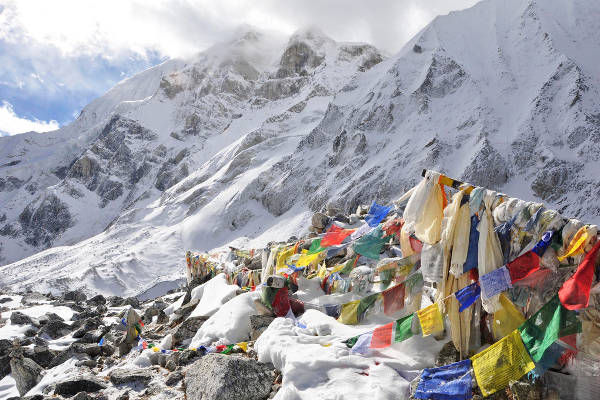
The Manaslu Circuit hike passes ten Himalayan peaks of more than 21,300 feet, including the 8000er , Manaslu (26,781 feet), which is the eighth-highest mountain on Earth .
The Manaslu trek is a 110-mile hike that is a great alternative to Everest Base Camp hike or the Annapurna Circuit hike . The trek usually takes between 14 and 17 days. There are some who do it in 12 days.
Here is my hikers guide to the Manaslu Circuit trek.
Manaslu Trek Guide
The Manaslu Circuit trek resembles the Annapurna Circuit trek of decades past. The area covers six climatic zones. Robin Boustead, author of Nepal Trekking & the Great Himalaya Trail: A Route & Planning Guide , has said, “many would argue that the Manaslu Circuit trail is the best trek in Nepal .”
The Manaslu Circuit hike runs through a restricted area and, while growing ever more popular, is nowhere near as developed as the Khumbu (i.e. Everest) and Annapurna regions. The scenery is similar to that of the Annapurna region and the level of difficulty is similar to the Annapurna Circuit.
A good portion of the trek is spent above 10,000 feet, which is more demanding, but the acclimatisation profile is good, with the trek starting at just under 2,000 feet and taking a week to reach 10,000 feet.
Around 2,000 people undertake this trek each year, much less than hikes in the Annapurna region or to Everest Base Camp, with over half coming in October. You will probably see more yaks and donkeys than trekkers.
The first reason why the Manaslu trek is less frequented is that camping used to be the only option due to a lack of Nepal tea houses . This has since changed with many tea houses being built over the last decade. Admittedly, what tea houses now exist are basic compared to those found on the Annapurna Circuit, but most are relatively comfortable and have electricity. A warm 4-season sleeping bag should be taken as the bedding in some tea houses isn't great and rooms get very cold at night.
The second reason for the Manaslu Circuit hike’s lesser popularity is that the area is restricted and so requires a permit and a registered guide.
Please Note: The highest point is Larkya La (5,213m), which is widely regarded as one of the most dramatic pass crossings in the Himalayas . Sitting as it does in the near-permanent shadow of Manaslu’s north face, snow conditions can be severe. It takes five or six hours to trek to the top.
Manaslu Regional Map
The Manaslu Circuit trek is in western Nepal, a few miles from Tibet inn the North and north-west of Kathmandu in Nepal.
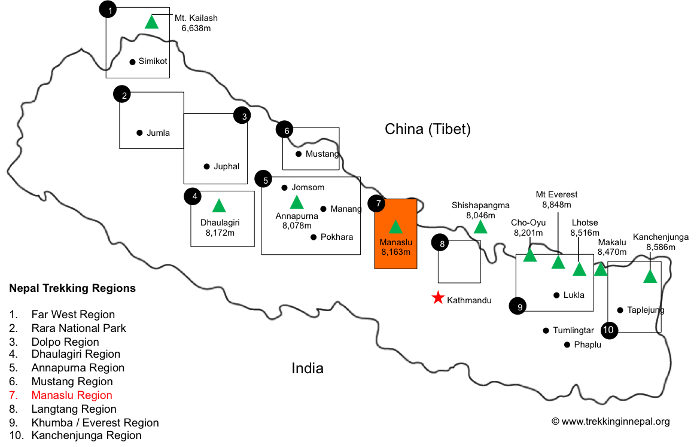
Recommended Manaslu Map
In terms of a good map for the Manaslu Circuit, we recommend: Manaslu and Ganesh Himals Region: 1:125,000 Trekking Map (The Great Himalaya Trail Series Maps) (NP106).
In terms of a single detailed map we recommend the Himalayan MapHouse’s, New Annapurna Trekking Trails Map , which can be bought in Kathmandu, Pokhara or on Amazon.
We have also provided links and recommendations to guidebooks below.
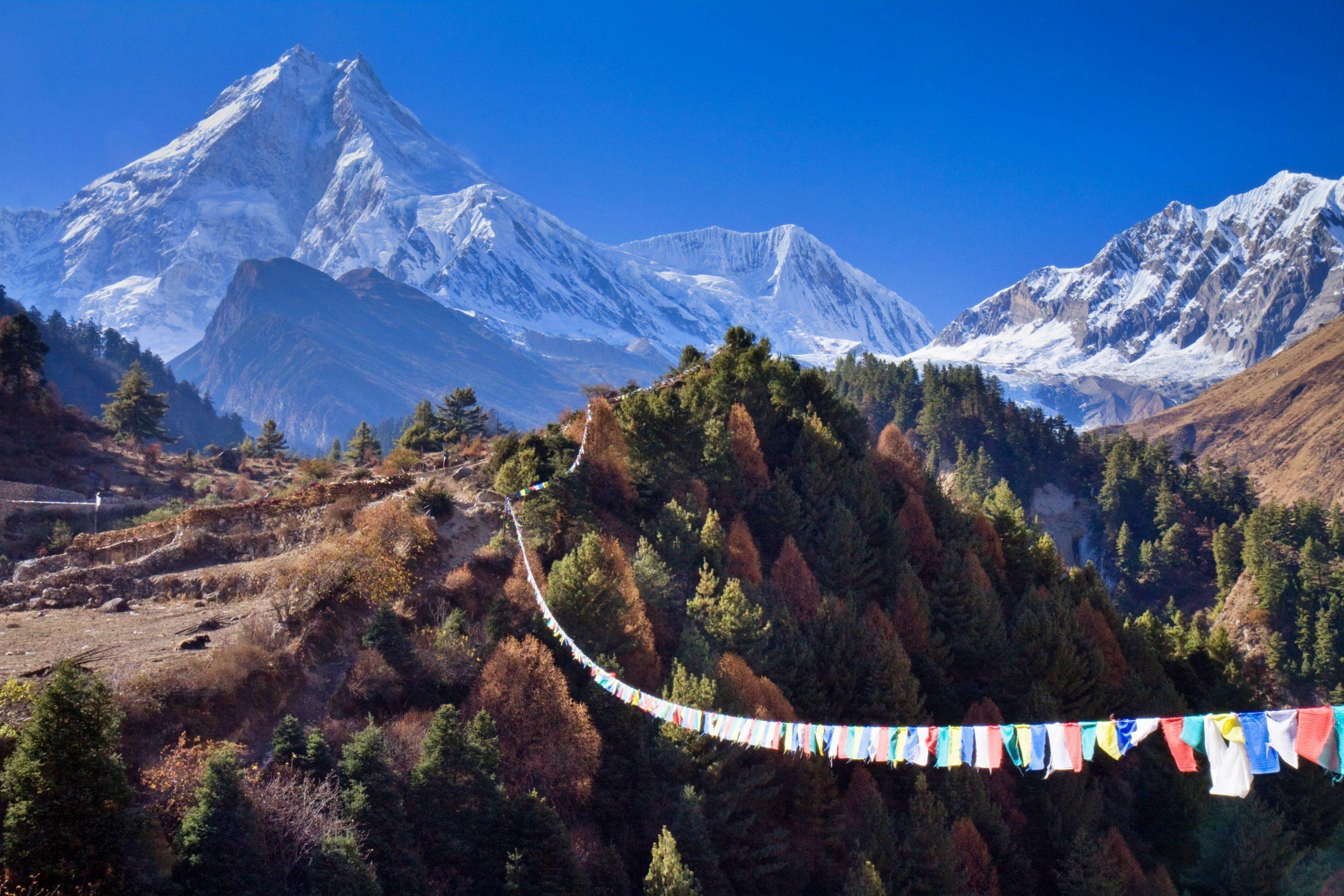
Manaslu Trek Itinerary
Because of the spacing of tea houses at higher altitudes, the Manaslu trek is best done anti-clockwise. It is possible to stay in nothing but tea houses, but you may want to camp as well.
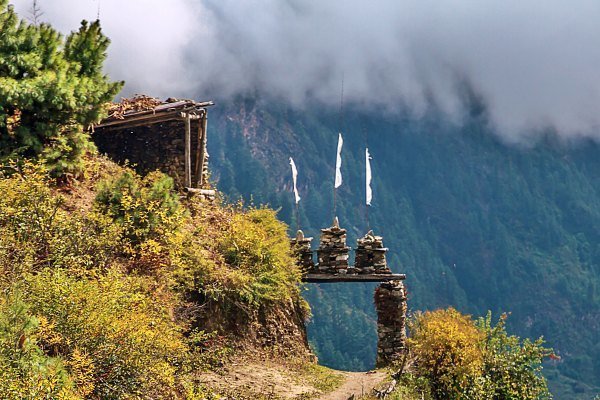
There are several Manaslu Circuit itineraries that can be done. Most start in Arughat, which can be reached by bus from Kathmandu (be prepared for a bumpy ride). Much of the trek follows the Buri Gandaki.
On the lower reaches you will pass lots of farmland, but as you ascend the landscape will become a lot more barren and glaciated.
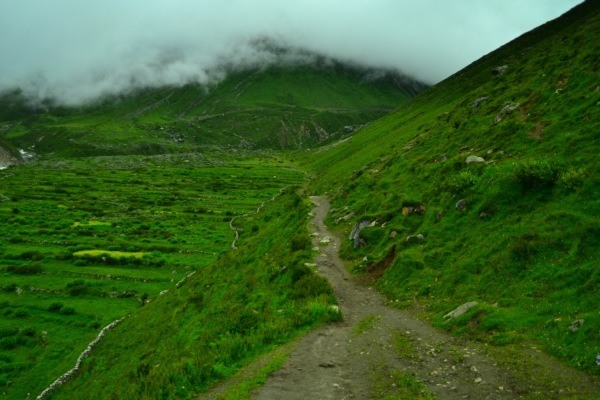
There are many mountain views, the most impressive I think are those of Naike Peak, Manaslu North and Manaslu.
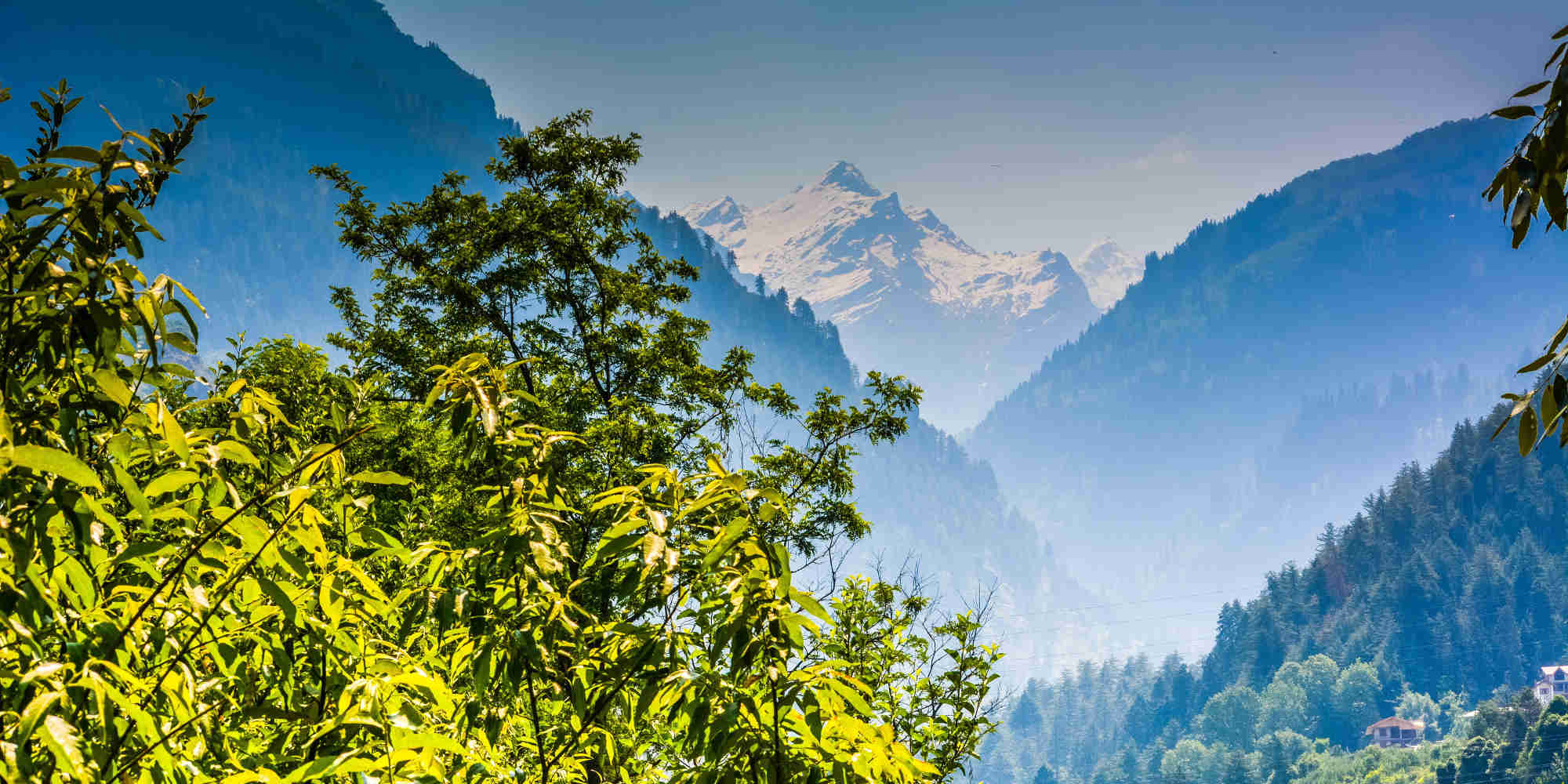
Manaslu Circuit Trek FAQ
When is the best time to trek manaslu.
The best time to trek Manaslu is October or November . Overall, this is the overall best time to trek in Nepal with April and May being the next best times.
How much does the Manaslu Circuit trek cost?
Prices can vary widely, from $2,000 per person at the bottom end to $4,000 per person at the top end. There are over 1000 local trekking agencies in Nepal , so make sure you pick a good, well reviewed operator.
Are permits required for the Manaslu Circuit trek?
Yes, permits are required for the Manaslu Circuit Trek. You need a Restricted Area Permit which costs $50 a week, a Manaslu Conservation Area Project permit which costs $30 and an Annapurna Conservation Area Project permit which costs $30. You will also need four passport-sized photographs.
How difficult is the Manaslu trek?
The Manaslu Circuit Trek is considered quite challenging, but still a possibility for first time trekkers. Altitude is often over 10,000 feet and there may be sections with snow. A good level of fitness is required as the trek is quite long and often steep.
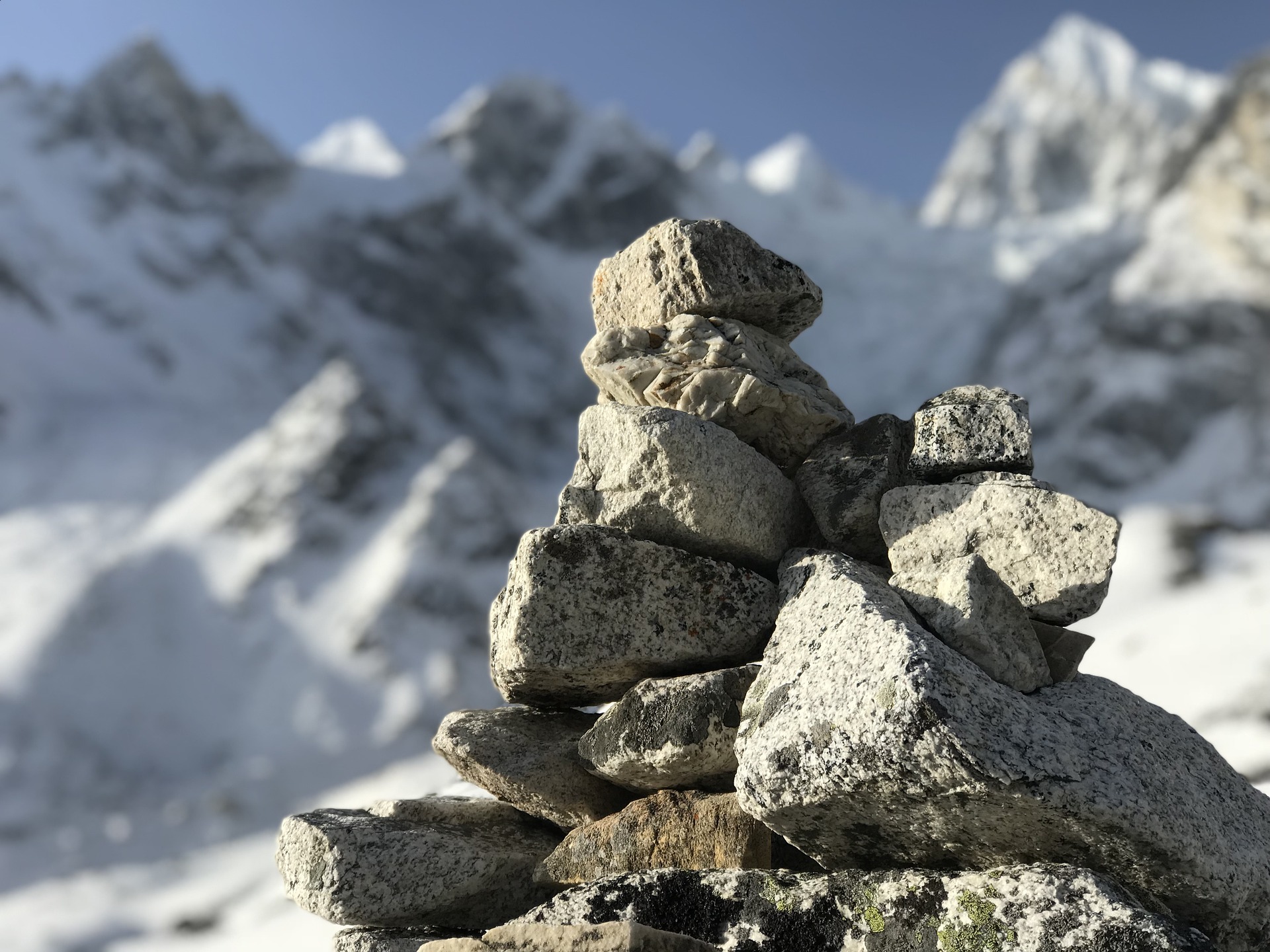
Is altitude sickness a risk on the Manaslu Circuit trek?
Yes, altitude sickness is a risk on the Manaslu Circuit trek because it ascends to some high-altitude points. At its highest point, Larkya La, you will reach an altitude of 5,213 meters (17,100 feet). There are steep sections on this trek where you will ascend very rapidly.
Therefore, it is important to have a solid understanding of the risks associated with high altitude trekking and how the body acclimatises to high altitude. We recommend you read our detailed article on altitude sickness .
What gear do I need for the Manaslu Circuit?
Trekking the Manaslu Circuit requires a number of essential pieces of trekking gear. The trail is long and moderately difficult, exposing you to a range of altitudes where temperatures fluctuate dramatically between night and day.
At a minimum you should take:
- 4-season sleeping bag
- Good hiking boots and 6-8 pairs of hiking socks
- Layered clothing including base layers and a warm down jacket
- Warm gloves
- 60-70L backpack
- Hydration pack
- Trekking poles and polarised glasses

Are there any recommended guidebooks for the Manaslu Circuit Trek?
There are two guidebooks dedicated to the Manaslu Circuit hike that I recommend.
The first one and my personal favourite is A Trekking Guide to Manaslu and Tsum Valley: Lower Manaslu & Ganesh Himal by Sian Pritchard-Jones and Bob Gibbons. As a great alternative, I recommend Trekking in the Nepal Himalaya (Walking Guide) by Lonely Planet.
There is also a collector's book available online called Manaslu: A Trekker’s Guide by Kev Reynolds, which was published in 1999.
You are also welcome to have a look at our recommended list of Nepal books and guidebooks for more options.
Continue browsing
See more information on Nepal . Or check out these other Nepal hiking articles:
- Short Nepal Trekking Tours
- Easy Hikes in Nepal
- Kala Patthar Trek
- Kanchenjunga Base Camp Hike
- Trekking to Rara Lake
- Mera Peak Trek
- Best things to do in Nepal
- Helambu Trek
- Hiking the Mustang Circuit
- Gokyo Lakes Trekking Guide
- Makalu Base Camp Trek
- Gosainkunda Hike
- Hiking to Limi Valley
About the author
Mark Whitman
Mark has trekked extensively in Asia, Europe, South America and Africa. He founded Mountain IQ in 2014 with the sole aim to be the best online information portal to some of the most popular mountain destinations around the world. When not writing for Mountain IQ, Mark is out exploring the outdoors with his wife!
Leave a Reply
Your email address will not be published. Required fields are marked
I am planning on traveling to Nepal this mid May to early June with two friends.
I am a Wilderness First Responder and have guided backpacking trips in California and Alaska, so I consider myself quite competent in the backcountry and would be more than happy to carry my own gear for the duration of a trek.
Is there a particular region in Nepal (or Bhutan or India) that lends itself to off-trail travel without a trekking company? I am still open to hiring a local guide because I think it adds a lot to the experience, but I would prefer to be in a region that provides a competent backpacker with more flexibility.
I’d appreciate any input or direction!
Hi David, in terms of Nepal I would recommend the Annapurna Circuit, Goyko Lakes Trek or the Manaslu Circuit – all offer great backcountry hiking, but are sufficiently well trodden with decent facilities (tea houses) to make one’s experience fun and enjoyable.
Thanks so much for the input Mark.
On the three treks that you mentioned, should we prepare to stay on the common trail the whole trip, or is it feasible/desirable to ever travel off-trail to explore a little more?
Last question, I promise. Thanks!
We work with local guides to offer great value adventures at unbeatable prices

The Manaslu Circuit Trek: Complete Guide
Posted on Last updated: September 22, 2023
For those who prefer ‘the road less traveled’ (which translates into fewer trekkers on the trail) and who enjoy pushing themselves physically and mentally, the Manaslu Circuit Trek in Nepal might just be the trek you are looking for!
Of course, it is not just about driving and motivating yourself; it’s also about the spectacular scenery, the thought-provoking cultures and lifestyles of interesting locals you will meet, and the camaraderie with your guide.
This complete Guide will give you all you need to know about the Manaslu Circuit Trek to enable you to make an educated decision as to whether this is the right trek for your adventure in Nepal.

The Manaslu Circuit Trek: The Basics on What to Know Before You Go
- Location: central-western region of Nepal in the lap of Mount Manaslu, situated within the Manaslu Conservation Area Project (MCAP)
- Starting point: departing Kathmandu for a 7 hr bus journey, the trek starts from Soti Khola and ends at Dharapani for the return bus journey
- Duration: 13 Days
- Trip grade: challenging
- Max altitude: 5,167 m / 16752 ft (at Larkya La Pass)
- Accommodation: basic trekking lodges known as teahouses
- Food: basic curry, noodles, soups, and porridge in the majority of teahouses, but tasty and plentiful
- Distance: 180 km
- Total incline : 11,000 m
- Total decline: 9,800 m
- Permits: Manaslu Conservation Area Permit, Annapurna Conservation Area Permit (as you are also entering this region) and a Restricted Area Permit
- Guide and Porters: you must trek with a guide in this region. Porters can also be hired through your trekking company, Magical Nepal, and it is possible to share a porter with a fellow trekker. Note that one porter can carry no more than 20kg in total.
Important Points to Consider on the Manaslu Circuit Trek
Here are some important points to know before you go. Nepal is one of the top adventure destinations in the world , and this trek is sure to show some of its best facets.
Manaslu Circuit Trek Difficulty
Let’s discuss the difficulty of this trek in more detail. If you are a regular hiker and particularly if you have trekked in the Himalayas before, you will have a good idea of your capabilities. This trek starts at an altitude of 800m / 2,624 ft and gradually, by daily increments of around 400m/ 1,312 ft, brings you to the height of 3,000m / 9,842ft on Day 6.
Daily, expect to walk around 6 hours, with a few days of longer walking. Crossing the Larkya La Pass at 5,160m / 16,929 is not only stunningly beautiful but the hardest day with 10 tough hours of walking.
Although it is around 3,000m when us humans may begin to feel some adverse effects such as a headache, with the built-in acclimatization days, altitude should not be a problem for the majority of healthy trekkers. We must add, however, that altitude-related problems are real, and every care is taken to ensure our guests’ safety, and we train our guides to recognize symptoms before they become serious.
The Manaslu Circuit is Remote
One of the main attractions of the Manaslu Circuit trek is that it goes through remote countryside and gets fewer trekkers than many of the other treks in Nepal. Although remote, it is only one day’s road journey from Kathmandu – no need for weather-dependent flights.
Another result of its remoteness and reduced numbers of trekkers is the fact accommodation is more basic than in more commercial areas. There will be a bed, a blanket, a shower, a reasonable food menu, and the necessary to recharge your electronic goods. Nothing fancy, but more than adequate!
Manaslu Circuit Weather
The Manaslu Circuit Trek starts at a low altitude with subtropical forests and weather. The days get cooler the higher you go until you reach, very possibly, snow underfoot at the Larkya La Pass. Like the majority of treks in Nepal, the best months to come are March, April, May, October, and November.
Clothing for the Manaslu Circuit Trek
See the packing list below for more details, but basically, layers to fit the warm lowland weather and the cold mountain climate, good (pre-worn) trekking boots, and we can also recommend a sleeping bag for extra warmth and hygiene! Available to buy or hire in Kathmandu.
Manaslu Circuit Scenery/ Wildlife and Culture
If it’s a cardio workout you want, we can suggest your local gym! But seriously, the main attraction on a trek in Nepal is the mountains! Manaslu is the eighth-highest mountain in the world, standing at 8,156 m (26,759 ft), and is surrounded by other huge Himalayan peaks, including Himlung and Annapurna II.
From the Larkya La Pass, there are jaw-dropping views of glaciers, a glacier cirque (possibly formed by ancient avalanches) and Himlung Himal, Gyaji Kang, and other great mountains.
At the start of the trek, you will travel through lowlands of rice and millet terraces and the Budi Gandaki gorge with waterfalls and plenty of suspension bridges to add to the fun.
Aside from the landscape, this conservation area is home to the Snow Leopard, Himalayan Marmot, Pika, Tahr, and many other species. It is also home to different Tibetan and Nepalese ethnic groups, making it a real cultural experience as well, particularly if you are interested to learn more about Tibetan Buddhism.
Wi-Fi and electricity on the Manaslu Circuit
Wi-Fi is not guaranteed. There’s no point arguing at the teahouse about it. Carry a local SIM card, which will be able to access the internet at lower altitudes. Electricity may be provided by solar, and you will be charged anywhere up to $5 USD per item to recharge your phone, camera etc. Carrying a good power bank is highly recommended.

Manaslu Circuit Highlights in a Nut Shell
- The overall beauty of the flora in both lowlands and high mountains
- Potential sighting of unique wildlife in two conservation areas
- Getting up at 3am to cross the challenging Larkey La Pass
- Being surrounded by some of the highest peaks in the world
- The mighty thundering Budi Gandaki River, waterfalls and hanging suspension bridges
- Seeing Tibet in the distance
- Feeling like the first trekkers to visit this remote area
- An astounding glacial cirque
- Meeting different groups of locals and learning of their culture
- Visiting Pungyen Gompa (monastery)
Packing List for Manaslu Circuit
Here is an exact packing list for this trek! See my hiking essentials post for links.
- 2 x Trekking pants, preferably those that zip down to shorts
- 1 x Warmer hiking pants for colder areas
- 1-2 x Long sleeved quick drying trekking shirts
- 1-2 x Long sleeved thermal shirt/ vest
- 2 x t-shirts
- 1 x Thermal long underwear
- Underwear for the duration (perhaps you will wash some out a couple of times, but consider the drying process)
- 2-3 x socks, including heavy duty wool ones
- 1 x Lightweight jacket for low altitude and warm days
- 1x Heavy down jacket
- 1 x Warm hat
- 1 x Cap for the sun
- Trekking poles (handy even if you are spectacularly fit!)
- Sunglasses
- Scarf/ buff and gloves
- Hiking boots (pre-worn)
- Microspikes (available in Kathmandu)
- Headtorch
- Sunscreen
- Water filter or sterilising drops/ tablets
- Powerbank
- Camera/ phone/ etc

Manaslu Circuit Trek Outline Itinerary, Altitudes and Times at a Glance
Day 1: Kathmandu to Maccha Khola (Drive)
Maccha Khola – 930 m / 3,051 ft – 7 hrs
Day 2: Maccha Khola to Jagat
Jagat – 1,340 m / 4,396 ft – 6 hrs
Day 3: Jagat to Pewa
Deng – 1,804 m / 5,918 ft – 6 hrs
Day 4: Pewa to Namrung
Namrung – 2,630 m / 8,628 ft – 6 hrs
Day 5: Namrung to Lho
Lho – 2,957 m / 9,701 ft – 4 hrs
Day 6: Lho to Sama Gaun
Sama Gaun – 3,530 m / 11,581 ft – 4 hrs
Day 7: Acclimatization Day (Day Trip to Manaslu Base Camp or Pungyen Gompa) Sama Gaun – 4,400m / 14,435 ft – 7 hrs
Day 8: Sama Gaun to Samdo
Samdo – 3,865 m / 12,680 ft – 3 hrs
Day 9: Acclimatization Day (Day Trip to Tibet Border)
Samdo – 5,000 m / 16,404 ft – 8 hrs
Day 10: Samdo to Dharmasala
Dharmasala – 4,460 m / 14,632 ft – 4 hrs
Day 11: Dharmasala to Bimthang via Larkya Pass
Bimthang – 3,590 m / 11,778 ft – 10 hrs
Day 12: Bimthang to Dharapani
Dharapani – 1,970 m / 6.463 ft – 7 hrs
Day 13: Dharapani to Kathmandu (Drive)
Kathmandu – 1,300 m / 4,265 ft – 8 hrs
Breakdown of the Day to Day Highlights on the Manaslu Circuit Trek
Day 1: kathmandu to maccha khola (7 hours drive).
The day starts off from Kathmandu, where we get a local bus along the Prithvi Highway until we reach the village Machha Khola, where we stay overnight. The alternative would be to hire a private jeep, which would be more comfortable.
Highlight of the day: the only real highlight is that you are off on your adventure! The scenery is pretty cool, too, although the road is dusty and bumpy in places.
Day 2: Maccha Khola to Jagat (5 to 6 hours hike)
Now, the trek begins! Follow the banks of the Budi Gandaki River along a dusty, twisting trail. You will get your first experience of suspension bridges as you cross and recross the river. The villages you see on the way are Gurung villages, with some steep stone stairs on the way.
With aching muscles, now you are really trekking! It is most likely a hot and sweating hike today. If you wish, you can rest and soak your legs in a hot water spring at Tatopani (literally translated to hot water).
Highlights of the day:
● Experiencing those suspension bridges!
● The mountains overhead.
Day 3: Jagat to Pewa (5 to 6 hours walk)

Still in the sub-tropical forests, where it is surprisingly warm, it is a definite benefit if your limbs are sore from yesterday! Buddhist prayer flags decorate the trails, and there are some interesting gompas (monasteries) on the way.
At a large Gurung village called Phillim, you will get your permits checked (just to make sure you have paid for the right to be here)! Rhododendron forests are colorful to hike in the spring. Crossing the Siyar Khola bridge, you come to the junction which leads to the interesting Tsum Valley (an adventure for another occasion, perhaps).
Pewa is a very small settlement with basic food, the best option being the delicious Nepali cuisine of dal bhat and pickles.
● The highlight is always the mountains reaching high into the heavens.
● Rickety old suspension bridges that test our nerves.
● Prayer flags fluttering in the wind.
Day 4: Pewa to Namrung (5 to 6 hours walk)

The trail takes you through a bamboo forest, across another suspension bridge, and a climb up to more villages. Look out for monkeys on the way! Now, you enter a landslide zone where you have to pay attention to the guide who will get you safely across.
Then, it’s an uneven zigzag trail up to Namrung. The trail proceeds to Ghap through several more landslide zones. At this point, you must be extra careful as you walk. Plus, you must be attentive to your guide’s instructions to maintain physical safety. After the landslide zone, you follow the trail up to Namrung. By now, the views are of major peaks, which your guide will point out to you.
● Looking out for monkeys on the way, but please don’t feed them.
● A kind of highlight is making it safely across the loose stones of landslide-prone areas.
● Having a good coffee at a modern restaurant in Namrung, should it be hopefully open. ● The Wi-Fi can be pretty good at Numrung. Again, hopefully!
Day 5: Namrung to Lho (3 to 4 hours walk)
More gorgeous rhododendron forests, together with forests of oak. Perhaps more interesting are the arched gates, prayer (mani) walls, and local Nurbri people dressed in Tibetan-like attire. If you look up, there are wonderful views of Manaslu and Manaslu North.
Now, at high altitude, you might begin to feel some slight ill effects such as a headache. Take note of this and advise the guide should it get worse. By walking steadily and slowly, and ensuring everyone is drinking plenty of fluids, the guide is well aware of the rise in altitude.
● First views of Manaslu up close.
● Feeling of peace amongst Buddhist peoples.
Day 6: Lho to Sama Gaun (3 to 4 hours walk)

Waking up to views of Manaslu and knowing it is a short day’s walk to Sama Gaun with its yak pastures, large gompa and shops brings a smile to your face.
● Walking through high alpine pastures with lots of grazing yaks there and on the nearby mountainsides.
● Shopping! Perhaps for some snacks, if anything that is available catches your eye. ● Best views so far of Mt Manaslu – and from your teahouse!
● Wi-Fi, hopefully!
Day 7: Acclimatization Day (Day Trip to Manaslu Base Camp or Pungyen Gompa, 7 hours walk)

Now, at an altitude of 3,530 m / 11,581 ft at Sama Gaun, it’s time to let your body adjust before going higher. The best way to acclimatize is to keep active! So, no, put that book away and put the hiking boots back on!
There are a couple of options. The first is hiking to Manaslu Base Camp, passing Birendra Tal (lake). The second option is to hike to Pungyen Gompa. The Gompa sits on the top of a plateau facing the mountains and is best visited for sunrise.
If you are feeling particularly tired and really do need to rest more than hike some more, you can make a shorter trip to just Birendra Tal, which provides something different to enjoy and experience.
● If you head to Puneng Gumpa, eating your packed lunch while gazing at the mountains has to be a highlight!
● There is also a possibility of seeing foxes in this area.
● By hiking to Manaslu Base Camp, there is a wonderful feeling of achievement as well as stunning mountain views.
Day 8: Sama Gaun to Samdo (2 to 3 hours walk)
Although a short day in terms of hours, the going is tough because of the altitude. Leaving the tree line, you climb a ridge and cross a wooden bridge over the Buri Gandaki River to reach the picturesque yak herding village of White Kani. Then on to Samdo. Since it has been a short day, you can walk on and visit Samdo Peak if you desire.
● Passing the mani walls with their Tibetan Buddhist mantras carved into them.
● Bird watching, as there are plenty of different varieties in the area.
Day 9: Acclimatization Day (Day Trip to Tibet Border, 8 hours walk)
After what was probably a cold night at Samo (this is where your own sleeping bag would be extremely helpful), you will be more than happy to strap on your boots and head out. Standing at the Tibet / Nepal border, there are views of Samdo Glacier and perhaps even some yak caravans.
Unfortunately, there are no signs saying ‘Welcome to Tibet’ to photograph, but you will be able to say you have seen Tibet! Do not be tempted to climb over the rickety fence into China!
● Seeing Tibet!
● Gazing at the Samdo Glacier.
Day 10: Samdo to Dharmasala (8 hour walk)
Trekking through rugged terrain with the mountains overhead has now become second nature! It is likely the mountains are covered in fresh snowfall, making it all the more magical. Dharmasala is another cold settlement to spend the night.
● Knowing that the interesting and challenging Larke La Pass is coming up!
● Being grateful for that extra thick jacket you packed before leaving home!
Day 11: Dharmasala to Bimthang via Larkya Pass: (10 hour walk: This is the highlight of the Manaslu Circuit Trek! And it will be a real challenge!)

Larkya La Pass is 5,160m / 16,929 ft and most likely covered in snow. It also involves getting up around 3am to make it over the pass before the high winds come up in the afternoon. Micro-spikes are mostly used for this crossing, which is another new experience for many people.
As for the views, you will see Himlung (7,126m/ 23,379 ft) near Tibet Kang Guru (6,981m /22,903 ft), and Annapurna II (7,937m / 26,040 ft) – all of which will take your breath away. On the descent, there are views of mountains and ice falls surrounding you, along with several glaciers.
● It’s probably not a highlight to get out of bed at 3am, but once you are up, the excitement builds!
● Prayer flags greet you as you reach the top of the pass, making you feel like you are a Himalayan mountaineer.
● Using micro-spikes on the descent brings more adventure to the day.
● Finally reaching the teahouse at Bimthang for some hot tea and great conversation.
Day 12: Bimthang to Dharapani (7 hours walk)
The final day of the trek, so enjoy the forests and the rhododendron bushes. As you descend, the landscape turns from glacial flood areas and forests to agricultural lands. It is a long downhill hike of around 25km, but you can breathe more easily at the lower altitude. Reach Dharapani for your final night in the Manaslu area.
● Bittersweet feeling of having completed the trek successfully.
● Perhaps a beer to celebrate at the final teahouse.
● Exchanging contact details with fellow trekkers.
Day 13: Dharapani to Kathmandu (8 hours drive)
A jeep at Tilije will take you to Beshi Sahar, where you catch the bus back to Kathmandu. Or arrange for a private jeep to meet you. You probably deserve that!
Highlight of the day:
● Another bittersweet day but with the promise of a really hot shower in clean surroundings back in your hotel in Kathmandu.
● Menu choices you now find so exhaustive it’s hard to choose!
Further Information on the Manaslu Circuit Trek
For further information of the Manaslu Circuit Trek, and other treks in the area, such as the Tsum Valley Trek and Manaslu and Tsum Vally Trek, or if you have any questions, contact Magical Nepal , who have amazingly experienced guides and friendly service. We hope to see you in the mountains soon!
Privacy Overview
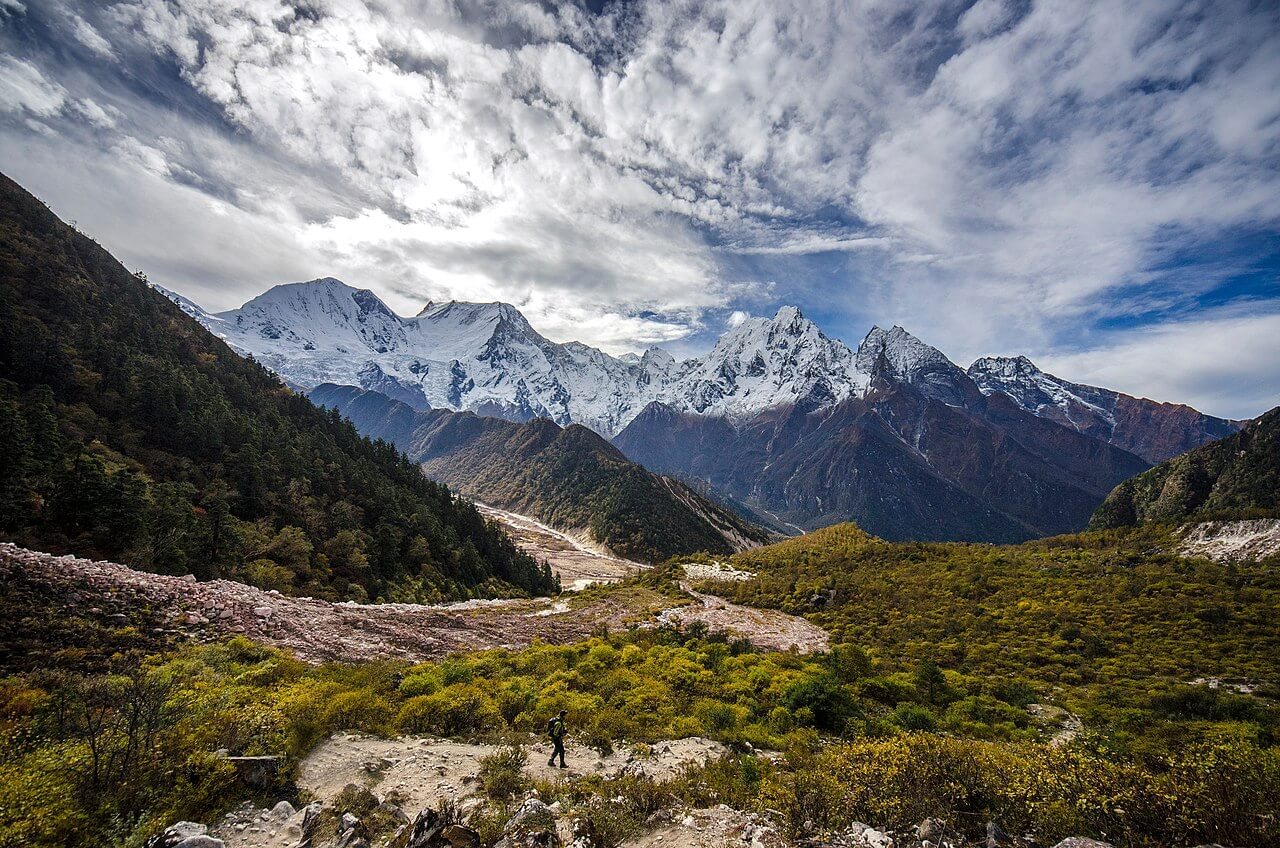
Manaslu Circuit Trek
Manaslu Circuit Trek stands less beaten and secluded compared to treks like Everest or Annapurna , but it is equally as impressive as other classic treks.
Manaslu Circuit Trek is the most beautiful as well as demanding treks in Nepal . Trekking in Manaslu is a delightful experience with a blend of adventure, scenery, culture, lifestyle, and wildlife. Located in the western part of Nepal, this trek provides you with an opportunity to encircle around the world’s 8th highest massif, Mt. Manaslu.
Manaslu Circuit Trek rewards you with magnificent spectacles of some of the highest mountains in the world, including Manaslu and Annapurna. With diverse landscapes, unique cultures, rare flora, and fauna, Manaslu is one of the most sought out destinations for avid trekkers. Most of the travelers who choose this trek tend to enjoy less trodden mountain trails rather than the well-known trekking destinations.
Throughout the trail, this trek takes you via the high valleys, isolated villages, ancient monasteries, tranquil lakes, and high Himalayan passes.
Table of Content
Manaslu Circuit Trek Facts
Highlights of manaslu circuit trek.
- Comparatively remote and off the beaten trekking destination in the Himalayas of Nepal.
- Diverse landscapes ranging from subtropical forests to the high Himalayan passes.
- Crossing over Larkya La Pass (5,135m), the highest elevation point on the trek.
- Discover the timeless culture and lifestyle of the Manaslu region.
- Enjoy the epic mountain sights as this trek offers glimpses of Mt. Manaslu, Himalchuli, Ngadi Chuli, Ganesh Himal, and Larke Himal.
- Discover rare and abundant wildlife. Manaslu is home to 33 different species of mammals, 110 species of birds, and 211 species of butterflies.
Getting There and Away
Start of the trek.
You’ll start your adventure with a scenic drive from Kathmandu to Soti Khola in Budhi Gandaki Valley. You can drive to Soti Khola (141 km) via 4×4 Jeep (8 hours) or by a local bus (10 hours).
End of the Trek
The endpoint for Manaslu Circuit Trek is Dharapani. You’ll have to take a jeep from Dharapani to Besisahar and switch the vehicle back to Kathmandu.
14 Days Outline Itinerary of Manaslu Trek
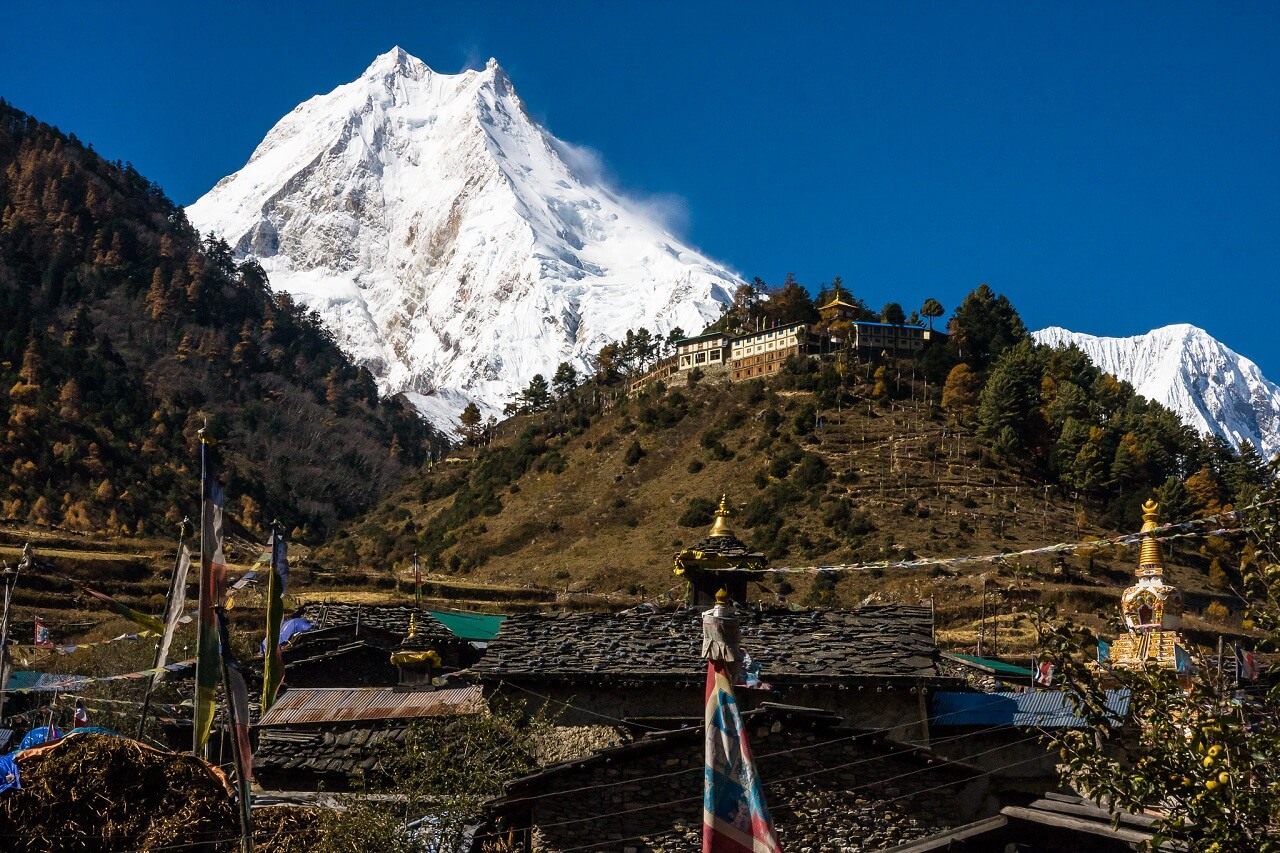
Manaslu Circuit Trek 14 Days Detailed Itinerary
Day 1: drive from kathmandu (1,400m) to soti khola (815m) via arughat (941m) – 8 to 10 hours.
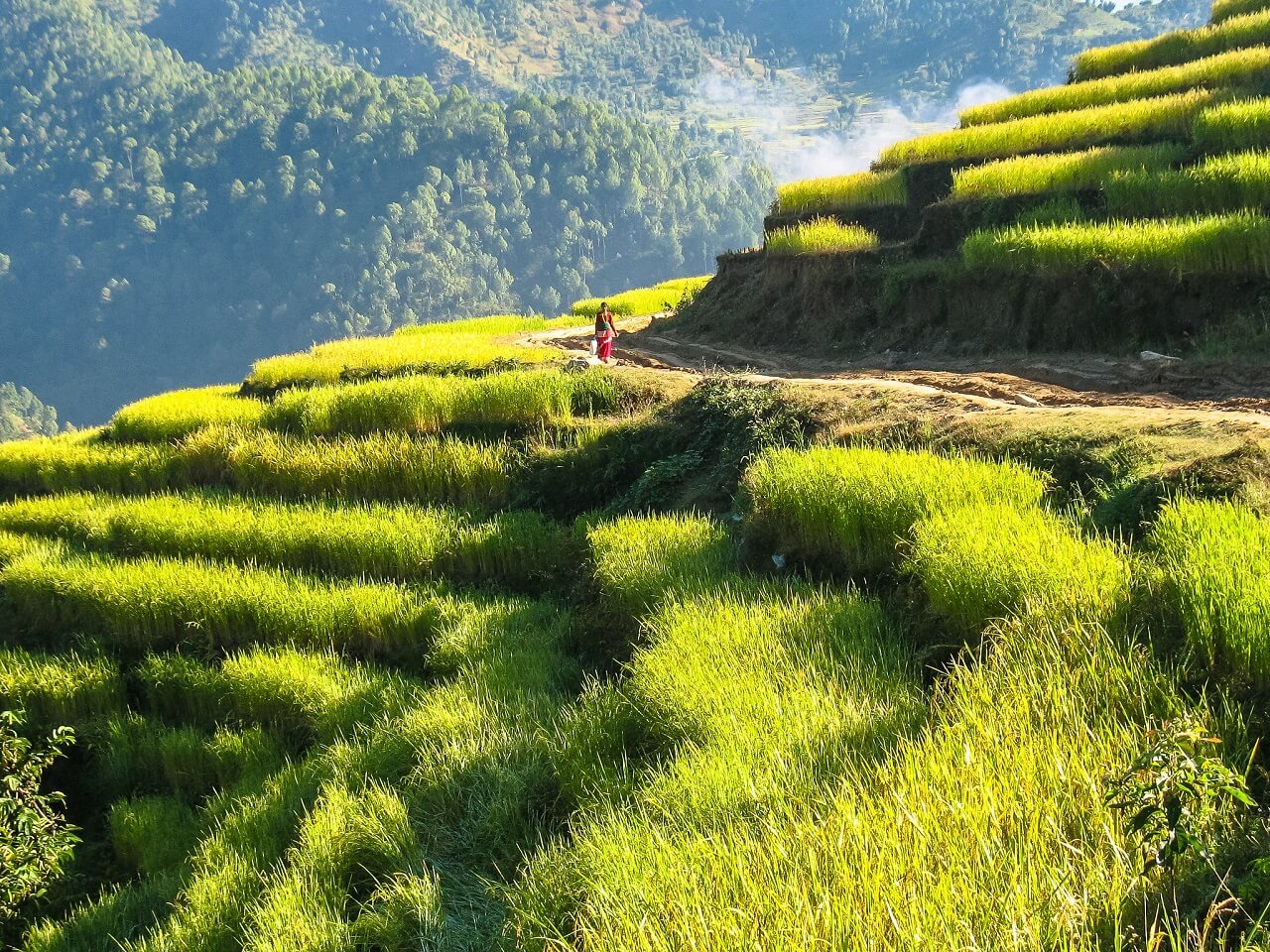
Your adventure to Manaslu Circuit Trek begins with an early morning drive westwards to Soti Khola via the Prithivi Highway. This scenic drive alongside the mighty Trishuli River passes through occasional small towns, breathtaking terrace fields, and lush green hillsides.
Upon reaching the Malekhu Bridge, the vehicle will take a turn towards Dhading Besi, away from the highway. Eventually, you’ll be traveling on a rutted, dirt path towards Arughat as the views of mountains like Annapurna, Manaslu, Ganesh Himal, and Langtang Himal start unfolding in the horizon.
After about 8 to 10 hours of driving, you’ll reach Soti Khola.
Day 2: Trek from Soti Khola (815m) to Machha Khola (900m) – 6 to 7 hours
On this day, your trek starts by crossing the bridge over Soti Khola with a splendid view of the waterfalls. The trail leads to the dense forest before ascending onto the ridge right above the Budhi Gandaki River.
After hiking through the rocky terrain, you’ll arrive at the village of Khursane. Eventually, after descending past the paddy fields, you’ll trek around the Gurung settlement of Lapubesi. Walking along the sandy beds of Budhi Gandaki River, you’ll go down towards the Naulikhola.
Upon crossing the suspension bridge over the river, you’ll arrive at the tiny settlement of Machha Khola.
Day 3: Trek from Machha Khola (900m) to Jagat (1,370m) – 6 to 7 hours
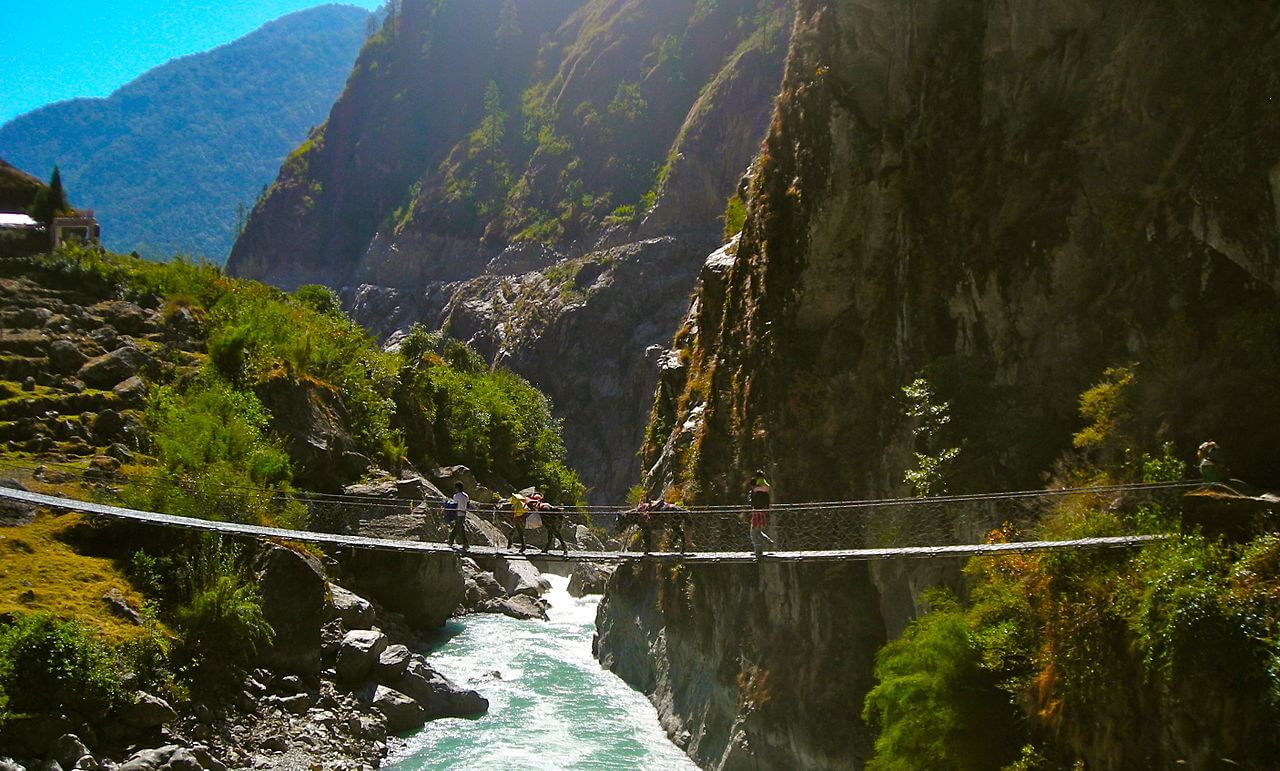
Today, the day may get slightly strenuous as the trail to Maccha Khola leads to several uphills and downhills. Your day begins following the narrow paths along the gorge with a gentle uphill and downhill. After a while, you will cross Tharo Khola to reach another Gurung village at Khorla Besi.
As the trail ascends and descends, you will arrive at a natural hot spring in Tatopani. After arriving at Tatopani, you’ll climb a steep ridge then cross the Budhi Gandaki River via a suspension bridge. The trail then heads over the hill towards Doban after climbing up the stone steps.
After crossing the suspension bridge over Yarkhu Khola, the trail leads to another steep section of the stone staircase. The trail then navigates towards the river before ascending through some more stone steps towards Thado Bharyang.
Heading across the west bank of Budhi Gandaki River, you’ll climb over the ridge and walk alongside the river towards Jagat. The village of Jagat is the entry point of the Manaslu Conservation Area (MCA).
Day 4: Trek from Jagat (1,370m) to Deng (1,865m) – 6 to 7 hours
You begin the day with a steep ascent over the rocky ridge to Salleri, then make a gentle descend towards Sirdibas. Then, continue trekking towards Ghatta Khola and cross a long suspension bridge to arrive at Philim, a large Gurung village.
The trail now heads northward across the millet fields to Ekle Bhatti. You navigate through the sloppy grasslands then cross the Budhi Gandaki river. After you walk along the riverbank, the narrow trail opens up through the valley. You’ll then walk in the shades of bamboo forests towards the Deng Khola. Upon crossing the river, you’ll reach your destination, Deng.
Day 5: Trek from Deng (1,865m) to Namrung (2,630m) – 6 to 7 hours
After leaving Deng behind, you commence the day by crossing the Budhi Gandaki river. From the bridge, make a gentle ascend to reach the trail from Bhi. Now, head westwards up the Budhi Gandaki Valley and walk past the lush green jungles and traditional villages of Manaslu.
Although there are a few alternative options, this itinerary takes the route that passes through the village of Prok. The viewpoint of the settlement offers a magnificent view of the Siringi Himal. You cross the Budhi Gandaki river time and again today and walk past the ancient monasteries en route to Namrung.
The trail navigates along the river upstream under the shade of the dense bamboo forest until you reach Namrung.
Day 6: Trek from Namrung (2,630m) to Samagaon (3,525m) – 6 to 7 hours
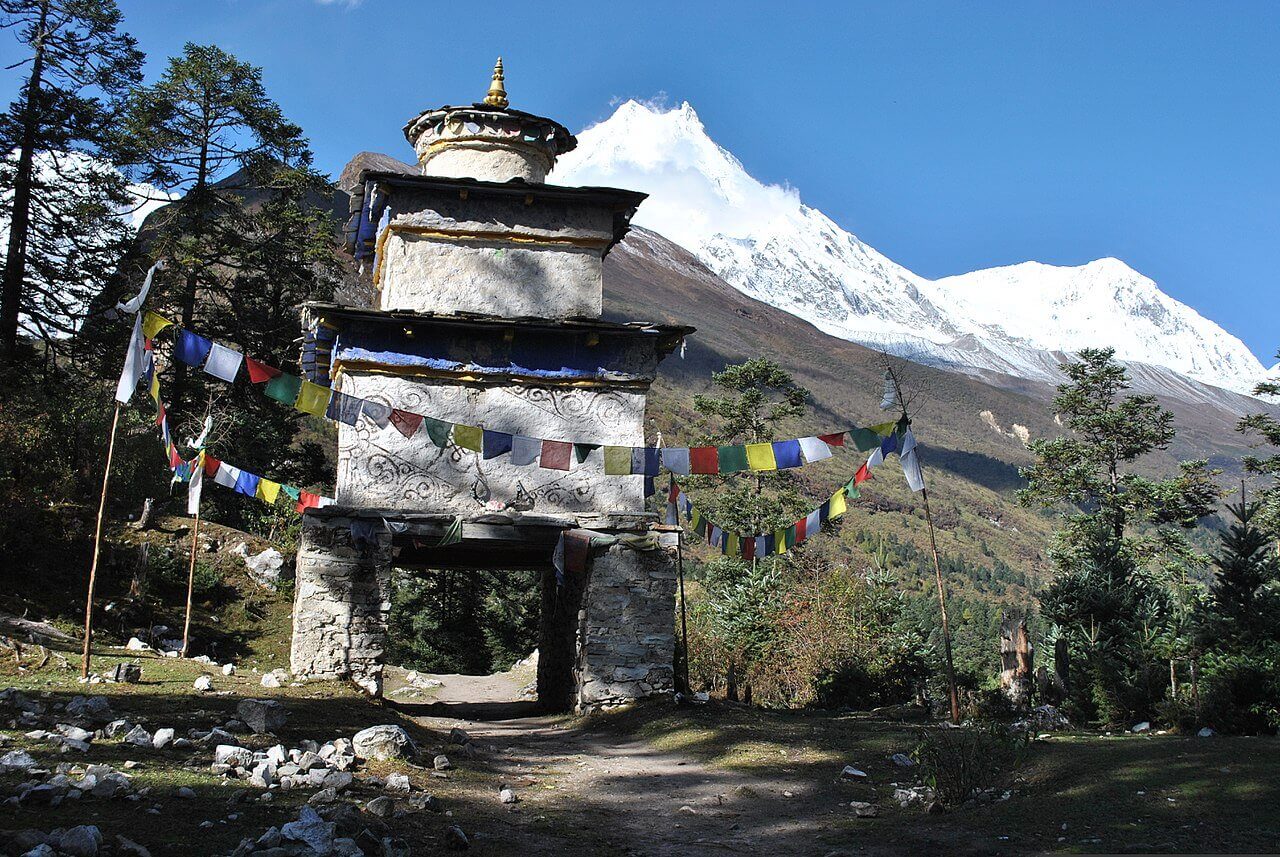
Namrung village offers a magnificent sight of Siring Himal, Ganesh Himal, and Mt. Himal Chuli. After enjoying the morning spectacles of the Himalayas, the trail leads uphill through the lush green forest to reach Lihi village.
Furthermore, you walk past several remote villages like Sho, Lho, and Shyala before arriving at Samagaon. Upon reaching Lho, you will enjoy the extraordinary view of the world’s 8th highest mountain, Mt. Manaslu. Snow-capped mountains surround Shyala village from all directions — Himal Chuli and Peak 29 (Ngadi Chuli) on the left, Mt. Manaslu and its glacier up ahead, and Ganesh Himal on the far right.
Your adventure for the day ends as you reach Samagaon.
Day 7: Acclimatization Day at Samagaon (3,525m)
A much-required rest day at Samagaon to acclimatize with the higher altitudes. On this day, you can choose to take a rest in the teahouse or hike around the nearby destination to keep your feet stretched.
For those who want to explore around instead, you can take a short hike up to an old monastery, Pungyen Gompa. This ancient monastery offers an excellent view of the glacier.
Day 8: Trek from Samagaon (3,525m) to Samdo (3,850m) – 4 hours
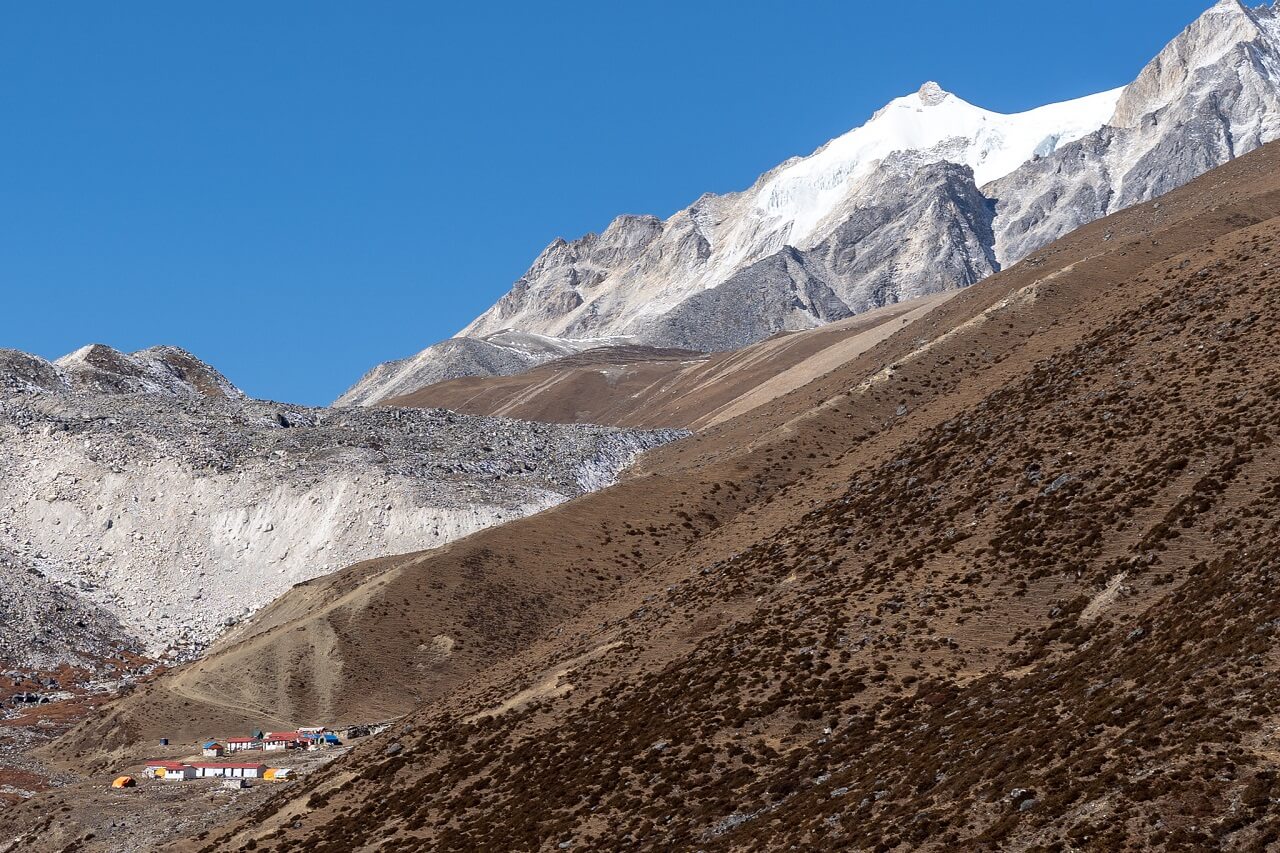
Begin your day with a slight descend to Budhi Gandaki River then head towards the bridge over a side stream. The valley begins to open spread out as you walk across several Mani walls. Enjoy the magnificent views of the mountains along the trail as you edge closer to the Tibetan border.
Then, the trail leads to an accessible route right above the river under the shades of birch and juniper forests. Samdo offers an excellent view of the mountains, especially Mt. Manaslu. Since Samdo is a village of Tibetan refugees, Tibetan Buddhism widely dominates the area.
Day 9: Acclimatization Day at Samdo (3,850m)
Another acclimatization day at Samdo begins before heading to the challenging sections of the trek. There are a couple of alternatives for day hikes in Samdo.
The first option is an easy walk to the valley directly behind the Samdo village. The trail offers magnificent mountain views including Mt. Manaslu, Hiunchuli, Simrang, Ngadi, and Larke Peak.
Another option is to hike towards Gya La, a long pass north of the village. Excursion to Gya La is slightly longer and more strenuous than the first one.
Day 10: Trek from Samdo (3,850m) to Dharmasala (4,460m) – 4 to 5 hours
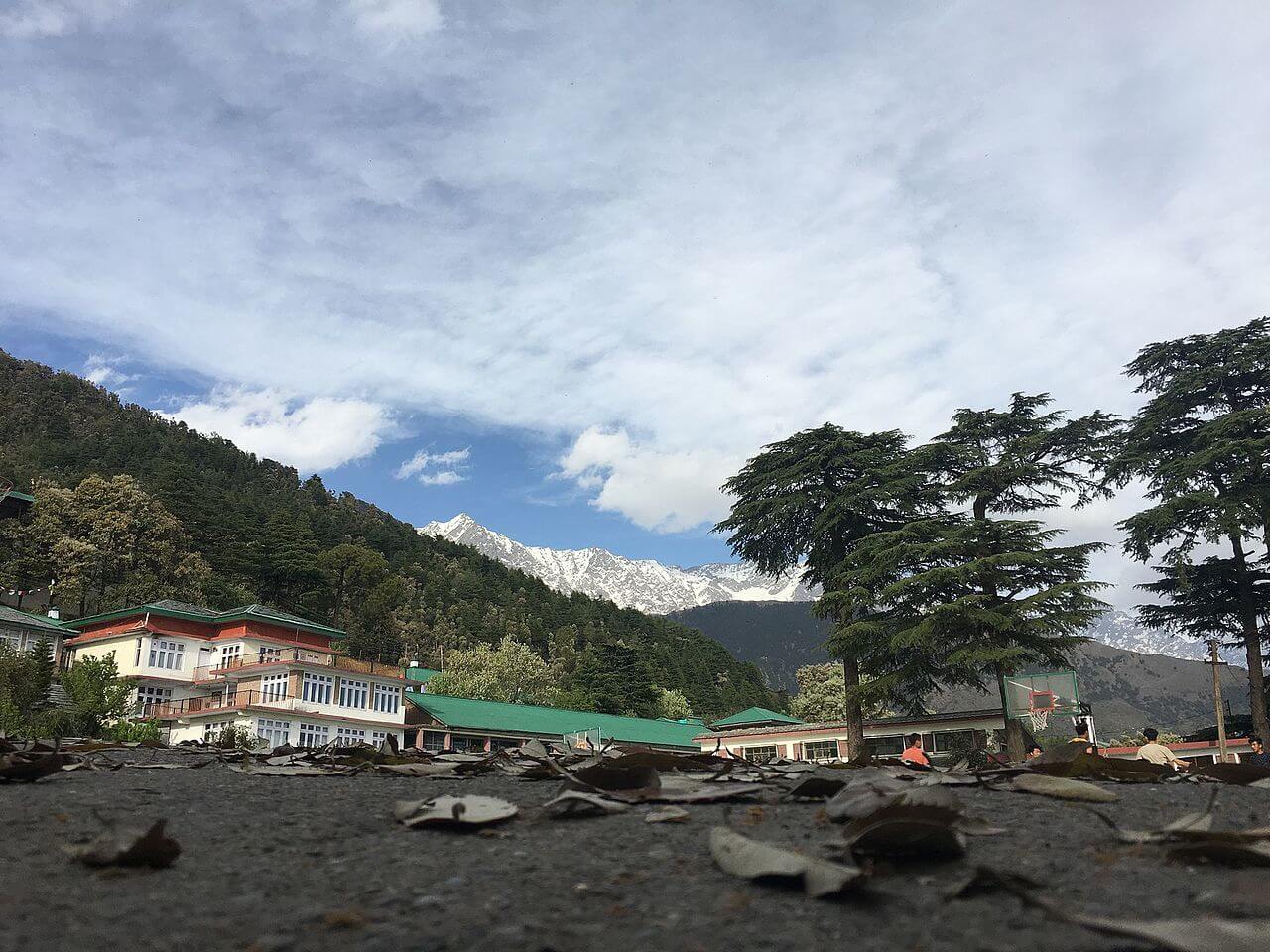
Upon leaving Samdo, you’ll walk past Larke Bazar, a seasonal Tibetan market, then descend towards the Budhi Gandaki river and cross the small wooden bridge. You’ll pass a couple of streams while relishing the Larkya Glacier.
After trekking around the valley of Salka Khola, you’ll climb steep uphill towards Dharmasala.
Day 11: Trek from Dharmasala (4,460m) to Bhimtang (3,590m) via Larkya La Pass (5,135m) – 8 to 9 hours
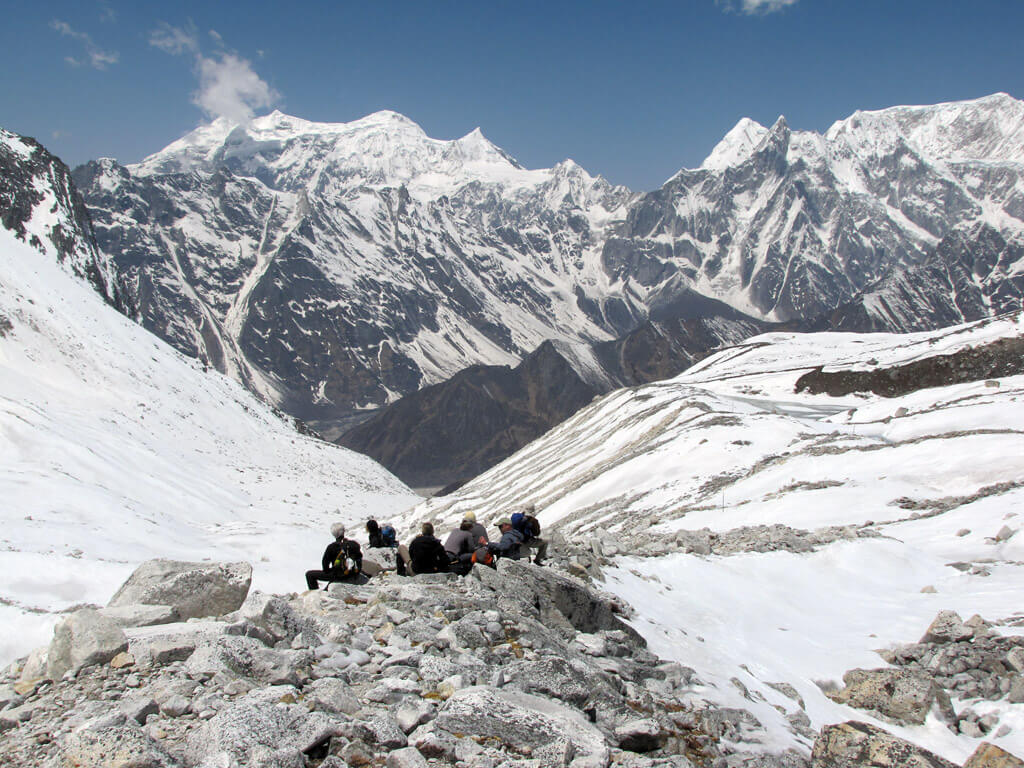
Today marks as the most prolonged and most strenuous day of the entire Manaslu Circuit. Therefore, make sure to begin your adventure early in the morning. Your journey starts with a gentle uphill to a small valley north of Larkya Glacier. The valley provides breathtaking views of Larkya Peak and Cho Danda.
Furthermore, make a gradual ascent across the moraine of the glacier until you reach the upper section of the pass. In the upper reaches of Larkya La Pass, the climb becomes steeper. However, the pass is rewarding with beautiful spectacles of the mountains, including Annapurna II, Himlung Himal, and Cheo Himal.
The trail then descends to the low pastures until you arrive at Bhimtang.
Day 12: Trek from Bhimtang (3,590m) to Tilije (2,300m) – 5 to 6 hours
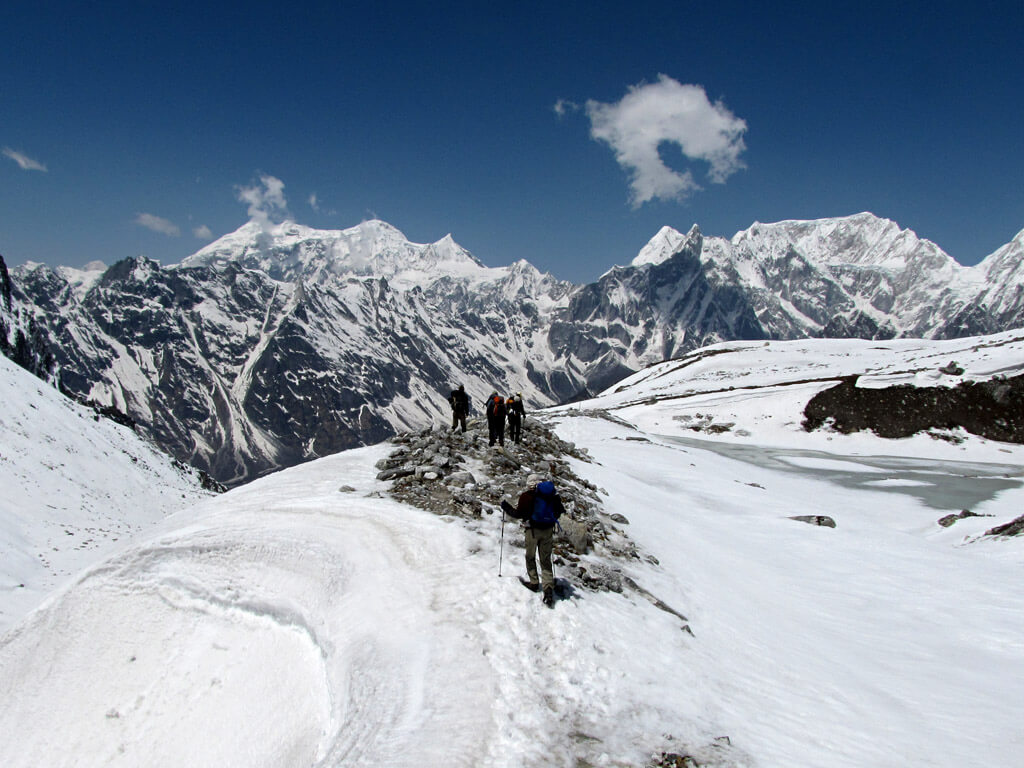
After a long day at Larkya La Pass, you commence the day by descending the Budhi Gandaki river. After crossing the wooden bridge over the river, you’ll walk along the dense rhododendron forest and head toward the narrow valley towards Karche, the highest cultivated land of Budhi Gandaki Valley.
Following a few hours of walking on the river banks, you’ll arrive at the village of Gho. Then, continue walking until you reach your destination, Tilije.
Day 13: Trek from Tilije (2,300m) to Dharapani (1,860m) and Drive to Besisahar (760m) – 7 to 8 hours
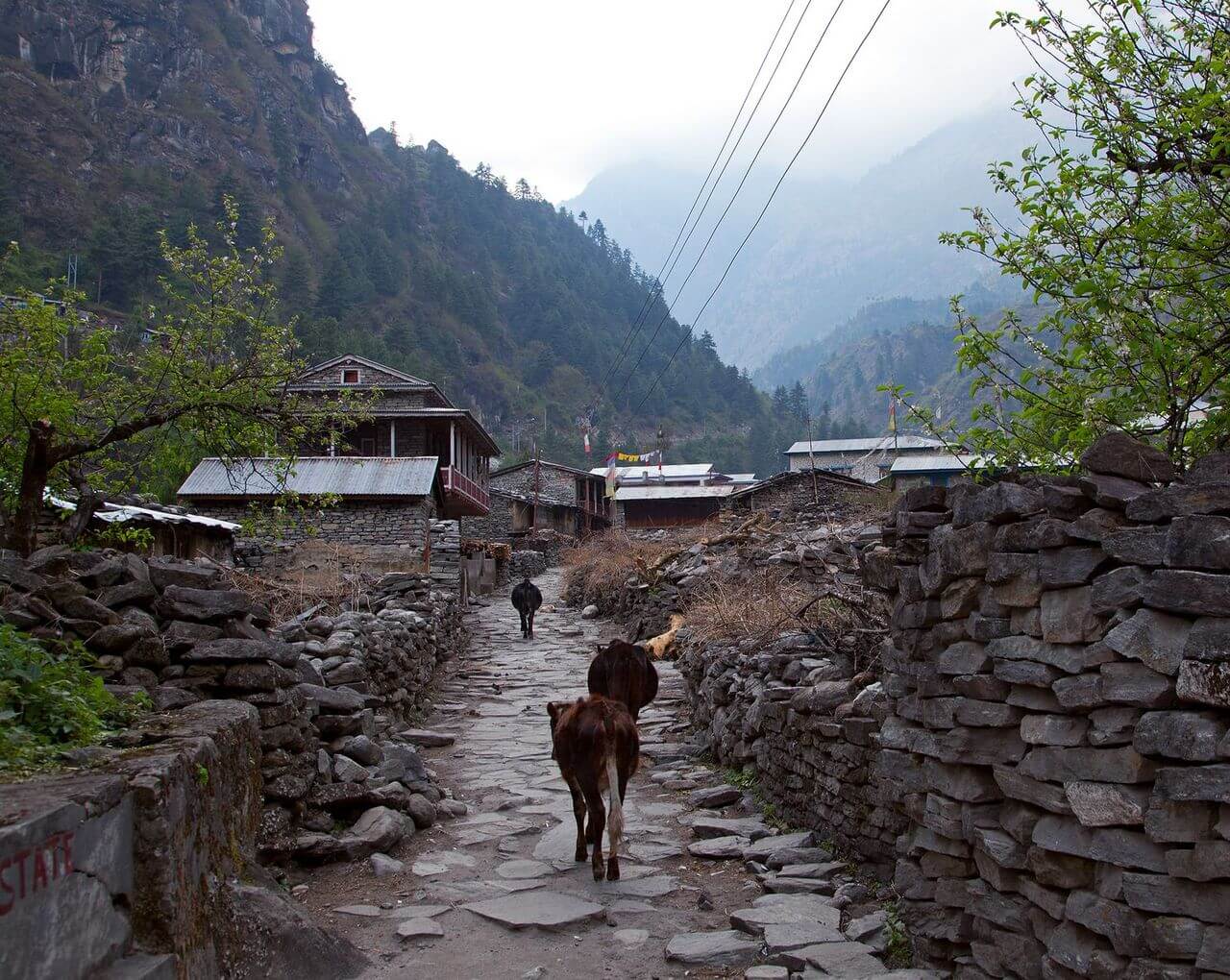
Walking through the beautiful villages, you cross the bridge over the Dudh Koshi river and head past several Mani walls and an arch to arrive at Thonje village. The trail further leads to the occasional police check-posts before entering the route to Annapurna Circuit at Dharapani.
From here, you can hire a jeep or even take a local bus to Besisahar from Dharapani. It makes you about 4-5 hours to reach Besisahar from Dharapani.
Day 14: Drive from Besisahar (760m) to Kathmandu (1,400m) – 5 to 6 hours
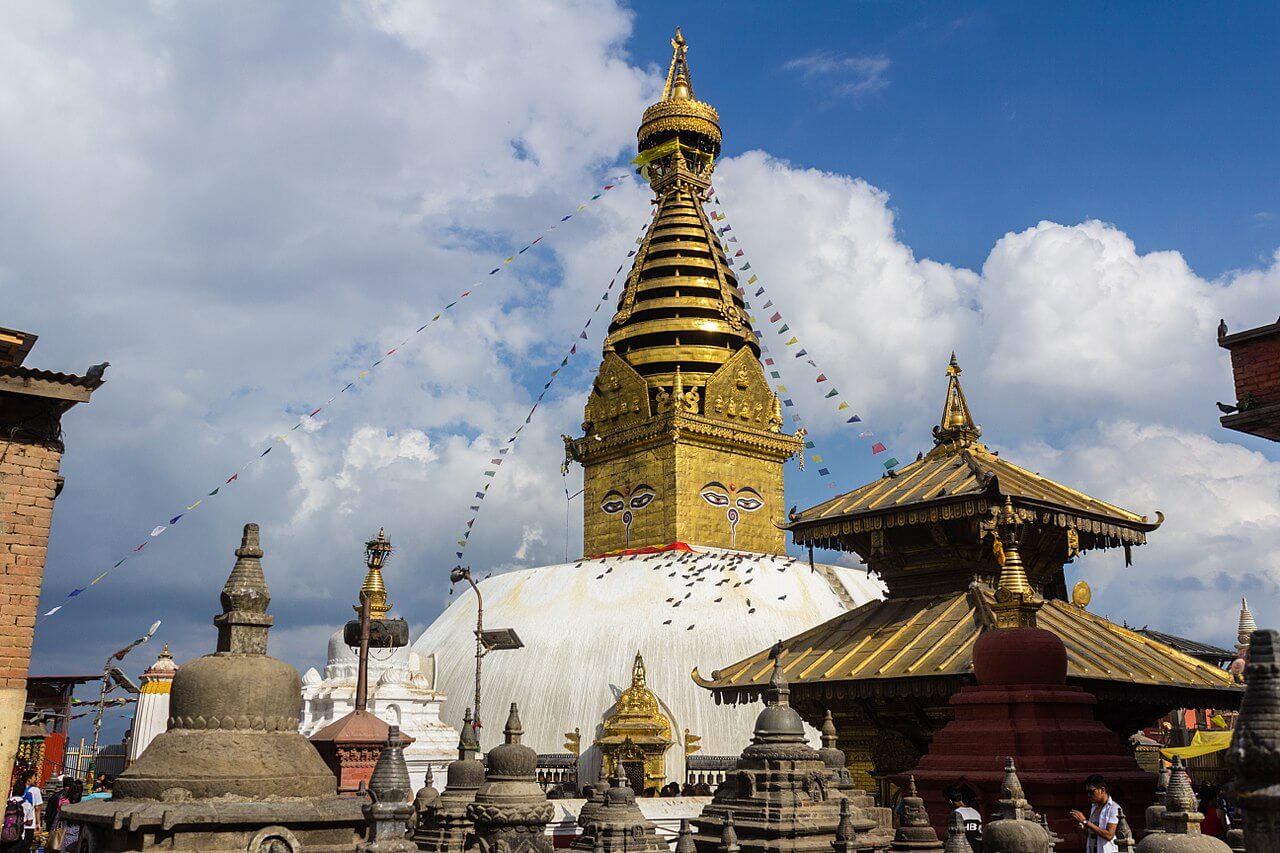
Begin in the morning with a scenic drive across several small villages. You drive along the Prithivi Highway, enjoying the beautiful scenery of hills, flowing rivers, terrace fields, small towns, and occasional mountains.
After driving for about 5-6 hours, you’ll reach Kathmandu.
Tsum Valley Extension
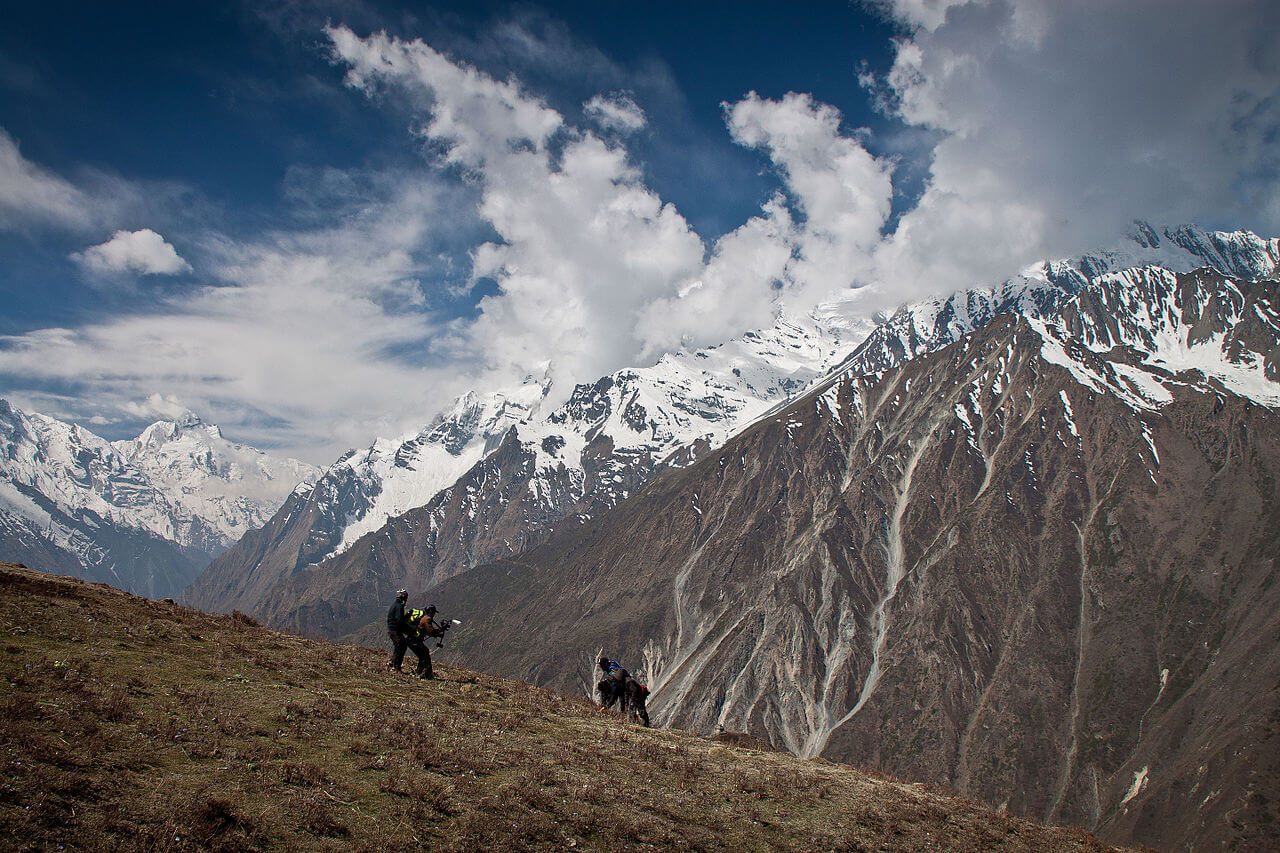
If you have a few extra days, you can extend your Manaslu trek for another week by adding Tsum Valley Trek to your itinerary. The trail to Tsum Valley is even more isolated and remote compared to that of Manaslu Circuit.
Tsum Valley Trek offers an authentic experience with ancient art culture, Himalayan valleys, and spectacular mountain scenery. This trek rewards the incredible mountain spectacles with Ganesh Himal, Shringi Himal, and Boudha Himal surrounding the trail.
Tsum Valley Trek is an opportunity for local experiences as the trek is well-known for its warm hospitality and traditional homestays. You’ll also get an insight into Tibetan Buddhism as you will be exploring the ancient Buddhist monasteries, including Milarepa’s Cave, Mu Gompa, and Rachen Gompa.
Side Trips of Manaslu Trek
If you have a day or two, Manaslu Trek offers plenty of marvelous side trips you can take along with the standard route. Manaslu Circuit has a few more remote and off-the-beaten destinations where only a few dedicated travelers make their ways. Therefore, if there is enough time, we highly recommend you consider some of these options along the trail.
1. Manaslu Base Camp (4,848m)
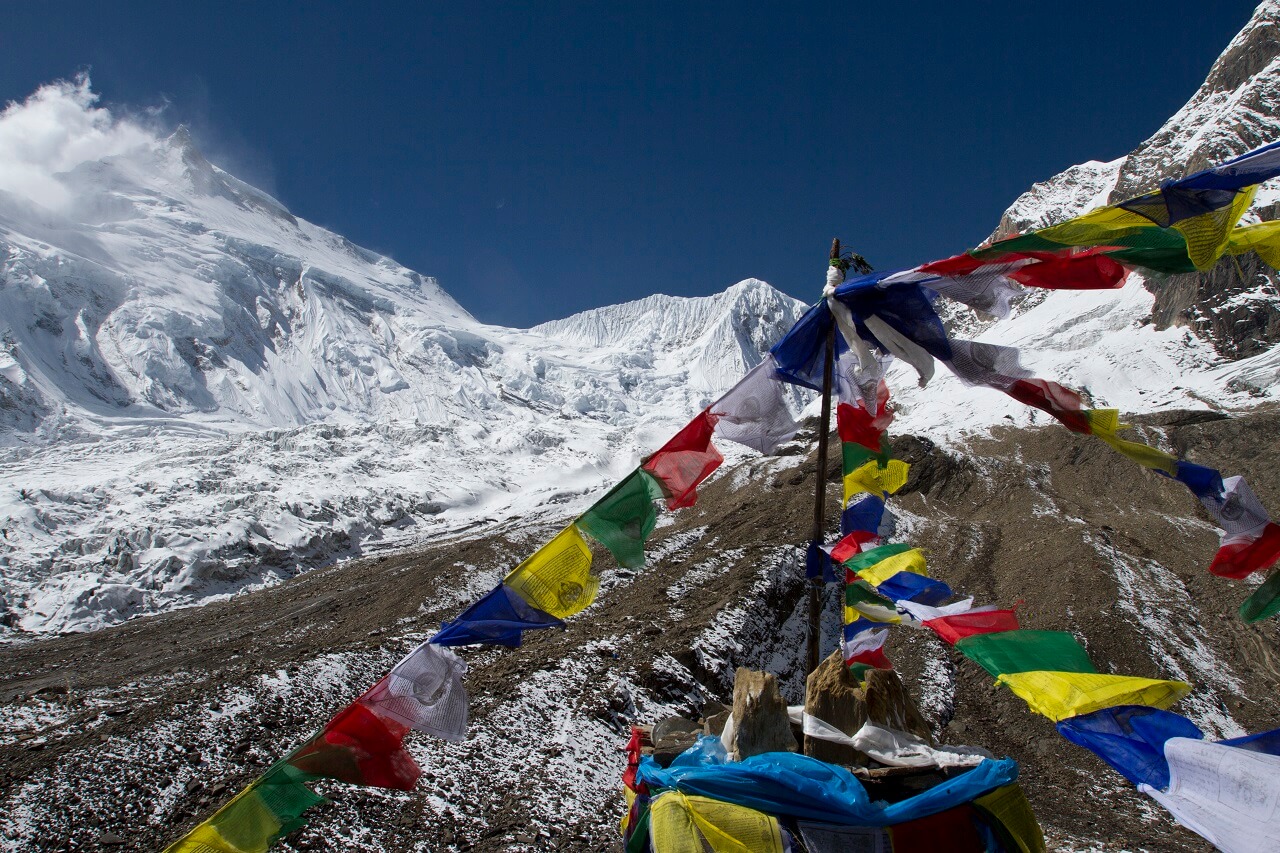
Manaslu Base Camp is an excellent side trip of Manaslu Circuit Trek. The entire trip to the base camp of the world’s 8th highest mountain takes about 6 hours for average trekkers.
The trail to the Manaslu Base Camp diverts from the Manaslu Circuit route in Samagaon. There are two different alternatives to go to the base camp. The first one is to take the course to Birendra Lake, then head to the base camp. Another one is to walk out of Samagaon, take the left lane, and head directly to the base camp. A small Chorten surrounded with colorful prayer flags marks the Manaslu Base Camp.
2. Birendra Lake (3,620m)
Birendra Lake is by far the most popular side trip in Manaslu Circuit Trek. Formed from the melting ice of Manaslu, you can reach this glacial lake in about half an hour from Samagaon.
Most of the trekkers visit this pristine lake on the acclimatization day in Samagaon. To visit this lake, you’ll have to follow the trail opposite to Mount Manaslu Hotel. The roads to the lake can be slightly tricky, so keep your eyes on the path.
3. Kalmachum Lake (3,800m)
Kalmachum Lake, also known as Kal Tal, is a high altitude lake situated at an elevation of 3,800m. You’ll have to hike for an entire day from the village of Prok to reach this lake.
Dense forests with Langurs, fir, and pine surround the trail to Kalmachum Lake. The first few hours of the hike is steep uphill, which later turns to a gradual walk until you arrive at the lake. You can see the splendid view of Prok and Kok village from the top.
4. Hinang Gompa (3,100m)
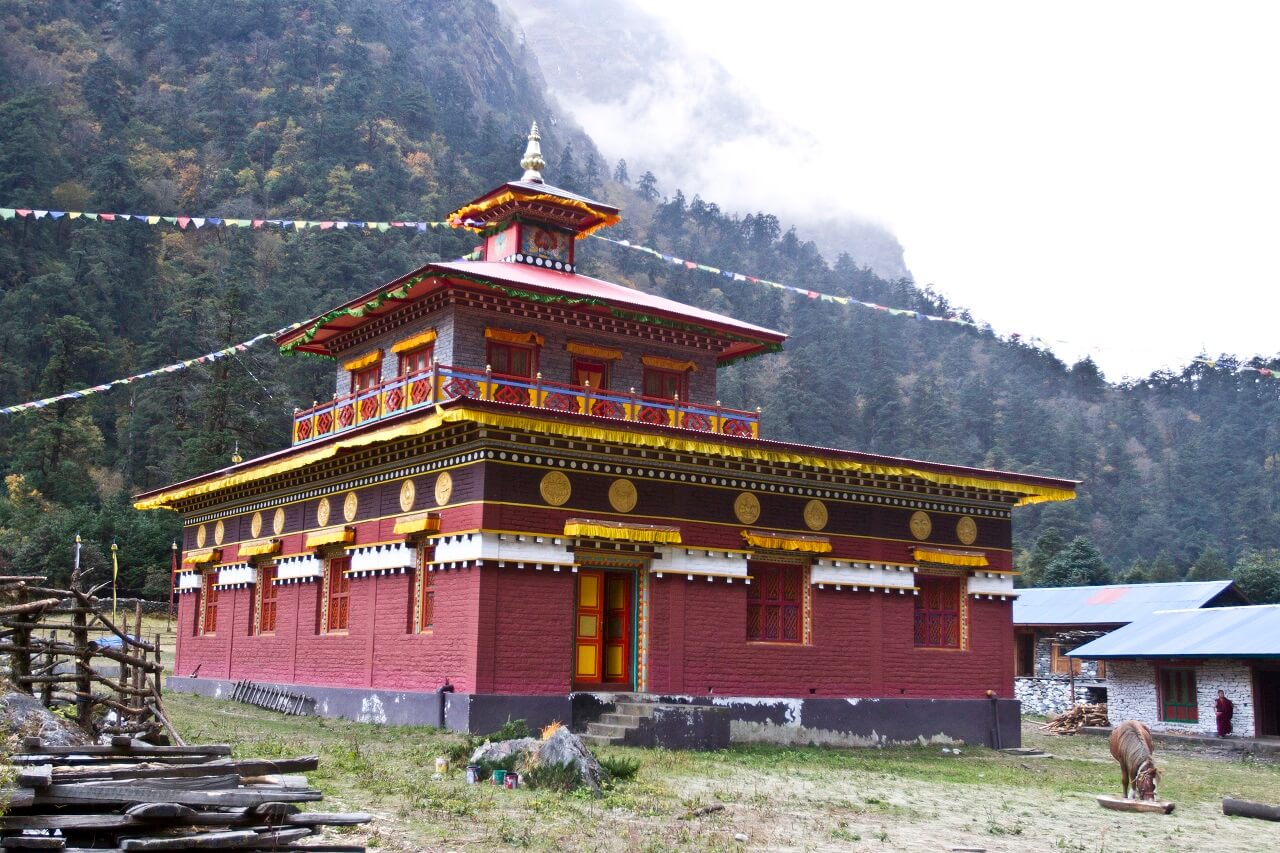
Hinang Gompa is a beautiful monastery that sits on the top of a hill decorated with Mt. Himalchuli in the backdrop. The road to this monastery diverts from 20 minutes away from Lihi village.
This monastery is a decade old and currently also serves as a Lama school. If you hike further up from the monastery, you’ll also get to visit Hinang glacier.
5. Serang Gompa (3,100m)
Located in the foothills of Shringi Himal, Serang Gompa is one of the most secluded and spiritual monasteries in Manaslu Circuit. Since the valley surrounding gompa is said to be the place where Guru Padmasambhava once meditated, it is one of the must-visit side trips in the trek.
Shringi Himal on the backdrop also carries a religious significance. Dense woodland, beautiful Chorten, Mani walls, and suspension bridge encompass the route to the monastery.
Best Time to Trek Manaslu Circuit
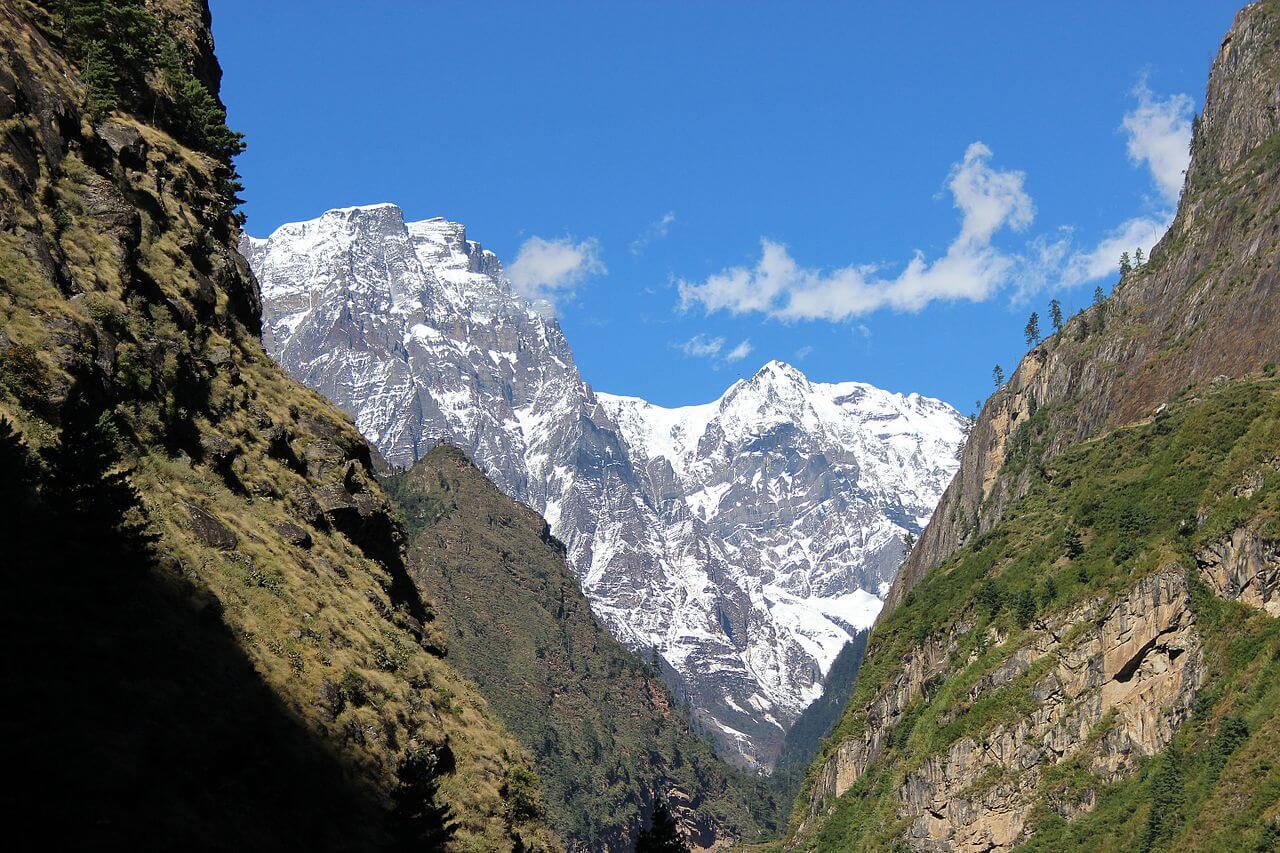
The best time to trek in Manaslu Circuit is during Spring (March to May) and Autumn (September to November). Since the weather conditions during these seasons tend to be moderate, and the skies are usually clear, people consider it to be the most favorable time to go trekking in Nepal.
Traveling during Spring and Autumn means the temperature is relatively moderate for walking and tends to remain more stable. You also enjoy the marvelous views of the mountains and landscapes as the skies remain clear even during the days.
Unlike most of the treks in Nepal, Manaslu is not a year-long trekking destination. Since you’ll be walking through the landslide-prone areas, it is not advisable to trek to Manaslu during the Monsoon (June to August).
Winter (December to February) are usually cold and snowy. You’ll have to walk through the moraines of the glaciers and cross over Larkya La Pass on this trek. Therefore, trekking in winter will be quite tricky. So, it is not advisable to trek to Manaslu during this time of the year.
Here’s a table with average temperature and rainfall details throughout the year for locations en-route to Manaslu Circuit:
Manaslu Circuit Trek Difficulty
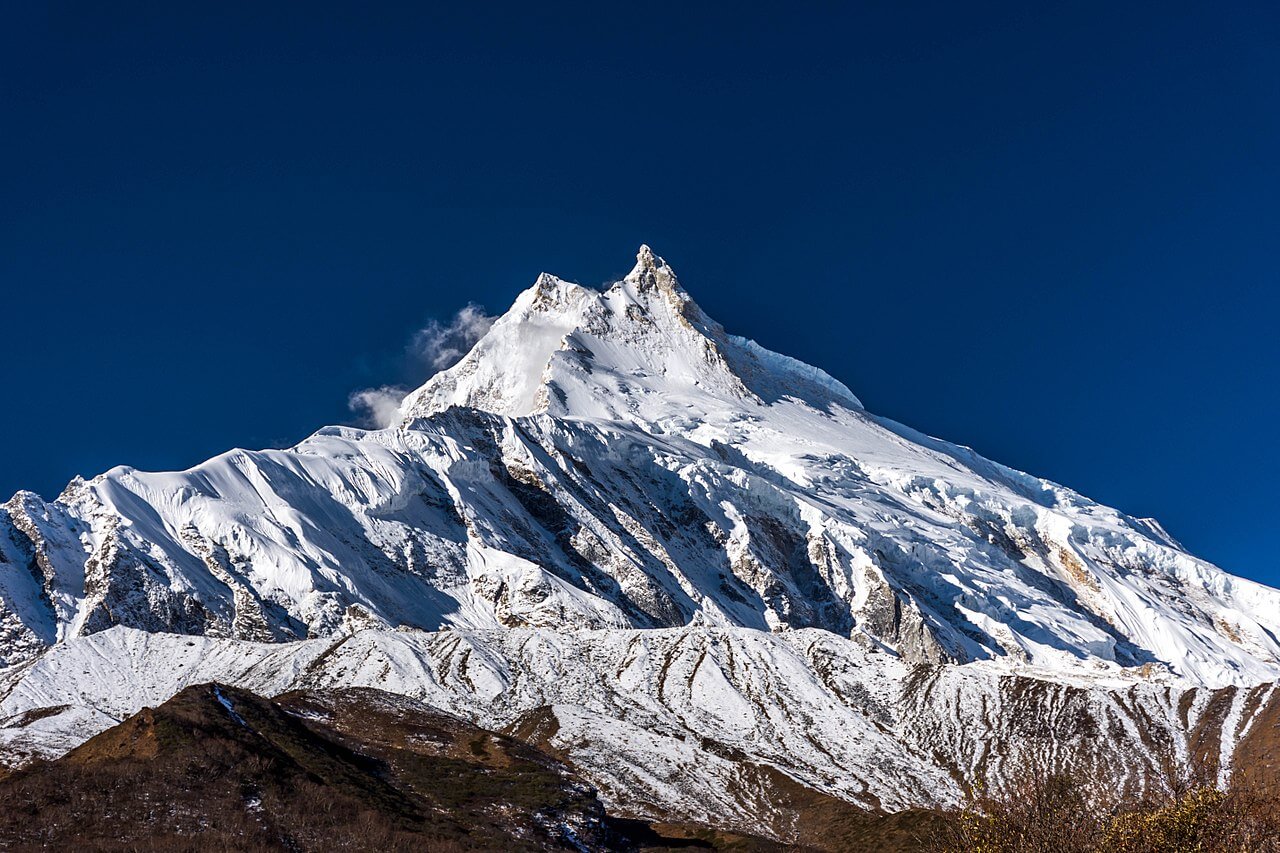
Manaslu Circuit Trek is a wild and remote adventure destination in the high Himalayas of Nepal. This trek is considered to be relatively strenuous and challenging as the trekkers will have to hike through rustic villages, diverse terrains, moraines, and Himalayan passes.
The trek covers approximately 177 km of the total distance. On the standard 18-days itinerary, you’ll have to walk around 10-12 days averaging 15-20 km per day.
This trek also covers massive altitudinal variations, starting from 815m at Soti Khola to 5,135m at Larkya La Pass. The biggest challenge of the entire trek is to cross the Larkya La Pass. Therefore, it is advisable to be cautious regarding the altitude and make sure to know the symptoms of Acute Mountain Sickness (AMS).
The weather in the Himalayas is unpredictable and harsh, especially in the upper reaches of the trek. Although the days are moderately warmer, the temperature drops extensively during the nights. Therefore, it is highly recommended to prepare yourself for the harsh weather. A waterproof hiking boot, decent down jacket, and a proper sleeping bag are highly advisable while trekking in Manaslu.
Physical fitness and mental preparation should be highly considered to take on the challenge of Manaslu. Before committing yourself to the adventure, make sure to train well, and engage yourself in the cardio-related activities as much as possible.
Manaslu Trek Permits
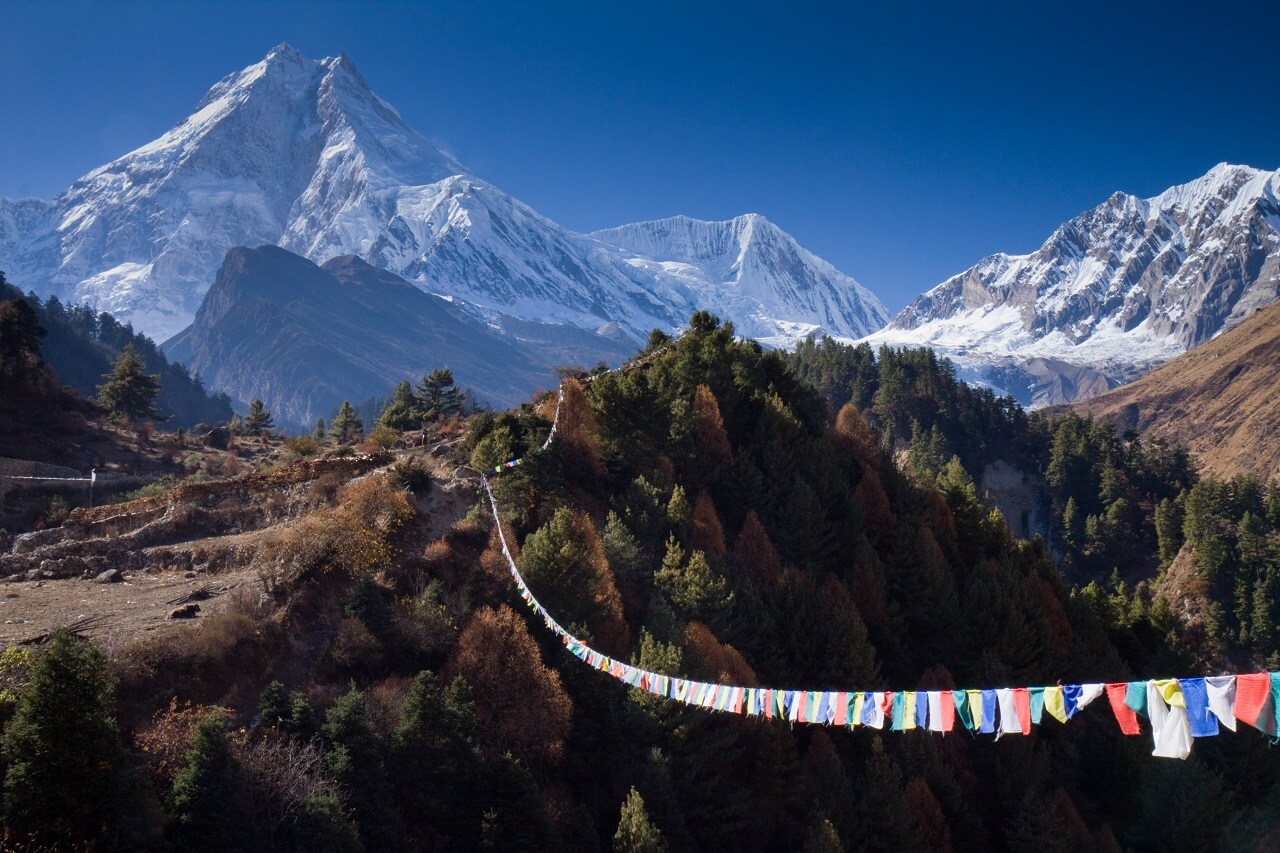
To maintain sustainability, the government of Nepal has declared the Manaslu region as a restricted area applicable from Jagat to Dharapani. So, you need to acquire a special restricted area permit (Manaslu RAP) while trekking to Manaslu. In the Autumn season (September to November), the cost of the special permit for Manaslu is $70 per person for the first week with an additional fee of $10 each day after that. For the rest of the year, the cost drops to $50 for the first week with an additional fee of $7 per day. You do not require a printed photograph for the special permit as the photograph will be uploaded online and printed out with the permit.
You will also need to acquire MCAP (Manaslu Conservation Area Project) Permit as well as ACAP (Annapurna Conservation Area Project) Permit for this trek. Both ACAP and MCAP cost about $27 per person for international trekkers. For SAARC nationals, the cost of both the permits is only $2. The price of these permits remains the same throughout the year. Both these permits require printed photographs.
You can issue the restricted area permit (Manaslu RAP) from the Department of Immigration. You can fill up the permit form online at http://online.nepalimmigration.gov.np/trekking-permit .
You can issue the MCAP and ACAP at following Entry Permit Counters:
- Nepal Tourism Board, Kathmandu – ACAP & MCAP
- Nepal Tourism Board, Damside, Pokhara – ACAP
- ACAP Entry Permit Center, Besisahar, Lamjung – ACAP
Usually, you can not issue the entry permits from any other counters in the trail. However, in exceptional circumstances, other permit counters also grant the licenses with a 100% additional charge.
Additionally, if you choose to extend your Manaslu Circuit Trek with Tsum Valley, you’ll have to issue a separate restricted area permit. It will cost you $40 per person for the first seven days with an extra $7 each after the week during the Autumn. During the rest of the year, the cost drops to $30 per person for the first week with an additional $7 each.
Also, trekking independently is not allowed in the Manaslu region. The government rules state a minimum of 2 trekkers along with a guide/porter is mandatory to do the Manaslu Circuit Trek.
Insurance for the Trek
We recommend you to get travel insurance while trekking in Manaslu Circuit Trek. Unlike most of the trekking routes in Nepal, trekking in Manaslu is quite a challenge and requires serious commitment.
Since this trek is remote and isolated, there are no proper health posts on the trail. If any trekkers get into severe medical conditions, the only way out of this trek is helicopter evacuation.
Make sure to buy individual travel insurance that comprises all the necessary medical costs, helicopter evacuation, trip cancellation charges, theft, and natural disasters. If you’re looking for decent travel insurance, we recommend you to buy it from World Nomads.
Guided vs. Independent Trek
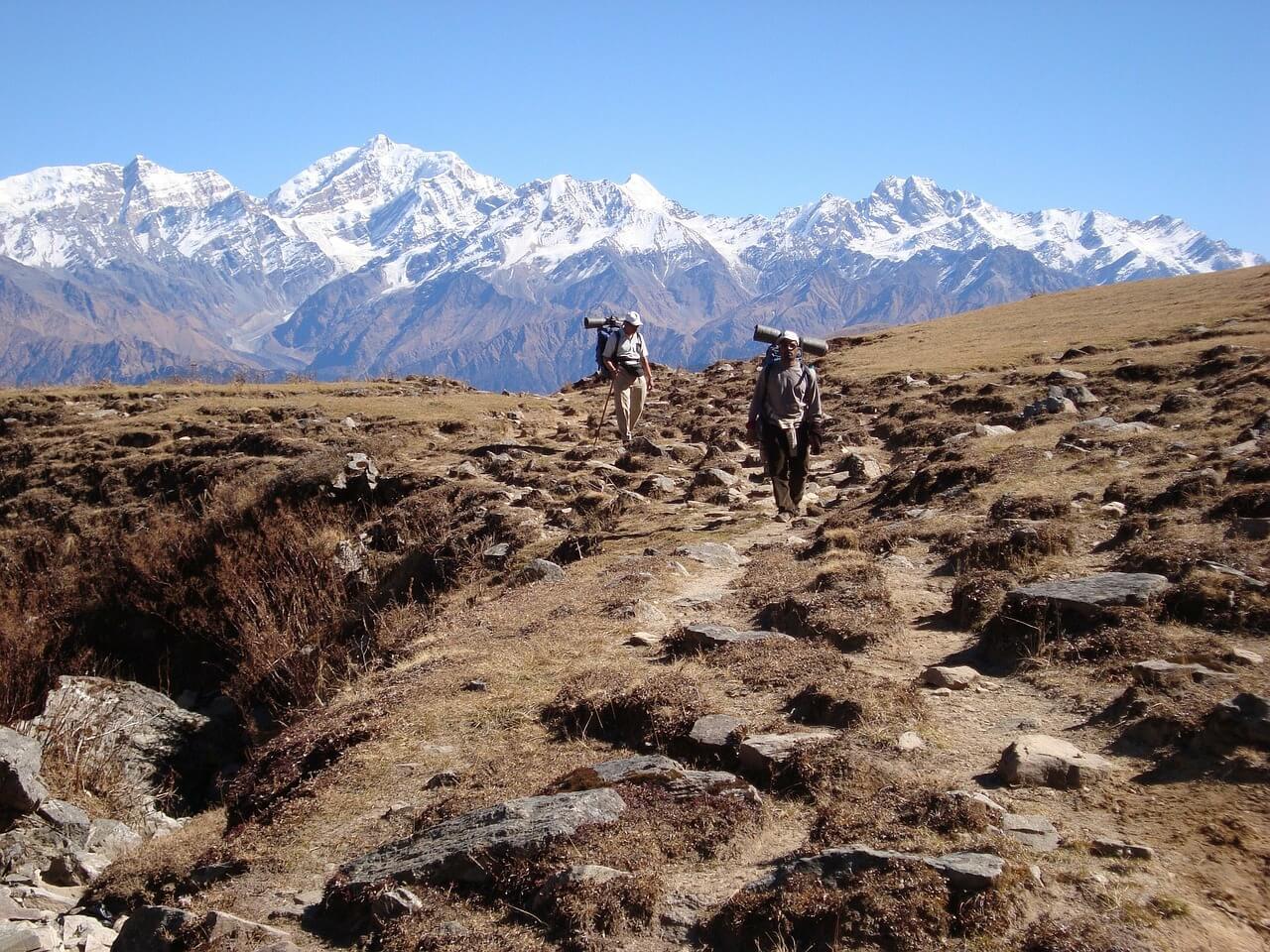
Manaslu Circuit Trek falls under the restricted area, which requires a mandatory trekking staff, either a registered guide or porter cum guide, to trek in this region. The Government of Nepal has declared that any foreign trekkers trekking to the Manaslu region must have a special permit to travel the area.
As per the policies, a minimum of two trekkers with a registered trekking guide is mandatory for this trek. Therefore, trekking independently in Manaslu Circuit is not possible for foreign tourists.
The trail to Manaslu is remote and challenging with very few dedicated trekkers making their way in this region. Additionally, there are a few places, marked landslide-prone zone. Therefore, it is essential to have a guide while trekking in Manaslu Circuit.
However, if you’re willing to go without a guide, the only alternative is to hire a porter cum guide. While hiring a porter-guide may cost you a little cheaper than registered guides, most of them do not speak fluent English.
Accommodation and Food
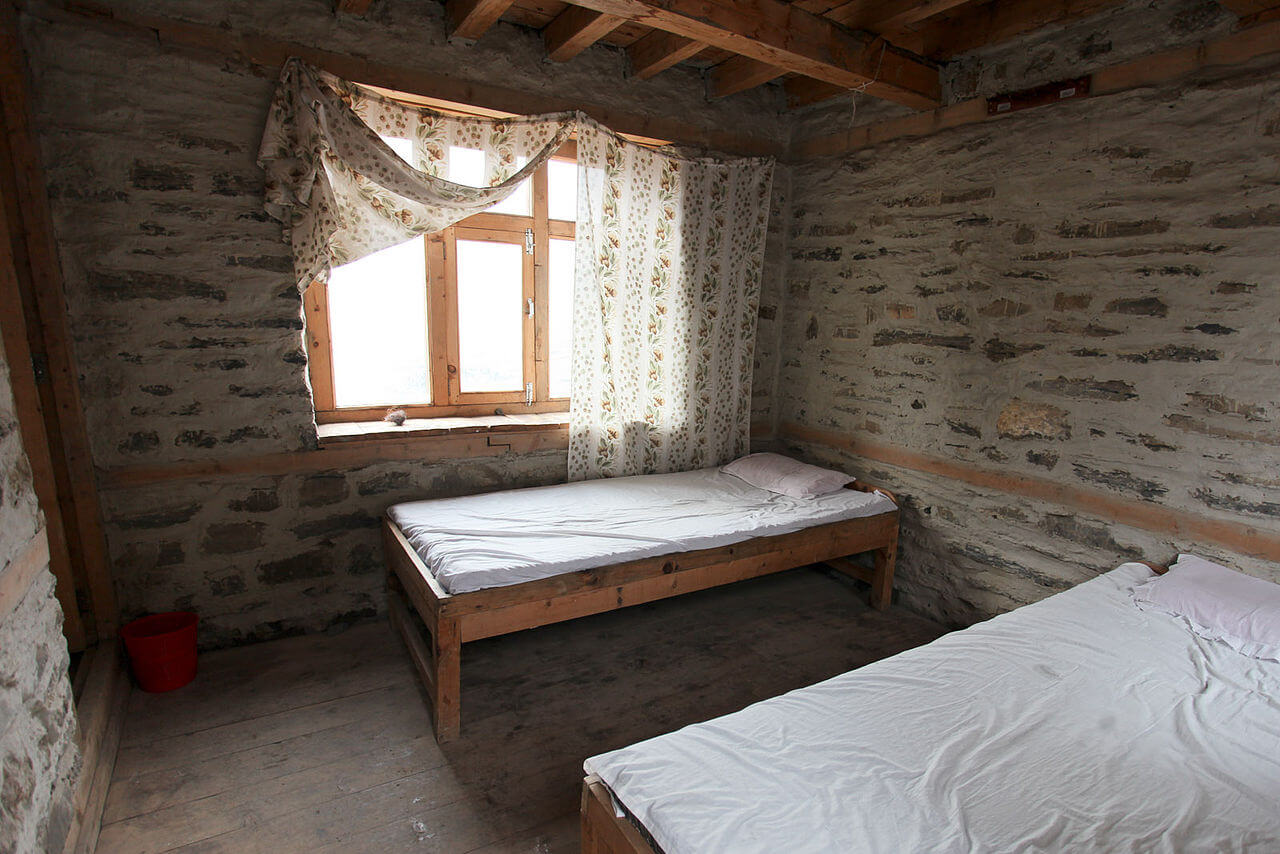
Teahouses and local lodges facilitate the entire trail of Manaslu Circuit, except in Dharmasala. In Dharmasala, you may occasionally have to sleep under a tent. The local communities of the region operate the teahouses and lodges in the Manaslu region.
The rooms are quite basic, with two standard single beds. The toilets are mostly shared and are outside the teahouse at some places. The heating facility is only available in the dining hall.
Unlike Everest and Annapurna treks, there are no luxury hotels in Manaslu. Most of the lodges do provide a hot shower facility; however, you may have to pay extra money for the service.
The teahouses of Manaslu also provide a menu with a variety of western food. The food somewhat costs cheap in the lower reaches of the trek and increases along with the elevation rise. Also, the food choices on the menu will get limited in the higher section of the trek.
Although the menu offers a variety of western foods, Dal Bhat is the most popular food during the trek.
Manaslu Circuit Trek Cost
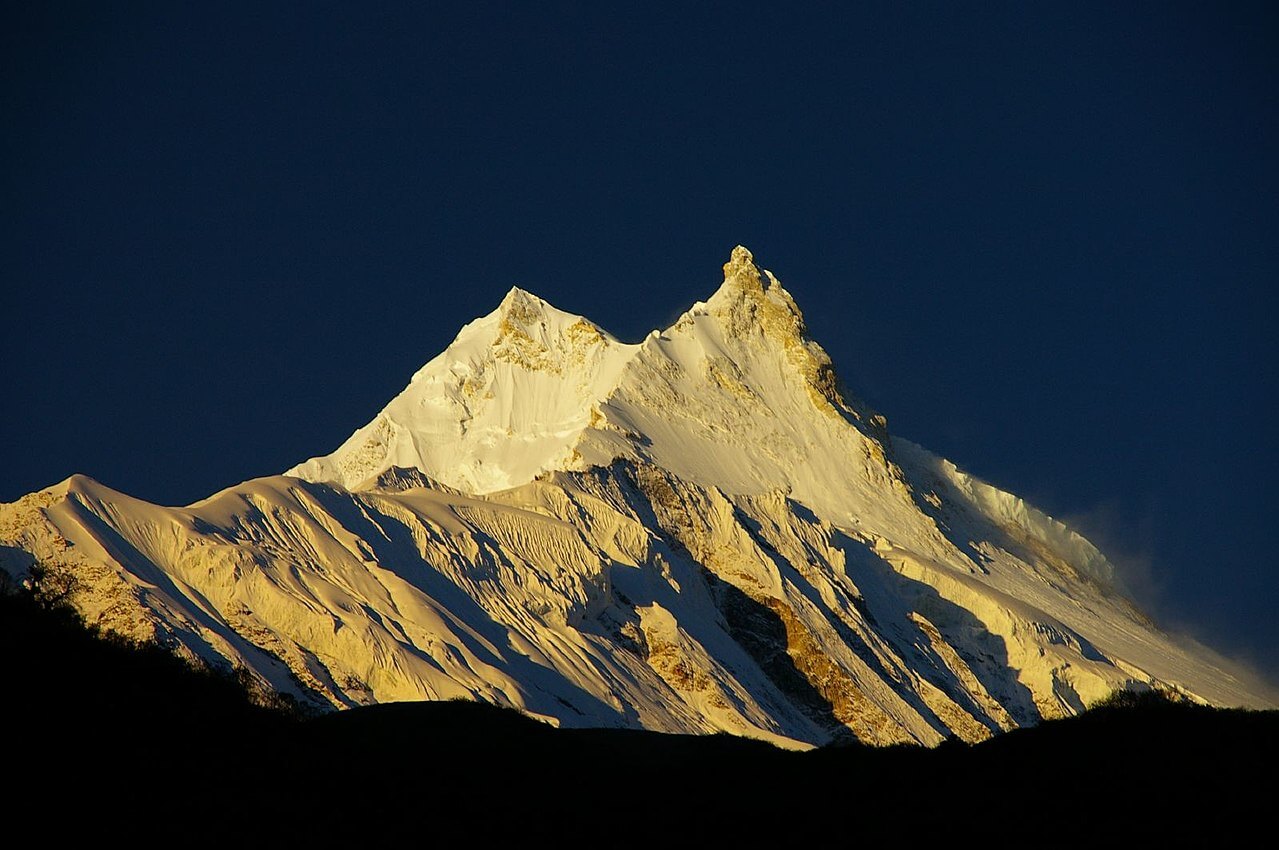
The cost of Manaslu Circuit Trek depends upon various factors such as duration, mode of transportation, lodging, and food. Although this trek is slightly expensive compared to Langtang Valley or Annapurna Base Camp, the remote and untouched beauty of Manaslu is worth every penny.
Since Manaslu trek lies in the restricted zone, you need a restricted area permit to enter the region. The special permission for Manaslu is $70 per person for one week. After the first week, it’ll cost an additional fee of $10 each day during the Autumn. However, the cost drops to $50 with an additional fee of $7 each day for the rest of the year. You’ll also need ACAP and MCAP for Manaslu trek, which will cost you approximately $27 each.
Additionally, if you choose to extend your Manaslu Circuit Trek with Tsum Valley, you’ll have to get a separate restricted area permit. The charge of Tsum Valley permits costs $40 per person for the first seven days with an extra $7 each after the week during the Autumn. For the rest of the year, the cost drops to $30 per person for the week with an additional $7 each day.
The teahouses are relatively cheap in Manaslu, costing you as little as $6 to $9 per night with an additional $5 per meal. The local buses to Soti Khola from Kathmandu costs you about $10 per person. However, traveling by jeep is more expensive, costing you roughly $150 to $200 per person.
Since Manaslu Circuit Trek lies in the restricted area, it is mandatory to have a licensed guide or a porter on the trek. A licensed guide will cost you about $20 to $25 per day while porters cost you about $15 to $20 per day. You can hire a porter-guide which will cost you $18 to $22 per day.
Packing List for Manaslu Trek
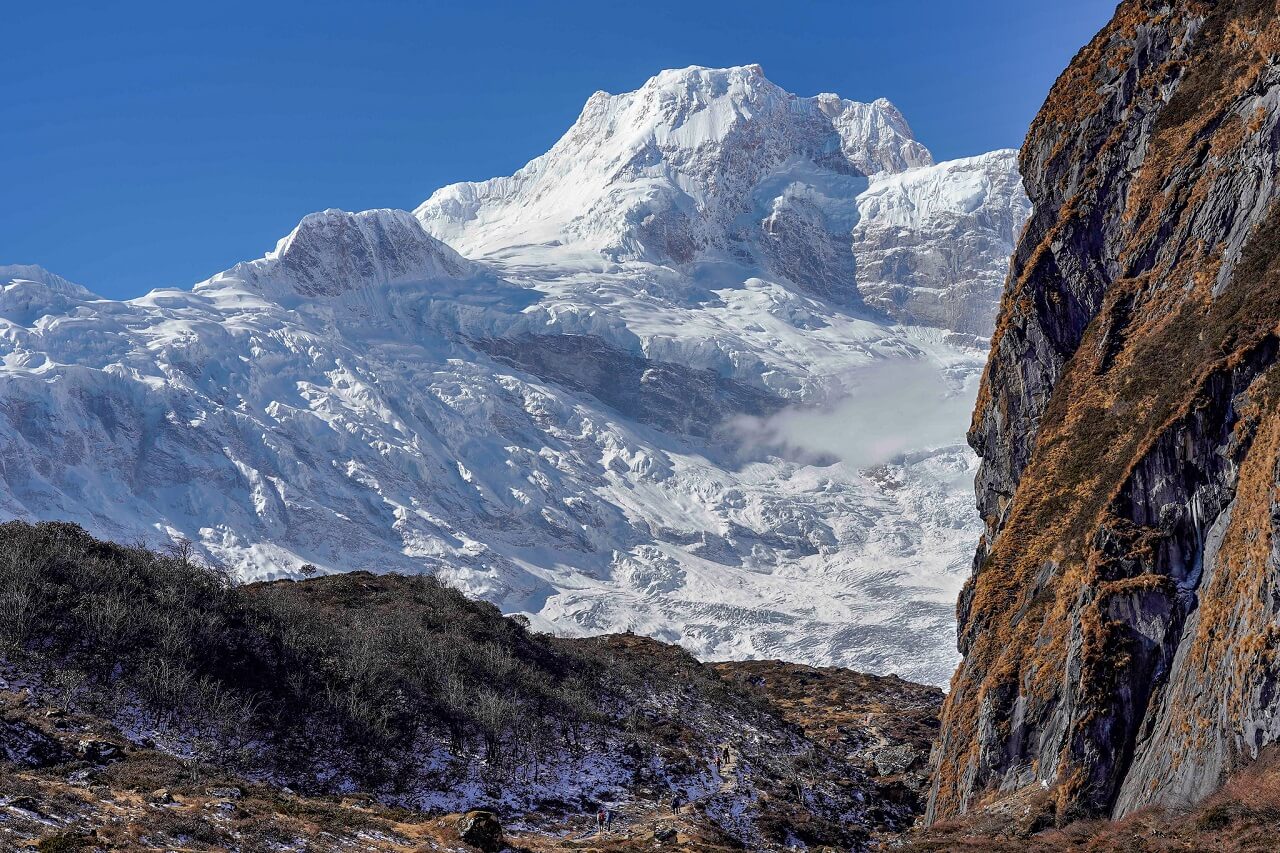
If you’re planning to experience the thrill of trekking to the remote and inaccessible areas of Manaslu, make sure you’re carrying the right equipment. While it is quite a dilemma when it comes to what to pack for the trek, it matters how and when you’re planning to travel.
Since Manaslu does not permit the individual travelers, you’ll have to hire a porter. The porter will carry the substantial portion of the weight, leaving you with the daypack. Hiring a porter does not mean you should be packing everything you can think of for the trek. Although you’ll have someone to help you with the luggage, make sure to pack your bags with right gears.
Here are some of the essential gears you need to pack while trekking to Manaslu Circuit:
- Duffel Bags
- Trekking Shirt: 5-7 shirts, make sure to balance both long and short.
- Trekking Trousers: We recommend you to pack at least 2 trekking trousers along with a couple of shorts.
- Base Layer: Make sure to pack a couple of wool base layers to keep yourself warm in the upper reaches of the trek.
- Insulation Layer: A decent quality of fleece jacket will do!
- Outer Layer: Warm down jacket that will mainly be used in the higher altitudes when the weather gets extreme.
- Waterproof Shell Jacket: Pack a pair of waterproof jackets as you may encounter rain in the trail.
- Breathable Underwear: We recommend you to carry 5-6 pairs of moisture-wicking underwear.
- Hiking Boots: Invest in high-quality waterproof hiking boots. Make sure the boot is lightweight and comfortable.
- Trainers/Sandals: It is handy to carry a pair of either trainers or sandals to wear them in the teahouses.
- Hiking Socks: You should carry 4-6 pairs of hiking socks. Any brand or label works as long as they are breathable and moisture-wicking. Do not bring cotton socks as they soak easily and may lead to blisters.
- Thermal Socks: We recommend you to pack at least a pair of thermal socks to keep your feet protected from the cold in the higher altitudes.
Head Wears:
- Sun Protection Hat: It is mandatory to carry a protection hat to keep your face protected from the harsh sun.
- Beanie: An absolute must to keep yourself warm, especially during the evening and night.
- Buff/Neck Gaiter: This small piece of gear comes in handy to protect your neck from the cold winds and also helps you stay protected from the dust.
- Inner Gloves: Pack light inner gloves as they can be useful when the temperature is moderate.
- Outer Gloves: You’ll be wearing them in the upper reaches of the trek. Outer gloves need to be insulated, warm, and waterproof.
Sleeping Bags:
Sleeping bags are hands down one of the most crucial gears when it comes to trekking in Manaslu region. With basic rooms and sleeping facilities, you can never rely on the teahouses for warm, decent blankets.
In the lower altitudes, this may not seem much of a problem, but once you get above 3,000m, the temperature even inside the teahouses can get cold.
Therefore, investing in a high-quality, 4-season sleeping bag is an absolute must! If you’re not willing to any chances, buy a sleeping bag that has the minimum rating of -10 degrees Celsius.
Important Accessories:
- Trekking Poles
- Water Bottle
- Basic Medical Kits
- UV Protection Sunglasses
- Water Purification Tablets
- Hand Sanitizers
- Sunscreen/Lip Balm
- Trekking Towels
- Portable Chargers
Network Information
If you’re willing to stay connected with your family and friends, we suggest you use CDMA networks over any other service providers in the region. Although NTC and Ncell are the two major telecommunication service providers in the country, they barely come to work while trekking to Manaslu.
One thing you should know beforehand with CDMA networks is that they do not work with every other mobile phone. Therefore, you should buy a phone in Kathmandu to make the most out of their service. The CDMA phones are available in nearly all the mobile shops in the city, and they come quite cheap.
Useful Tips
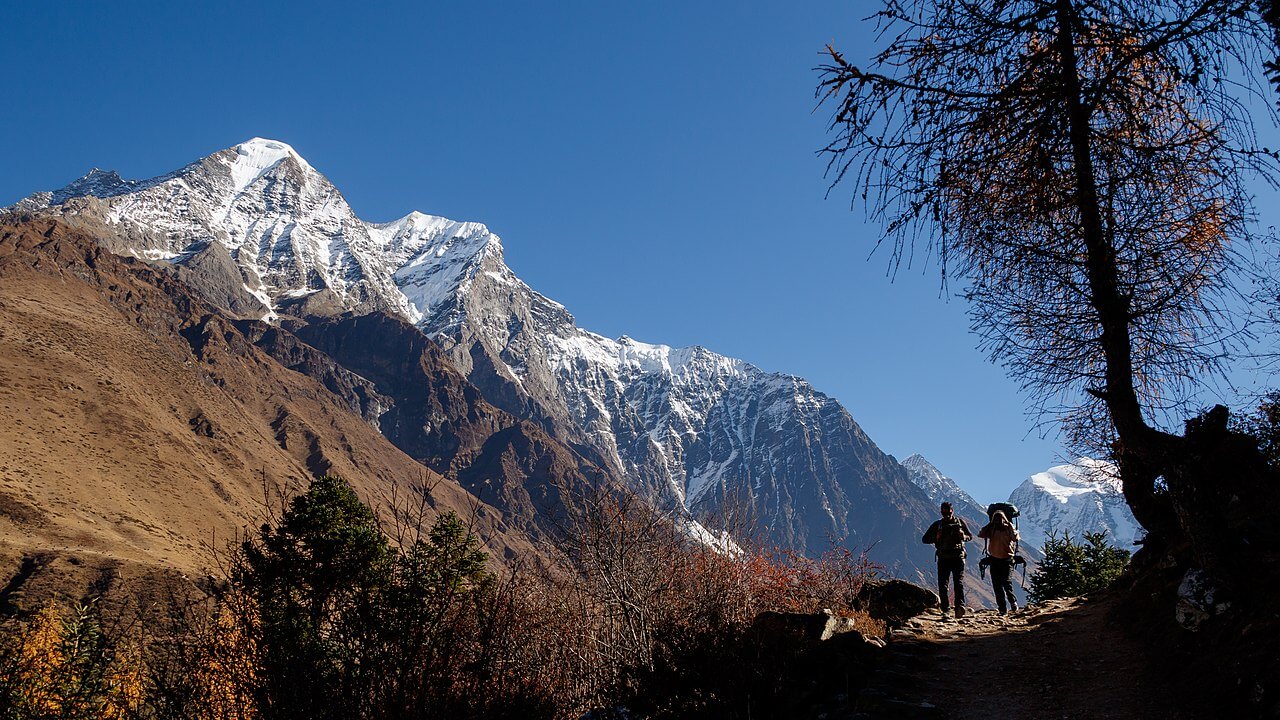
- Manaslu Circuit is one of the most remote and strenuous treks in Nepal. Please make sure to prepare yourself both physically as well as mentally before heading off to the wild.
- Altitude is a constant threat. As the highest elevation point of the trek is whooping 5,135m, it is essential to acclimatize well, take the necessary precautions, and stay hydrated throughout the trail.
- The trails in the Manaslu region are not appropriately marked. Be aware of the route. Always walk with a guide/porter and do not wander off alone in the trail.
- There are several landslide-prone areas in the region. Be careful and watch out for the rocks!
- The trail can be slightly risky when wet and snowy. Therefore, invest in high-quality hiking boots and make sure to pack well for the trek.
- Drinking water may not be safe to drink. A water purifier will be great to have.
- Not all tea houses provide charging facilities. Carrying a portable charger would be handy.
Accommodation in Kathmandu
Thamel is the major tourist hub of Kathmandu. Surrounded by hotels, travel agencies, shops, and restaurants, here you can find accommodations for any budget from cheap hotels to luxury hotels.
However, there are plenty of places outside Thamel where you can find decent hotels in Kathmandu. Some of the accommodation options in Kathmandu are:
Recommended Travel Agencies for Manaslu Circuit Trek
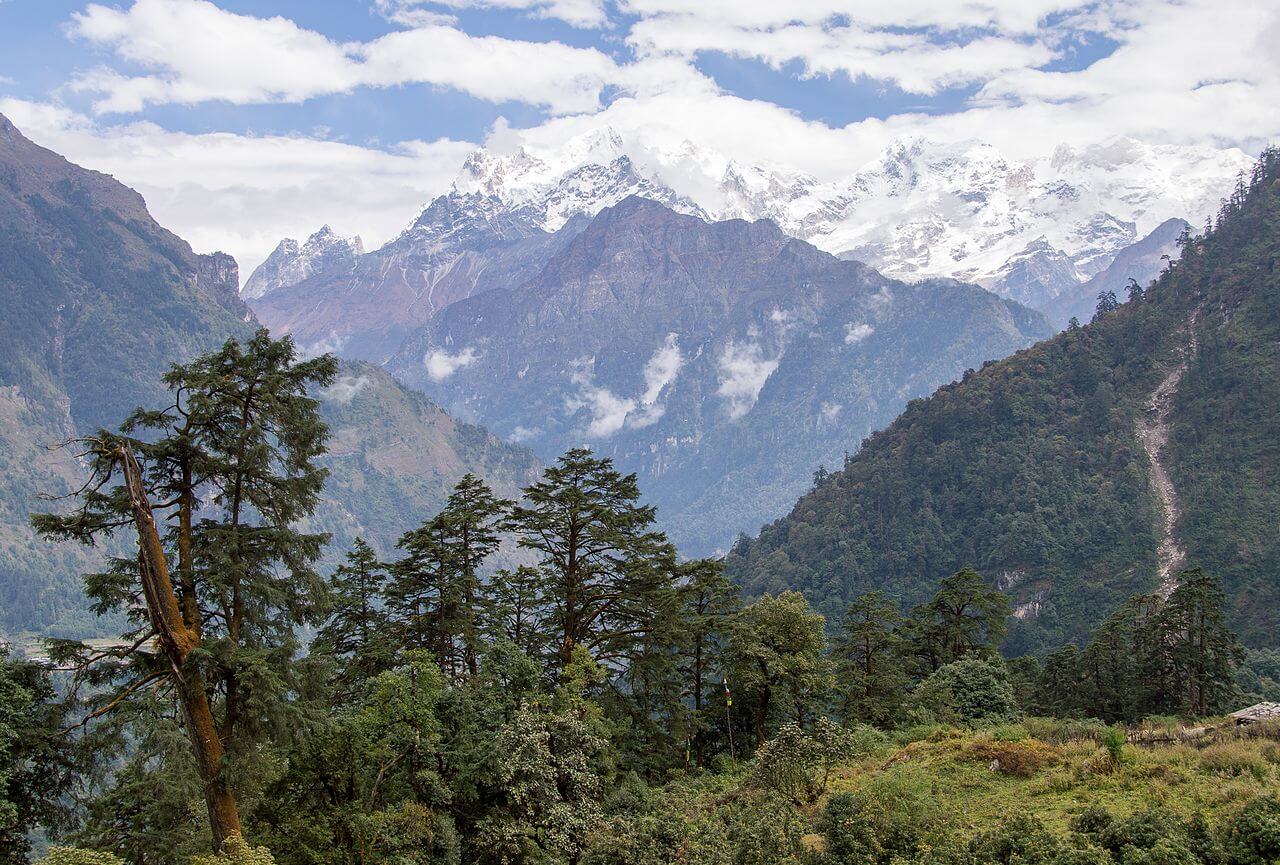
There are thousands of trekking companies that operate the Manaslu Circuit Trek in Nepal. Make sure you’re traveling with an authorized trekking company while trekking in Nepal.
While trekking in the remote and challenging trail of Manaslu Circuit, it is essential to book the trip with an experienced company that ensures breathtaking experience while concerning the clients’ safety.
Some of the best trekking companies in Nepal for Manaslu Circuit Trek are:
- Himalayas on Foot
- Magical Nepal
- Mosaic Adventure
- Nepal Eco Adventure
Recommended Books and Guidebooks
- Manaslu: A Trekker’s Guide
- Lonely Planet Nepal (Travel Guide)
- The Rough Guide to Nepal
- Birds of Nepal
- The Climb: Tragic Ambitions on Everest
- Into Thin Air: A Personal Account of the Mount Everest Disaster
- High Adventure
- The Snow Leopard
1. Is Manaslu Circuit Trek doable?
Although Manaslu Circuit Trek is strenuous and challenging trekking routes in Nepal, this trek is entirely doable. However, you have to maintain a certain level of physical fitness to do this trek. Be aware! Since this is a high altitude trek, you’re also at risk of suffering from Acute Mountain Sickness (AMS).
2. Can I do the Manaslu Circuit Trek solo/independently?
No, the government of Nepal does not permit solo or independent trek in the Manaslu region. As per the government’s rules, it is mandatory to have a minimum of two trekkers accompanied by either a guide or a porter to trek in the Manaslu region.
3. What is the standard of accommodation in Manaslu?
The teahouses and lodges in Manaslu Circuit are basic with two single beds and no heating facilities. The toilets are standard and on sharing basis throughout the trail. Most of the tea houses provide a hot shower but will charge you extra bucks for it.
On the upper reaches of the trek, the accommodations might get draughty and dark. Therefore, we recommend you bring a sleeping bag and a headlamp for this trek. Teahouses are available throughout the trek with the only exception in Dharmasala. At Dharmasala, you may have to spend the night in a tent.
4. Is it safe to drink water in the trek?
No, the water in teahouses is mostly from tap or streams, which is not safe to drink directly. Bottled water is also available throughout the trail. However, the bottled water is slightly expensive and adds more trash on the trail. Therefore, we highly recommend you to carry a water purifier or tablets.
5. Do I need travel insurance before trekking to Manaslu?
Yes, travel insurance is highly advisable while trekking in Manaslu. Since Manaslu is a remote and isolated trek, we suggest you have specific travel insurance for this trek. Make sure your travel insurance covers the cost of necessary medical facilities, theft, natural disasters as well as helicopter evacuations.
Manaslu Circuit Trek is an excellent alternative to the commercial trekking routes like Annapurna and Everest Base Camp. Tucked in the remote region in the Himalayas of Nepal, Manaslu is a sanctuary for adventure enthusiasts and avid trekkers.
As this is one of the most demanding treks of Nepal, this trek demands a serious commitment and physical fitness.
Similar Posts
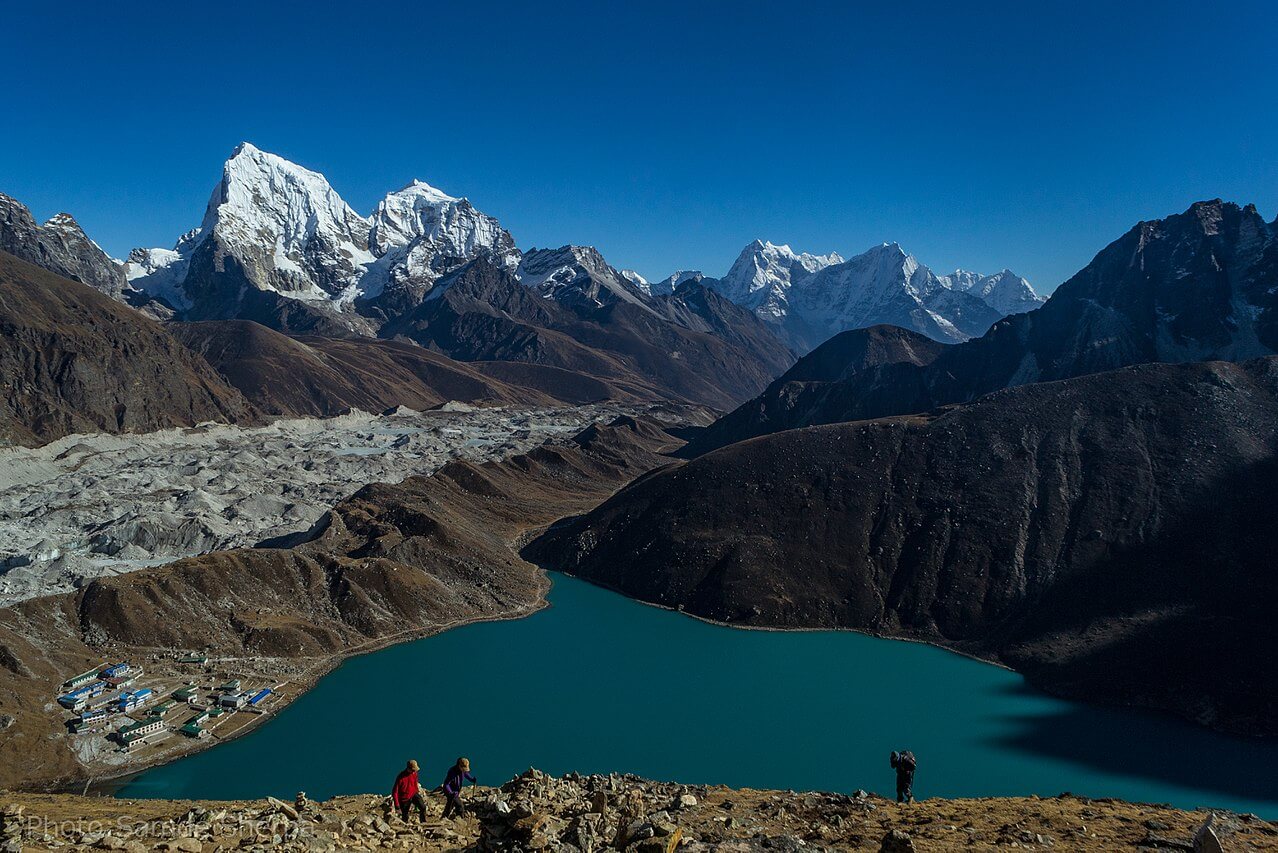
Gokyo Ri Trek
Gokyo Ri Trek, the best alternative trail to the Everest Base Camp Trek, offers exceptional views of the Himalayan peaks along with lakes and glaciers. Gokyo Ri Trek is a moderate trek in the high Himalayas of the Everest region. Instead of traveling to the more commercial Everest Trek, trekkers often choose this itinerary to…
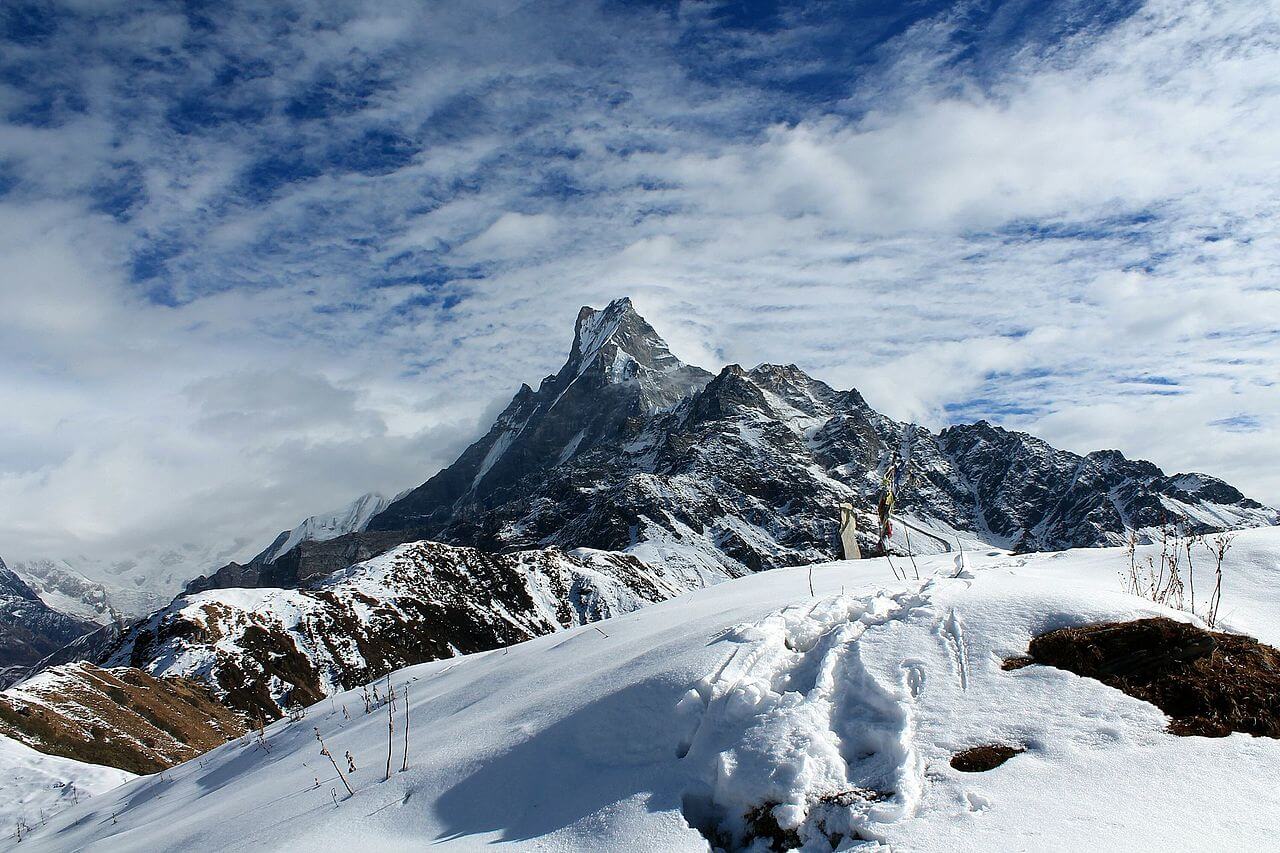
Mardi Himal Trek
Mardi Himal Trek is a hidden gem for the dedicated trekkers and backpackers. Located eastwards of the classic Annapurna Base Camp, this trekking route is yet to witness a large crowd like other commercial treks in Nepal though it officially opened for all in 2012. The richly diverse terrains of Mardi Himal takes you across…
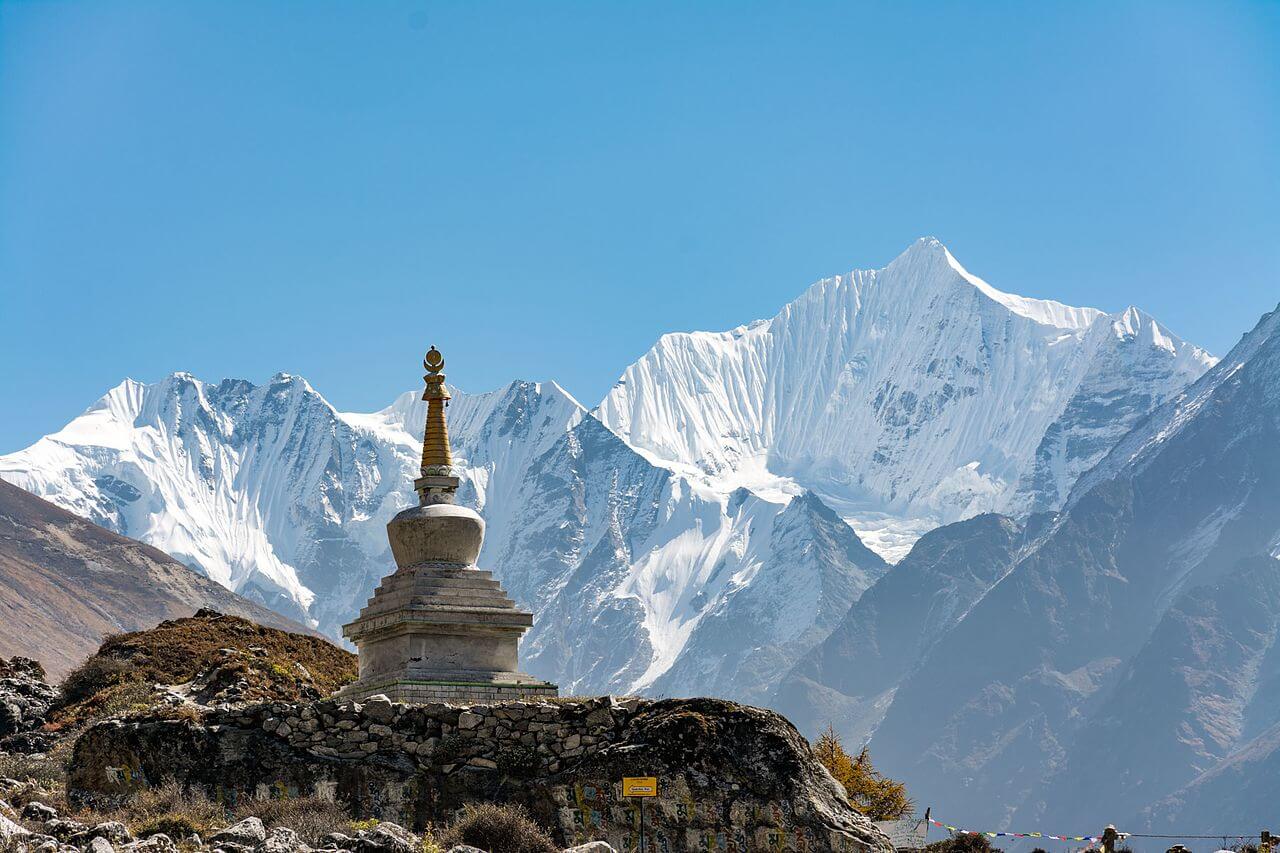
Langtang Valley Trek
Langtang Valley is a classic trekking destination, located only 61.8km away from aerial distance, north of Kathmandu. Although the Langtang Valley Trek is relatively short, accessible, and cheap, the trails are quieter with less number of trekkers compared to other classic trekking destinations in Nepal. The trek is ideal for both experienced trekkers as well…
Himalaya Trail
Facts About Mt. Everest
Trek to Everest Base Camp
Best Time to Visit
Weather & Climate
Kathmandu Airport Guide
Top Destinations in Nepal
One Week in Nepal
Tipping Guide
Getting Around
Top Things to Do in Nepal
Complete Guide to Kathmandu
Top Things to Do in Kathmandu
Top Things to Do in Pokhara
Sacred Sites
Amazing Festivals
Top National Parks
Must-Try Food
Annapurna Circuit
Manaslu Circuit
How to Trek Nepal's Manaslu Circuit
Tens of thousands of people flock to the Himalayas each year to hike among the highest mountains in the world. Stretching across Nepal, China, Bhutan, India, and Pakistan, the mountain range boasts incredible trekking routes. The most popular of these are the Annapurna Circuit and Everest Base Camp , but there are other options as well, the best of which is Nepal's Manaslu Circuit.
Opened to foreigners in 1991, the Manaslu Circuit is often referred to as the "new Annapurna Circuit," reminiscent of what the Annapurna Circuit was like before it got busy. The route makes its way around Manaslu—the 8th highest mountain in the world at 26,781 feet—and encompasses spectacular mountain views, remote villages, and Tibetan Buddhist culture. Here is everything you need to know before embarking on this breathtaking trek in Nepal .
Why Choose Manaslu over Annapurna?
The popular Annapurna Circuit is getting crowded and, with a road running along much of the route, is almost too accessible. The Manaslu Circuit is just to the east of the Annapurna Circuit, yet it still feels relatively untouched.
This trek reaches remote mountain villages and comes close to the border of the Tibet Autonomous Region of China. Due to its location, the Manaslu region is a restricted area, which has stopped it getting too busy. It only began to become popular in 2010 when enough teahouses were built to cover the whole route.
The proximity to the border has also resulted in a strong Tibetan and Buddhist influence. Trekkers will see colorful prayer flags fluttering in the wind, and will pass multiple stupas, mani walls, and prayer wheels in various forms on the paths and in the villages. There are a few monasteries visible on the trek, including Pungyen Gompa at over 13,100 feet. A visit to this monastery is a popular choice for an acclimatization day walk from Samagoan.
What to See on the Manaslu Circuit
As you make your way from 2,300 to 16,752 feet, the landscape of the Manaslu Circuit changes every day. It begins by following the Budhi Gandaki River, from where you can see waterfalls cascading down cliffs. The land changes from rice fields to bamboo forest to alpine forest, finally becoming almost barren at the highest altitudes. The Larkya La Pass, at 16,752 feet, takes you over glacier moraines, frozen lakes, and snow. Glaciers cling to the mountains above the pass.
On the trails, lines of mules navigate precarious ledges carrying supplies to the remote villages. At the higher altitudes, mules give way to yaks, a massive cow-like animal with a thick coat for the freezing mountain temperatures. The local people use these creatures for their milk, meat, and warm coats.
Best Time to Go
The best time to trek the circuit is in October or November, before winter sets in. At this time, clear skies are pretty much guaranteed. September and March to May are also good times to go, but the weather is dependent on the timing of the snow and the monsoon rains.
How to Get There
Any trip to Nepal begins in the capital, Kathmandu. Trekkers usually spend a few nights there before they fly in and out of the country. If you booked a tour, a private jeep takes you northwest to the start of the trek in Soti Khola.
Many people take a public bus to Pokhara after their trek. Pokhara is a beautiful lake-side city with breathtaking mountain views on a clear day. It is closer to the circuit than Kathmandu and a great spot to unwind after an arduous journey.
How Long Does It Take to Hike?
The actual trek, from Soti Khola to Besisahar, is usually done in 12 days. Add on a few days for traveling to and from the trek—as well as time in Kathmandu or Pokhara—and in total the whole trip will take around 17 days. It is possible to spend more time on the circuit if you wish to extend the route or take more breaks along the way.
Note that you will need a decent level of fitness for this hike. You will tackle challenging terrain, walk for five to six hours each day, and reach over 16,000 feet in altitude. The full distance covered on foot is approximately 105 miles.
What to Pack
There are many great lists of what to pack for a trek in the Himalayas, but here are some of the absolute necessities:
- The circuit covers multiple climates, so pack layers for sweat-inducing heat and below-freezing temperatures.
- A pair of sturdy hiking boots is a must.
- A warm sleeping bag for cold nights.
- Water purification tablet s are the best way to ensure you are drinking clean water.
- Stock up on high-energy snacks from home or in Kathmandu as these are very expensive on the route.
- When it comes to altitude, trekkers often take Diamox. Your guide will advise you when it is best to take this and ensure your group takes acclimatization days to prevent altitude sickness .
You can opt for a porter if you don’t want to carry your bags, but it's best to pack light either way.
Do I Need a Permit?
You need a permit to hike this route as it is in a restricted area. You also cannot take the circuit alone; you need at least one other person with you, and you must also be accompanied by a registered guide. The guides are a great addition as they are friendly, set the pace, and provide a wealth of knowledge.
The permits you need are the Restricted Area Permit (RAP), Manaslu Conservation Area Project (MCAP) permit, and Annapurna Conservation Area Project (ACAP) permit. The RAP is $70 per week plus $10 for each extra day; the price drops slightly outside peak season. The MCAP and ACAP are each around $30.
Permits can be obtained through the Nepal Tourism Board office or a registered trekking agent in Kathmandu. If you book a tour, the agent will sort out the permits for you. Either way, you will need to provide four passport photographs.
Do I Need Travel Insurance?
You must have travel insurance for this trip. Most trekking companies won’t take you without it, and will also check that you are covered for the altitude and mountain rescue.
Top Tour Companies
You can arrange your guide and permits on your own or you can book a tour. The tour company will arrange the whole trek for you, making everything easier. Some recommended tour companies are:
- Nepal Eco Adventure
- World Expeditions
Where to Stay
There are teahouses available for every night of your trip; they offer basic accommodation, often a room with two single beds. Pillows and blankets are usually provided, but the nights get cold pretty early on, so a warm sleeping bag is essential. Teahouses don’t have heating, but some light fires in the evening. Be aware that the higher you go, hot water is harder to come by.
The teahouses will also be where you eat breakfast and dinner. As you get more remote, the options for meals diminish. The most nutritious option and the one always available is dal bhat, the staple Nepalese lentil, rice, and vegetable dish.
How to Go Teahouse Trekking in Nepal
How to Trek Nepal's Annapurna Circuit
Five Amazing Hiking Routes Among the High Mountains of the Himalayas
The Best Time to Visit Nepal
The Best 12 Hikes in Nepal
15 of the Most Beautiful Sacred Sites in Nepal
The Top 15 Destinations in Nepal
The Top 20 Things to Do in Nepal
Nepal's Great Himalaya Trail: The Complete Guide
12 Top Things to Do in Sikkim, India
Your Trip to Nepal: The Complete Guide
Valley of Flowers National Park: The Complete Guide
The 15 Best Hiking Destinations in Asia
12 Major Mountain Ranges in India
Everything You Need to Know About Trekking to Everest Base Camp
The Complete Guide to Climbing Morocco's Mount Toubkal

The World on my Necklace
A Travel Blog by Katie Chavez
Complete Guide To the Manaslu Circuit Trek
This post may contain affiliate links. If you make a purchase through an affiliate link, I will earn a commission at no extra cost to you. Thanks for your support.
The Manaslu Circuit Trek is a trekking route in Nepal that encircles the imposing Mount Manaslu, the eighth-highest peak in the world.
This 13-day trek takes you through diverse landscapes, snow-capped peaks, rugged terrain, lush valleys, and traditional Tibetan-influenced villages.
The Manaslu Circuit Trek is known for its remote and pristine beauty, offering an authentic Himalayan experience away from the crowds of more popular trekking routes.
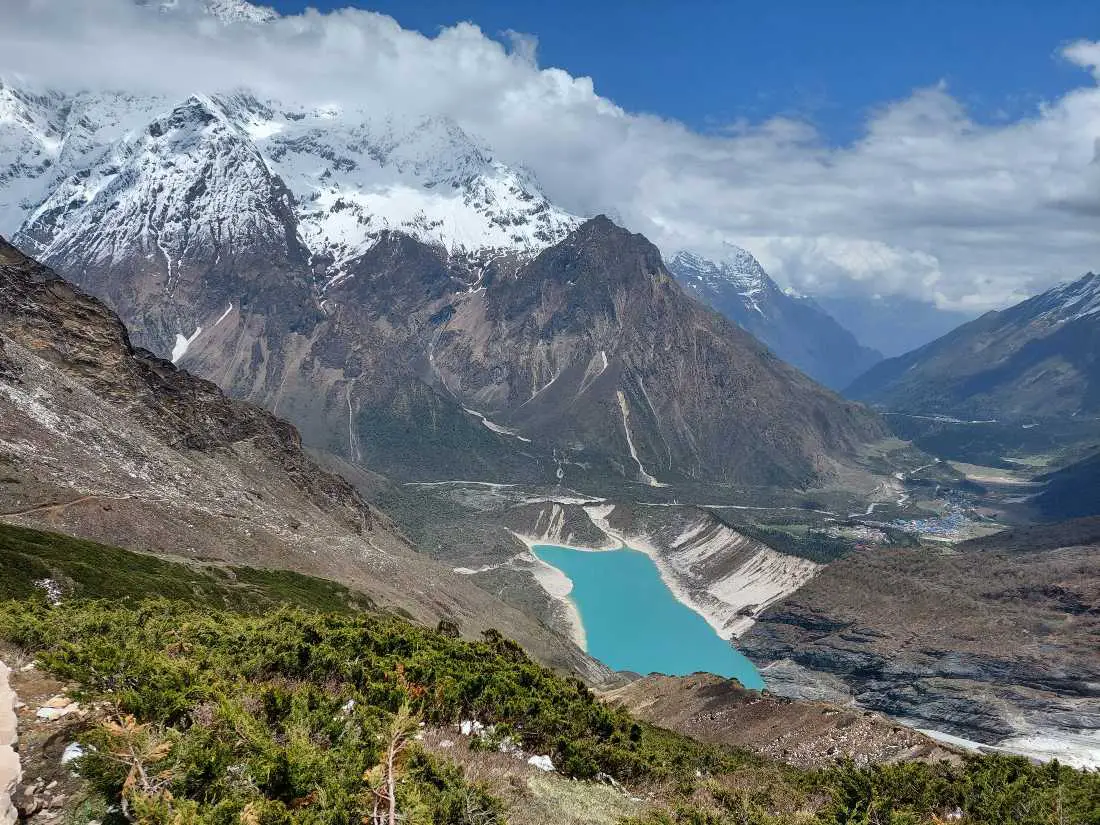
Things To Know Before Embarking on the Manaslu Circuit Trek
High altitude.
The Manaslu Circuit Trek reaches elevations exceeding 5,000 meters (16,400 feet), including the challenging Larkya La Pass at approximately 5,106 meters (16,752 feet). Altitude sickness can be a concern, requiring acclimatization and careful monitoring of symptoms.
Remote and Isolated Terrain
The Manaslu Circuit traverses remote and rugged terrain, far from major urban centers. Facilities such as lodges and medical assistance are limited, necessitating self-sufficiency and emergency preparedness.
Variable Weather Conditions
Weather in the Himalayas can be unpredictable, with conditions ranging from clear skies to heavy snowfall and blizzards. you must be prepared for cold temperatures, high winds, and potential weather-related challenges.
Long Trekking Days
The trek typically involves long days of hiking, often spanning 6 to 8 hours or more, with steep ascents and descents. Stamina and physical fitness are essential for completing each day’s trekking itinerary .
Permits and Regulations
The Manaslu Circuit Trek requires obtaining special permits from the Nepalese government. Independent trekking is not allowed in the Manaslu Region. Only a local registered local company can issue the permit.
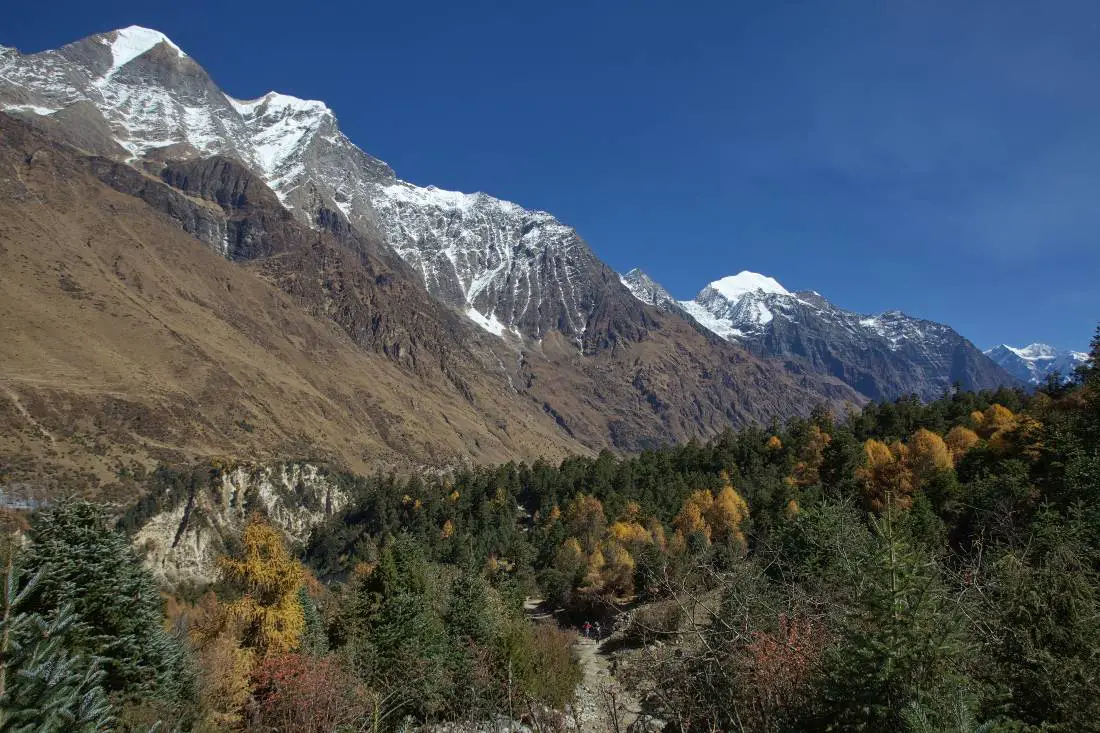
Itinerary For The Manaslu Circuit Trek
Day 1: kathmandu to macha khola.
Your adventure begins with a scenic journey from Kathmandu to Macha Khola. This can be done either by private jeep or local bus. The drive takes approximately 6-8 hours, offering glimpses of the countryside and the foothills of the Himalayas.
Macha Khola, a small village nestled along the Budhi Gandaki River, serves as the official starting point for the Manaslu Circuit Trek. Here, you’ll settle into your teahouse accommodation and prepare for the trek ahead.
Day 2: Machha Khola To Jagat
The trail from Machha Khola follows the Budhi Gandaki River, initially through a narrow path along the Khoralabesi village. You’ll encounter several small streams cascading down the mountainsides, eventually merging with the Budhi Gandaki.
One of the highlights of this day is Tatopani, a natural hot spring where you can take a relaxing dip to soothe your tired muscles after the first day’s travel.
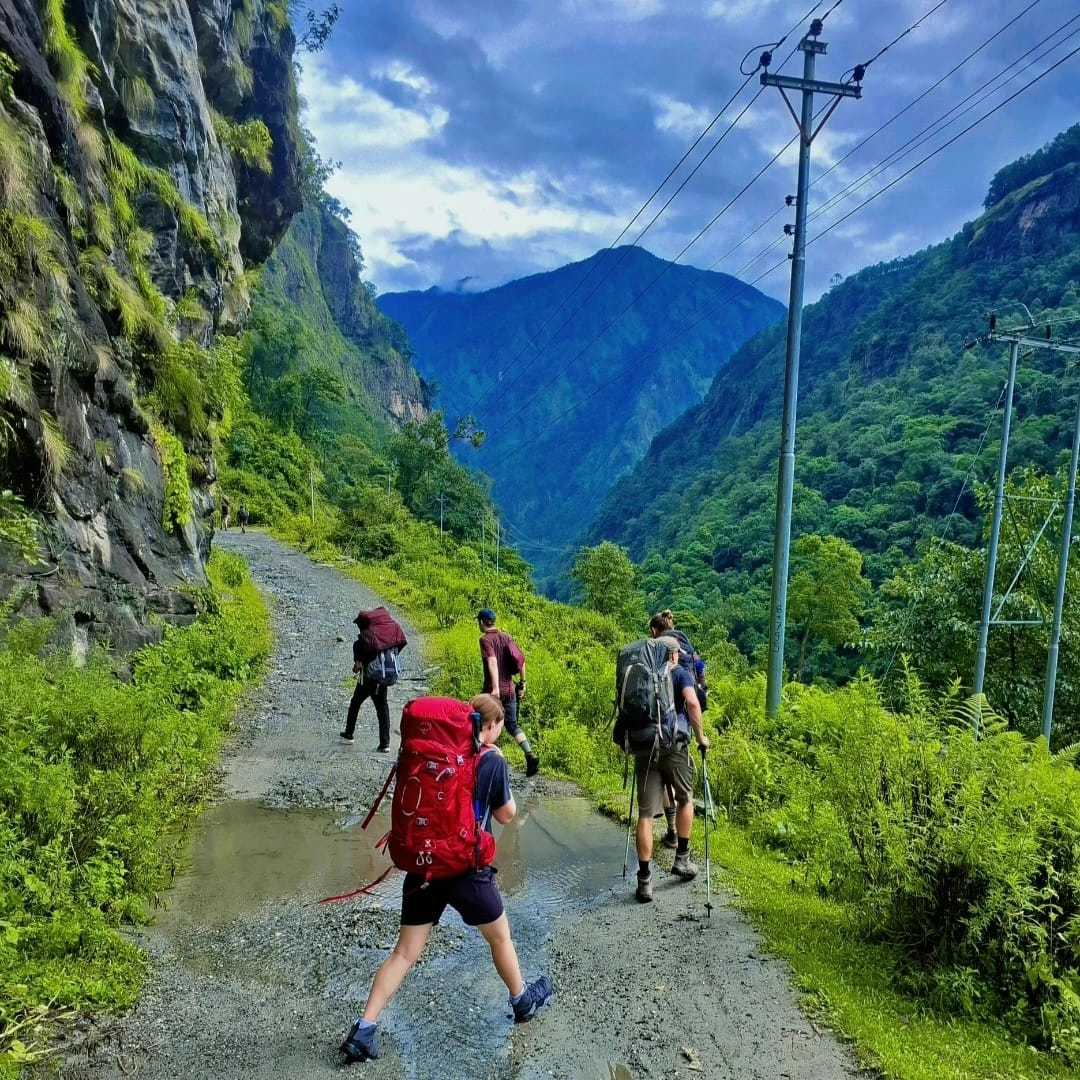
Day 3: Jagat To Deng
You’ll begin by climbing a rocky ridge to reach Salleri, a small village with captivating views of Mount Sringi. As you descend towards Setibas, you’ll notice the increasing presence of mani walls, indicating the growing influence of Tibetan culture in the region.
The valley widens, and the trail continues past stone houses along Ghat Khola. You’ll encounter a long suspension bridge, offering a thrilling experience as you cross the roaring river below.
The trail climbs towards Philim, a large Gurung village showcasing traditional architecture and local life.
After traversing through lush millet fields, you’ll reach Ekle Bhatti, a small teahouse settlement, which serves as your lunch stop or overnight stay depending on your pace.
The final stretch to Deng involves a gradual ascent through farmlands and meadows.
Day 4: Deng To Namrung
The trek from Deng to Namrung is the fourth day of the Manaslu Circuit Trek, offering a beautiful journey with diverse landscapes and cultural encounters. Here’s what you can expect:
The trail from Deng takes you through a fascinating mix of valleys, rivers, and quaint villages, gradually ascending towards Namrung. You’ll begin with a short descent to the Budhi Gandaki Riverbed, offering a different perspective of the valley.
The trail then leads you across a suspension bridge to Rana Gaon, a small village with traditional stone houses and agricultural fields. Next, you’ll encounter Bhimphedi, a picturesque spot with teahouses, followed by a gentle climb to Gap, a village known for its apple orchards.
Enjoy the scenic views and potentially savor some fresh apples during the season. Ghap is a good spot to take a lunch break and refuel for the remaining trek. After Ghap, the trail enters a captivating section with dense forests, cascading waterfalls, and vibrant flora and fauna.
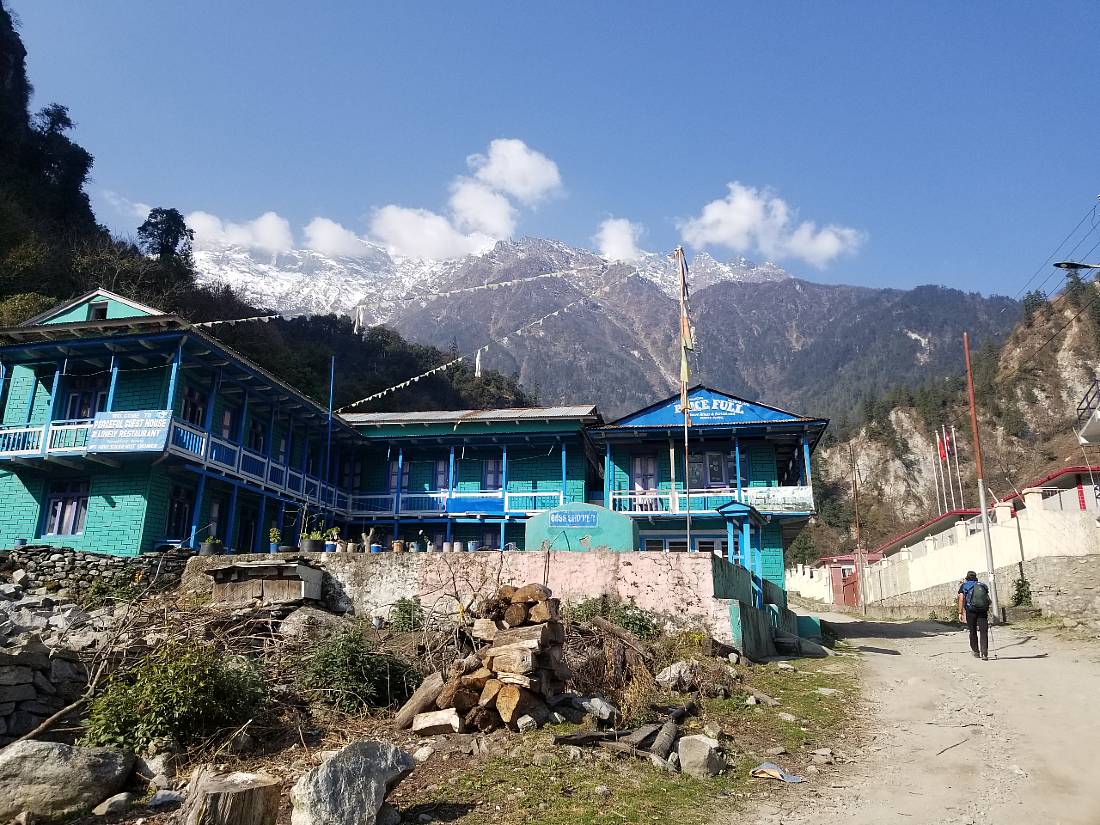
Keep an eye out for colorful birds and interesting plant life. As you approach Namrung, you’ll start noticing an increase in mani walls and colorful prayer flags, reflecting the growing Tibetan Buddhist influence in the region.
Namrung, a charming village nestled at an altitude of 2660 meters (8727 ft), is your destination for the day. Here, you’ll find comfortable teahouses with breathtaking views of the Manaslu Himal, including Manaslu itself.
Day 5: Namrung To Lho
As you leave Namrung, the trail is adorned with many mani walls and colorful prayer flags, signifying the strong Tibetan Buddhist influence in the region.
The initial part of the trek takes you through Upper Nupri, a beautiful area with traditional stone houses and yak pastures.
The path then enters a scenic forest section with towering fir, rhododendrons, and oak trees. Keep an eye out for interesting birdlife and the vibrant flora of the region.
You’ll reach Lihi village, showcasing unique architectural styles with flat roofs and stone houses. Interact with the locals and learn about their way of life.
As you ascend further, the trail opens up to spectacular views of the Manaslu range, including Manaslu itself, Peak 29, and the Naike Peak. The landscape becomes more dramatic, offering a glimpse of the beauty that awaits you on the Manaslu Circuit Trek.
Day 6: Lho To Samagaun
You will follow a higher trail along the lateral moraine of the Pungen Glacier. This route offers closer views of the glacier and Peak 29 but may involve some rocky sections.
Whichever route you choose, you’ll eventually reach Shyaula Kharka, a small herder settlement with traditional stone houses and yak pastures.
The trail then opens up to breathtaking views of the Manaslu range, including Manaslu itself, Himalchuli, and Ngadi Chuli.
Samagaun, a beautiful village nestled at an altitude of 3530 meters (11,581 ft), is your destination for the day. Here, you’ll find comfortable teahouses with breathtaking views of the surrounding mountains.
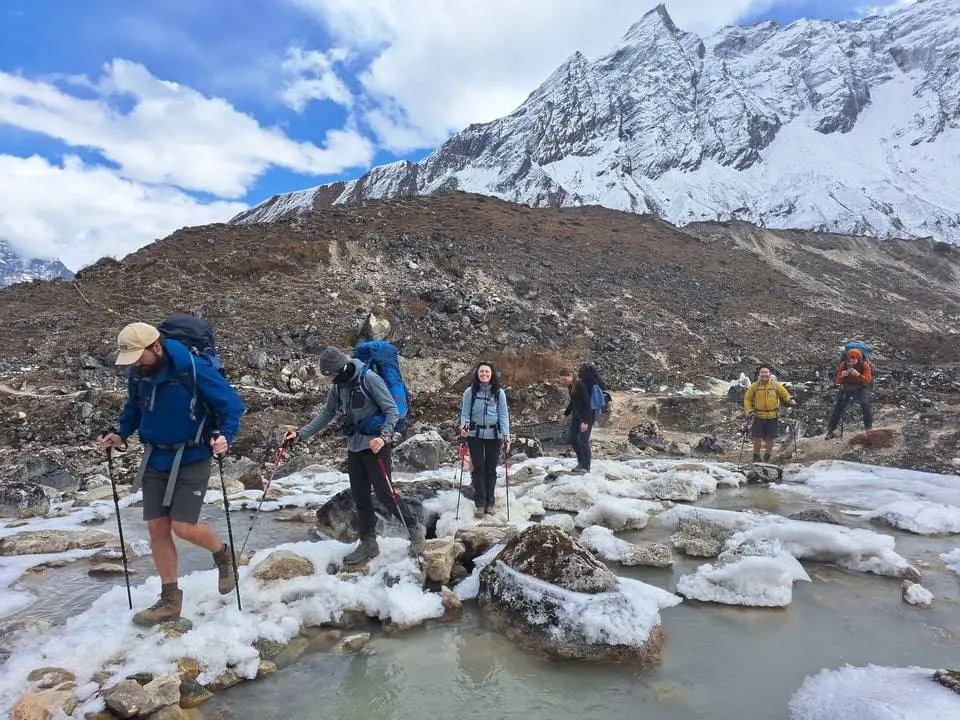
Day 7: Acclimatization Day in Samagaun
On this day you will hike to Manaslu Base Camp (4500 meters) – This is a more challenging hike that offers stunning views of Manaslu and the surrounding peaks.
Be sure to discuss this option with your guide to ensure it’s suitable for your acclimatization progress
A successful acclimatization day in Samagaun paves the way for a safe and enjoyable journey through the higher sections of the Manaslu Circuit Trek.
Listen to your body, prioritize rest, and enjoy the beautiful surroundings!
Day 8: Samagaun To Samdo
You’ll begin with a gradual descent towards the Budhi Gandaki River, offering a different perspective of the valley.
After crossing the river on a suspension bridge, the landscape transforms into a more arid and rocky terrain, resembling a high-altitude desert.
You’ll encounter yak herder settlements and their grazing pastures along the way.
The trail then steadily ascends through this unique landscape, offering panoramic views of the Manaslu range, including Manaslu itself and the surrounding peaks.
Samdo, a small village nestled at an altitude of 3875 meters (12,713 ft), is your destination for the day. You’ll find comfortable teahouses with even more dramatic close-up views of Manaslu.
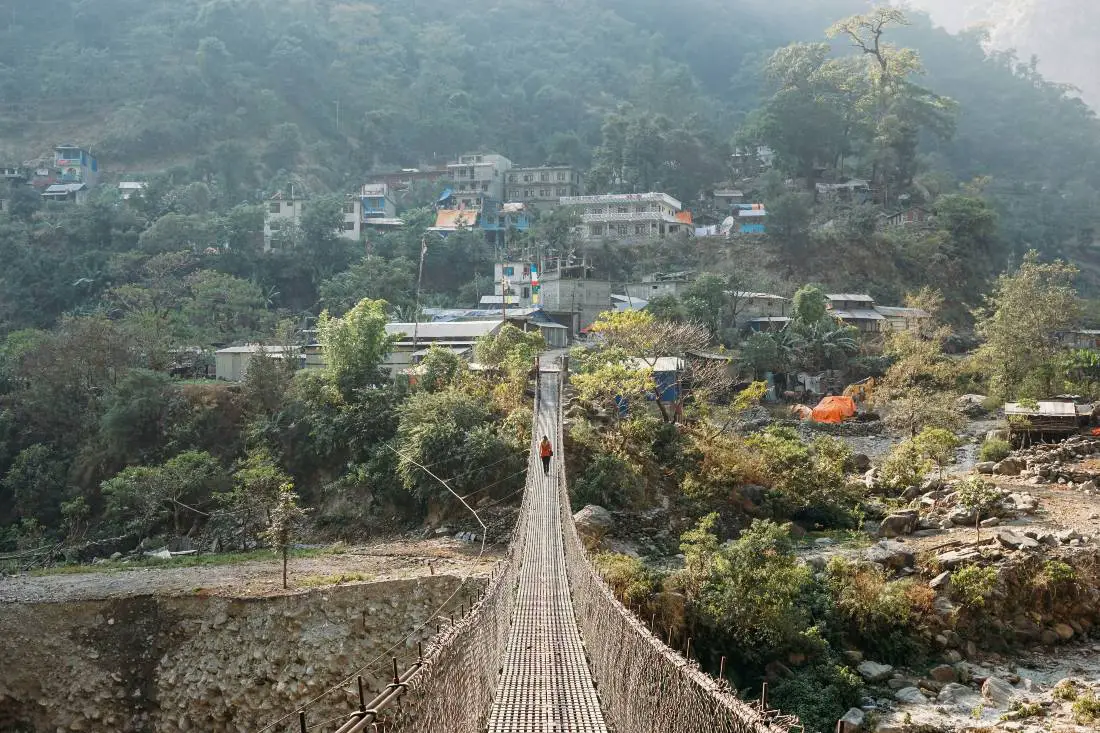
Day 9: Acclimatization Day in Samdo
Similar to your acclimatization day in Samagaun, spending an acclimatization day in Samdo (at 3875 meters) is crucial for success on the Manaslu Circuit Trek.
You will hike to the Tibetan border on this day. This can be a challenging but rewarding hike depending on the specific route chosen. It helps your body to acclimatize your body for Larke Pass.
Day 10: Samdo To Dharamsala
It’s a challenging yet rewarding leg that takes you through a high-altitude landscape with dramatic scenery and prepares you for the upcoming Larkya La pass crossing.
You’ll start with a steep and challenging climb through scree slopes, demanding a slow and steady pace.
The trail continues alongside the Larkya Glacier, offering a unique perspective of the glacial terrain. Keep an eye out for crevasses and follow your guide’s instructions carefully.
Dharamsala, also known as Larkya Phedi, is a small village situated at an altitude of 4470 meters (14,665 ft). This is your destination for the day and serves as the base camp before tackling the Larkya La pass.
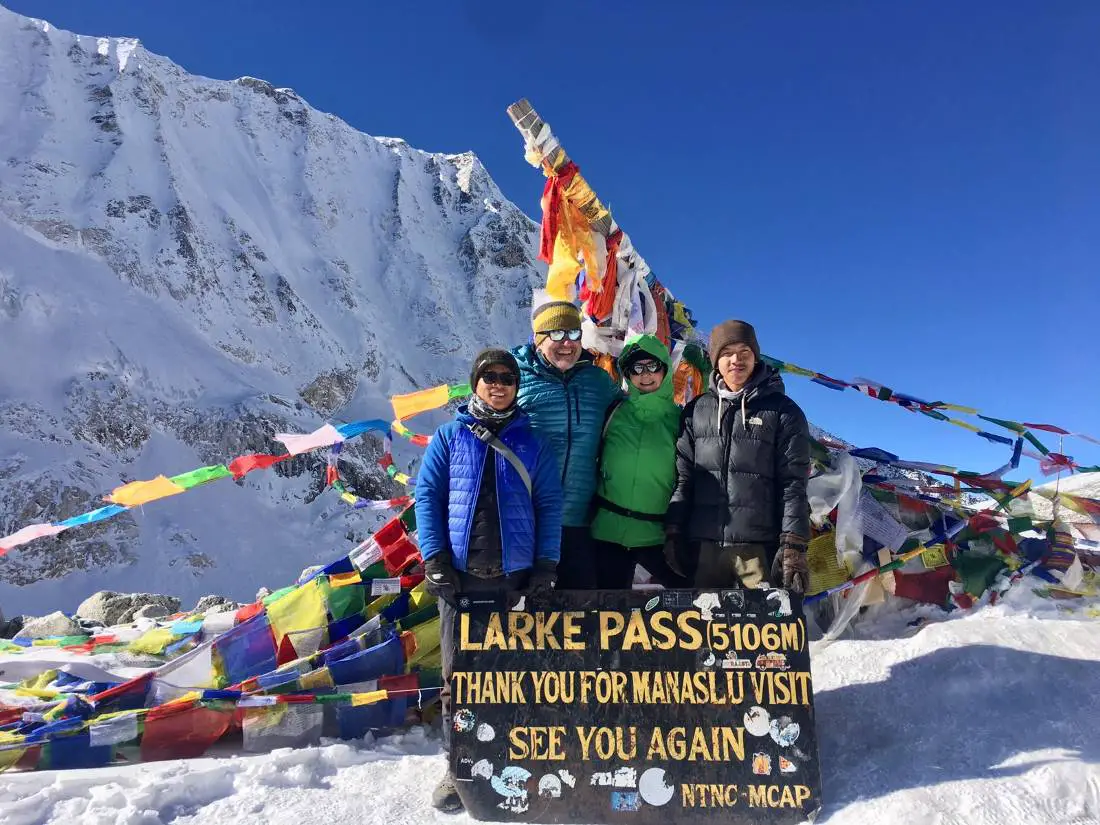
Day 11: Dharamsala To Bhimthang Via Larke Pass
This is the day you have been waiting for. You’ll wake up very early for a pre-dawn start to avoid the afternoon sun and potential snowmelt on the pass.
The initial ascent from Dharamsala involves a steep climb through moraine and scree slopes, demanding a slow and steady pace with frequent breaks.
As you gain altitude, the air will become thinner, so listen to your body and take rest breaks whenever needed.
The final push to the pass involves a rocky section that might require using your hands for balance.
Reaching Larkya La, the highest point of the Manaslu Circuit Trek, is a moment of immense achievement.
Here, you’ll be rewarded with breathtaking panoramic views of Manaslu, Himchuli, and the surrounding Himalayan ranges. On a clear day, you might even see glimpses of Annapurna peaks in the distance.
The descent from Larkya La towards Bimthang is initially steep and involves navigating loose scree slopes. Use hiking poles for extra support and stability.
The trail then enters a more scenic valley with pastures and streams.
Day 12: Bhimthang To Dharapani
You’ll begin with a gradual descent through a scenic valley with pastures, streams, and lush vegetation. Enjoy the contrasting landscape compared to the previous day’s terrain.
The trail then leads you to a suspension bridge over the mighty Budhi Gandaki River. As you descend further, you’ll enter the lower Manaslu region, with more permanent settlements and cultivated fields.
Dharapani, a charming village nestled at an altitude of 3720 meters (12,205 ft), is your destination for the day. This is a popular stop on the Annapurna Circuit Trek as well.
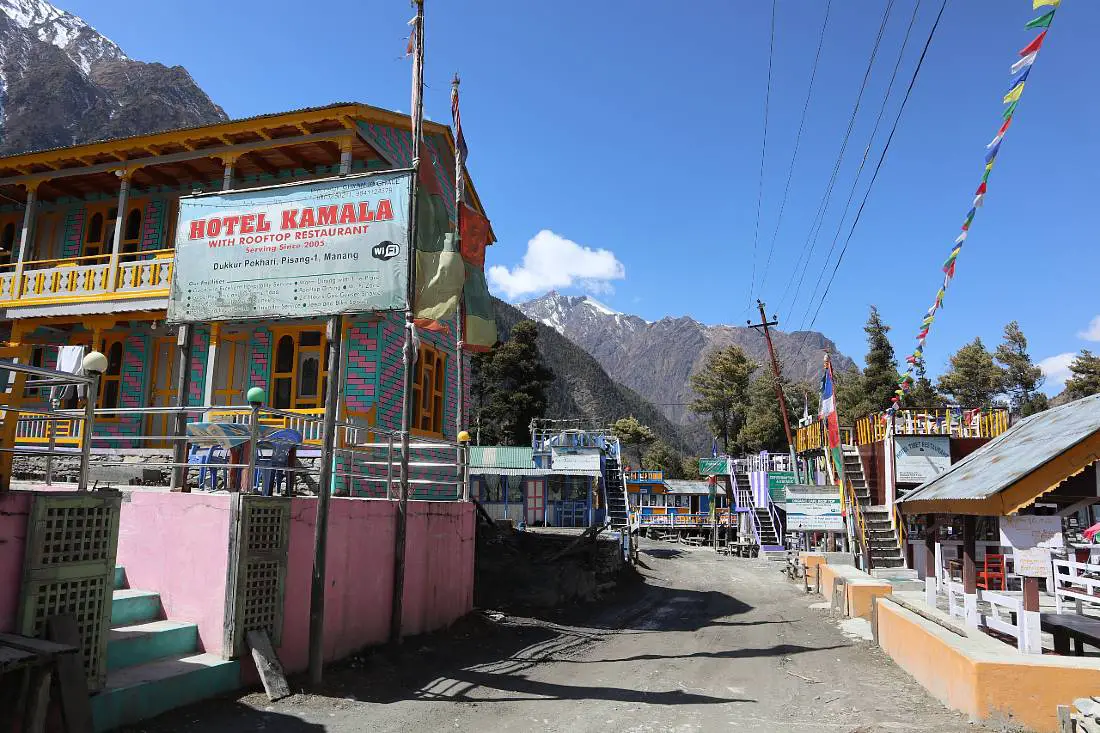
Day 13: Dharapani To Besisahar
The trail leads you to a suspension bridge over the mighty Budhi Gandaki River.
As you descend, you’ll enter the lower Manaslu region, with more permanent settlements and cultivated fields.
Besisahar, a bustling town nestled at an altitude of 794 meters (2,605 ft), is your final destination on the Manaslu Circuit Trek. This is also the starting point for the popular Annapurna Circuit Trek .
Day 14: Besisahar To Kathmandu
From Besisahar, you can take a local bus back to Kathmandu. The journey takes approximately 10 to 12 hours, depending on traffic and road conditions.
The bus ride can be quite bumpy and dusty, so be prepared for a long journey. Tickets can be purchased at the bus station in Besisahar.
I hope this inspires you to hike the Manaslu Circuit Trek, I certainly want to do it after reading this!
Leave a Reply Cancel reply
Your email address will not be published. Required fields are marked *
This site uses Akismet to reduce spam. Learn how your comment data is processed .

Genuine Reviews on :
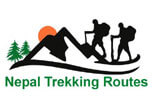
Everest Base Camp Sleeping Trek
- Everest Base Camp Trek
- Gokyo Lake Trek
Everest Base Camp Trek with Jeep Drive
- Everest View Trek
- Everest Base Camp Trek with Helicopter Return
- Everest Luxury Trek With Helicopter Tour
- Everest Base Camp Trek with Island Peak Climbing
Arun Valley Everest Base Camp Trek
- Everest Panorama View Trek for Senior Citizens
- Everest Three High Passes Trek
- Everest Gokyo Cho La Pass Trek
- Pikey Peak Trek
- Amadablam Base Camp Trek
- Amphu Lapcha Pass Trek
- Jiri Everest Base Camp Trek
- Everest Luxury Panorama Trek
- Short Everest Base Camp Trek
- Tashi Lapcha Pass Trek
- Everest Base Camp Yoga Trek
Gokyo Lake Renjola Pass Trek
- Tsho Rolpa Lake Trek
- Rolwaling Tashi Lapcha Pass trek
- Rolwaling Valley Trek
- Sherpa Festival Trek
- Sherpa Home Land Trekking
- Annapurna Base Camp Trek
- Annapurna Circuit Trek
- Annapurna Sunrise View Trek
- Ghorepani Ghandruk Trek
- Khopra Danda Trek
- 6 Days Annapurna Base Camp Trek
- Mardi Himal Trek
- Nar Phu Valley Trek
- Tilicho Lake Trek
- Tilicho Mesokanta Pass Trek
- Lower Mustang Trek
- Jomsom Muktinath Trek
- Sikles Community Trek
- Poon Hill Khopra Danda Trek
- Kangla Pass Trek
- Dhaulagiri Sanctuary Trek
- Dhaulagiri Circuit Trek
- ABC Mardi Himal Trek
- Machhapuchhre Model Trek
- Annapurna Trek
- Mohare Danda Trek
- 3 Days Poon Hill Trek
- Annapurna Royal Trek
- Panchase Trekking
Annapurna Circuit with Ghorepani Ghandruk Trek
- Annapurna Circuit Mountain Biking Tour
- Langtang Valley Trek
- Helambu Circuit Trek
- Ganjala Pass Trek
- Langtang Gosainkunda Trek
- Gosainkunda Helambu Trek
- Tamang Heritage Trek
- Langtang Gosaikunda Helambu Trek
- Tamang Heritage trek With Langtang Gosaikunda Helambu
- Manaslu Circuit Trek
- Tsum Valley Rupina La Pass Trek
- Manaslu Base Camp Trek
- Manaslu Round Trekking
- Tsum Valley Trek
- Manaslu Tsum Valley Trek
- Rupina la Pass Trek
Upper Mustang Jeep Tour
- Rara Lake trek
- Simikot Hilsa Trek
- Lower Dolpo Trek
- Upper Mustang Trek
- Upper Dolpo Trek
- Kanchenjunga Base Camp Trek
- Makalu Base Camp Trek
- Lumba Sumba Pass Trek
- Limi Valley Trek
- Chisapani Nagarkot Dhulikhel Trek
- Dhampus Sarankot Trek
- Chisapani Nagarkot Hiking
- Sailung Trekking
- Ganga Jamuna Trek
- Ganesh Himal Base Camp Trek
- Ruby Valley Trek
- Amadablam Expedition
- Api Himal Trek
- Saipal Himal Trek
- Guerrilla Trek
- Lamjung Himal Trek
- Numbur Himal Trek
- Dudh Kunda Trek
- Chepang Hill Trek
- Panch Pokhari Bhairab Kunda Trek
- Agricultural Rural Nepal Tour
- Chitwan Jungle Safari Tour
- Pokhara Skydiving
- Everest Mountain Flight
- Explore Nepal Tour
- Everest Base Camp Helicopter Tour
- Paragliding in Nepal
- 3 Days Muktinath Tour
- Hot Air Balloon in Nepal
- Bungee Jumping
- Dhulikhel Namobuddha Day Tour
- Bhaktpur Sightseeing Nagarkot Sunset Tour
- Bouddha Kapan Monastery Tour
- National Geographic Highlighted Tour
- Chandragiri Hill Day Tour
- Nepal Highlights Tour
- Bungmati Khokana Pharping Dakshinkali Tour
- Chitwan Lumbini Pokhara Tour
- Panauti Namobuddha Day Tour
- Family Tour
- Nepal Cultural Tour
- Bhaktapur Nagarkot Sunrise Tour
- Sirubari Village Home Stay Tour
- Bhaktapur Changunarayan Day Tour
- Luxury Tour In Nepal
- Honeymoon Tour
- Volunteer Tour
- Lumbini Tour
- Day Tour in Nepal
- Island Peak Climbing
- Mera Peak Climbing
- Lobuche Peak Climbing
- Paldor Peak Climbing
- Chulu East Peak Climbing
- Pisang Peak Climbing
- Yala Peak Climbing
- Chulu West Peak Climbing
- Tent Peak Climbing
- Himlung Himal Expedition
- Kanchenjanga Expedition
- Mount Dhaulagiri Expedition
- Mount Annapurna Expedition
- Mount Everest Expedition
- Muktinath Helicopter Tour
- Short and Easy Trek
Trishuli River Rafting
- Sun Koshi River Rafting
- Bhotekoshi River Rafting
- Seti River Rafting
- Karnali River Rafting
- Tamur River Rafting
- Bheri River Rafting
- Arun River Rafting
- Kali Gandaki River Rafting
- Lhasa Everest Base Camp Tour
- Kailash Mansarovar Everest Base Camp Tour
- Kailash Mansarovar Tour
- Kailash Tour via Simikot
- Bhutan Tour
Central Bhutan Tour
Bhutan paro tour, bhutan tiger nest monastery tour.
- Booking Procedure
- Equipment Check List
- Nepal Visa Info
- Travel Advice
- Terms and Condition
- Nepal Is Safe To Travel
- First Time Trek To Nepal
- Trekking Guide And Porter In Nepal
- Access To Nepal
- Responsible Tourism Policy
- Types Of Trekking
- Trekking Season
- Legal Documents
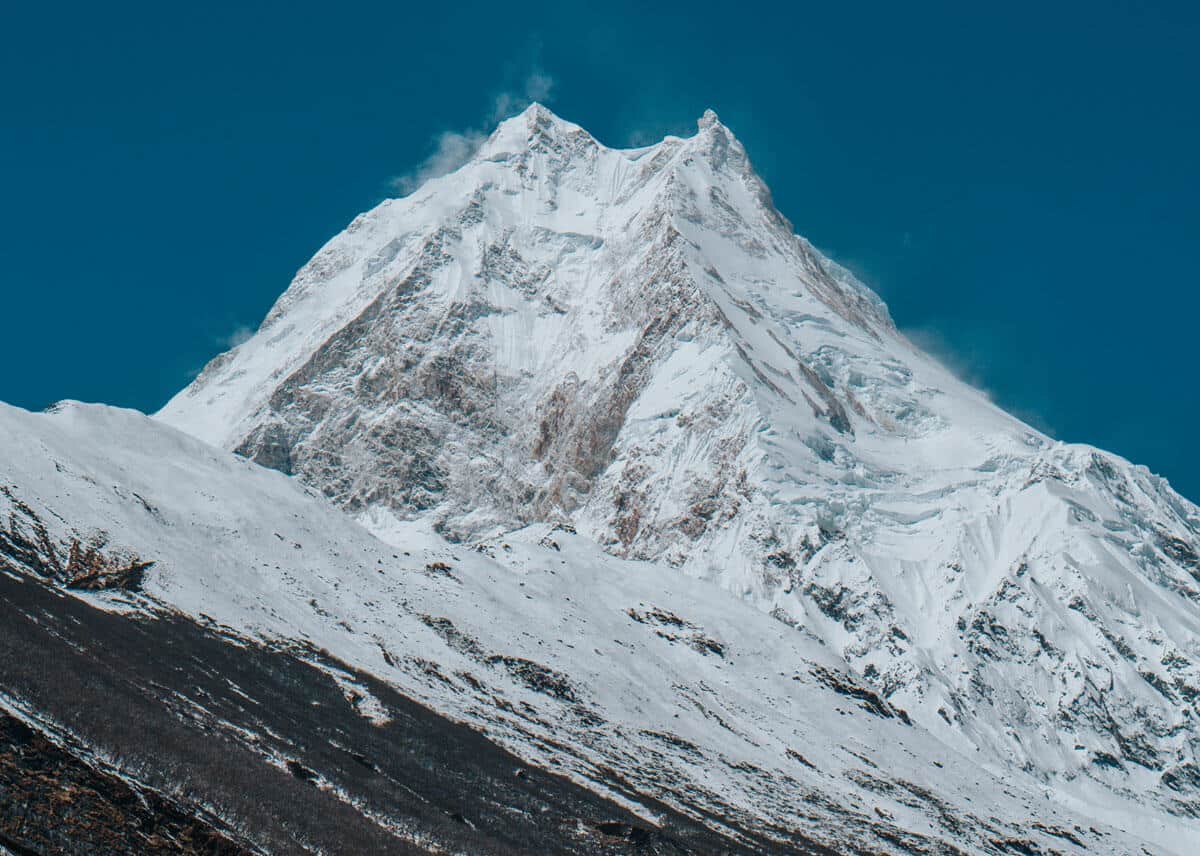
Manaslu Circuit Trek Itinerary: A Step-by-Step Guide
- 7 months ago
Manaslu Circuit trek , often referred to as a hidden gem, offers trekkers a remarkable journey through some of the most stunning, and remote landscapes in the Himalayas.
Mount Manaslu traverse is the eighth-highest mountain in the world which provides an authentic cultural experience as you traverse through traditional Nepalese villages.
In this comprehensive guide, you will take you through a step-by-step itinerary for the Manaslu Circuit trek, helping you plan an unforgettable adventure through this remote and pristine region.
Trips - Manaslu Circuit Trek Itinerary: A Step-by-Step Guide
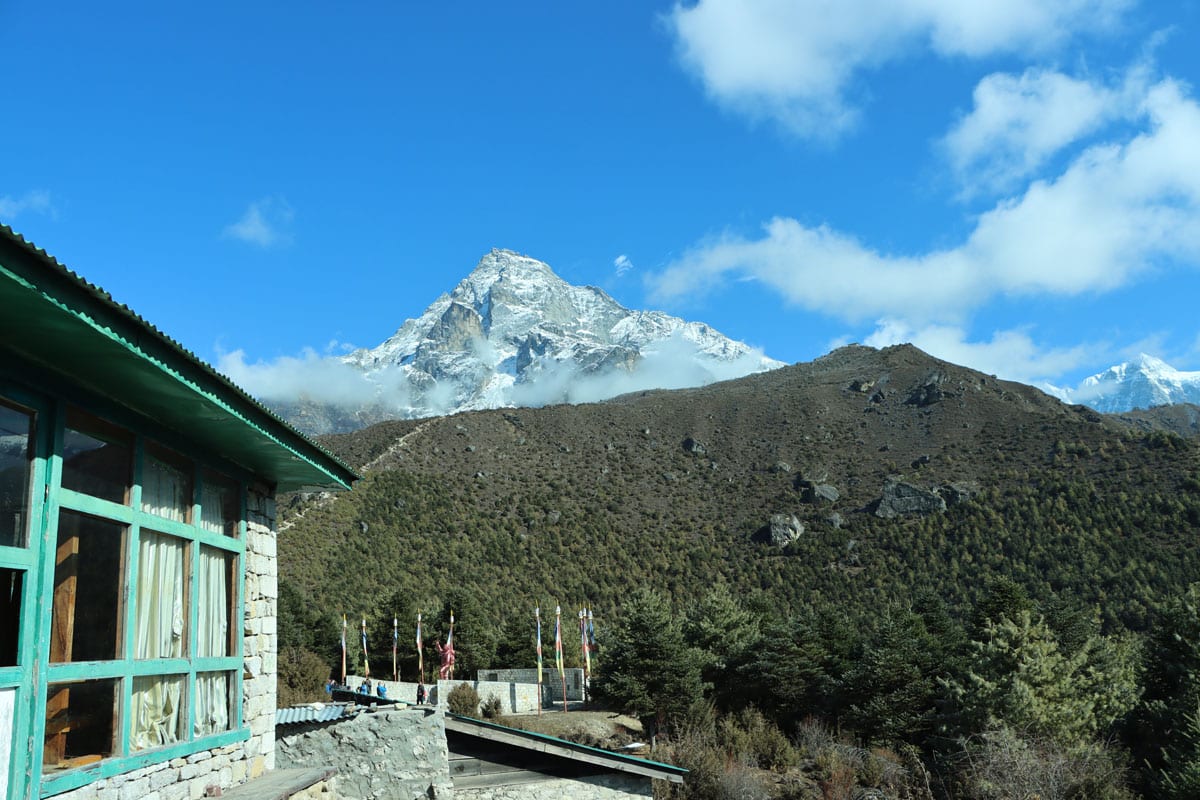
Everest Region Trek , Nepal

Nepal , Restricted Region Trek
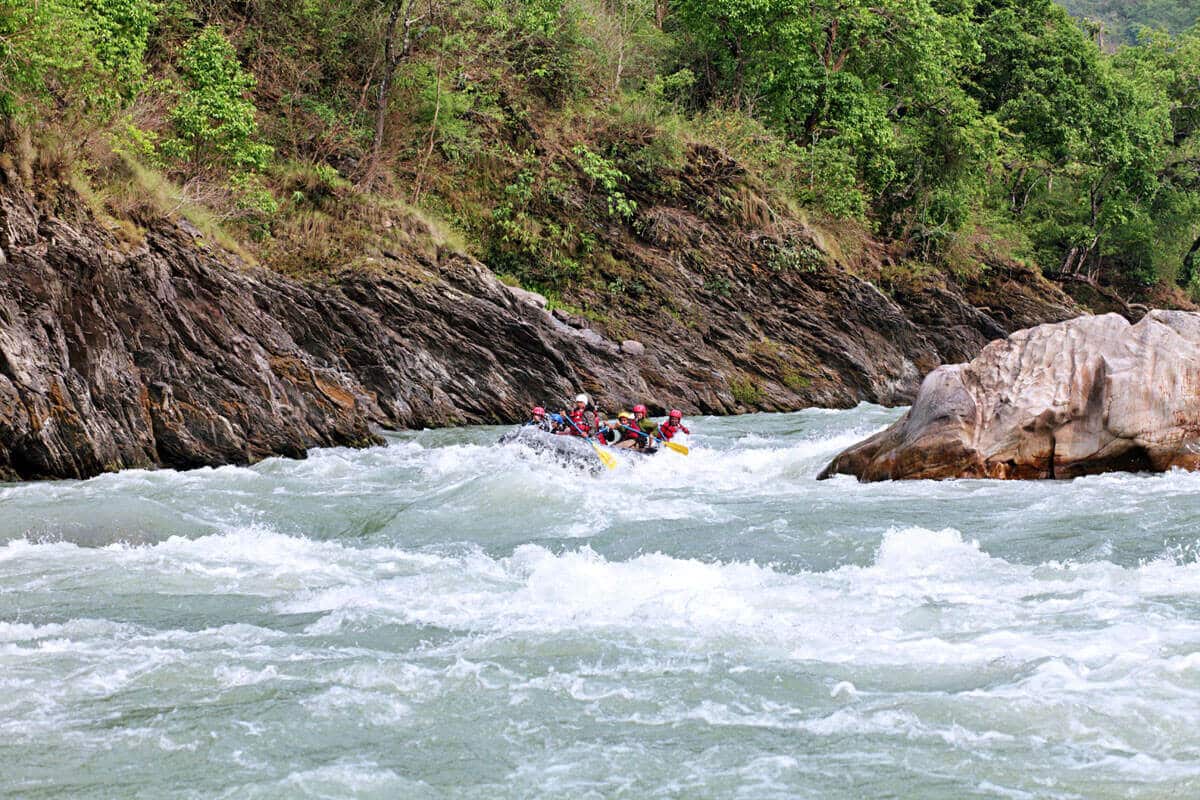
Annapurna Region Trek , Nepal
There are some preparations and permission to be informed before travelling.
Table of Contents
Manaslu Circuit Trekking Permits
Annapurna Conservation Area Permit (ACAP) : Since the Manaslu Circuit briefly passes through the Annapurna Conservation Area, you’ll also need an ACAP permit. You can obtain this permit in Kathmandu or at various entry points along the trek.
Physical Fitness and Acclimatization Physical Fitness: The Manaslu Circuit trek involves challenging terrain and high altitudes. Prior physical conditioning and cardiovascular fitness are crucial. Regular hiking and cardio workouts in the months leading up to your trek will help prepare your body.
Acclimatization: Acclimatization is essential to prevent altitude sickness. Your Nepal trekking itinerary should include gradual altitude gains and rest days to help your body adjust to reduced oxygen levels as you ascend.
Altitude Sickness Medication: Carry altitude sickness medication and consult with a healthcare professional before your trek.
Trekking Gear and Packing List Packing appropriately is crucial for your comfort and safety during the trek. Here’s a list of essential trekking gear and items to pack:
- Moisture-wicking base layers
- Insulating layers (fleece or down jacket)
- Waterproof jacket and pants
- Trekking pants and shorts
- Trekking shirts (long-sleeved for sun protection)
- Warm hat and gloves
- Hiking socks
- Hiking boots (sturdy, waterproof, and well-fitted) Gear
- Backpack (comfortable and large enough to carry essentials)
- Sleeping bag (suitable for cold temperatures)
- Trekking poles (for stability)
- Headlamp (with extra batteries)
- Sunglasses (with UV protection)
- Water bottles (to stay hydrated)
- Reusable water purification system (to reduce plastic waste)
- Trekking towel (quick-drying)
- First aid kit (including altitude sickness medication) Other Essentials
- Trekking permits (Manaslu Restricted Area Permit and ACAP)
- Passport and passport photos (for permit applications)
- Cash (Nepalese rupees for expenses on the trail)
- Guidebook/map (for navigation and information) Personal Items
- Toiletries (toothbrush, toothpaste, soap, small towel)
- Sunscreen and lip balm (with high SPF)
- Personal medications (including altitude sickness medication)
- Camera and accessories (to capture the stunning scenery) Optional Items
- Gaiters (for keeping snow and debris out of your boots)
- Down booties (for warmth at higher altitudes)
- Portable solar charger (for electronic devices)
- Travel pillow (for added comfort) The Manaslu Circuit Trek Itinerary Now, let’s dive into the step-by-step itinerary for the Manaslu Circuit trek . This classic route takes you on a circular journey around Mount Manaslu, showcasing breathtaking landscapes, rich cultural encounters, and challenging high-altitude adventure. The total trekking distance is approximately 177 kilometers (110 miles), and the trek generally takes between 14 to 18 days to complete, depending on your chosen starting and ending points and any side trips you wish to undertake.
Day 1: Kathmandu to Soti Khola (Drive) Distance: Approximately 140 kilometers (87 miles) Duration: 7-9 hours by vehicle Your Manaslu Circuit adventure begins from Kathmandu ( the capital of Nepal). From here, embark on a scenic drive that takes you through picturesque landscapes and charming villages. The journey to Soti Khola is an opportunity to soak in the beauty of rural Nepal and the stunning countryside. You’ll overnight in Soti Khola, ready to commence your trek the following day.
Day 2: Soti Khola to Machha Khola (Trek) Distance: Approximately 14 kilometers (8.7 miles) Duration: 5-6 hours The trek commences as you follow the Budhi Gandaki River, crossing suspension bridges and navigating through lush forests. The trail takes you through quaint settlements and provides the first taste of the diverse flora and fauna that call this region home. Machha Khola, your destination for the day, is a charming village where you can rest and recharge for the journey ahead.
Day 3: Machha Khola to Jagat (Trek) Distance: Approximately 22 kilometers (13.7 miles) Duration: 7-8 hours Leaving Machha Khola behind, the trail continues to wind along the Budhi Gandaki River, offering glimpses of the region’s natural beauty. The trek includes some ascents and descents, leading you to the village of Jagat. Here, you’ll officially enter the Manaslu Conservation Area, and your trekking permits will be checked. Enjoy the rustic charm of Jagat as you settle in for the night.
Day 4: Jagat to Deng (Trek) Distance: Approximately 21 kilometers (13.1 miles) Duration: 7-8 hours As you ascend further, you’ll notice changes in the landscape and vegetation. The dense subtropical forests begin to give way to temperate forests, with oak, maple, and rhododendron trees adorning the trail. Along the way, you’ll encounter small villages, terraced fields, and friendly locals going about their daily lives. Deng, your destination for the day, offers a glimpse into the traditional way of life in the Manaslu region.
Day 5: Deng to Namrung (Trek) Distance: Approximately 19 kilometers (11.8 miles) Duration: 6-7 hours The trek takes you deeper into the conservation area as you make your way to Namrung, a picturesque village at a higher altitude. As you ascend, the views of the surrounding peaks become increasingly stunning. Namrung is your first taste of higher-altitude living, and you’ll have the opportunity to explore the village and interact with locals who are accustomed to the challenges of mountain life.
Day 6: Namrung to Samagaon (Trek) Distance: Approximately 13 kilometers (8.1 miles) Duration: 4-5 hours Today’s trek leads you to Samagaon, a charming village nestled amidst the towering peaks of the Manaslu Massif. Along the way, you’ll be treated to stunning views of Manaslu and other surrounding mountains. Samagaon is a place to immerse yourself in the local culture, visit ancient monasteries, and experience the warmth of the people who call this village home.
Day 7: Acclimatization Day in Samagaon Duration: Full day in Samagaon To acclimatize to the higher altitude, take a well-deserved rest day in Samagaon. This is an opportunity to explore the village further, visit nearby viewpoints, and gain a deeper understanding of the local way of life. You can also consider a hike to the Pungyen Gompa or Manaslu Base Camp for breathtaking views of the surrounding peaks.
Day 8: Samagaon to Samdo (Trek) Distance: Approximately 10 kilometers (6.2 miles) Duration: 3-4 hours The trail continues to ascend, bringing you closer to the Tibetan border. Samdo, your next destination, is a small village with a unique atmosphere. The proximity to the border adds to the intrigue of this remote settlement. Upon arrival in Samdo, you can explore the village or take a short hike to acclimatize.
Day 9: Acclimatization Day in Samdo Duration: Full day in Samdo Another day for acclimatization in Samdo is essential before you proceed to higher altitudes. You may choose to hike to the nearby Tibetan border or explore the surrounding terrain. This additional day of rest and acclimatization will help prepare your body for the challenges ahead.
Day 10: Samdo to Dharamsala (Trek) Distance: Approximately 13 kilometers (8.1 miles) Duration: 4-5 hours Today’s trek takes you to Dharamsala, also known as Larkya Base Camp. This is your preparation point for the upcoming high pass, the Larkya La Pass. The trail offers stunning views of the surrounding peaks, and you’ll notice a change in the terrain as you ascend higher into the alpine zone. Dharamsala provides basic accommodation and meals to prepare you for the pass crossing.
Day 11: Dharamsala to Bimthang via Larkya La Pass (Trek) Distance: Approximately 15 kilometers (9.3 miles) Duration: 8-9 hours The highlight of your Manaslu Circuit trek is here as you cross the challenging Larkya La Pass . At 5,160 meters (16,929 feet) above sea level, this pass offers breathtaking views of the Himalayas. You’ll likely encounter snow and icy terrain, so be prepared with appropriate gear. After crossing the pass, you’ll descend to Bimthang, a beautiful meadow surrounded by high peaks. This descent provides a rewarding change of scenery.
Day 12: Bimthang to Tilije (Trek) Distance: Approximately 18 kilometers (11.2 miles) Duration: 6-7 hours The trek gradually descends today, offering different views and landscapes as you make your way to Tilije. You’ll rejoin the Annapurna Circuit trail, trekking alongside the Marsyangdi River. This part of the journey takes you through lush forests and charming villages, providing a contrast to the high-altitude landscapes you’ve encountered so far.
Day 13: Tilije to Tal (Trek) Distance: Approximately 18 kilometers (11.2 miles) Duration: 6-7 hours Your trek continues as you make your way to Tal, a village along the Marsyangdi River. The trail takes you through terraced fields and scenic landscapes, with opportunities to interact with locals and learn about their way of life. Tal is your last overnight stop on the trek, and you’ll catch a vehicle from here for the return journey to Kathmandu the following day.
Day 14: Tal to Syange (Trek) and Drive to Kathmandu Distance: Approximately 12 kilometers (7.5 miles) of trekking Duration: 4-5 hours of trekking, followed by a 2-3 hour drive to Kathmandu Your final day of trekking takes you from Tal to Syange, where you’ll conclude your trekking adventure. From Syange, you’ll catch a vehicle for the return journey to Kathmandu. The drive offers a chance to reflect on your incredible journey through the Manaslu region and provides one last look at the stunning Nepalese countryside.
Essential Tips for a Successful Trek
As you prepare for your manaslu circuit trek and follow the itinerary outlined above, here are some essential tips to ensure a successful and enjoyable adventure:.
- Trek with a Guide or Porter While the Manaslu Circuit can be trekked independently, hiring a local guide or porter can enhance your experience and provide valuable insights into the region’s culture and terrain. Porters can carry your heavy gear, allowing you to trek more comfortably.
- Acclimatize Adequately Altitude sickness is a real concern when trekking in Nepal at higher elevations. Follow your trekking itinerary, which includes rest days for acclimatization, and listen to your body. If you experience symptoms of altitude sickness (headache, nausea, fatigue), descend to a lower altitude immediately.
- Stay Hydrated and Eat Well Proper hydration and nutrition are vital during the trek. Drink plenty of clean water, and eat balanced meals to maintain your energy levels.
- Dress in Layers The weather in the Himalayas can change rapidly. Dress in layers so you can easily adjust to temperature variations throughout the day. Ensure your outer layers are waterproof to protect against rain and snow.
- Respect Local Culture and Environment Show respect for the local communities you encounter along the trek. Ask for permission before taking photos of people and their property. Dispose of waste properly and carry out all non-biodegradable trash.
- Stay Safe and Informed Stay informed about weather conditions and trail updates from local sources. Carry a first aid kit, and be prepared for emergencies. Register your trekking plans with local authorities or your trekking agency.
Conclusion: Manaslu Circuit Trek Itinerary: A Step-by-Step Guide
The Manaslu Circuit trek offers a unique blend of natural beauty, cultural immersion, and high-altitude adventure. Following this step-by-step itinerary, along with proper preparation and responsible trekking practices, will help ensure that your journey through this remote Himalayan region is not only successful but also deeply fulfilling. As you trek through attractive villages, traverse challenging mountain passes, and savor breathtaking vistas, you’ll create memories that will last a lifetime. So, lace up your boots, take the first step, and embark on an unforgettable adventure in the heart of the Himalayas on the Manaslu Circuit.
Copyright © 2020 by Nepal Trekking Routes

The Ultimate Guide to Manaslu Circuit Trek: Costs and Permit Fees
- Last Updated on Apr 4, 2024
Manaslu Circuit Trek is an adventure in the mountains of Nepal. You will be taking a trip around Mount Manaslu, the eighth-highest peak in the world. This trek combines natural beauty with cultural immersion and physical challenge. Trekkers begin their journey in Soti Khola or Maccha Khola and travel through diverse landscapes. You will see lush green forests, waterfalls, and picturesque villages. As you climb, the landscape changes to barren landscapes and alpine meadows. You can see snow-capped mountains in every direction.
The Manaslu circuit is quieter and more remote than other popular treks. This allows trekkers to fully immerse themselves in the tranquility of the Himalayas. The Manaslu circuit trek i s a journey that will take you through some of the most breathtaking landscapes in the world. The unique combination of natural beauty and cultural immersion combined with physical challenge makes this trek an adventure of a lifetime for those willing to accept the challenge. Pack your bags and lace up your shoes for an unforgettable trekking adventure in the Himalayas.
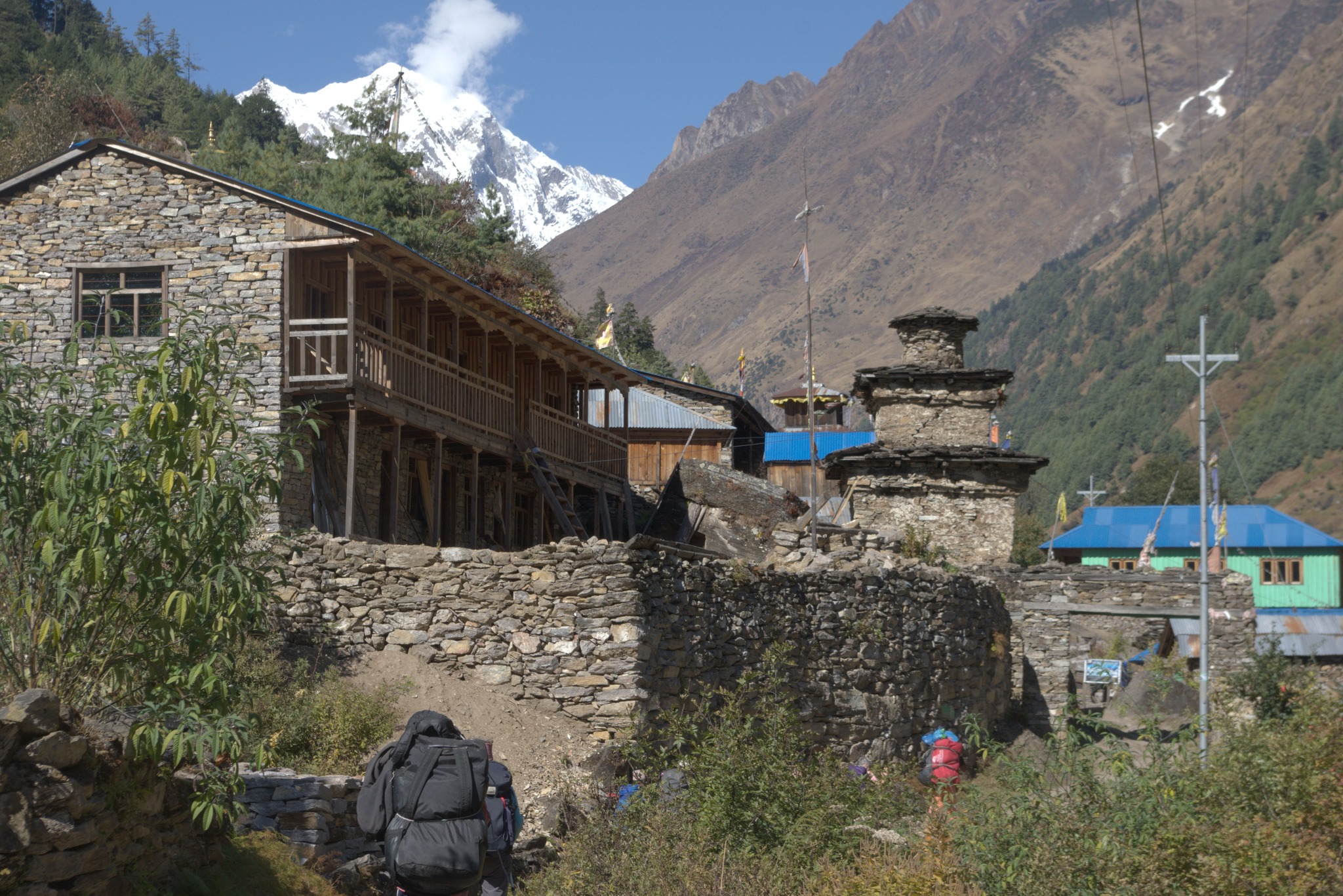
Table of Contents
How much does manaslu circuit cost.
Manaslu is cheaper than you might think. Although it is less expensive than Everest Region trekking, don't expect to pay more than Langtang or Annapurna. Many of our clients who have traveled to other areas have rated Manaslu the best trail in Nepal, which is why you should visit this place. This article will answer some of the most fundamental questions about Manaslu and focus on how this trek could affect your wallet. You will need a permit, transportation (and possibly a porter), a guide, and food and lodging to do this trek. Below are the costs for these essentials. The total cost of the Manaslu Circuit trek ranges from $1189 to USD 1450 per person. However, it's essential to research current prices and factor in any changes that may have occurred since my last update.
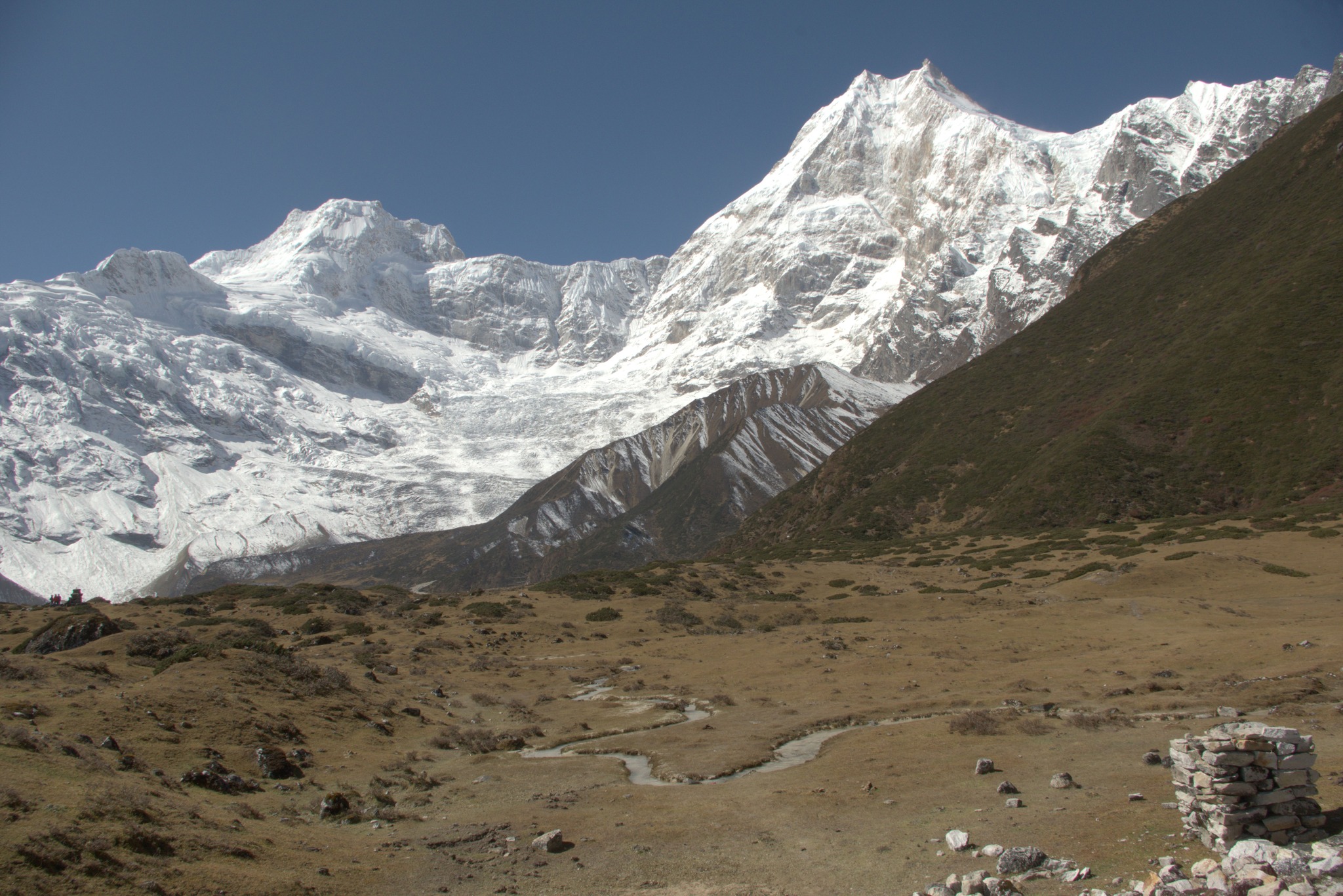
Manaslu Circuit Trekking Permits and Fees
The Manaslu trek permit costs between $7 and $10 each day for one person, but the price can change depending on when you go and where you're from. You have to organize your trek through trekking companies. You can only trek in this area with this permit. So, this blog will explain how to get the Manaslu Trek Permit. The Nepal government controls trekking in the Manaslu Circuit to protect the area's environment, history, and culture. It would help if you got a permit before you start the trek. The Ministry of Home Affairs in Nepal gives out the Permits when you pay the fee. The permits and their respective costs are as follows:
A: Manaslu Restricted Area Permit (RAP)
Citizens' Cost Per person
SAARC and Other Countries (From September to November)
- per week US$ 70
- per day US$ 10
(From December to August)
- per week US$ 50
- per day US$ 7
B: Manaslu Conservation Area Permit (MCAP)
- Nepalese Rs. 100
- SAARC Rs. 1000
Other Countries Rs. 3000 / US$ 27
C: Annapurna Conservation Area Permit (ACAP)
Note: Tsum Valley Restricted permit (Optional) is USD 35 per person per week. ACAP is required if you plan to trek the Tsum Valley.
How much should I expect to pay for a guide and porter for the Manaslu Trek?
While some trekking trails in Nepal allow tourists to trek without a guide, this rule only applies to the Manaslu region. You need to be in a group of at least two trekkers to get a permit for Manaslu. International travel companies might tell you that hiring a professional guide for Manaslu is expensive. But in reality, it's relatively inexpensive, averaging around $30 per day, which includes the guide's food, accommodation, and insurance Some people wonder if they can trek in Manaslu with only a porter. Yes, you can, but it's not much cheaper than hiring a guide because of food and insurance costs. Hiring a porter would cost around $25 to $30 daily, including food, accommodation, transportation, daily wages, and insurance. Consider hiring a porter guide to carry your stuff and guide the trail. This would cost about the same as hiring a porter or a guide. For safety reasons, it's highly recommended that you trek with a professional guide. Guides have undergone rigorous training and are licensed. However, the decision ultimately rests with you. Remember that the government only allows trekking alone in Manaslu with a guide or porter.
What Can You expect from our Company guides?
Here's what we can offer you if you enjoy reading and want to learn more about our company. Our guides are all licensed and have received proper training. We value your safety and security.
- For this reason, I am a local, and most of our Sherpas and guides are also from Manaslu Region. They know the mountains well.
- Our guides visit Manaslu five to seven times a year, meaning they have extensive experience in this area.
- Our guides are primarily young but have a lot of experience and education. The guides are fluent in English and sometimes other languages.
- We want you to enjoy your experience with Adventure Club Trek. Our previous clients have given our guides 5-out-5-star ratings.
- Our guides have great relationships with the locals and teahouse owners. Finding accommodation or communicating with them is fine.
- We arrange a meeting with your guide before you depart to ensure a good relationship. You can question the guide and test his knowledge and experience. If you are not satisfied, wait. We will gladly provide another that matches your experience.
Do not hesitate to contact us if we can help you with your arrangements. (Email: [email protected])
What is the Cost of transportation for the Manaslu Trek?
There are no luxury tourist coaches at the beginning or end of the trail. You can either rent a Jeep or take a local bus to Sotikhola. A bus trip from Kathmandu to Sotikhola will cost you less than USD 10.In contrast, a one-way jeep rental to the trailhead costs between USD 250 and 300; if you want to continue further to Machhakhola, it will cost USD 300 -340. The price is approximately NRS 2500 - 3,000 (USD 30) for tourists and NRS 2,500 for Nepalese.
For those who prefer local travel, hourly jeep services run between Tal and Besisahar. The Cost is approximately NRS 2500 to 3,000 (30 USD) for tourists and NRS 2,500 for Nepalese. Manaslu is typically reached by starting the journey at SotiKhola, approximately 138km away (86 miles). In the dry months, it is possible to reach Machhekhola by Jeep. However, local buses currently only go up to Sotikhola. Private Jeeps can go up to Machhekhola. Local transportation allows adventurers to experience the country as locals do and is cheaper than renting a Jeep alone.
What are the Road Conditions of Manaslu Trek like?
In recent years, there have been substantial improvements to the road leading to the trailhead. However, the construction of this new road has extended the distance to the trail itself. During the fall and summer seasons, smaller mountain jeeps can now reach Jaget, which previously required a three-day hike from the starting point at Sotikhola. Additionally, the section between Jaget and Sotikhola is prone to numerous landslide points, potentially affecting trail conditions. Consider driving to Tatopani instead of Sotikhola. If you plan to hike shortly after the monsoon season, ensure you have up-to-date information on trial conditions.
How Difficult is Manaslu Circuit Trek?
The Manaslu Circuit Trek is about 177 kilometers long, like walking from one village to another. It usually takes 14 to 16 days to complete, with 10 to 13 days of walking. That means you'll walk an average of 15 to 20 kilometers each day, like going for a long walk. The path can be challenging at the beginning of the trek because you have to go through a steep gorge called Budi Gandaki Gorge. There's much going up and down hills. One of the most complex parts of the trek is crossing a pass called Larkya La Pass, which is high up at 5,106 meters. You'll walk on trails covered in snow and ice for a long day. One big challenge during the trek is dealing with altitude. As you go higher, the air gets thinner, and some people might feel sick. But you only need to know how to hang from ropes or climb mountains if you're doing it in winter. Still, being in good shape is essential, even if you're new to trekking. We suggest doing exercises to build strength, endurance, and a strong heart for at least three months before you start the trek.

Manaslu Circuit Trekking Routes/Trails
Manaslu Trek route is a direct way to adventure. Solo travel permits are not issued. However, a trek with an experienced trekking company and a small group will be equally exciting. The journey begins with a relaxing stay in Kathmandu and ends with a thrilling drive to Soti Khola. Trekkers will experience diverse landscapes over 18 days. The journey culminates in a return trip from Syange back to Kathmandu. The trek begins at 1,350m (4.429 ft) and gradually climbs to 5,160m (16.929 ft). The 13-day Manaslu Circuit Trek itinerary is carefully planned to ensure that trekkers enjoy stunning vistas, unforgettable moments, and breathtaking views.
Day 1: Drive from Kathmandu to Maccha Khola:166km, 7-8 hours
Day 2: Trek Maccha Khola to Jagat:23km, 6-7 hours
Day 3: Trek Jagat to Deng:21km, 6 - 7 hours
Day 4: Trek Deng to Namrung: 19km, 7 - 8 hours
Day 5: Trek Namrung to Lho Village: 10km, 4 hours
Day 6: Trek Lho to Sama Gaon: 15.5km, 4 - 5 hours
Day 7: Acclimatization Day (Day Trip to Manaslu Base Camp or Pungyen Gompa)
Day 8: Trek Sama Gaon to Samdo: 10 km, 2-3 hours
Day 9: Acclimatization Day (Day Trip to Tibet Border)
Day 10: Trek Samdo to Dharmasala: 12km, 4 - 5 hours
Day 11: Trek Dharamshala to Bhimtang via Larkya La: 25km, 8 - 9 hours
Day 12: Trek Bimthang to Dharapani: 26km, 6-7 hours
Day 13: Drive from Dharapani to Kathmandu/Pokhara Via Beshisahar: 8 - 9 hours drive
What's the difference between local jeeps and local buses?
These are often crowded with less seat capacity and fewer seats (small-sized seats)!
What can you expect on the local bus/jeep trip?
- You might find it easier to squeeze into a smaller seat (if available). Be prepared to share space. A bus with a 30-person capacity can suddenly fit up to 50 people. The legroom on the bus may be limited. So, stretch out before you get on. As the bus only departs early in the morning at 7:00 and 8:00, plan to arrive at Arughat's local bus station 30 minutes before departure.
- Before you put your luggage on the bus, cover it with a large trash bag or a bag cover. The ride is dusty.
- Wear dark-colored clothes. Please wear a scarf, sunglasses, hat, and face mask. Bring water. You will need it. You may also get lucky and find a window seat. Be prepared to cover up with your scarf.
- The first 90km (between Kathmandu and Dhading) are well-black-topped. After that, it's a partly graveled country route, a dusty, muddy, winding mountain road. Here is where the adventure starts.
- In the middle of your journey, the local bus will stop for you to use the toilet and eat lunch. Enjoy the opportunity to try authentic regional cuisine, including mutton, chicken curry (goat), and Dal Bhat. Local food tastes different from Kathmandu's.
- Ask your travel agency to reserve a seat on the bus's right-hand side. This will provide a scenic ride with rivers, gorges, valleys, and snow-capped mountains. You can even sit on the roof!
- After the ride, you'll hum one of the local folk songs! You can expect to enjoy music, meet friendly locals, and maybe even see some goats or chickens!).
Is Manaslu Circuit Trek safe?
It is safe. We will examine the most important and logical reasons why the Manaslu Circuit Trek is a safe adventure. A trekker or group must hire a certified guide to embark on the Manaslu circuit trek. A guide and porter can add extra safety to your trek. It is safe because it was recently opened for trekking and shares a border with China. This allows for a controlled, organized flow of tourists.
Along with the standard regulations and controlled access, the cooperation between Nepal and China ensures trekkers' safety. This trek is considered to be safe in terms of wildlife encounters. There is a possibility of seeing endangered wildlife, such as red pandas and snow leopards. However, they are not known to attack people. The trek can be dangerous during the monsoon due to mudslides and heavy rain. The trail is also more dangerous due to increased landslide risk. Many teahouses are closed, and many remain closed. There have only been a few incidents involving avalanches and summit pushes. It is best to avoid avalanche seasons when planning your trek.
Do we need a guide to Manaslu Circuit?
It would be helpful to have a guide on the trek. The Manaslu Circuit Trek discourages solo trekking. The minimum requirement is two people, and the guide is mandatory. To obtain a trekking permit, you must hire a guide or be part of a group organized through a certified trekking agency. This regulation was put in place by the government of Nepal to improve safety and support for trekkers. Hiring a guide for the Manaslu area is essential for trekkers to have a safe, well-managed experience.
How can you prepare for the Manaslu Circuit Trek?
If you want to enjoy the challenging but unique Manaslu Circuit trek, you must be ready. Following the Everest Base Camp Trek Training Guide can help you prepare. Here are some tips to prepare for the Manaslu Circuit trek.
- It is essential to focus on your fitness. This includes engaging in aerobic exercises such as cycling, running, and jogging. It would help if you considered hiking with a heavy backpack.
- Yoga can be added to improve flexibility and balance.
- Before embarking on your Manaslu Circuit Trek, thoroughly research and collect valuable information about the food, accommodations, weather, culture, lifestyle, and permits.
- Plan your itinerary to include days for acclimatization and gradual accent. Add contingency days for unexpected circumstances such as bad weather.
- Familiarize yourself with altitude challenges and acclimatization.
- Prepare yourself mentally for the challenges of this high-altitude trek. Prepare yourself for long days of trekking, challenging terrain, and changing weather conditions. The key to success is patience and adapting to difficult situations.
- Gear and equipment to cover 5000m of altitude in a high-altitude adventure
- Plan transportation to and from trailheads in advance.
- Consult a reputable trekking agency such as Take on Nepal for guide and porter services.
- Stay hydrated and eat a healthy diet during your trek.
- You should also be familiar with basic CPR and first aid techniques, and you should be aware of altitude sickness symptoms.
- Plan the trek for the best trekking season.
- For a successful trip, ensure you get enough rest and sleep.
- Last but not least, make sure you have enough money, documents, permits, insurance, and identification. You can save digital copies to your phone.
When is the best time to trek Manaslu?
Manaslu Circuit Trekking is best done in the autumn and spring when the seasons are vibrant. It is a beautiful day with stable and balmy weather. The clear skies allow for incredible views of the mountains. Trekking in spring or fall is an excellent experience because of the mild temperatures. The rhododendrons also bloom in spring and autumn. Both the daytime and nighttime temperatures are ideal. The trail will remain in its best condition without avalanche or landslide hazards. The Manaslu Circuit is closed in winter due to heavy amounts of snow. There are better times to trek than the rainy season due to the challenges of heavy rainfall, such as landslides and slippery trails.
Is Manaslu Trek better than Everest Base Camp?
Some people like the Manaslu Trek more than the Everest Base Camp trek. Different folks have different reasons for their preference. Some enjoy the quiet and natural beauty of the Manaslu route. They like being away from crowds. Others prefer Everest Base Camp because it's famous and accessible. People often choose it to say they've been there. But getting to Everest Base Camp is easier because there are airports nearby. It would help if you had a special permit for Manaslu to get one quickly for Everest. Also, along the way to Everest, you can find fancy hotels if you want a comfortable place to stay.
Accommodation and food on the Manaslu circuit trek
The accommodation and food available on the Manaslu Trek provide a genuinely authentic mountain experience. Accommodation is mainly in basic Teahouses with minimal amenities. Most teahouses feature squat toilets, communal dining, and squat toilets. Most meals, like the Everest Base Camp Trek, are prepared over an open flame. Manaslu's culinary offerings are similar to those of the Everest Base Camp Trek. The Himalayan air becomes colder as the trek advances, particularly after day 4. This highlights the importance of preparing adequately for the chilly climate. You should bring your sleeping bag for a comfortable and personalized trekking experience. The trek is a life-changing experience, even if the food and accommodation are essential.
WIFI and telecommunications in the Manaslu Region
Only 50% of Manaslu's land is covered by a cell signal. Most settlements have satellite phones to contact in an emergency. Several lodges in Samagaun or Samdo offer Wi-Fi at an additional cost. Ncell is a good option if you are looking to buy a 4G SIM with your internet package. You can purchase an internet package in Kathmandu for less than USD 10. Before you depart, make sure you have it.
Manaslu Trek cost for Nepalese
Manaslu Circuit Trekking is not just for foreign tourists but also a popular local route. Manaslu and Tsum Valley have been among their top destinations since the number of Nepali visitors has increased. Since publishing this article, I've received at least a dozen inquiries every week about the costs of local tourism.
What local Nepali tourists need to know about Manaslu Trek prices
- No trekking permit is required for Nepali tourists.
- Nepali tourists do not have to hire trekking guides or porters.
- The local transportation costs for Nepali tourists are slightly lower than those of foreign tourists. (KTM-Arughat-Soti NPR600-700m, Dharapani-Beshisahar NPR 1,500, and Beshisahar-Kathmandu NPR500 - 700)
- The Cost of food is similar to that of foreign tourists. It has increased after the COVID-19 epidemic.
- Accommodation cost: NRS 300 - 700 per room
- Free drinking water if you refill a bottle of bottled water or NPR 200 to 500 per bottle
- Soda: NPR 300 - 500 per bottle
Miscellaneous Costs
You will be charged extra for the mountain if you require more effort. You may also want to factor in the following costs for any treks in Nepal:
- You must pay a few dollars to charge for your electronic gadgets. This is due to the significant investment made in the local hydropower station. It would help to charge your phone and camera, as you'll often be in the mountains. A portable solar charger or power bank could be purchased. Extra batteries for cameras will also help.
- Bucket Shower (i.e., a pail full of water): The water is heated with gas or wood and may cost a few dollars per time. Please expect to shower only occasionally in the mountains. It's not as practical as it sounds, but we prefer to save money and be more efficient. If it's cold, you may only want to remove a few of your clothes. It would be helpful if you could smell like yesterday for a few days. Remember, we'll all smell alike! You could also use wet wipes instead of a bucket of water. Wet wipes are not biodegradable, so please return them to Kathmandu.
- Donations are expected if you visit a monastery, gompa, or stupa. Although it's not compulsory, the monasteries and gompas expect a small contribution to maintain their premises. The costs here can vary.
- Your guide and porter will also be expecting some tips after each trek. This usually depends on how you felt during the trek. The average cost of a 10-day trek is USD 80-100. USD 5 to $7 per day. The trekkers share the Cost. For example, if you have ten trekkers, the Cost per person will be around $10.
You may have noticed that different companies charge different prices for the Manaslu Trek. It is essential to clarify this, as there is a wide range of costs, and it is hard to decide which company to trust. Do some research before deciding if you plan to do the Manaslu Trek. If you look at the prices offered by travel agencies abroad, they could cost more than USD 2000. If you ask a local company in Nepal about the same package, the price could be reduced by up to a third. First-time travelers usually prefer international agencies because they have a good reputation and feel safe. Local agencies in Nepal can deliver the same quality Manaslu itinerary at a fraction of the Cost. The price doesn't matter because everyone sleeps in the same teahouses. In the mountains, there is no 5-star teahouse. You can also be assured of the same high-quality meal.
A rough estimate of the price for a 14-day Manaslu full-board package is between USD 1149 and USD 1300 per person. A travel agency from abroad would charge USD 2,700 per person for the same package. You can save USD 578-790 per person if you pay for your accommodation and food but request only the essentials (such as a guide, porter, transportation, permit, and transport) from the local travel agency.
This trek is for adventurers who want to explore unexplored terrain rather than brag about having seen Everest Base Camp or Everest. It is designed for those who want to enjoy a peaceful and tranquil trekking experience without the crowds expected in areas like the Everest and Annapurna regions during trekking season. Manaslu is a beautiful area that has yet to be spoiled. We hope to maintain this beauty for years to come. You will have to travel more slowly and sacrifice comfort for two weeks.
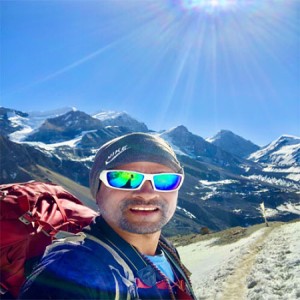
Birendra Chudal
Hello! Greetings from Nepal.
Birendra Chudal has been serving in tourism in Nepal for more than 18 years. He has walked on both famous and less-known trekking routes in Nepal. This has helped him become very good at tourism. He has learned much from his time in the field and wants to share that knowledge with others. He owns Adventure Club Trek and hopes that what he knows will be helpful to people who visit Nepal!
Drop a message
Recent posts.
- The Ultimate Guide to Everest Base Camp Helicopter Tours
- Everest Base Camp Trek for Indian Passport Holders
- "Manaslu Circuit Trek: Which Season is Right for You?"
- A Restricted Trek to the Enchanting Manaslu Region
- Everest Base Camp Trek Guide-Chose The Right Trek
- Annapurna Circuit Trek in Nepal- Solo or Do you need a Guide?
Related Posts
- News and Events
- People and Culture
- Places to See
- Things to do in Nepal
- Travel Tips
Drop Us a Message
We use cookies to ensure that we give you the best experience on our website.

Manaslu Circuit Trek - ULTIMATE GUIDE 2024-2025
- Last Updated on Nov 16, 2023
One of Nepal's most challenging and well-known off-the-beaten-path treks is the Manaslu Circuit Trek. The walk is most notable for the breathtaking views of multiple snow-capped peaks, notably Mt. Manaslu, the eighth-highest summit in the world (8,163m/26,781ft). In addition, the walk offers untouched nature, biological richness, traditional culture, unexplored pathways, a sweeping panorama, and unmatched beauty in the naturally endowed area. While trekking in the wild Manaslu region, one can feel great excitement. The walk has a lot more to offer enthusiastic and daring hikers. You must attempt the Manaslu Trek at least once in your lifetime to enjoy the peaceful walking trails, unspoiled natural beauty, and ecological balance.
The Annapurna region, Nepal's other well-known trekking zone, shares land with the entire Manaslu region. This makes the Manaslu region diversified and allows for the simultaneously creating of the Manaslu and Annapurna Circuit Trail. The Throng La Pass (5416M/17769Ft) is reached on this Annapurna trail before it descends to Muktinath or continues to the Upper Mustang Trail. Trekkers can discover the diverse native cultures and customs, the diverse flora, animals, monasteries, and the high Himalayas blanketed in snow. Spending a few more days will let you visit two well-known hiking locations on a budget.
Since hiking has just been allowed in the Manaslu region, this journey is ideal for physically fit people who enjoy being alone on the trails. Individual trekkers are still prohibited from entering several restricted areas without authorized guides registered with the government. There are still many untrodden and unknown hiking paths in this area. Trekking through the hidden valley is a genuinely daring and proud experience.
Table of Contents

Manaslu Tsum Valley Trek with Ganesh Himal Base Camp

Manaslu Circuit Trek

Manaslu Base Camp Trek with Larkya pass
Why trek to manaslu circuit .
The route leads you from the humid lowlands with their terraced fields of rice and millet through the massive gorges of the Budi Gandaki, which are home to stunning waterfalls and turquoise-colored waters. The Manaslu climb has suspension bridges unmatched in length and height, and the yearly monsoon frequently washes away smaller bridges, forcing hikers to use partially submerged boulders.
This walk still has the air of a pioneering expedition even though it was only made available to 400 trekkers at a time in 1992. The Manaslu circuit trek is a visual feast from beginning to end if you want to experience trekking in the 1980s, but you better be in shape. You make your way slowly northward to the snow-covered Larkya La Pass, close to the Tibetan border. The breathtaking views of Manaslu almost make up for the difficulties with the altitude here. Larkya La pass, at 5167 meters, is typically covered with snow and slippery. On the descent, micro crampons are frequently utilized. To reach the pass's highest peak before the winds arrive, which often come around mid-morning, a 3 am start is necessary.
While it is possible to see clearly from the pass in the direction you have come from, the most breathtaking view is seen after leaving the key and proceeding along a corridor to the west. A massive glacial cirque suddenly appears. While Annapurna II rises in front, a magnificent wall formed by Cheo Himal, Himlung Himal, Nemjung, Gyaji Kang, and Kang Guru pours down a stream of glaciers. The journey is worthwhile just for this vista. Your 15-day, all-inclusive trek can be organized with Magical Nepal. Unless you wish to deviate from the path, when camping is the sole option, the walk can be completed using teahouses.
Highlights of Manaslu Circuit Trek
- Compared to the Annapurna Circuit and Everest Base Camp, this circuit is significantly less congested. Although it is becoming more well-known, now is a perfect time to travel this circuit before it becomes more widely accepted.
- Even though the walk is wild and inaccessible, there are teahouses at every stop, so hikers don't need to pack food and tents, making it more accessible and less expensive than other treks of a similar length.
- Since there is no need for domestic aircraft, the trailhead can be reached on foot. ∙ You will pass through a subtropical jungle at lower levels before reaching the Himalayan foothills, and the panorama is constantly changing. Finally, at over 5,100 meters (17,000 feet), you will arrive at Larkya La.
- The first few days of the circuit include many suspension bridge crossings along the riverside walk in the Budi Gandaki, a deep gorge. The last few days of the walk are spent in the snow, but you may still hike in standard hiking boots while admiring the enormous snow-capped mountains on each side of the trail.
Manaslu Circuit Trekking Route
The mild hike of the Manaslu trip leads to a challenging climb. Due to its isolation and stringent trekking requirements, the Manaslu region is regarded as off the beaten path. Special permission is required for trekkers, which can only be obtained through a licensed trekking agency with a minimum of two trekkers and a local registered guide. Most of the Manaslu journey begins with a bus or jeep ride from Kathmandu to SotiKhola, where you can spend the night before starting your hike.
The Manaslu region lacks any further transportation options or airports. Starting your trek on a lowland trail will allow you to experience the variety. It will be a challenging journey to hike through the settlement and the forest. You can reach Samagaun by seeing many monasteries and chortens. On the Manaslu trail, Samagaun is a well-liked stopover that is also utilized for acclimatization before ascending the mountain. Fewer hikers dare to travel to the area despite the Manaslu trail's fame. The Manaslu trail requires special permission, which can only be obtained from a local, authorized trekking service in Nepal, and is subject to tight guidelines for trekkers.
The Manaslu region attracts few trekkers, yet because the trail is uncrowded and nature is healthy and balanced, it is in high demand. The villagers and the soldiers maintain the tracks, which are flawless and spotless. You can reach the highest point on your trek, 5100 meters above sea level, for the Larkey La Pass and descend to Jagat. You can take a car from Jagat and return to Kathmandu through Beshisahar, the administrative center for the Lamjung district. Alternatively, if time allows, you could hike the Annapurna Circuit. This will take an additional 5–6 days. Due to the proximity of the Manaslu and Annapurna regions, trekkers can complete both treks quickly.

Best Time to visit Manaslu Circuit Trek
The best times of year to visit Manaslu Circuit and Tsum Valley are considered to be autumn and spring. While spring comes before the monsoon, autumn comes after it. Although challenging, it doesn't imply that other seasons aren't appropriate.
Spring: Because of the great weather, spring is one of the best times to go hiking (late February to early June). Rhododendron flowers in bloom also adorn the forests. However, the road may still have some snow from the winter season on it.
Monsoon: Early June through late August is the monsoon season, which is wet. So, expect to encounter light to heavy rain throughout the way. Along with making the trail muddy, it might get your belongings damp. Additionally, the sky becomes hazy, obstructing all sights.
Autumn: The ideal time to trek in Manaslu is during the autumn (late August to late November). The sky is unclouded and peaceful. Like always, the vista is breathtaking.
Winter (late November to late February): Generally, higher elevations have colder temperatures all year round. However, it gets even more complex throughout the winter. The view, however, improves, and the sky is clear. However, the trail will be blocked until spring if it begins to snow.
Manaslu Circuit Trek Difficulty
The Manaslu trek is moderate to difficult in terms of difficulty. It isn't regarded as being the hardest. However, the trail's constant ascent and descent might push your limits and stamina. Trekking in the Manaslu region is both physically and mentally taxing. For those who enjoy adventure, it is ideal. A regular hiker could complete it without any problems.
However, it might be a challenging walk for newcomers. For the excursion, you might need to get ready. Before you embark on the walk, start working out and jogging. Additionally, the difficulty might vary depending on your physical condition, the weight you carry, the trail's condition (such as snow), your gear and equipment for hiking , your acclimatization process, the food you choose, and other considerations.
Due to its isolation, diversified nature, Himalayan culture and customs , magnificent rivers, breathtaking snow-covered Himalayas, and rugged Larkey La Pass , the Manaslu Circuit Trek is an adventure tour in the Himalayas. In addition, the distance of the walk, the weather during the trekking season, and altitude all have a significant role in determining the difficulty of the Manaslu Circuit Trek.

The Manaslu Circuit Trek involves around 177 kilometers of walking. This distance needs to be covered in 12 days; however, depending on your pace, you may need to go faster or slower. Your adventure begins at Larkey La Pass, where the elevation ranges from 930 to 5100 meters. As a result, you must travel 13 to 15 kilometers each day. The Manaslu Circuit Trek ranges from simple to moderately complex at higher altitudes. Therefore, before you begin your walk, ensure you are in shape enough to hike uphill daily.
Food and Accommodation in Manaslu Circuit Trek
Due to the limited food selection available when trekking the Manaslu Circuit, typical Nepali cuisine Dal Bhat Tarkari will be served. There aren't as many teahouses and dining options to pick from in Everest Region. Because fewer people visit the area as tourists than in the Everest Region .
You will be greeted upon arrival in Kathmandu , picked up, and then taken to a hotel. In Kathmandu, you stay in a hotel. In Kathmandu, there are many different kinds of hotels. There are 5-star homestay levels accessible for overnight stays. However, we typically offer 3-star accommodation with complimentary breakfast.
For foreign trekkers, Manaslu is off-limits. Due to its boundary with the Autonomous area of Tibet, there are strict regulations regarding entry into the Manaslu region. For the Manaslu circuit trip, a special permit is required. Manaslu Circuit Trail is an off-the-beaten trail because of its isolation, difficulty, and tight requirements. This trail is rarely used by hikers, making it more alone and less congested.
Furthermore, most people in this area are of Tibetan descent and practice Tibetan culture, customs, and religion. There are stunning monasteries, chortens, mani walls, etc., as well as less crowded communities. Manaslu Circuit Trek has a small number of lodges and tea shops. There will undoubtedly be fewer lodgings and amenities as you ascend the mountain. However, every resort at a higher altitude adheres to tourism requirements and is primarily run by local families.
Manaslu Circuit Trek outline Itinerary 2024-2025
Day 1:Arrive in Kathmandu
Day 2:Manaslu Restricted area preparation and briefing of Trek
Day 3:Drive to Soti Khola
Day 4:Trek Soti Khola to Machha Khola (869m)
Day 5:Machha Khola to Jagat (1410m)
Day 6:Jagat to Deng (1860m)
Day 7:Deng to Namrung (2630m)
Day 8:Namrung to Lho Gham (3180m)
Day 9:Lho Gham to Samagaon (3520m)
Day 10:Samagaon (rest day) Trek to Manaslu Base Camp or Pungyen Gompa and Birendra Tal.
Day 11:Samagaon to Samdo (3875m)
Day 12:Samdo to Larkya Phedi (4460m)
Day 13:Larkya Phedi to Bimthang (3590m) – climb the Larkya La (5160m)
Day 14:Bimthang to Tilje (2300m)
Day 15:Tilje – Chamche (1430m)
Day 16:Sharing Jeep drive to Beshisahar and Public Bus back to the capital
Day 17:Depart Kathmandu
Manaslu Circuit Trek Cost 2024-2025
The price of a Manaslu circuit trek varies depending on when and how you hike. Trekking in peak season will cost you a lot, and you'll need to pack your kit according to the conditions. The way you trek, the agency you select, the gear you bring, the length of the walk, etc., impact how much the circuit trek will cost. In addition, the final cost amount is affected by your attitude toward spending while on the walk. Making specific inquiries with the agency is the best approach to learning the pricing because the amount an agency charges you for the voyage varies for various reasons.
The peak months are March through May and September through November, with October hectic . As a result, the price you might pay at this Time is undoubtedly more significant than it would be for trekking during the off-season. You might want to think about the difficulty of trekking in other months, though. In the highlands, a few teahouses are closed from December to February. Although it's not tricky, trekking in the cold will need you to endure many hardships. In some places, you must navigate across icy sections, and the weather significantly impacts mobility. Also, remember that going on a winter trip necessitates purchasing winter-specific equipment, which could raise your overall gear cost, which, if not managed effectively, could be higher than going on a trek in another season.
Utilizing an international trekking service will increase your cost because more intermediaries will be involved in the payment process. Using a local trekking firm is essential if you want to manage your Manaslu circuit trek. You cannot complete this walk alone because the government has designated several areas in the Manaslu region as restricted. You must be trekking with a party of at least two people, and a porter guide or qualified guide must be with you at all times. Similarly to this, the fee increases with the length of the walk. But be careful not to let your desire to control costs ruin your trek carefully.
You may also need to spend some amount on other things, like on the trek.
Other Manaslu Trek Costs are:
- Manaslu trek packing list
- Electronic Charging Cost
- Hot Shower
- Tips and Donations
- Renting and Buying clothing and gear
- Gifts and Souvenirs
Manaslu Circuit Group Join Trek 2024-2025
One of Nepal's top tea house trekking routes is the Manaslu Circuit Group Join Trek. This journey is a well-known detour from the traditional Annapurna Circuit Trek . Manaslu Circuit Group Join Trek circuits in the Manaslu Mountain Range, which includes Mt. Manaslu (8156m), the eighth-highest mountain on Earth.
Because individual and solitary trekkers are not permitted in the Manaslu Circuit and Manaslu region, group join treks are crucial. However, many trekkers choose to complete this trek after arriving in Nepal. If you prefer to take on this journey alone, you can split the cost of the guides, porters, lodging, and trekking permits. Therefore, the Manaslu Circuit Group Join trek will be more affordable and enjoyable.
Manaslu Circuit Group Join Trek offers the chance to examine the distinctive nature, gorgeous mountain vistas, local peoples' culture, and way of life. The Manaslu circle walking track has beautiful plants and animals.
Requires Permit for Manaslu Circuit Trek
The Manaslu Circuit Trek is located in the region's restricted area . To enter the Manaslu region, trekkers require special permits. The price of your Manaslu Trek permit will vary according to how many days and months you visit this area. You will pass through the Manaslu region and the Annapurna region, two districts. Manaslu Circuit Trek requires three mandatory permits. The following are needed tickets for Manaslu Circuit Trek:
- Special Restricted Area Permit for Manaslu
- Manaslu Conservation Area Permit
- Annapurna Conservation Area Permit
- Trekkers' Information Management System Permit
- In addition, separate permission is required if you intend to undertake a side hike to Tsum Valley.
Guide & Porter on Manaslu Tsum valley Trek
Trekking in the Manaslu region is challenging. However, you can travel the most well-known trekking route in the world with the help of skilled team members, wholesome food and drink, relaxation, and acclimatization. As usual, the porter helps you transport your belongings. Most tour guides are knowledgeable, seasoned professionals who can quickly speak English. Remember that the director and porter are counting on receiving generous gratuities from you at the end of the trip. These people put in a ton of effort and try their best to get you and your crew to your destinations in the challenging hilly terrain.
For the Manaslu Circuit Trek, a guide is a necessity. It will help if you abode by the law since it is one that the government has imposed. Lone hikers cannot complete the walk unless they are part of a group with at least two other hikers and an experienced guide. That implies that you must also pay the Manaslu trek guide fee.
Altitude Sickness in Manaslu Circuit Trek
Of course! As you will be more than 5,000 meters above sea level, you should be concerned about altitude sickness . Altitude sickness is a common occurrence on the Manaslu trek. But there are several ways to stop it. You must first be aware of the signs of altitude sickness. Keep in mind that it might range from being normal to being critical. Among them are headaches, loss of appetite, shortness of breath, exhaustion, dizziness, and other symptoms. If your situation is urgent, you must be saved.
Altitude sickness can be avoided using a variety of treatments. First, always have a healthy diet and eat appropriately. Keep yourself hydrated at all times. Don't drink alcohol when you're higher up. Instead, slowly increase your speed as you ascend. Relax, and mentally get ready for the difficulties.
Physical Fitness For Manaslu Circuit Trek
It is unavoidably exhausting to complete a thirteen-day journey in a row, and it is unquestionably advantageous to be in shape. Remember that you exercise daily while on the trek, so you will emerge fantastically mountain-fit and weathered! Come back many kilos lighter, toned, healthy, and detoxified!
Please do plenty of walking with a day pack to prepare in advance, but don't overdo it. Although it isn't a marathon, there are plenty of hills to climb and descend! The high pass is also somewhat tricky. Carrying the bag, which weighs only about 5 kg but seems like 10 when walking uphill in the heat, works your thighs, calves, and shoulders. The days aren't too long, the route is good, and the porters are pretty helpful, but you'll appreciate this trip a lot more if you've worked on your fitness before the trip.
The pace of the walk is always leisurely, and days are typically shorter than day hikes back home. This weight is appropriate to work with because you probably carry 5 kilos in your day bag. If you're going to the gym, focus on the step machines, which strengthen the thighs and calves, and try to raise your heart rate to 50% over resting level.
Any cardiovascular exercise is beneficial, but swimming won't develop the right muscle groups. Thus it needs to be combined with other activities for maximum benefit. Body pump, Pilates, and aerobic exercise classes are all great options for preparing for a hike like this, especially ones focusing on core strength, stability, and balance.
Lightweight hiking boots with a high ankle are advised to prevent you from falling down on your ankle during the walk. Heavy footwear would be uncomfortable and heavy. Popular yet chilly in the morning are cross trainers.
Packing List for Manaslu Circuit Trek 2024-2025
The provided list comprises a comprehensive packing list for a Manaslu Circuit Trek to prevent unnecessary complications. It is a list that is advised. You are welcome to alter it to suit your preferences and needs.

- Sunhat
- Underwear
- Sports Bra
- Baselayer
- Trekking shirt
- Fleece Jacket
- Outer Jacket
- Rain jacket
- Trekking trousers and shorts
- Hand and Feet Wear
- Inner Gloves
- Outer Gloves
- Hiking socks
- Thermal socks
- Hiking boots
- Trainers or trekking sandals
- Gaiters
- Duffle bag
- Backpack
- Backpack cover
- A sturdy dry bag
- Sleeping bag
- Sleeping bag liner
- Trekking Poles
- Headlamp
- Crampons
- Microspikes
- Water bottle or Hydration Bladder Technology and others
- Camera
- Portable Charger
- Books
- Money
- Documents
- Passport
- Insurance
- Medication
- First aid kit
- Water purification tablets
- Isotonic Powder
- Toiletries
- Quick-drying towels
- Pee funnel
- Wet wipes, tissues, and hand sanitizer ∙ Lip Balm
- Tissue /toilet roll
- Deodorants
- Nail clippers
- Face and body moisturizer
- Foot powder
- Female hygiene products
- Small mirror
For more Update Follow Us on:
- Latest Update

Dipak Pande
Dipak starts to step up from potter, guide, and trekking leader to the company owner. Sometimes he share his experience with others as well as wrote in local travel news. Most of time he spend his time on mountain and his company.
Drop a message
Recent posts.
- Why Manaslu known as a killer mountain in Nepal?
- Top 20 Winter Things to Do in Nepal - Hiking & Tour
- Who conquered Annapurna base camp trail?
- How to Obtain a Naya Kanga Peak Climbing Permit?
- Responsible Trekkers- Porter Support in Nepal
- Island peak climbing cost - Guide | Permit
Related Posts
- How to prepare for successful peak climbing in Nepal ?
- Everest Trek Guide
- Latest News and Update
- Map and Itinerary
- Nepal Trekking Cost
- Peak Climbing
- Tour in Nepal
- Trekking in Nepal
We use cookies to ensure that we give you the best experience on our website.
- Kenneth (Singapore) : +6581844877
- Tania (South Africa) : +27728550118
- Robyn Bell (USA) : +1303026822303

- Why Travel With Us
- Legal Documents
- Booking Terms
- Privacy Policy
- Annapurna Circuit Trek
- Annapurna Base Camp Trek
- Short Annapurna Circuit Trek
- Ghorepani Poon Hill Sunrise Trek 9 Days
- Mardi Himal Trek
- Annapurna Base Camp Trekking
- Annapurna Nar Phu Trekking
- Annapurna Tilicho Lake Trekking
- Lantang Trek
- Langtang Himal Gosaikunda Trekking
- Langtang Tamang Heritage Trail Trekking
- Short Everest Base Camp Trek
- Everest base camp trekking
- Everest Gokyo Lake Trekking
- Everest Three High Passes
- Everest Base Camp Trek Via Gokyo
- Classic Everest Base Camp Trekking
- Everest Panorama Trekking
Manaslu Circuit Trekking
- Manaslu Circuit Tsum Valley Trek
- Manaslu Circuit Trek Via Barpak
- Manaslu Tsum Valley Trekking
- Manaslu Circuit Trek
- DHAULAGIRI CIRCUIT TREKKING
- RARA LAKE TREKKING
- Ganesh Himal Trekking
- Upper Dolpo Trek
- UPPER MUSTANG TREKKING
- Lower Dolpo Trekking
- Short Ghorepani Trek
- Nepal Tour 5 Night / 6 Days
- Everest Base Camp HelIcopter Tour
- Nepal Pilgrimage Tour
- Nepal Tour 4 Nights/5 Days
- BHAKTAPUR TOUR
- PATAN LALITPUR TOUR
- LUMBINI HISTORICAL-RELIGIOUS TOUR
- Beautiful Scenic Pokhara Tour
- Island peak climbing
- TENT PEAK CLIMB
- Mera peak climbing
- Lobuche East Peak Climbing
- Yala Peak Climbing
- Paragliding in Nepal
- Zip Flyer Nepal
- Chitwan National Park Safari
- Kosi Tappu Wildlife Safari 3 days
- Trisuli Rivers Rafting
- Kali Gandaki River Rafting
- Holy Kailash Overland Tour
- Tibet Overland 12 days
- Bhutan Cultural Tour 9 days
- Bhutan Gangtey Gogona Tour
- Special Packages
- Client Reviews
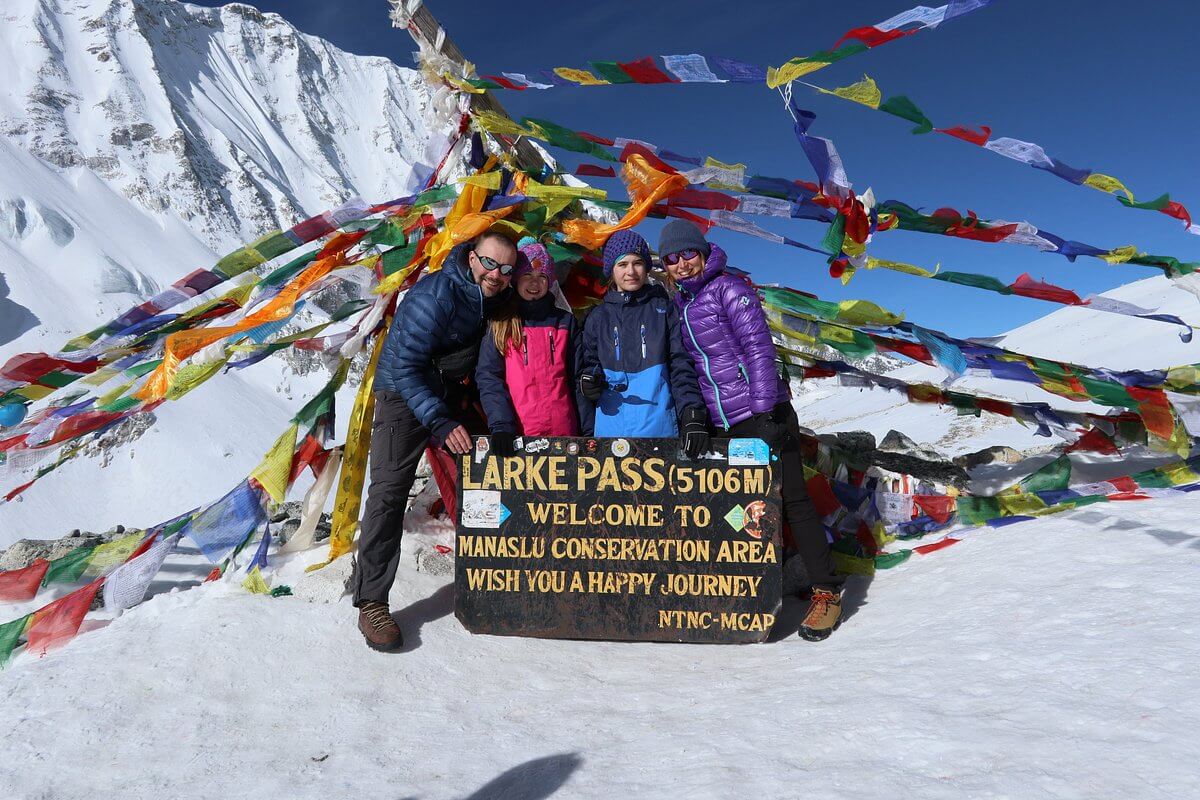
Manaslu Circuit Trekking highlights of this trek include :
- Hike at Manaslu Base Camp 4800 Meters.
- Stunning Himalayan Views: The trek offers breathtaking views of the Manaslu massif, including Manaslu itself, the eighth-highest mountain in the world. Trekkers can also enjoy panoramic views of neighboring peaks such as Himlung Himal, Manalu 8163 M, Nadi Chili 7871 m, Naike Peak & Ganesh Himal range.
- Many suspension bridge crossings : The first part of the trail follows the Buri Gandaki, a deep, long river gorge, with many suspension bridge crossings.
- Cultural Diversity: The trek takes you through various ethnic villages, allowing trekkers to experience the diverse cultures and traditions of the local people. Villages along the route are inhabited by Gurungs, Tamangs, and Sherpas, each with unique customs, festivals, and architecture.
- Less Crowded: Compared to more popular trekking routes in Nepal, such as the Everest Base Camp or Annapurna Circuit, the Manaslu Circuit is less crowded. This provides a more peaceful and remote trekking experience, allowing trekkers to immerse themselves in the natural surroundings without the hustle and bustle of larger trekking routes.
- Remote and Untouched Landscapes: The trek takes you through a range of landscapes, from lush green valleys and terraced fields to alpine forests and high mountain deserts. The remote and less-visited nature of the trail adds to its appeal for those seeking a more pristine and untouched trekking experience.
- High Mountain Passes: The challenge of crossing high mountain passes, particularly the Larkya La Pass at an elevation of 5,106 meters (16,923 feet), adds an element of adventure to the trek. Crossing these passes rewards trekkers with stunning views and a sense of accomplishment.
- Wildlife and Biodiversity : The Manaslu region is rich in biodiversity, and trekkers may encounter various species of flora and fauna along the trail. The region is a habitat for elusive wildlife such as the snow leopard, red panda, and Himalayan tahr.
- Cultural and Historical Sites : The trek passes through several ancient monasteries, chortens (Buddhist shrines), and traditional villages, providing opportunities for cultural exploration and interaction with the local communities. The historical and religious significance of these sites adds depth to the trekking experience.
- Cultural Immersion : Trekkers have the opportunity to engage with local communities, learn about their way of life, and witness traditional ceremonies and festivals. This cultural immersion adds a unique and enriching dimension to the trek.
- Special Permits and Regulations: The requirement for special permits (Manaslu Restricted Area Permit) adds a sense of exclusivity to the trek, and the regulations help in managing the number of trekkers, contributing to the preservation of the area.
- Conservation Area: The Manaslu region is designated as a conservation area, aiming to preserve the unique biodiversity and cultural heritage of the area. By trekking in this region, you contribute to the local economy and support conservation efforts.
- Off-the-Beaten-Path Experience : Manaslu Trek offers a sense of adventure and exploration as it takes you through remote and less-developed areas of Nepal. It provides a chance to escape the bustling cities and immerse yourself in the peaceful and untouched natural surroundings. Overall, the combination of natural beauty, cultural diversity, and a sense of adventure makes the Manaslu Circuit Trek a compelling choice for those seeking a unique trekking experience in the Himalayas.
Manaslu Circuit Trekking begins with the exciting and interesting drive from Kathmandu to reach warmer low areas of Gorkha Valley near the raging Buri-Gandaki River, where the walk follows the river upstream right up to its glacial source at high Manaslu Valley near Sama Gaon and Larke Phedi (bottom). A walk leads through several farm villages and terraces entering into the lovely cool forest of rhododendrons, pines, oaks, and fir tree lines then reaching into more Tibetan origin cultured villages of Buddhism religion from Dying onward past Lo-Gaon to reach Sama-Gaon, the main and large village of high Manaslu areas. With time for rest and acclimatization at Sama-Gaon explore its interesting colorful customs and monastery then head further with scenic views of The Manaslu mountain range and cultural villages of great fascinating traditions.
Manaslu Circuit Trekking which was closed to outside visitors for a long period and was re-opened in the last two decades, Mt. Manaslu was first climbed by a Japanese Expedition in 1956, the mountain stands at 8,163 m and 26, 781 ft with its range of satellite peaks includes Bouddha, Sistine, Himalchuli with other smaller mountains. The Manaslu comes from the ancient Hindu Sanskrit word Manas ‘the mind or soul of the god’ like Holy Lake Manasarovar in Tibet near Mt. Kailash, located within Nepal Mid northwest Himalayan around remote and high Gorkha district, since the areas were opened where few trekkers ventured, at present becoming more popular due to its remoteness and isolation from the outside modern world. to Larke Phedi in Dharamsala the bottom of Larke-la pass. The climb leads over Larke-la at above 5,106 m high overlooking the outstanding panorama of peaks that surround this beautiful spot festooned with Buddhist colorful prayer flags and then descends towards the Manang area and back into woodland, where the walk follows the Marysangdi River downstream after the Dharapani village to the road head for the drive back to Kathmandu after a most mesmerizing adventure on Manaslu Circuit Trekking.
Manaslu circuit trekking is difficult?
The difficulty of the Manaslu Circuit trek can vary depending on several factors such as your level of fitness, experience in trekking at high altitudes, and the specific route taken. Here are some key points to consider:
- Altitude : One of the main challenges of the Manaslu Circuit trek is the altitude. The trek reaches heights of over 5106 meters (16,400 feet) at the Larkya La pass. Altitude sickness can be a concern for some trekkers, so it’s important to acclimatize properly and be aware of the symptoms.
- Length and Duration : The trek typically takes around 12-16 days to complete, covering approximately 177 kilometers (110 miles). The duration and length of daily hikes can be physically demanding, especially in high-altitude conditions.
- Terrain and Trail Conditions : The trail includes a variety of terrain ranging from lush forests to rocky paths and glaciers. Some sections may be steep and challenging, requiring a good level of physical fitness and trekking experience.
- Weather : Weather conditions can also impact the trekking experience, with temperatures varying greatly between seasons. The trek is best done during the spring (March to May) and autumn (September to November) when the weather is more stable.
In summary, while the Manaslu Circuit trek is considered moderately to strenuously difficult due to its altitude and terrain, it is manageable for those with a good fitness level and some trekking experience. Proper preparation, including physical conditioning, acclimatization, and adherence to safety guidelines, is essential for a successful and enjoyable trek.
Which mountains can be seen from Manaslu Circuit Trek?
The Manaslu Circuit Trek offers stunning views of several majestic mountains in the Nepalese Himalayas. Some of the prominent mountains that can be seen along the trek include:
- Mount Manaslu (8,163 meters / 26,781 feet) : The trek is named after Mount Manaslu, which is the eighth-highest mountain in the world. The trek provides various perspectives of this impressive peak.
- Himlung Himal (7,126 meters / 23,379 feet) : Himlung Himal is another significant peak visible along the Manaslu Circuit. It lies to the northwest of Manaslu and adds to the breathtaking mountain scenery.
- Cheo Himal (6,820 meters / 22,373 feet) : Cheo Himal is located near the village of Samagaon on the trek route. The views of this peak, along with the surrounding landscape, are captivating.
- Ngadi Chuli (7,871 meters / 25,823 feet) : Also known as Peak 29, Ngadi Chuli is another notable mountain visible from the Manaslu Circuit. It forms part of the Manaslu Himal range.
- Himalchuli (7,893 meters / 25,896 feet) : Himalchuli is one of the highest peaks in the world and is situated to the southwest of Manaslu. It presents a striking sight from various points along the trek.
- Ganesh Himal Range : While not directly part of the Manaslu range, the Ganesh Himal peaks, including Ganesh I, Ganesh II, Ganesh III, and Ganesh IV, are also visible from certain vantage points on the trek.
- Samdo Peak, Manaslu North, Larke Peak, punkar Himal Siring Himal.
Why is Manaslu Circuit Trek a cultural experience :
- Remote Villages and Local Communities : The trek passes through numerous remote villages inhabited by ethnic groups such as the Gurungs, Tamangs, and Tibetans. These villages offer a glimpse into traditional rural life in the Himalayas. You’ll have the opportunity to interact with locals, observe their customs, and learn about their way of life.
- Buddhist Monasteries and Stupas : The Manaslu region is predominantly Buddhist, and along the trek, you’ll encounter ancient monasteries, chortens (Buddhist stupas), and prayer flags. These religious sites are integral to the local culture and provide insight into Tibetan Buddhist traditions and practices.
- Unique Festivals and Celebrations : Depending on the timing of your trek, you might have the chance to witness traditional festivals and cultural celebrations in the villages. Festivals like Lhosar (Tibetan New Year) and other local events offer a vibrant display of music, dance, and religious rituals.
- Cross-Cultural Encounters : The Manaslu Circuit Trek often brings together trekkers from various countries and cultures, fostering cross-cultural exchanges and shared experiences. This adds another layer of cultural richness to the trekking journey.
Overall, the Manaslu Circuit Trek offers not only stunning natural beauty but also a deep immersion into the unique cultural tapestry of the Nepalese Himalayas. It’s a chance to appreciate the rich traditions, spirituality, and warmth of the mountain communities that call this remote region their home.
(Video of well plan trekking organized Manaslu trek including Chitwan safari )
DAY-BY-DAY OUTLET MANASLU CIRCUIT TREK ITINERARY
Day 01: Arrive in Kathmandu 1,345 m and then transfer to respective Hotels Day 02: Free day in Kathmandu to prepare the permits Day 03: Drive to Machha-Khola 930m – 06 hrs. Day 04: Trek to Jagat 1,410m – 06 hrs. Day 05: Trek to Dyang 1,800 m – 06 hrs Day 06: Trek to Namrung 2540 m – 06 hrs Day 07: Trek to Sama-Gaon 3,530 m – 06 hrs. Day 08:Rest Day for acclimatization and local excursion to scenic viewpoints. Day 09:Trek to Samdo 3,860 m – 04 hrs Day 10: Trek to Dharamsala 4,470 m – 04 hrs. Day 11: Cross Larkya-la 5,106 m and to Bimthang 3,720 m – 08 hrs Day 12: Trek to Dharapani 1,860 m – 06 hrs. Day 13: Drive to Kathmandu and then transfer to your hotels – 06 hrs. Day 14: International departure for homeward bound or to respective countries
Note: For the Manaslu Circuit Trekking we need special Permits do we need a Passport for this so that you should be in Kathmandu a day before starting the trek?
DETAILS ITINERARY
Day 01: Arrive in Kathmandu 1,345 m and then transfer to respective Hotels On reaching Kathmandu via respective airlines well received by company guides and staff for a short drive in the hub of Kathmandu city where your hotels are located. After checking into your lovely rooms and getting refreshed join in at the hotel lobby for a group briefing regarding treks and other useful information to make your stay in Nepal enjoyable.
Day 02: Free day in Kathmandu to prepare the permits
We will collect your passports and photos to prepare your immigration permits. Original permits are needed to collect Nepal immigration permits. You can explore the town on your own. We will have a trip briefing and introductory program with your guide after the permits are collected. Meals Included: Breakfast
Day 03: Drive to Machha –Khola 930 m via Arughat - 08 hrs. ( Distance 150 Km ) Starting our fabulous adventure at Manaslu Circuit trekking taking a long and exciting overland journey to reach warmer areas of the Gorkha district at Arughat a moderate size town with sub-tropical temperature, where our drive continues on the dirt road for an hour to reach our first overnight stop at Soti-Khola a small farm village, slowly turning into a town due to motorable road facilities. Meals included: Breakfast, Lunch, and Dinner
Day 04: Trek to Jagat 1,410m - 06 hrs ( Distance 21 Km ) From these fishing villages, the morning leads following the Buri-Gandaki River upstream for a few hours, as the walk leads past Khorla Beshi a small farm village, and on a winding trail to reach Tatopani village with natural “Hot Spring,” as per time permits enjoy the warm refreshing bathe then walk uphill to Jagat village for the overnight stop. This is a nice village with many shops and stores including a fair number of simple good lodges to stay in. Meals included: Breakfast, Lunch, and Dinner
Day 05: Trek to Dyang 1,800 m - 06 hrs ( Distance 20 km ) After the pleasant stop at Jagat, the journey continues the higher walking past several farm villages and then on a downhill to cross over a bridge to reach Nagjet and Philim, a large village with many scattered farmhouses. After Philim walks into farm terraces of golden fields of wheat and barley, then climbs on rocky ridge top into the bamboo forest area to our overnight stop at Dying Village. Meals included: Breakfast, Lunch, and Dinner
Day 06: Trek to Namrung 2540 m – 06 hrs ( Distance 19 Km) A morning walk from Dyang leads to a cooler area where you can feel the rise in altitude, on entering the Himalayan alpine region, continue to walk downhill to a riverside to reach Bihi Bazaar a small village near a riverside. From here onwards encountering more villages of strong Tibetan culture, the walk leads on a gentle trail with few short ups and downs till Namrung village is reached for the overnight stop. Meals included: Breakfast, Lunch, and Dinner
Day 07: Trek to Sama Gaon 3,530 m - 05 hrs (Distance 16 km ) After Lo Gaon tree lines fade only for a few short juniper bushes and some willow trees, The walk leads on a nice path with views of peaks, and finally, the day ends at Sama Gaon for the overnight stop, this is a large mountain village located on route Manaslu base camp, Larke-la pass and to Tibet border. Meals included: Breakfast, Lunch, and Dinner
Day 08: Rest day in Sama Gaon for acclimatization
Rest Day in Sama Gaon, which is an ideal place for necessary acclimatization before the climb and to reach the high Manaslu base camp, Sama Gaon explores this interesting village similar to Tibetan culture and traditional way of life. Meals included: Breakfast, Lunch, and Dinner
Day 09: Trek to Samdo 3,780m -05 hrs. (Distnce 9 Km) After a nice stop at Sama Gaon, where our route leads to a climb to Samdu and onward, the walk to Samdu is not too far and can be done in a few hours, due to the high altitude within dry air makes the walk slower. Our route slowly leads to Samdo village which is the last village before the Larke-la base and passes, at Samdu overnight in this interesting village of strong Tibetan influence due to its closeness to the border of Tibet, where trade still exists. Meals included: Breakfast, Lunch, and Dinner Day 10: Trek to Dharmashala 4,450 m - 4 hrs (Distance 10 Km Our journey starts in the morning with a downhill trek up to Budhi Gandaki River. Then we cross the river and again march upward through Larkya Bazaar and Valley of Salka Khola towards Dharmasala which is not a lodge but an easy place to stay for a night. It is 7km away and will take about 4 hours to reach there on normal days. We have a high chance of seeing blue sheep. This place is also known as Larke Phedi. Stay overnight at Dharmasala. Meals included: Breakfast, Lunch, and Dinner Day 11: Traverse Larke passes at 5,106 m and descends to Bhimtang - at 08 hours . (Distance 24 Km ) Starting early morning to reach Larke-la Pass above 5,106 m, where the walk first heads with a gradual winding uphill, and then steep up to reach the highest point of the adventure on top of Larke-La festooned with hundreds of Buddhist colorful prayer flags marked with stones piles. From the top offers excellent views of Himlung, Cheo Himal, Kang Guru, and Annapurna II, after a great moment along descent leads you over snow and screen, to reach a valley to Garcia. Further walk on moraine leads to Tambuche at 3,900m from here short walk to our overnight stop at Bhimtang, a lovely place on a wide valley with several good lodges to stay. Meals included: Breakfast, Lunch, and Dinner Day 12: Trek to Dharapani village 1,943m. 5-6 hours. (Distance 25 Km) After a long day's walk to Bhimtang the previous day, today is an easy trek from here onward to Dharapani past a thickly forested area of pines, and rhododendron trees with a view of snow peaks From here the track leads downhill into the forest passing small summer settlement and then climb on a terraced field to Karcher La, and then down to Marsyangdi River. After a few hours' walks reach Tilje village by following Dudh (milky) river downstream, the assigned number of villages, including Thonje. From Tilje an hour's climb after crossing a bridge and then joining the main trail of the Annapurna circuit joins in Dharapani village. Dharapani a lovely large village will be a civilization after being in the complete wilderness, where one can celebrate with a beer and buy a hot shower from the lodge. Meals included: Breakfast, Lunch, and Dinner Day 13: Drive to Kathmandu and then transfer to your hotels -06 hrs (Distance 181 Km) After a marvelous experience and adventure on high hills and mountains, where morning drive brings you back to Kathmandu, at Kathmandu where our wonderful adventure concludes, with an afternoon free at leisure or last day shopping souvenirs and handicrafts. Meals included: Breakfast Day 14: International Departure for Homeward Bound Last day in Nepal in the country of high Himalayan mountains with fascinating culture, after a memorable experience and great scenic adventure on Manaslu Circuit trekking, as per your international flight time our staff will transfer you to the airport for the flight homeward bound or to your next port of call and respective countries. Meals included: Breakfast
(The usual day for a trek: Every day, our guides will come to wake you up at around 7:00-7: 30 am. In case of special days like sunrise viewing days, our guides will wake you up early in the morning at around 4-4: 30 am. A western breakfast like porridge, oats, toast, etc. will be served at around 8:00-8: 30 am. The lunch will be served from a teahouse menu at about 12-1 pm. However, lunchtime can also be postponed on request. The dinner will be served at around 8:30-9: 00 pm. Your accommodation is arranged at a lodge or also in a tourist standard hotel (subject to availability) where we stop overnight.
While you are walking, you can also request your guide to slow down and stop at the places where you want to take some snaps. After dinner and before going to bed your team leader will brief you regarding the next day’s schedule.)
THE PACKAGE INCLUDES THE FOLLOWING SERVICE
- Airports pick up and drop off, upon arrival and departure in Kathmandu.
- Pre-meeting before the trek.
- 3 Night hotel accommodation in Kathmandu with breakfast (3 Star Hotel)
- Helpful, knowledgeable, friendly, well English speaking trained, government license holder guide with all his salary, food, drinks, accommodations, and insurance
- Meals on full board ( Breakfast, Lunch, and Dinner ) with 3 times tea/coffee during the trek
- A strong, helpful porter with proper equipment (one porter for two people - porter will carry a maximum of 25 kilos )
- Seasonal fresh fruits as Available
- Guesthouse accommodation during the trek.
- 1 Well Plan Trekking T-shirt
- Kathmandu – Macha -Khola - Dharapani - Kathmandu transportation on a public vehicle
- Manaslu Special trekking permit fee.
- Manaslu Conservation Area entrance permit fee.
- Annapurna Conservation Area entrance permit fee.
- Manaslu Trekking Map
- Duffel bag
- Worst case, help with all rescue and evacuation arrangements.
- First aid medical kit and oximeter to check pulse, heart rate, and oxygen saturation at higher altitudes.
- All applicable taxes are as per the government rules and regulations.
- Well Plan Trekking trek achievement certificate after the successful trek
- Farewell dinner in Kathmandu at a cultural restaurant
OPTIONAL ADDONS (Available during check-out)
- Private Jeep
THE PACKAGE EXCLUDES THE FOLLOWING SERVICE
- International airfare
- Nepal entry visa fee (you may easily issue the visa upon your arrival at Tribhuwan International Airport - Katmandu).
- Travel and rescue insurance
- Your expenses. (Phone call, Wifi, Laundry service, bar bills, battery recharge, a bottle of water or hot water, Mineral water, Hot shower, etc.)
- All the alcoholic drinks and bar bills.
- Extra Hotel accommodation in Kathmandu because of early arrival or late departure. early arrival from the mountain (due to any reason) Than the scheduled Itinerary.
- Services not mentioned in the 'Services Includes' section ( Please ask us if you are confused about any services )
- Kathmandu lunch and Dinner
- Tips for the guide and porter.
Physically condition & experience requirements For a physically fit person of all ages with sound health who has done moderately to strenuous walking and activity before or at present. This type of trek involves long ups and downs and the length of walking will be from 5 - 7 hours every day with rest and break in between. The whole trip goes from a week to two weeks or more in the high altitude. This trip is for well-experienced people who have done previous long high hills or mountainous trekking in and around the Himalayas or other mountainous areas on rough terrains, this trip involves walking in snow and ice conditions sometimes and encountering high of over 4,000 meters passes, as for moderate people can join on this type of trips as long they are super physically fit and a mind with positive and determinations. Past hiking experience is a must but no technical skill is required for this trip .participants with pre-existing medical conditions such as heart, lung, and blood diseases should inform well plan trekking before booking the trek. we also recommend that you consult your doctors before the trip.
Accommodations on the trek
In Kathmandu, we use the deluxe hotel to ensure a comfortable stay and a relaxed environment before and after your adventure. All breakfasts are included at the hotel in Kathmandu. Rooms are generally twin share - depending on group size and room availability, the triple share may be offered at your request. A single supplement room is available at an additional cost. And on request single supplement will be charged US$200.well plan trekking will arrange clean and comfortable rooms with attached washrooms; however, teahouses in some places only have shared washing and toilet facilities. also, note that single rooms are available in the trekking regions at the lower elevation but it might be difficult to find them at higher elevations.
Meals during the trek
In the city, only breakfast is included in the trip itinerary. While on the trek, we provide good quality food in sufficient quantities from Tea Houses/Mt. lodges. We provide all meals on full board (Breakfast, Lunch, Dinner, and tea & coffee) from the teahouse menu during the trekking period. Various meals include noodles items, soups, bread, rice item, curries, spaghetti, pizza, egg items, potatoes item, pasta, the fresh vegetable so overall you have a different choice of food on the trek.
Drinking-Water Staying hydrated is important when undertaking any physical activity but particularly so at the altitude where it is generally recommended to drink at least 3-4 liters per person per day. We strongly encourage you not to buy bottled water on the trek as this contributes to the growing problem of plastic pollution in Nepal’s trekking areas. All tea houses will provide cold water free of charge if requested. Although this should not be drunk untreated, we recommend that you bring a reusable bottle with a wide opening (Nalgene or similar) with you and use a SteriPEN to treat it. A SteriPEN is a handheld UV water purifier – small, lightweight, and battery-powered so easy to pack for a trek. In Nepal’s trekking regions, most of the bottled water isn’t strictly ‘mineral water’ anyway but is UV treated, so it’s exactly the same technology. It’s quick to use, far more effective than purification tablets, and the water is ready immediately. It’s fine to use a SteriPEN on non-boiled water so long as it isn’t cloudy or full of sediment (which is uncommon in these regions).
TRAVEL & MEDICAL & TRAVEL INSURANCE
Before you book any of our trips we strongly suggest that you buy medical and travel insurance to make you stay while traveling in Nepal Himalaya or neighboring countries, which will help and support you, in case medical and travel problems arise and situations beyond the company's control. If such a situation arises with emergency evacuation, where your medical bills on using transportation services by Helicopter or other means you can directly claim from your insurance, which is to be paid by you or by your insurance company on the spot.
Where Well Plan Treks will obtain a strong letter of the incidents that occurred so that you can claim from your insurance agents. In case of mishaps and accidents or severe illness, we will contact your insurance company if it is okay to use Heli or other immediate life-saving processes and transportation to the nearest medical post and hospitals, where your insurance company will directly pay related expenses accordingly as per situations and conditions of the victims. For all trips with us, we need your contact address as well as your next of kin, family members, close relatives, or friends in case of emergency purposes.
Climate and Weather The climate of Nepal is as varied as its geography. The low-lying Terai has a sub-tropical monsoonal climate. The Himalayan foothills, where most of our treks take place, are best in the cool dry season from September to May. The traditional trekking season in Nepal is from late September to May, with October and November generally recognized as having the best weather. Spring is also a popular time of year with warmer weather and the advantage of seeing spring flowers and rhododendrons in bloom. The visibility is good, and the days are pleasantly warm, although nights can be cold, and snow is possible above 3,000 meters.
RECOMMENDED EQUIPMENT LIST
This list is a guide to help you pack for your trip. This is not intended to be a comprehensive clothing and equipment list; rather it is intended to act as a reminder of those items that we feel necessary for your comfort and convenience. we also suggest that you pack only what is necessary.
- A warm hat that covers your ears
- Headlamp with extra batteries
- Fleece jacket or sweater
- Fleece wind–stopper jacket
- Waterproof shell jacket
- Down vest and /or jacket (optional)Hands
- Lightweight gloves (water /windproof)
- Heavyweight gloves or mittens with a waterproof shell outer
- Hiking trousers
- Fleece or woolen trousers
- Lightweight thermal bottoms
- Lightweight cotton pants
- Waterproof (preferably breathable fabric )shell pants Feet
- Thin lightweight inner socks
- Heavy poly or wool socks
- Hiking boots with spare laces
- Camp shoes (sneakers and sandals)
- Sleeping bag (good to -10 degrees C de 14 degrees F)
- Fleece sleeping bag liner (optional)Toiletries
- Toothbrush /paste
- Multi-purpose soap
- Nail clippers
- Medium-sized quick-drying towel
- Face and body moisturizer
- Small mirror
- Female hygiene products
Personal hygiene
- Wet wipes (baby wipes)
- Tissue/toilet roll
- Antibacterial hand wash
- Small, personal first-aid kit (simple and light)
Extras /luxuries
- Reading book
- Trail map /guidebook
- Journal and pen
- Travel game(chess, backgammon, playing cards etc)
- Modest swimsuit
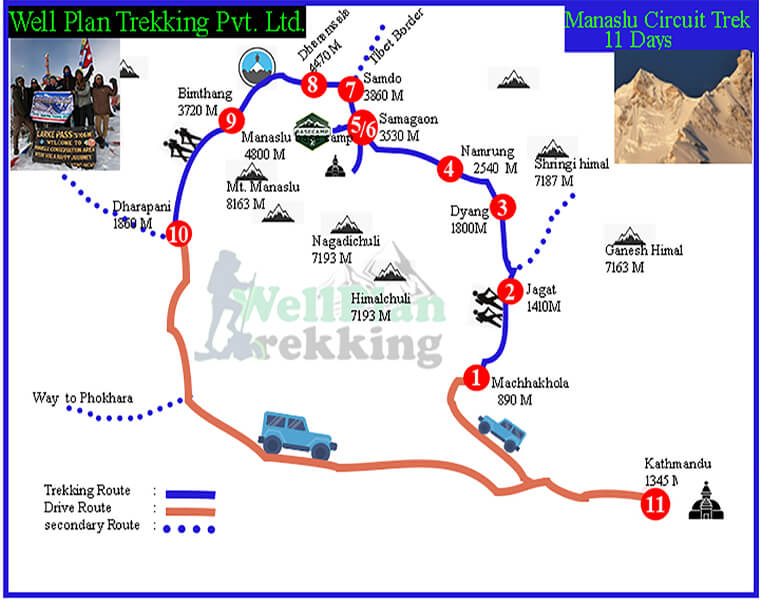
Client Reivews
Lukasz karol wysokinsk.
We decided to take the full package with Well Planned Trekking (from arrival to departure a month later at the airport), and this was a very good decision. Everything was indeed very well planned, with some time in the cities (but not too much – we preferred it that way). At the trail, the distances were perfectly calculated. A little longer at the beginning, then a little shorter when we were higher – with resting/acclimatization days at just the right moment. It did pay off to trust in Ram planning experience.
To throw some tips for the fellows who would like to repeat our trip: * the electricity is there usually, with max one-day break without * The temperature differs – on the same day we experienced 7C at the morning and over 25C (!) at noon. The coldest night was at Dharamsala: -10C. * crampons (little ones – so-called microspikes) are very helpful for Larke Pass * water is all around, so if you have chlorine tablets (or another filtering system) – you don’t need a too big a bottle * toilets are a tough experience – embrace the adventure :
Musil david
Review of well plan trekking.
Ram is the best guide. He arranges the best hotels, helps you with everything, and shows you the best places. We did the 13-day Manaslu trekking. The trekking was hard, but every time we needed something, the ram would help us right away. He told us all these facts about the places and offered us different options for the resting days. He checked our health during the trip and made sure we were all ok. The porters were very nice, and we felt like a team. Would recommend booking your trip with well plan trekking. He is as quick as possible with a reply while booking the trip, and will offer all of these good ideas to help prepare for the trip! If we would go again, for sure we will book with him again!
Ram is the best
Ram is a very skilled guide! Friendly, nice to everybody and very helpful. In moments needed he can also be strict too. Dealing with high altitude is not a joke! We will definitely come back to Nepal and book a trip with Ram! 10/10 would definitely recommend
Manaslu trekking was a great experience!
We did the Manaslu trekking with Ram as our guide. We had such a great experience. Ram is a very friendly, professional guide and made our trip a great success. I would highly recommend well plan trekking!
Well Plan Trekking arranged our trip from the first till the last second. Picked us up at the airport, guided us through Nepal and also brought us back to the airport. The service was beyond expectations and our guide and porter were the best we could hope for. Very helpful and above all very nice people.
Certainly, I would recommend Well Plan Trekking when you decide to visit Nepal.
In Nov 2021, We successfully finished Manaslu Circuit with our guide/owner Mr. Ram and 2 other porters. It was 14 days trip including transportation and in addition to this, we spent another 4 days in beautiful Chitawan National Park, where we did a lot of activities such as car safari, bird watching, walking in the jungle, etc. Mr. Ram has a lot of experience with the routes and safety was his first concern. He did everything to make us feel comfortable and he was OK to modify our initial plan. Thank you Mr. Ram for your guidance and patience. Well Plan Trekking is a well-organized company and We highly recommend this company to everyone who is planning to visit Nepal.
source TripAdvisor
Awesome trekking experience. The Manaslu circuit trek was well organized and super flexible as we were changing and adjusting the trip while trekking based on the pace and health conditions. We stopped at different spots to take pictures. There were no time limits. The team was very experienced, well-equipped, and professional. Mr. Ram took special care of the safety and comfort of the group. He was very helpful and funny. We had a good talk and laugh together during the trip. A huge thanks to Ram and his team at Well Plan Trekking for making our time in Manaslu unforgettable.Thank you for the incredible experience. I highly recommend this company!
Source TripAdvisor
Thanks to Ram WE have sent a marvelous Trek in the Manaslu Range. We made this Trek around the high pic 8163m .during 12 days. Everything was perfect, the general organization, the food, the accommodation, and the safety. The 2 last days in Kathmandu were a plus, with a pleasant farewell dîner, and a ton visit. I warmy recomend Wellplan Trekking for Trekking in Népal. Pierre Ruef.
Source tripadvisour
We spent a wonderful stay in Nepal. Ram and his team were very professional: taking care of us, were flexible to adopt the agenda, and provided a lot of advice to avoid problems. We went to 5100 m without any health problems and enjoyed ourselves a lot during our stay. On top Ram ask for a very reasonable price. I strongly recommend it!!!!!
Source TripAdvisor
This was my fifth trek in Nepal. I was delighted to be involved with Ram from Well Plan Trekking. He made the whole trip very easy and paced me through the process. Manaslu is known as the Adventure Trek. It’s not hard to see why. The valleys are steep V-shaped and the rivers are cascading torrents. As a solo trekker who used to carry all my own gear, it was a pleasant change to have only a day pack and camera. Ram organized everything with skill and humor. The planning was done online back in Sydney. All I had to do was show up! My passion is trekking and birdwatching and Manaslu is top shelf for both. Carrying a bird book and the heavy camera was well worth the effort. The trek was challenging especially in fairly deep snow. Too deep to attempt the Larke Pass. Unfortunately, we had to backtrack.
If you are looking for value, good organizational skills, and a genuinely good bloke, Ram is your man!!
Late Jan, early Feb trek
sources Tripadvisor
Wellplan Trekking lives up to its name. Planning, briefing, providing equipment, and adjusting to specific needs or opportunities, everything was well handled by Ram and his team. Good selection of lodges and food, and good recommendations on rhythm. we were 4 friends in good shape, we adjusted the program to spend more time at higher altitudes, visit the Punggen Gompa temple, and go to the Manaslu base camp. We were blessed with very good weather, an unforgettable experience.
sources Tripadvisor
We Appericate your Question

- Everest Base Camp Trek
- Everest Base Camp Trek 9 Days
- Gokyo Lake Trek - 12 Days
- Shivalaya To Everest Base Camp Trek
- Phaplu To Everest Base Camp Trek
- Everest View Trek - 5 Days
- Tengboche Monastery Trek - 9 Days
- Solo Everest Base Camp Trek
- Everest 3 High passes Trek - 19 Days
- Everest Base Camp Via Gokyo Lakes Trek
- Everest Base Camp Trek - 12 Days
- Everest Base Camp Trek - 14 Days
- Annapurna Base Camp Trek Solo
- Mohare Danda Trek - 8 Days
- Tilicho Lake Via Annapurna Thorong La Pass Trek
- Jomsom Muktinath Trek
- Ghorepani Poon Hill Trek - 7 Days
- Annapurna Circuit Trek Solo
- Annapurna Thorong La Pass Trek With Local Trekking Guide
- Annapurna Circuit Trek - 13 Days
- Annapurna Base Camp Trek - 10 Days
- Gosaikunda Lake Trek 5/6 Days
- Tamang Heritage Trail Trek - 8 Days
- Helambu Circuit Trek - 7 Days
- Langtang Valley Trek Solo
- Langtang Gosaikunda Pass Trek - 16 Days
- Langtang Gosaikunda Short Trek
- Langtang Gosaikunda Helambu Trek
- Langtang Valley Trek - 7 Days
- Langtang Valley Trek - 8 Days
- Tsum Valley Trek - 12 Days
- Manaslu Base Camp Larke La Pass Trek
Manaslu Trek - 16 Days
- Manaslu And Annapurna Circuit Trek
Manaslu Circuit Trek - 12 Days
- Manaslu Tsum valley Trekking - 22 Days
- Nar Phu Valley Via Annapurna circuit trek
- Nar Phu Valley Trek Solo - 10 Days
- Nar Phu Valley Trek
- Ruby Valley Ganesh Kunda Lake Trek
- Local Trekking Guide Service For Upper Mustang Trek
- Upper Mustang Valley Trekking
- Upper Mustang Trek
- Changu Narayan Nagarkot Day Hiking Trip
- Nagarkot Sunrise View Tour From kathmandu
- Local Culture Tour In Nepal
- Kathmandu Valley Sightseeing Tour
- Volunteer Tour In Nepal
- Mera Peak Climbing
- Paldor Peak Climbing
- Tent Peak Climbing
- Island Peak Climbing
- Yala Peak Climbing
- Best Season
- Acute Mountain Sickness
- Nepal At Glance
- Frequently Asked Questions
- Trekking Equipment
- Travel Insurance
- Nepal Visa Information
- How To Book
- Terms And Conditions
- Booking And Payment
- Privacy Policy
- Why Himalayan Local Guide
- Legal Documents
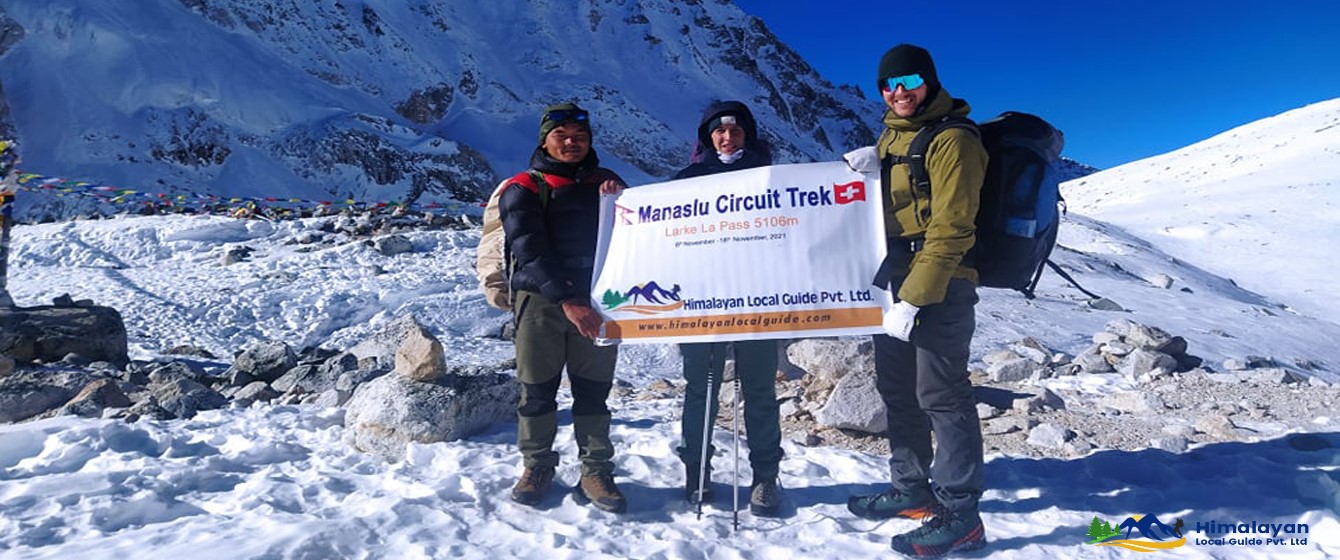
- Cost Inc/Exc
- Departure Date
- Map / Video
- Useful Info
- Manaslu Region Trekking
Duration 12 Days
Cost per Person US$ 830
- No. Of Person Per Person
- 10 & Above $830
Trip Specialist:
- Destination : Nepal
- Activity : Manaslu Region Trekking
- Duration : 12 Days
- Trip Difficulty : Challenging
- Group size : 2-20 Pax
- Accommodation : Hotel/Lodge/Tea House
- Meals included : Breakfast, Lunch & Dinner
- Transportation : Bus/Car/Taxi
- Trip starting point : Sotikhola
- Trip Ending point : Besishar
- Trip Altitude : 5106 Metres
Best season : March, April and May & September, October and November
- Scenic drive from Kathmandu to Sotikhola.
- Magnificent Himalayan views, waterfall, and landscape.
- Visit Birendra Lake.
- Magnificent views of white Snow-capped Peaks.
- Ethnic Gurungs and Tibetans Villages.
- Manaslu Larke La Pass 5,106 meters pass.
- Hike to Manaslu Base Camp 4,400 meters.
- Ancients Buddhist Gompa at Pungen Gompa.
- Beautiful typical Local Houses and Traditional Hospitality.
- Airport transportation on arrival and departure days, our staff will pick you up and drop you off.
- Arrangement Trekking equipment such as Sleeping bags and down jackets (if you do not have your own) is rental included if needed.
- First Aid Kit Medical.
- Manaslu Trekking Route Map, itinerary, and Hiking T-shirt.
- We provide an Oximeter to measure your Oxygen and Pulse at high altitude sickness to find out the accurate, your health; when you are in the Himalayas.
Trip Overview
Manaslu Circuit Trek is one of the most unique trekking packages with the assistance of our important Customers across the globe who likes to discover wild and rich cultures & territory. This journey offers you the spectacular occasion of exploring the Manaslu trip, which is astonishing by Manaslu Himal (8,163m/26,781ft) antique Buddhist monasteries, enormous towns, lakes, Rivers, Culture, and ethnicity. Manaslu Circuit trip lies inside (MCAP) Manaslu Conservation Area project, Which Was established in 1998 to conserve and protect wildlife surroundings and nature.
The 12-day Manaslu Circuit trek Itinerary starts, where driving by local bus or jeep for 7 to 8 hours to get there at Sotikhola at 730 meters. Where we spend a night, Sotikhola is a beginning stage and petite settlement situated in the Budigandaki valley for the most division, settled by Gurungs and Tibetans people groups who are one of the major from Manaslu Himalayans district fantastic for their close culture, custom, custom, and tradition of living. The path goes through the accompanying bank of river Budhi Gandaki Valley, which starts from Mt. Manaslu. Along the course, we go through various great villages inhabited by Gurungs and Tibetan Bhatia People groups.
These valley people groups are lucky for this excursion while they are extremely rich in culture and customs and observe the come to everyday life. We arrive at too high Himalayas like Namrung Town, Low, Samagaun 3500m , and Samdo 3800m are a piece of the raised ground settlement from this region. It is an astounding highlight of the trip.
Manaslu Base Camp Hiking from Sama Gaun Village:
Manaslu Circuit Trek's 12-day schedule covers many sides can travel around the Day hiking from Sama Gaun and ascend to MBC and Birendra Lake for beautiful views through your eyes, Located at 4813 meters.
The excursion is a circuit to Mt. Manaslu Mountain. Which are (8,163 m/26788.ft) the eight most noteworthy tops on the planet, Manaslu Himal is a Well-known expedition, so 4 to 6 campaign groups summit the mountain per ascending time, and it is a challenging climb expedition.
Hike to Phungen Gompa from Sama Gaun:
A day of hiking begins on a piece of the path among Samagaon. From there, it takes around one hour to arrive at a Yak pasture region and an additional one and a half hours to get there at the Gompa. It is toward the finish of a huge green level enveloped by a breathtaking peak scene. It is perhaps the greatest spot to get a point of view on Mount Manaslu, and its natural factors, but once more - the work is important minimally on a fresh morning. The Gompa integrates a little supplication hall. A few monks integrated into the mountain. There are no lodging, or workplaces here, excluding it looks like an attractive spot for camping out. Morning sees from here will probably be radiant.
Cross the Manaslu Larkya la pass (5106m):
The Manaslu Larkya La pass is one of the most difficult wonderful high passes trek in the Manaslu region. It lies between Dharmasala and Bimtang village. When you reach the top of Larkya La Pass, Really Beautiful and surrounded by the Whole Manaslu and Annapurna range Himalayas; During the winter season (December, January, and February) is hard to Cross the Larkya La Pass. Due to heavy snowfall, the trekking trail can be blocked.
Himalayan Local Guide Pvt. Ltd has local guide members and a professional team that has been; leading the diverse holidays around the Nepal Himalayas region. We have diverse multi-package treks for the Manaslu trekking. Trek customizes according to your preferences plan and holiday length as well. We manage the expert guide from the Manaslu area. So, even in such conditions, our success rate is high. Manaslu's restricted trekking destination is undoubtedly the most scenic one. It is 8th world's highest mountain Mt. Manaslu (8163m). However, some well-liked destinations around the valley easily extend your holiday.
Manaslu is one of the main; rural trekking routes in Nepal. If you take; bliss in the remote surroundings, tranquility, rambling on the dense forest, and multiethnic community. It is a superlative choice.
Peoples & Multiethnic culture of Manaslu Region routes:
Manaslu Trek Area people groups are generally busy with the tea house business and farming of their property. The vast majority of the mountain Peoples' religion follows Buddhism Bon Po. Likewise, opportunities to look at the ancient Buddhist Religions and scenes of villages, this is the fundamental fascination for vacationers to appreciate all through the excursion.
The Manaslu Circuit Trek - 12 days is one of the most mind-blowing trekking adventures through a magnificent region. This is not hesitation, the best virgin trip route. For this group trip size should be at minimum two pax or more Trekkers because it is a restricted area.
Manaslu Local Guide and Porters Cost:
- Manaslu Guide Cost is U$D: 25 per day.
- Porter Cost is U$D: 23 per day.
Communication Service during the Manaslu Trek: Wi-Fi or Data:
You can get Wi-Fi in some towns and tea houses; however, you need; to pay for internet services. One more option for the internet; you can use data via Ncell and NTC sim cards. Nonetheless, you can get it in Kathmandu, and requires a photocopy of your passport and pp size photos too.
Manaslu Trek Permit:
* Special Manaslu Permit.
* MCAP (Manaslu Conservation Area Permit).
* ACAP (Annapurna Conservation Area Permit).
The Permit should be organized in Kathmandu by Government government-registered company. Likewise, it is mandatory to take a Government Register License Holder Guide.
This trip gives you the lifetime event of screening; Wonderful all-encompassing scenes of the mountain range with glacial masses, and the most part is the chance to see the unique culture, Buddhist religious community, and Hindu sanctuary. For this trip who would like to be more relaxed or depend on their holidays in Nepal, we organize the Tsum Valley Manaslu Trek – 22 Days, the Manaslu and Annapurna Circuit Trek – 14 Days, etc.
Is Manaslu Circuit Trek Difficult?
This Trek is Nepal's preferred trekking destination in the Himalayas. Most trekkers need good health and reasonable physical fitness will be able to complete this journey without worry, and no previous trekking experience is required. However, this trip does reach an elevation higher than 5,000 meters, and it is most important to drink much water and get plenty of rest to let your body adjust naturally to the increased altitude. As always, your local trekking guide will take care of your adjustment and make sure that; you take pleasure in a safe and rewarding trek to the Nepal Himalayas.
Book the 12-day Manaslu Circuit trek with us . We make sure you are of great hospitality as well as; excellent services throughout your trekking journey. Manaslu region is a very unique and quiet place to do trekking. The comforting and peaceful feeling of the area helps you obtain magnificent; memories. Please kindly feel free to contact our travel planners.
Trip Itinerary
Day 01: arrival in kathmandu (1350meters/4,429feet)..
Our company staff will come to pick up; you up at Tribhuvan international airport. Our guide will be to stand up your name on paper so it will be easy to know; each at the airport terminal gate. He will take you to your hotel by car or van, depending on; the group's size.
Day 02: Drive from Kathmandu to Sotikhola (730m/2,395feet).
- Breakfast, Lunch & Dinner
- Hotel/Lodge/Tea House
After early morning breakfast, we will start our journey along the Prithivi highway west from the Capital city of Kathmandu, through an amazing river view crosses the Trishuli River and join Dhading Besi. We will stop along on the way for a Lunch break. After, we drive to continue to pass through the Arughat Bazzar along with a scenic drive to follow the Budi Gandaki Riverside to Arkhet and reach Soti Khola overnight at Lodge.
Day 03: Sotikhola - Machhikhola (869meters/2,851feet).
After early morning breakfast, we trek continued following the low valley to the north, having a chance to the Majestic Himalayas views from the Low place and take time to picture the Himalayas and local lifestyle houses, landscapes, waterfalls, etc. we pass the dense forest, Buddhi Gandaki valley, and hillside. We walk a series of ascents and descent leading to the typical small and beautiful village of Lapubesi. From this place, our trekking trails go to descending; to the Wide, Sandy, riverside. Which is a Beautiful place, and reach Machha Khola overnight at Lodge.
Day 04: Machhikhola - phlim (1570m/5,150feet).
Today will be more exciting. First, we will cross the suspension bridge, and our trail leads to Kholabesi. The trekking route has the chance to explore the beautiful landscape, waterfalls, and hills. After crossing the suspension bridge at Khorlabesi, our trek will continue to join the natural hot spring at the Tatopani. From the Tatopani village, we cross the again bridge and walk through passing; the delightful Village of Dovan, Thulo Dunga, and the trek continues to reach Jagat Village, where we will check the Manaslu permit there. After we trek continues to pass the Salleri village, walk along the riverside, and cross the Budhi Gandaki River on a long suspension bridge trek to Philim Village, we will stay overnight at Lodge.
Day 05: Philim village – Bhimphedi (1990meters/6,528feet).
After a delicious breakfast, We trek and continue to Ekle Bhatti. The trekking trail will get separated towards Manaslu and Tsum Valley, where you will see the trekking trail map on the board; and hike up to the left side. We will cross the then trek and continue to pass the Nayak Phedi. We lead to the dense forest of Bamboo, rhododendron, and pine forests, where we may see wildlife animals like; Musk deer, Himalayan Thars, and white and Brown monkeys near the trekking trail, after then we trek continue; to pass the Pewa, Deng, Rana Village, and reach to Bhimphedi, we will stay overnight at Lodge.
Day 06: Bhimphedi – Namrung Village (2635meters/8,645feet).
Today we will head to Namrung village; we will pass the delightful of the Ghap, and we will trek the valley becomes a steeper and long walk through bamboo, rhododendron, and pine forest, crossing the wild river a couple of times to reach Namrung village has police checkpoint for trekker’s we will go to check our Manaslu and Tsum valley special permit to there, and we will stay overnight at Lodge.
Day 07: Namrung Village – Sama Gaon (3525meters/11,564feet).
Today will be an exciting day, we will pass the beautiful Village of Lihi, Lho, and we follow the bank of; the river with views of many more peaks ahead. After a couple of hours, we will climb uphill through the forest brings us to Shayla, offering Delightful views of Phungi, Manaslu, Buddha Himal, and much more. The Village is beautiful, and we walked on the flat and reach Sama Gaun. We will stay overnight at Lodge.
Day 07: Rest Day at Sama Gaon (Exploring day).
After early morning breakfast, we will hike up to Manaslu Base Camp, 1st we walking in the pine forest to reach Birendra Lake, which is one of the most beautiful, and we can spend a few hours there. We will take a picture and climb; continue to ascend to Manaslu Base Camp. It takes around ¾ hours to climb uphill. When we reach Base Camp, we will enjoy nature and take a picture of the white snow-capped mountains. We will spend a few hours there. We trek back down to Sama Gaon. We will stay Overnight at Lodge.
Day 08: Sama Gaon – Dharam Shala (4460meters/14,632feet).
We’ll start early in the morning to head towards Samdo Village, which takes around 2 hours from Sama Gaon. After, we continue to cross the wooden bridge over the Budi Gandaki and ascend gradually up the valley. Another Buddhist mani wall marks the beginning of the ascent to the pass, crosses two streams, and witnesses the Larke la Glacier. We trek continues; to ascend and reach Dharamshala overnight at Lodge.
Day 10: Dharamshala – Cross the Larkya La Pass (5,106meters/16,751feet) – Bimtang Village (3590meters/11,778feet).
Today we will start very early in the morning. We will walk slowly and gradually uphill to Larkya La Pass (5,106 meters/16,751 feet) from sea level, from the Dharamshala to Larke la top. It will take around 4/5 hours. From the top, if the blue sky. We will be able; to see the magical panoramic mountains view of Himlung Himal, Cheo Himal, Samdo Peak, Larkya La Peak, Kanguru, and Annapurna II on the possibility. We will spend a few hours on the top enjoying and taking the Group Picture with the board of Larke la pass and beautiful mountains. Then we trek descending to reach the Bimtang village. We will stay overnight at Lodge.
Day 11: Bimtang – Dharapani (1937meters/6,354feet).
We will walk downhill through the riverside. Along the way, we will see the delightful view of mountains and ramble on the pine and rhododendron forests. It will be more; interesting while we on the jungle, and we can see wild animals like Monkeys, musk deer, leopards, jackals, mountain goats, and much more. We will stop for a lunch break at the Surki Khola. After, we trek downhill to reach Gho village. A trek descending to Dharapani Village. We will stay overnight at Lodge.
Day 12: Dharapani – Besishar (815meters) – Kathmandu.
- Breakfast & Lunch
- Jeep/Bus/Micro
After breakfast, we leave Dharapani from Besishar by local jeep or bus. It will take around 4/5 hours to drive. We pass the beautiful Marshyandi rive and the place of Chamje, Jagat, Shyange, Bhulbule, and Khudi and reach Besishar if, we can reach the Besishar before 4:00 pm. Then we will catch the microbus to Kathmandu. On the journey to Kathmandu, the road follows along the scenic Marsyangdi River valley and then meets the Trishuli River as we head west along the Prithivi Highway. The During the drive. We will have good views of lush scenery and terraced farmland.
Cost Includes
- International Airport - Hotel - Airport Pick up and drop off by private car/van/jeep / Hiace: depending on the Group Size.
- Transportation Service from Kathmandu – Soti Khola by Local Bus.
- Dharapani - Besishar by sharing jeep.
- Besishar – Kathmandu by Bus.
- A Full Board basis BLD (lunches, dinners, and breakfasts) Choose; by menu.
- Special Manaslu Permit .
- MCAP ( Manaslu Conservation Area Project) Permit.
- ACAP (Annapurna Conservation Area Project) Permit.
- The Himalayan Local Guide team is, Professional, Honest, strong, and Government trained English-speaking Guide's salary is three times the meals, Insurance, equipment, etc.
- Strong and honest porters during the trek (2 Clients for 1 Porter) .
- Tea House, Guest House, or Home Stay During the Trek.
- Assistant Guide for Group 5 or above.
- Approval of Certificate After the Successful Trekking.
- Supplementary; energy bar, crackers, Cookies, Halls, etc.
- Seasonal fruits likes; Apples, Orange, etc.
- First Aid kit box.
Cost Excludes
- Cold & Hard drinks, such as beer, mineral water, cock, Fanta Whisky, etc.
- Three times Cup of tea and coffee on your choice in every meal time.
- Personal expenses Such as (laundry, telephone, WIFI, Hot Shower, Shopping, etc.
- Your International airfare.
- Nepal visa fee.
- Hotel in Kathmandu and Pokhara .
- Trekking Equipment.
- Travel insurance is just in case.
- Tips for Guide and porters.
Fixed Departure Dates
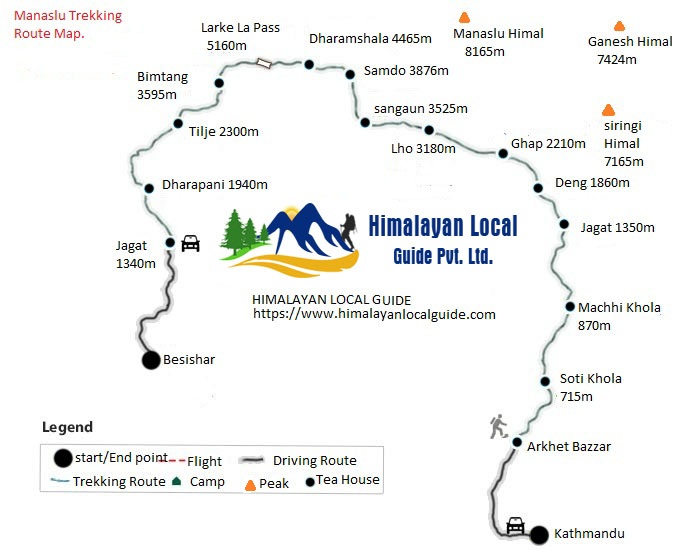
FAQ's Before Travel
Can I do Manaslu Trek solo?
No, you are not allowed a solo to trek around the Manaslu region because the Manaslu area is a restricted area. Should be a minimum of 2 pax travelers/trekkers are required. A single individual is unable to issue a special permit.
What is the highest point of the Manaslu trip?
The highest point of Manaslu trip is 5106 meters from the sea level.
Manaslu Permits Cost:
- Specail Manaslu permit Cost 100U$D per person.
- MCAP permit Costs 30 U$D Per Person.
- ACAP permit Cost 30 U$D Per person.
- TIMS Card Cost 20U$D Per person.
Do I need to take a sleeping bag during the Manaslu Region trek?
Yes, one needs to take a sleeping bag during the trek; it is difficult to get; a blanket on the lodges because so many Guides and porters do not have blankets.
Could I get a professional Guide and Porters' team for Manaslu?
Yes, we will provide you professional local trekking guide and porter team for Manaslu. Who are from the same place or the Himalayas region? Our guide has detailed knowledge of the Himalayas, is a government license holder trained, and speaks English. Our porters are helpful and friendly.
Who will come to pick up; us at the airport?
You will be picked up by; Himalayan Local Guide Pvt. Ltd staff and he will be standing at the gate with your name: on the White Paper.
How difficult is Manaslu Circuit Trek?
The Manaslu Circuit Trek is moderate in the Manaslu region. The trek is restricted, and nature trek in Nepal. Before Nepal trekking, around the Manaslu region. You; must do trained uphill and downhill; and well prepared mentally and physically.
Useful Information
6 best travel tips for manaslu circuit:.
- Take a professional Guide and Porters team.
- Do Train at your country; ascending and descending. Before coming to Nepal.
- Respect the local culture and traditions during the Nepal trip.
- Do not pack your luggage heavy, what are the necessary things you can take and unnecessary things you can leave at hotel or office.
- Bring the extra camera and headlamp batteries.
- Carry some Cash during the trek, because mountains area no Banks and ATM.
When is the best season to trek in part of the Manaslu?
The best season to trek in the Manaslu region is during the spring; (March, April to May) and autumn (September, October to November).
Spring (March, April to May):
During spring, the weather in the Manaslu region starts to warm up, and the snow begins to melt, blue sky, making it an ideal time for this trek. The temperature gradually increases, and the pine and rhododendron forests come alive with colorful blooms, adding to the scenic beauty of; the area. The skies are overall clear and; provide magnificent views of the surrounding mountains, including Siringi Himal, Ganesh Himal, Buddha Himal, and Manaslu. However, keep in mind. That spring is also the season for occasional rain showers, so be prepared for some precipitation.
Autumn (September, October to November):
Autumn is widely considered the best season to trek in the Manaslu area. The weather is stable clear skies and mild temperatures, making it comfortable during the day and sleeping at night. The views are normally at their good during this season time, and the trekking routes are dry and unchallenging to navigate compared to the monsoon season. Autumn season is also the time for numerous festivals in Nepal, and you may travel/trekkers have the chance to observe and join in local celebrations.
It's important to note that the Manaslu region is a restricted trekking area, and acquiring a special Manaslu permit is necessary. As well as, weather conditions can change, and it's always a good idea to check the latest updates and talk with local trekking companies or guides before planning your Nepal trekking or tours.
Travel insurance for Manaslu Region Trekking:
Travel insurance is mandatory to join adventure in Manaslu Himalayas region. We do not sell travel insurance here. We recommend some of our favorite providers. When you purchase a travel insurance privacy policy, make sure you are covered by; the following contingencies:
- Medical treatment and evacuation.
- Repatriation
- Emergency helicopter rescue.
- Trekking and climbing.
You; need to get a higher tier of travel insurance to have these activities covered; at a high elevation. For the Manaslu trekking, we recommend securing insurance to; cover your trip activities; of more than 6,000m/19,685 feet. Luckily travel insurance policy is easy to obtain online, and you can compare coverage between packages rapidly and easily trekking; the defense of travel insurance will assure; you’re quiet of mind and protect you in the not likely incident that you need to file maintenance.
AMS – Acute Mountain Sickness:
Acute mountain sickness; (AMS) or altitude sickness is a risk even when traveling to high altitudes. The region following getting AMS is that the body does not change at lower altitudes, and the result can be boring. It is one of the most important; to take appropriate measures on time, Ahead at Altitude with a constant pace and good acclimatization days will be helping; to reduce the chances of getting AMS.
The Main symptoms of altitude sickness:
* Difficulty sleeping
* Dizziness
* Lightheadedness
* Loss of appetite
* Difficult to breath
Preventive measures:
- Do not drink alcoholic beverages at high altitudes.
- Keep yourself hydrated.
- Do Acclimatize from low to high altitudes; and back to sleep at the low.
- Do not walk more than 500 meters a day.
- Don't walk too fast at high altitudes.
- Walk slowly, at high elevations, and keep walking.
- Do not walk alone on the way.
- Inform your guide as soon as you have got any high altitude sickness.
- Drink plenty of boiled water or hot tea.
- Take garlic soup and Ginger tea; it is high altitude sickness medicines
Necessary documents For Manaslu trek:
- Insurance paper.
- Passport-sized Photos.
- Special Manaslu Permit.
- MCAP Permit.
- ACAP Permit.
TREKKING EQUIPMENT LIST FOR MANSLU CIRCUIT:
Body Clothing:
- Sleeping Bag
- Down Jacket
- Three pairs of trekking T-shirts
- Long-sleeved shirts
- Thermal Shirt for Colder place
- Fleece Jacket
- Warm wool Sweaters
- Waterproof and windproof Jacket
- Cotton Trekking pants with folding
- Waterproof and windproof pants
Head and Face:
- Wool or fleece hat
- Sunscreen 50
- Face wipes and towel
List of Footwear:
- Trekking Boats
- ¾ Paris Cotton Socks
- One pair of extra Sport Shoes
Necessary Gears:
- Gaiters just in case snow
- Gloves and Thick Gloves
- Big rucksack above the 40 L
- Waterproof Bag Cover
- Trekking Pole (if you needed)
- Laundry Soap
- Toilet papers
- Water pearls
- Bottle for drinking water
- Pen and NoteBook
- Copy and Tourist Guide Book
- Battery charger
- Memory card
- Cell Phone and Charger
- Money Wallet
- Altimeters and Playing card
First aid Kid:
- Cotton bandages
- Paracetamol
- Painkillers
- Loperamide to Control diarrhea (just in case).
- Water purified tablets
- Elastic bandages
- Thermometer
- Moleskin and sling.
Trip Gallery
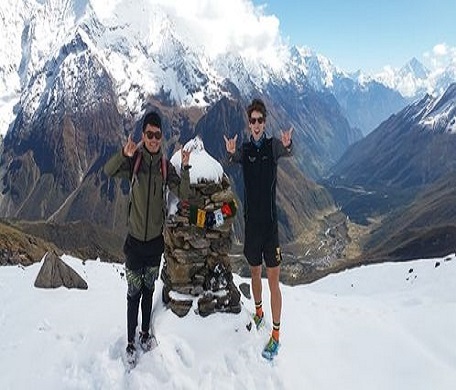
Trip Review
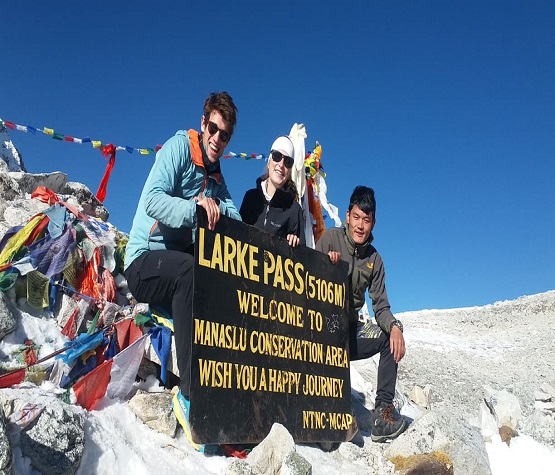
We had a fantastic experience with Himalayan Local Guide! Our Manaslu trek was flawlessly coordinated by Chitra via email and in person, and we loved our guide Arpan Gurung! He was kind, attentive and knowledgeable. We cannot recommend him highly enough!
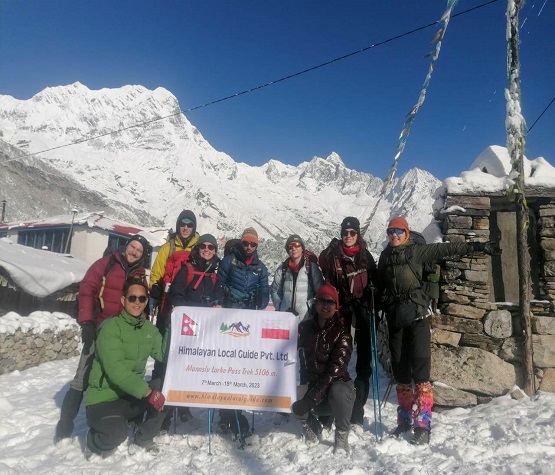
We are very grateful for the trip. Preparation of the trip and contact with the agency on a great, international level. The proposed Kirshin was a wonderful guide. He took responsibility for us, he helped us in difficult times. He helped us warm up physically every day and guided us psychologically through the evening summaries of the day. At the right moment, he ordered a retreat from the Mountains, due to the bad weather and our condition, which was a difficult and right decision. Also the porter, Rames, was a great traveling companion, full of smiles and good energy. It was a unique adventure for our group.
You May Also Like
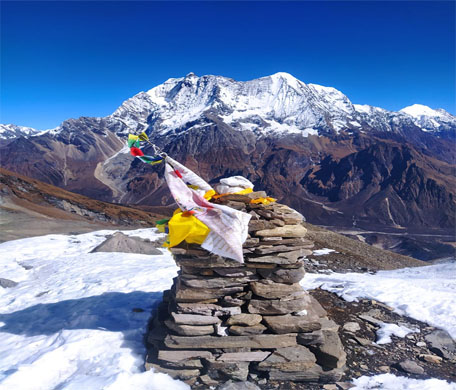
Manaslu And Annapurna Cir...
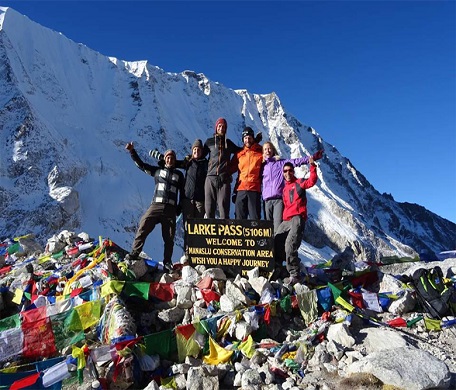
Manaslu Tsum valley Trekk...
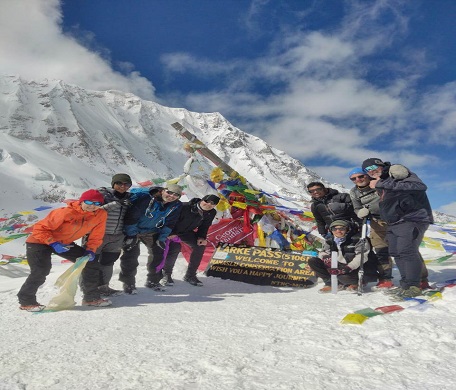
Manaslu Base Camp Larke L...
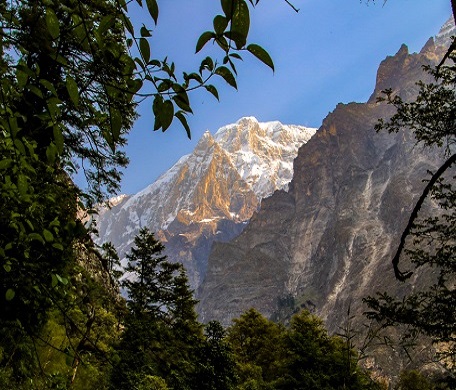
Tsum Valley Trek - 12 Day...
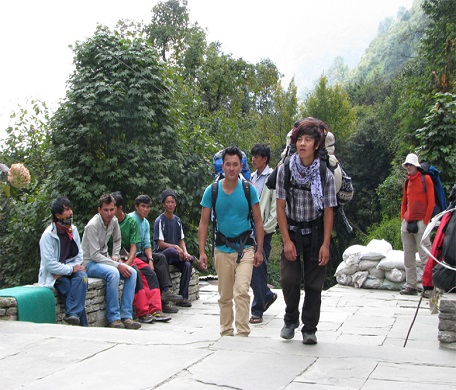
Manaslu Local Guide
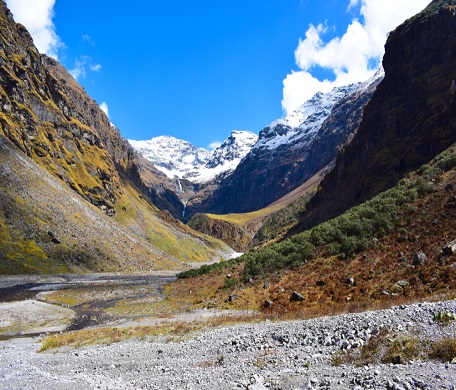
Rupina La Pass Trek Itine...
Quick links, useful links, booking information, about company.
- Company Profile

Address: Sorekhutte, Kathmandu
Phone: +9779818141334
E-mail: [email protected]
Associated with Following Company
Follow us on folloiwng links, payment options.

© Copyright 2024 Himalayan Local Guide. All rights reserved. | Developed by : Web Design In Nepal
Quick Inquiry

Manaslu Circuit Treks
Trek For All
Best Time for Manaslu Trek: A Season-by-Season Guide
Discover the best time for Manaslu trek with this comprehensive guide. Learn about the unique advantages and challenges of trekking during autumn, winter, spring, and summer, and choose the best season for your adventure. Start planning your trek today!
The Manaslu Circuit trek is a once-in-a-lifetime experience, offering breathtaking mountain views, diverse landscapes, and a rich cultural heritage. To make the most of your journey, it is essential to choose the best time for Manaslu Trek. There are several factors to consider when planning your trip, such as the weather, temperatures, and crowds.
The weather in the Manaslu region can vary greatly depending on the time of year. During the monsoon season, which runs from June to September, the region experiences heavy rainfall and increased humidity, making the trails muddy and challenging to navigate. On the other hand, the winter months of December to February are characterized by heavy snowfall, making the trek difficult and even dangerous in some areas.
The temperature also plays an important role in determining the best time for Manaslu trek. During the summer months, the temperature is warm and pleasant, making the trek enjoyable and less strenuous. However, as the temperature drops in the winter, the conditions can become harsh and unforgiving, especially at higher elevations.
Crowds are another factor to consider when planning your Manaslu Circuit Trek . During peak tourist season, the trails can become congested, making for a less enjoyable experience. On the other hand, trekking during the off-peak season can offer a more peaceful and intimate experience.
So, the best time for Manaslu trek depends on your personal preferences and what you hope to achieve from your journey. Whether you’re looking for clear skies, ideal temperatures, or reduced crowds, there is a perfect time for everyone to trek Manaslu Circuit. This guide will help you determine the best time for your individual needs and make the most of your Manaslu trekking experience.
Let’s have an in-depth look at the weather conditions during each season in Manaslu!
Table of Contents
Manaslu Trek During Summer
Planning the Manaslu trek during the summer season, from June to August, offers a unique and memorable experience. With warm temperatures and clear skies, this is the perfect time to enjoy the stunning mountain scenery and rich cultural heritage of the region.
One of the biggest advantages of hiking Manaslu during the summer is the pleasant weather conditions. The warm temperatures make the journey easier and more enjoyable, allowing you to take your time and savor the experience. With clear skies, the views of the surrounding mountains are unobstructed and truly breathtaking.
Another advantage of Manaslu Circuit Trek during the summer is the reduced risk of snow and ice on the trails. This makes the trek safer and easier to navigate, allowing you to focus on enjoying the journey. The lush vegetation and blooming flowers add to the beauty of the region, making the trek a feast for the senses.
However, it is important to note that the Manaslu Circuit trek during the summer can also bring some challenges. With the increase in tourists, the trails can become more crowded, making the trek less peaceful and intimate. Additionally, warmer temperatures can also lead to increased humidity and the presence of mosquitoes and other insects.
Despite these challenges, Manaslu during the summer is a truly unforgettable experience. With the warm temperatures and clear skies, this is the perfect time to immerse yourself in the beauty and culture of the region. Whether you’re a seasoned trekker or a first-timer, trekking Manaslu during the summer season is a journey you won’t soon forget.
Difficulty Level: Challenging During the summer months, the Manaslu Trek can be quite challenging due to the monsoon season. The trail can be slippery and muddy, and there is a higher risk of landslides and avalanches. The heat and humidity can also make the trek more difficult.

Manaslu Trek During Winter
Trekking in Manaslu during the winter months, from December to February, can be a distinctive and testing adventure. The rough weather and snow-covered trails demand adequate preparation, unwavering commitment, and a spirit of exploration.
One of the significant benefits of the trek to Manaslu during the winter is the reduced number of visitors. This can offer a quieter and more intimate experience, enabling you to entirely immerse yourself in the region’s beauty and culture. The snow-covered terrain creates a winter wonderland, presenting a genuinely enchanting experience.
Additionally, Manaslu Circuit trekking during the winter provides an opportunity to breathe in the crisp and clear air. The low humidity and chilly temperatures create optimal trekking conditions, providing unobstructed views of the magnificent mountainous surroundings.
However, it’s crucial to acknowledge that Manaslu during the winter is not an undertaking for the faint-hearted. The tough terrain and snowy trails can render the journey challenging, and certain areas may even be hazardous. The frigid temperatures also pose a potential threat, making it essential to have suitable gear and attire to ensure warmth and safety.

Notwithstanding these obstacles, trekking Manaslu Circuit during the winter season is an unforgettable experience. The invigorating, clear air and breathtaking winter scenery create a test of endurance that will reward you with memories that will last a lifetime. Whether you’re an experienced trekker or an adventurous explorer, trekking this region during the winter season is a challenge that is undoubtedly worth taking.
Difficulty Level: Very Challenging Winter in the Manaslu region can be harsh, with temperatures dropping well below freezing at higher elevations. The trail can be covered in snow and ice, making it more challenging to navigate. However, the clear skies and snow-covered scenery can be breathtaking.
Manaslu Trek During Autumn
The autumn season, from September to November, offers a unique and breathtaking experience. With clear skies and moderate temperatures, this is the perfect time to enjoy the stunning mountain scenery and rich cultural heritage of the region. This is the Best Time for Manaslu Trek.
During the autumn season, the Manaslu region lights up with clear skies with moderate temperatures. The mild weather conditions make the journey easier and more enjoyable, allowing you to take your time and savor the experience. With clear skies, the views of the surrounding mountains are unobstructed and truly breathtaking.
Another advantage during the autumn season is the changing leaves and vibrant colors of the foliage. The forests and meadows come alive with a burst of color, adding to the beauty and diversity of the region. The monsoon season has ended, and the trails are dry, making the trek easier and safer to navigate.
However, it is also important to note that trekking during the autumn season can also bring some challenges. With the increase in tourists, the trails can become more crowded, making the trek less peaceful and intimate. The cooler temperatures can also pose a challenge, requiring proper gear and clothing to stay warm and comfortable.

All in all, Manaslu during the autumn season is a truly unforgettable experience. With clear skies, moderate temperatures, and stunning fall landscapes, this is a journey that will leave you with memories that will last a lifetime. Whether you’re a seasoned trekker or a first-timer, trekking Manaslu during the autumn season is a journey worth taking.
Difficulty Level: Moderately Challenging Autumn is considered the best season for the Manaslu Trek, as the weather is generally dry and clear, with moderate temperatures. The trail is well-defined and the views of the mountains are stunning. However, the trek can still be challenging due to the high altitude and long days of hiking.
Manaslu Trek During Spring
Trekking Manaslu during the spring season, from March to May, offers a unique and vibrant experience. With clear skies, warm temperatures, and the blooming of spring flowers, this is the perfect time to enjoy the stunning mountain scenery and rich cultural heritage of the region. March to May is also the next Best Time for Manaslu Circuit Trek .
Along with spring, comes the warm temperature and clear blue skies. The mild weather conditions make the journey easier and more enjoyable, allowing you to take your time and savor the experience. With clear skies, the views of the surrounding mountains are unobstructed and truly breathtaking.
Another advantage during the spring season is the blooming of spring flowers. The forests and meadows come alive with a burst of color, adding to the beauty and diversity of the region. The warmer temperatures also make the journey easier, allowing for a more relaxed pace.
Nonetheless, it is important to note during the spring season can also bring some challenges. With the increase in tourists, the trails can become more crowded, making the trek less peaceful and intimate. Additionally, the warmer temperatures can also bring rain and mud, making the trails more slippery and challenging to navigate.
However, trekking Manaslu during the spring season is a truly unforgettable experience. With the clear skies, warm temperatures, and stunning spring landscapes, this is a journey that will leave you with memories that will last a lifetime. Whether you’re a seasoned trekker or a first-timer, trekking Manaslu during the spring season is a journey worth taking.

Difficulty Level: Moderately Challenging Spring is another popular season for the Manaslu Trek, as the weather is mild and the rhododendron flowers are in bloom. The trail can be muddy in some areas due to melting snow, but the scenery is beautiful. However, the trek can still be challenging due to the high altitude and long days of hiking.

Manaslu Circuit Trek
Related: Everything you should know about Manaslu Circuit Trek in 2023
In conclusion, the best time for Manaslu trek depends on your personal preferences and the type of experience you are looking for. Each season offers its own unique advantages and challenges, and the decision of when to trek should be based on your individual needs and goals.
If you are looking for clear skies and moderate temperatures, autumn is the best time for Manaslu trek. If you want to experience the vibrant colors and blooming of spring flowers, spring is the ideal season. If you enjoy the snow and cooler temperatures, winter is the perfect time for the Manaslu Circuit trek.
Regardless of when you decide to trek, Manaslu offers a truly unforgettable experience. With its stunning mountain scenery, rich cultural heritage, and diverse landscapes, this is a journey that will leave you with memories that will last a lifetime. So, whether you choose to trek in autumn, spring, or winter, Manaslu is the perfect destination for an adventure of a lifetime.
If you still have any queries regarding the cost of the Manaslu Circuit Trek, please feel free to contact us . at [email protected] or call us directly at +977 9851179975 or WhatsApp us at +977 9851179975 . Happy Traveling!
Keep Reading See All

Your Ground Transport Journey to Manaslu & Tsum Valley

Manaslu Circuit Trek Difficulty: Navigating the Challenges
Leave a reply … cancel reply.
Your email address will not be published. Required fields are marked *
Notify me of follow-up comments by email.
Notify me of new posts by email.
Manaslu Circuit Trek Guide

Are you about to go on a Manaslu Circuit Trek ? If yes, then you are in the right place. The Manaslu Trekking Circuit is a popular trekking circuit in Nepal. It is a restricted area. Without a permit, no one can enter the Manaslu Circuit area. You must have a permit to enter the area. It is protected under the Manaslu Conservation Area. So it is mandatory to have a Manaslu Circuit Trek Guide.
The Manaslu Base Camp area has many untouched natural areas. These areas are still remote and need to be explored more. The Manaslu trekking circuit is becoming more popular. People prefer to trek to this Manaslu Circuit Region because it is less crowded. We, Himalayan Masters, will help you find the perfect guide for the Manaslu Circuit trek.
Why do you need a guide for Manaslu Circuit Trek?
As mentioned above, the Manaslu Circuit area is restricted, and a permit is required to enter the area. To obtain the permit, you will require a guide. Here are some major reasons why you require a Manaslu circuit trek guide:
The Manaslu Trekking Circuit is a restricted area of Nepal. Various kinds of wildlife live there, and many places in the region still need to be explored. So, to trek through safe routes and abide by the Nepal government’s rules, you will require a Manaslu Circuit trek guide. The area is less crowded, and there are tea houses on the Manaslu Circuit path, but your safety still needs to be secured.
2. To obtain Permits
You will require a Manaslu Circuit Trek guide to obtain the permits. To trek in the Manaslu area, you must have a licensed guide. Your guide will help you get the Manaslu Circuit permits , so you do not need to worry much about the permits.
3. For accommodation and food
You will need a Manaslu Circuit trek guide to arrange the food and accommodation . They will help you to manage the food on the circuit. The guide will manage the accommodation and will help provide the best food and sleeping facilities.
4. To abide by the rules of the government
Since the Manaslu region is restricted, you will require a Manaslu Circuit trek guide to go on the trek. The government doesn’t allow solo treks in the region. A trekking partner or a group of people must be trekking in the Manaslu region. You will also require a licensed guide and an authorized licensed trekking agency for your trek.
How do you hire a guide for Manaslu Circuit Trek?
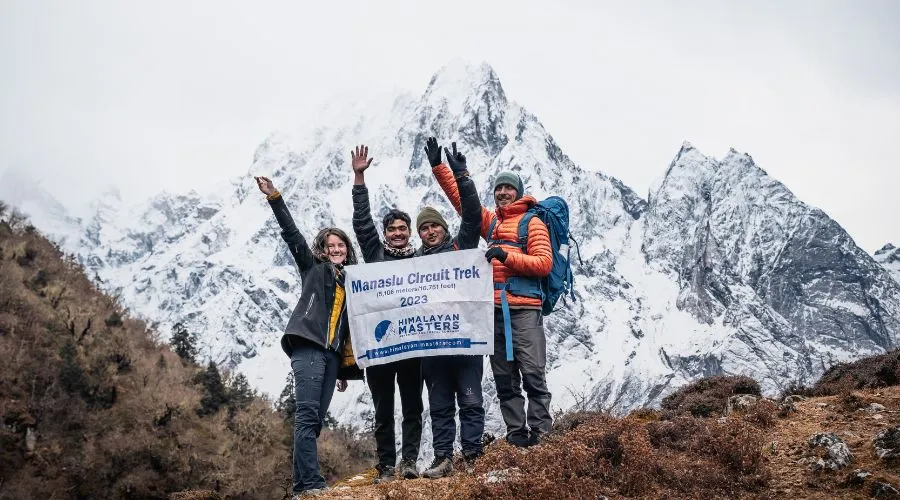
You need to take care of certain things when hiring a guide for the Manaslu Circuit trek . You must consider choosing the right and best guide for your trek. You can hire a private guide for the Manaslu Circuit trek if you want. With Himalayan Masters, we will provide you with the best and most experienced guide who will ensure your safety during the trek. You do not need to worry about the guide. We will provide you with the best guide ourselves.
How do you choose the right guide for the Manaslu Circuit Trek?
To trek in the Manaslu region, you must have a proper guide with you. Certain rules must be followed. A Manaslu Circuit Guide must have a license to trek in the region. If you hire a guide for your trek, you will always be safe. They have a vast knowledge of the region and are eager to help you with the difficulties faced during the trek. Himalayan Masters provides you with the best licensed guide who has worked for many years or even decades.
What is the responsibility of the guide for Manaslu Circuit Trek?
A guide must be your close friend while you are on the trek. A guide is responsible for every small event in the trek. Here are some other responsibilities of a guide for the Manaslu Circuit trek:
1. Accommodation and food
A guide for the Manaslu Circuit trek is responsible for managing your food and accommodation during the trek. He/she will help arrange the best food and accommodation for you. They have a mutual and cultural connection with the local people there, so it will be easier for them to arrange food and accommodation for you.
2. Direct you along the trail
A Manaslu Circuit trek guide is responsible for directing you during the trek. They have more knowledge about the paths of the Manaslu region. Also, the Manaslu circuit area is restricted, so it will be difficult for you to follow the path and reach your destination. So, a Manaslu guide will help you follow the correct path for the trek.
3. Get your permit
If you hire a private guide, he or she may help manage your permits. But if you are trekking through a travel agency like us, Himalayan Masters, you will have a licensed guide to help you get your permits. All the permits and paperwork will be made ready by the guide.
4. Acknowledge you
A guide will help you learn every detail of the trek and solve your issues. You will be aware of the cultural beliefs of the trekking area. The guide will discuss norms, traditions, and cultures, the foods, their making process, the mountains, their heights, altitude sickness, and more. Our Manaslu Circuit trek guide will give you all the information you need.
Manaslu Circuit trek porter and their responsibility

Manaslu Circuit trek porters are responsible for carrying your baggage and luggage on the trek. They will make sure to help you with carrying all your bags during the Manaslu Trek. If you have difficulty carrying your bags, you can hire a porter for help. They will carry up to 20 kg of weight. Tipping a porter is compulsory during the trek. They also know the circuit but as little as a guide does. You may get a licensed porter or a local porter. It depends on you. Certified porters are more trustworthy.
Manaslu circuit trek without a guide
A Manaslu Circuit trek without a guide is not possible. As the Manaslu region is restricted, you must have a guide during the trek. Solo trekking in the Manaslu area is not allowed. The government of Nepal has prohibited solo treks in Manaslu. The government of Nepal has introduced online trekking permit system for these restricted areas. So, you must have a licensed and certified guide on the trek. Also, you should have a partner for the trek. These rules are made to ensure your safety around the Manaslu trek.
Manaslu Circuit Trek Guide Cost: How and when to pay?
Manaslu Circuit Trek Guide cost depends on various factors. There are certain levels of guidance: expert, licensed, and local. The experts are the ones who have more than ten years of experience. They have a high level of expertise in the guiding field.
Licensed guides are those who have trekking licenses provided by the government of Nepal. The local guides are the local people who know the circuit area and may or may not have a license.
The Manaslu Circuit trek guide costs around $25- $30 per day. You do not need to pay for their food or accommodation. The cost includes their food and accommodation. Tipping is compulsory for the guides. There is no minimum rate for tipping. It depends on the tourists who tip the guide. Usually, the tourists tip the guide based on their work.
You will pay the guides at the end of the trek. If you are happy with their work, you can give them the tip you want.
List of 13 days Manaslu Circuit trek Itinerary
Day 01: Drive from Kathmandu to Maccha Khola via Soti Khola (930m)
Day 02: Trek from Machha Khola to Jagat (1340 m)
Day 03: Trek from Jagat to Deng (Dyang) (1860 m)
Day 04: Trek from Deng to Namrung (2660 m)
Day 05: Trek from Namrung to Shyala Village (3420 m)
Day 06: Trek to Samagoun (3540 meters) via Pungen Monastery
Day 07: Rest at Samagoun/ Trip to Manaslu Base Camp
Day 08: Trek from Sama Gaun to Samdo (3860 m)
Day 09: Rest Day at Samdo (3860 m) (Acclimatization Hike to Tibet Border)
Day 10: Trek from Samdo to Dharamasala (4480 m)
Day 11: Trek from Dharamasala to Bhimtang (3750 m) via Larke Pass (5160 m)
Day 12: Trek from Bhimtang to Tilje Village (2550 m).
Day 13: Drive from Beshisahar to Kathmandu or Pokhara
Manaslu circuit trek permit and how a Guide can help
To trek in the Manaslu region, you need two permits: the Manaslu Restricted Permit and the Annapurna Conservation Area Permit. These permits help protect the area and ensure that trekkers are safe. Having a guide with you can be helpful. They know the area well and can help you navigate the trails safely. They can also help you communicate with the locals, who mostly speak Nepali. Overall, having a guide can make your trek more enjoyable and worry-free.
A Guide to the Manaslu Circuit Trek can also help you find accommodation and food. They can also provide information about the local culture and history, making your trek more meaningful. Plus, having a guide means having someone with you in an emergency, which can be a significant relief when trekking in a remote area like Manaslu.
You’ll need a permit to trek the Manaslu Circuit in Nepal. This permit helps regulate the number of people trekking in the area and ensures their safety. It’s like a ticket that allows you to explore this beautiful part of the world.
Having a guide can improve your trekking experience. They know the area well and can show you the best paths. They can also share interesting stories and information about the places you visit, making your journey more enjoyable and informative. So, if you plan to trek the Manaslu Circuit, get your permit and consider hiring a guide. It’ll enhance your experience and help you make the most of your adventure in this stunning region of Nepal.
What you should expect from the guide?
Your guide is a friend to you. Guide will be able to manage every ups and downs during the trek. Trekkers can expect their guide to be cheerful, knowledgeable, and honest. Having a licensed trek guide for the Manaslu circuit trek is compulsory. The trekkers expect their guide to have vast knowledge about the circuit and the trails. A guide should be cheerful and honest. They want to have a clear communication. They expect their trek guide to be able to understand them.
What does the guide expect from you?
A guide for the Manaslu Circuit Trek also expects something from their fellow trekkers. They expect trekkers to respect them. A guide does a lot for the trekkers and ensures their safety, so the guide wants to be respected. They also wish the trekkers to understand them, as English is not their native language. Sometimes, the guide’s language may need to be more fluent. So, the guide expects you to understand what they are trying to say to the trekkers.
Certain rules and regulations apply to trekking in these restricted areas. The guide wants the trekkers to respect and abide by these rules. You must also respect the guide’s and the whole place’s cultural thoughts and beliefs.
Himalayan Masters guide team
Himalayan Masters has a team of very experienced and skilled guides. They try to provide you with the best memorable Manaslu circuit trek. We have many guides who are responsible for trekking you through the best views. Also, we have a success rate of 97% and will make sure to take good care of your safety, Which is our primary priority. Our team has an excellent success rate. Himalayan Masters will help you with every query for the Manaslu Circuit Trek.
Is it possible to do the Manaslu trek without a Guide?
No, it is not possible to trek without a guide in the region. The Manaslu Circuit area is a restricted area. So, you will require a licensed guide to trek in the region. So, it is probably impossible to trek without a guide in the Manaslu region. You need to have a licensed guide mandatory. So, you can trek to the Manaslu circuit area with a guide, a trekking partner, or a group.
How much do you tip for the Manaslu guide and porter?
There is no fixed rate for tips for the Manaslu guide and porter. However, a company policy is that around 10-15% of the total trek cost should be given to the Manaslu guide and porter. The tip depends on the trekker, the type of guide, and the porter they have. If the trekkers like the service the guide or porter gives, they will give a large tip. So, to get a large tip, the guide should do their work accordingly.
What language a Manaslu Circuit Trek Guide can speak?
A Manaslu Trek guide can speak languages based on the trekkers. Nepali is the native language of the guide in the Manaslu circuit trek. So, the local people and guide are proficient in Nepali. Besides Nepali, they also speak English and Hindi.
Some guides may also speak Spanish, French, Chinese, Japanese, and other languages. The Manaslu guide is not very proficient in these languages, but as we say, communication is the key. They try to help trekkers understand their language in various ways.
What will the Manaslu Circuit Trek Guide not do for you?
The Manaslu guide is not responsible for the flight tickets and transportation inside the city. They are only responsible for the transportation inside the trekking routes, starting and ending points. The Manaslu guide does not manage your travel package. The company manages and makes the tours and packages instead of the guides.
Leave Your Comment
Swostika is a content writer at Himalayan Masters as well as a travel enthusiast. She loves to travel and learn about different cultures and people. With a love for writing, traveling, and embracing diverse cultures, she is on a journey to explore and inspire through words.
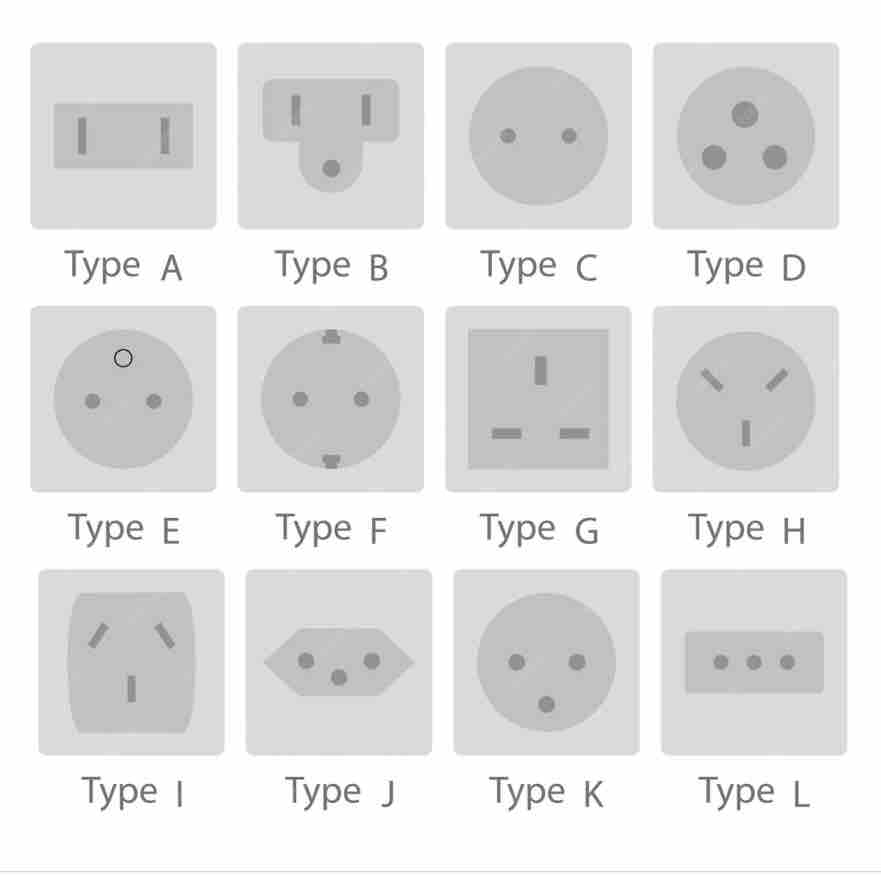
Electric Plugs and Adapters in Nepal- What to bring?
Langtang trek itinerary- 4 days to 9 days.
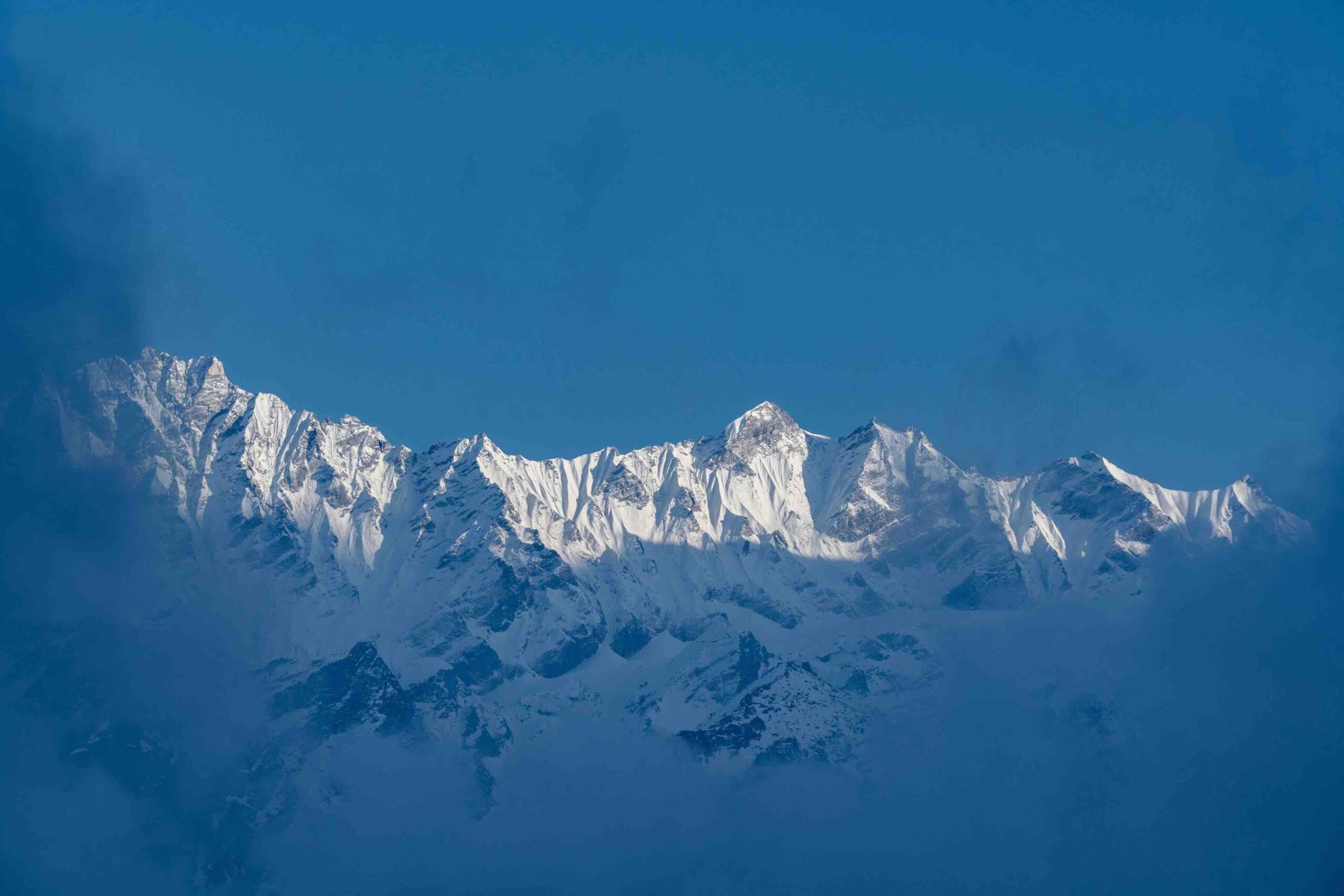
Langtang trek map

How high is the base camp on Everest?
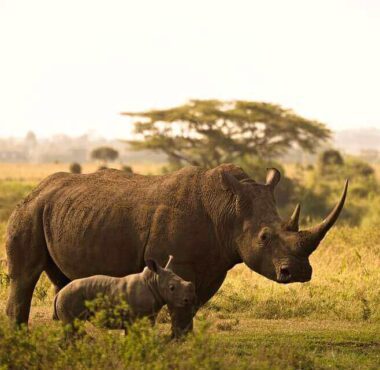
How To Get Kathmandu To Bardiya National Park
Unsure where to go we can help.

LATEST BLOG POST
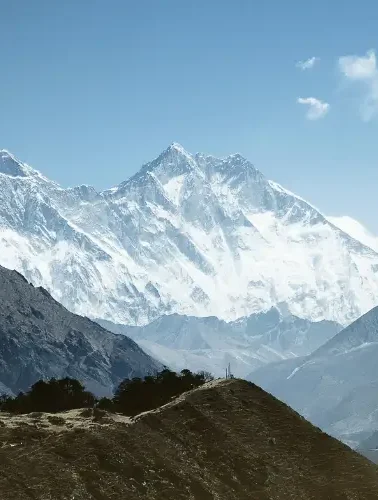
Rainbow Valley Everest/ Sleeping Beauty Facts
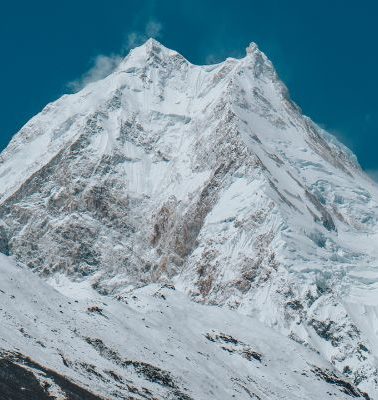
Why is Mt Manaslu Trek the best trek in Nepal?
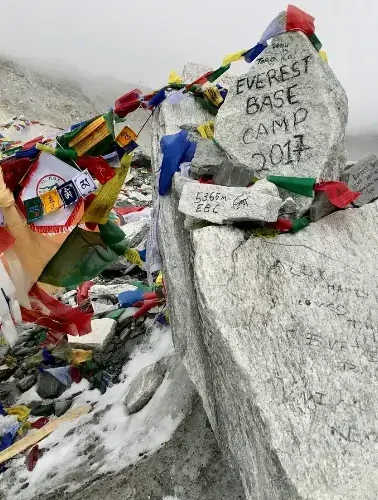
View of Everest from Kathmandu

Kanchenjunga Circuit Trek Difficulty: What to Expect in the Himalayas of Nepal?
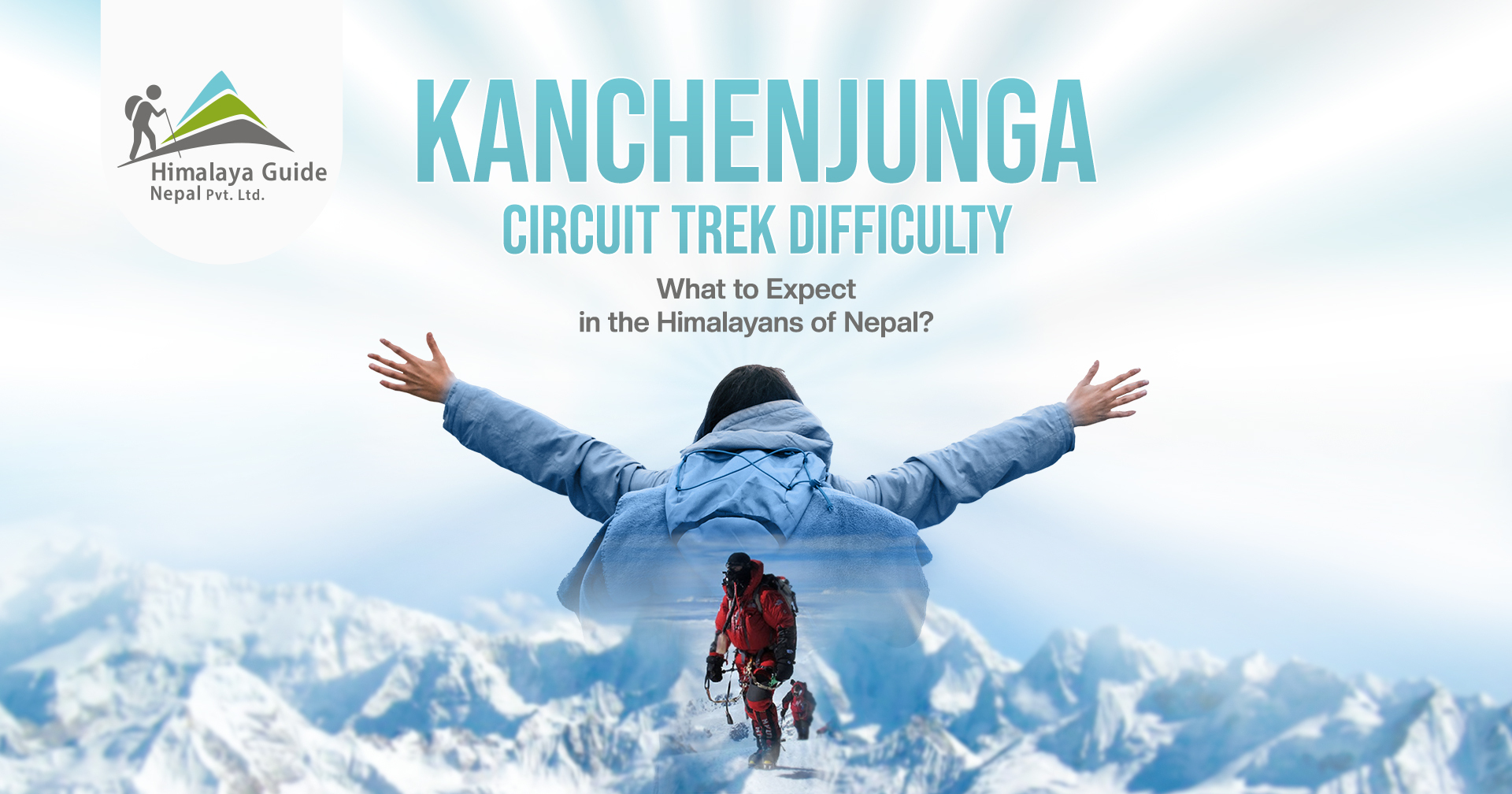
29 Apr 2024 Chandra Gurung
The Kanchenjunga Circuit Trek can be a perfect adventure for those chasing Nepal’s less crowded trekking trail. It takes you to the unmatched beauty of the third-tallest mountain, Mt. Kanchenjunga, at 8,586 m (28,169 feet) above sea level.
Taking you to the Kanchenjunga mountain range in the west, from the Tamur River, you can have a circuit around the Yalung Khang and several remote villages for this reason. Until 1852, it was considered the highest mountain in the world, but later, it was officially announced to be the third-highest mountain in 1856 after the Trigonometrical Survey.
Kanchenjunga is situated at the border of Phaktanglung and Sirijanga rural municipalities in the Taplejung district, Nepal, and India, so you get to explore the remote beauty of this area. Some notable high pass challenges during the Kanchenjunga Circuit trek are Sele Le Pass (4,290m), Sinion La Pass (4,440m), and Mirgin La Pass (4,480 m).
The Kanchenjunga region is also believed to be the habitat of the mythical Yeti, adding to the allure of the trek in the Himalayan mountains, including peaks like Mt. Everest, Mt. Makalu, and Mt. Lhotse, along with the stunning Yalung Glacier, at an altitude of 4,580 meters (15,026 feet) in the eastern part of Nepal.
Table of Contents
Kangchenjunga Massif: Why is it so popular?
The Kangchenjunga massif is the name given to the cross-shaped mountain range of the Kanchenjunga Himal. The mountain is believed to be sacred and has numerous pronunciations and spellings like Kanchenjunga, Kangchenjunga, etc.
This giant mountain range around Nepal’s second-tallest mountain forms a ridge from north-northeast to south-southwest. There are several mountain giants between 6,000-8,586 meters whose glaciers melt into major rivers in Nepal like Teesta, Arun, and Koshi, and part of the Brahmaputra basin in India.
The Kanchenjunga massif is a beautiful one, with over 120 glaciers, most prominently the Yalung glacier, and these glaciated masses cover over 300 km2 in total. Though the rising global temperature raises concern over their long-term sustenance, this massif is ranked 29th in topographic prominence.
If a daring heart desires a secluded adventure, Kangchenjunga ranks as the 4th most prominent peak in the Himalayas after Everest, Nanga Parbat, and Namcha Barwa in terms of beauty and exclusivity at high altitudes.
Climbing route of the Kanchenjunga Mountain: Nepal and India
There are four main climbing routes to the summit of the Kanchenjung mountain. Three of the prominent climbing routes from Nepal are in the southwest, northwest, and northeast.
Unfortunately, the fourth one from India’s northeast in Sikkim has been permanently banned since 2000. The route was used three times from India before becoming banned in 2000 AD. The major summits of the Kanchenjunga massif, as listed by Wikipedia, are:
Kanchenjunga circuit trek itinerary
Kanchenjunga South Base Camp Trek takes you to the amazing views of Khumbhakarna View Point / Jannu View Point. The trekking trail gradually ascends and descends to the Lelep, the headquarters for the Kanchenjunga Conservation Area Project (KCAP). Let’s understand the detailed route and trekking trails of the Kanchenjunga circuit trek to the South Base Camp.
- Fly to Bhadrapur, drive to Ilam (Day 1)
- Drive to Taplejung (Day 2)
- Trek Taplejung to Lali Kharka to Khesewa to Phumbe Danda (Days 3-5)
- Trek to Yamphudin, Tortong, and Tseram (Days 6-8)
- Tseram to Ramche (South Base Camp) and back (Days 9-10)
- Return trek: Tortong, Yamphudin, Khebang, and Khamdembe (Days 11-13)
- Drive to Bhadrapur, then fly to Kathmandu (Days 14-15)
Kanchenjunga Base Camp Trek (North to South) takes you to the Gunsa viewpoints, and you also have as short a trek as 7 days to 25 days, customizable for the best views of the Himalayas.
- Arrive in Kathmandu; preparation (Days 1-2)
- Fly to Bhadrapur, drive Ilam, Taplejung, and trek to Chiruwa (Days 3-4)
- Trek to Gunsa over 3 days (Days 5-8)
- Rest/acclimatize at Gunsa (Day 9)
- Trek Khangpachen, Lhonak, and Pangpema (Days 10-13)
- Return Gunsa, Sele-Le, Tseram, and Ramche (Days 14-17)
- Back to Tseram, Tortong, Yamphudin, Khebang, and Sinam (Days 18-22)
- Drive Ilam, Kathmandu (Days 23-24)
- Leisure days in Kathmandu (Days 25–26)
The combined north-south route covers more ground so here are two different multi-week routes for the Kanchenjunga trek. You get to interact with the Kirati people and immerse yourself in the Himalayan glaciers and viewpoints.
Kanchenjunga Circuit Trek: Best time
The best time of the year when you can explore the Kanchenjunga Circuit trek is during the spring and autumn seasons. The ideal month for trekking the Kanchenjunga Trek is March to mid-May when the weather is stable, dry, and pleasant.
What should I pack for the Kanchenjunga Circuit Trek?
The Kanchenjunga Circuit trek demands a quality backpack to carry the essentials for a multi-week adventure. You should pack your trekking accessories , like trekking poles, gaiters, sunglasses, sunscreen, personal essentials, and a first aid kit. What’s better than to trek in a good trekking boot, pants, hats, gloves, and warm socks?
You need to cover a total of 200 km of round trip in the circuit trekking around Kanchenjunga mountain. This breaks down into 15 to 20 km of walking each day, with a few acclimatization days at an altitude that elevates over 5000 m above sea level. As the Circuit trek has its challenges, have gear for your safety against any uncertainties in the trekking region.
What is the cost of trekking Kanchenjunga Circuit?
Nothing can beat the challenging Himalayan ascent when you have an adventurous spirit. The typical trekking cost in the region is between $1700 and $2500 for the 22-day trekking itinerary of the Kanchenjunga Circuit Trek. The costs here are inclusive of various
- Guide and porter fees
- Transportation within Nepal only
- Meals during the trek
- Accommodation during the trek (e.g. teahouses or tents in remote regions)
- Permits and fees (trekking permit, conservation area permit, restricted area entry pass, etc.)
Whenever choosing a trekking package for a significant adventure in Nepal, make sure you make a decision based on the level of accommodation and services desired. Your desired level of comfort, personal expenses, tips for staff, additional flights not included within the packages, and the cost of buying souvenirs for your loved ones may alter your budget .
Challenging sections of the Kanchenjunga circuit trek
The Kanchenjunga Circuit Trek has some of the most challenging aspects, despite being moderately difficult. The northern route of trekking to the Northern Kanchenjunga Base Camp is comparatively more difficult than the southern trekking route. As you ascend from the
As soon as you reach Kambachen village, you feel a sight change in the air, as you surpass the climatic zone of 4000 m, which can be the first time for some of us, and that’s a challenging fact. You acclimatize for a day and explore the Jannu View Point area, which is quite a few kilometers east of the region, with an elevation gain of 400 m. Challenges yet a beautiful surprise that opens up with the sunrise views from the Jannu Viewpoint (4400 m).
The remote villages of Lhonak (4780 m) and Pangpema (5143m ) can be challenging as you face network issues and comparatively fewer services due to high altitude challenges. But it is worth it as you chase the ultimate mountain views of Kanchenjunga and even see views of Mera Peak (6364 m), Dabgo Peak (6250 m), and Drhoma Peak (6855 m) on your mountain adventure .
Finally, individuals who have longer adventure goals can sign up for the 17-day Mt. Kanchenjunga Base Camp trek. This can take you to Yalung Base Camp or the Jannu Base Camps to explore two sides of one mountain.
And if the adventure is too pressing for you, we also have alternative trekking in Manaslu, the most preferred one for adventure seekers. You can also look through a map of the Kanchenjunga Circuit Trek on the two sides of the mountain for additional details.
Kanchenjunga Circuit Trek Permits
Kanchenjunga Circuit Trek permits are inclusive of a Restricted Area Permit (RAP) and a Kanchenjunga Conservation Area Permit (KCAP).
The cost may vary based on SAARC nationality, Nepali citizenship, and foreign nationality for the permits, but there is no time limitation on KCAP fees at a time. Your trekking guide and porter may pay less than you do because of the territory you belong to.
Kanchenjunga Trek RAP and KCAP can be processed in the municipality, VDC, and through a valid trekking agency registered in Nepal. A minimum of two trekkers, including the guide, is required for you to obtain the Kanchenjunga permit. It’s advisable to stay up-to-date about the current entry fees with your trekking guide. Additionally, the documents required for attaining the necessary trekking permits are,
- valid passport with at least six months remaining validity
- You need to have a valid Nepal visa extension that is longer than the expiration date of your RAP.
- One shall pose an agency-printed itinerary, insurance details of you, and your guide
- online submission ID for application if you have processed any.
- Details of payments (slip)
- E-copy of passport-sized photo
Food and accommodation on the Kanchenjunga circuit trek
In recent years, trekking has become much more comfortable in the Kanchenjunga region. While it remains the less-explored region in Nepal, the remote region has much to offer trekkers, from food to its Kirati culture. Travelers in those days had to bring everything, from food to tents.
Kanchenjunga is a teahouse trek in northeast Nepal, as many household-operated lodges and basic hut accommodations have grown recently. The ethnic settlements in the villages of the Kanchenjunga region include Limbu, Bhotia, Sherpa, Tibetan, Lepchas, Tamang, Rai, Jirel, Thakali, Magar, and Gurung.
You can easily get a hot shower and a hot cup of tea and enjoy mountain vistas from the terrace of your stay. Foods like Daal Bhat, thukpa, chowmein, instant noodles, macaroni, and pasta are available in the tea houses. There is a facility for an English breakfast and traditional Kirati food , which you can savor.
You might find it difficult to find toiletries and comfortable bathrooms in tea houses in Lhonak, Sele Le, and Ramche. Hence, you need to be prepared accordingly.
Why the Manaslu (Himalaya) Guide?
Manaslu Guide can be your trusted partner for trekking challenges in Nepal. We provide extensive guidance on trekking and navigation in various regions of Nepal. From the rugged trails of Manaslu to finding nature’s paradise in the local trekking trails, we make the routes more accessible and make you have fun.
Here, we employ professionally trained guides to ensure a safe and exciting adventure on the local trekking routes in Nepal. You can easily inquire about the trek and pre-book both seasonal and off-seasonal treks.

IMAGES
VIDEO
COMMENTS
December - August: 75 USD for 7 days ($10 for every additional day) For a standard 13 day Manaslu Circuit Itinerary, 7 days in the restricted area is enough and there is no need to pay for extra days. This permit can only be obtained from the Department of Immigration by a fully licensed trekking agency.
The Manaslu Circuit Trek does require a guide. Everest Base Camp and Annapurna Circuit can be done independently but the rules on the Manaslu Circuit are stricter about having a guide. I did the trek with Samip from One Globe Travel, which is one of the top trekking companies when it comes to Manaslu Circuit. The owner, Nawang, is a Tibetan ...
Overview. Manaslu Circuit Trek is the best for its unique culture, Buddhism, and teahouse trail which crosses Larkya La Pass 5106 m while simultaneously reaching the world's 8th highest mountain - Mt. Manaslu (8163m). The 12 Days Manaslu Circuit Trek is one of the most enthralling best seller trekking trails in Nepal just after EBC and ABC ...
The Manaslu Circuit hike passes ten Himalayan peaks of more than 21,300 feet, including the 8000er, Manaslu (26,781 feet), which is the eighth-highest mountain on Earth. The Manaslu trek is a 110-mile hike that is a great alternative to Everest Base Camp hike or the Annapurna Circuit hike. The trek usually takes between 14 and 17 days.
The Manaslu Circuit Trek: The Basics on What to Know Before You Go. Location: central-western region of Nepal in the lap of Mount Manaslu, situated within the Manaslu Conservation Area Project (MCAP) Starting point: departing Kathmandu for a 7 hr bus journey, the trek starts from Soti Khola and ends at Dharapani for the return bus journey Duration: 13 Days
The Manaslu Circuit Trek features everything you'd want from a classic trek in Nepal: Epic scenery, intimate encounters with local people and their ancient culture, and a 17,000-foot (5,100 m) Himalayan pass crossing. Kimkim's trusted partners in Nepal organize weekly group departures during the spring and fall trekking seasons, as well as private treks that can run on any date from February ...
Since Manaslu Circuit Trek lies in the restricted area, it is mandatory to have a licensed guide or a porter on the trek. A licensed guide will cost you about $20 to $25 per day while porters cost you about $15 to $20 per day. You can hire a porter-guide which will cost you $18 to $22 per day. Services. Cost.
The Manaslu Circuit is just to the east of the Annapurna Circuit, yet it still feels relatively untouched. This trek reaches remote mountain villages and comes close to the border of the Tibet Autonomous Region of China. Due to its location, the Manaslu region is a restricted area, which has stopped it getting too busy.
Tip: While it was once possible to trek independently, hiring a local guide is now compulsory for the Manaslu Circuit Trek following the April 2023 regulatory changes. Manaslu Circuit Trek Itinerary. The most popular Manaslu Circuit itinerary runs between 13-14 days, with the first and last days involving a jeep or local bus drive from and to Kathmandu.
The Manaslu Circuit Trek is a trekking route in Nepal that encircles the imposing Mount Manaslu, the eighth-highest peak in the world. This 13-day trek takes you through diverse landscapes, snow-capped peaks, rugged terrain, lush valleys, and traditional Tibetan-influenced villages. The Manaslu Circuit Trek is known for its remote and pristine ...
Now, let's dive into the step-by-step itinerary for the Manaslu Circuit trek. This classic route takes you on a circular journey around Mount Manaslu, showcasing breathtaking landscapes, rich cultural encounters, and challenging high-altitude adventure. The total trekking distance is approximately 177 kilometers (110 miles), and the trek ...
The Ultimate Guide to Manaslu Circuit Trek: Costs and Permit Fees. Last Updated on Apr 4, 2024; Manaslu Circuit Trek is an adventure in the mountains of Nepal. You will be taking a trip around Mount Manaslu, the eighth-highest peak in the world. This trek combines natural beauty with cultural immersion and physical challenge.
Manaslu Trek is an off-the-beat journey into the uncrowded and remote Himalayas of western Nepal, circling the eighth highest mountain of the world, Mt. Manaslu (8,163m/26,781ft). It is also regarded as the Manaslu Circuit Trek. Manaslu Trek is one of the closest trekking trails from Kathmandu. The fascinating trek in Budi Gandaki, Nubri, and ...
The Circuit Trek is the most visited remote area trekking in Nepal. The trek starts from the historical place of bravery and strength, Gorkha, and ends at Bhimphedi. The main attraction of Manaslu trekking is the dramatic Larkya Pass which extends to 5,140m. The Manaslu circuit trek distance is quite prolonged compared to other treks in Nepal.
Introduction of Manaslu Circuit Trek. Before we delve into the itinerary, let us give you an overview of the Manaslu Circuit Trek. The trek will encircle Mount Manaslu, which rises to a height of 8,163 meters (26,781 feet), making it the eighth-highest summit in the world. It is located in Nepal's Gorkha district.
Manaslu Circuit Trek - ULTIMATE GUIDE 2024-2025. One of Nepal's most challenging and well-known off-the-beaten-path treks is the Manaslu Circuit Trek. The walk is most notable for the breathtaking views of multiple snow-capped peaks, notably Mt. Manaslu, the eighth-highest summit in the world (8,163m/26,781ft).
Experience Nepal's remarkable Manaslu Circuit Trek, a captivating journey through culture and stunning landscapes. Your essential Manaslu trekking companion. Hotline: / +977 9851193013 ... Our local team from Mt. Manaslu,license holder guide and strong porter from Mountain, Deluxe, Standard and Budget trips. 876.
Manaslu Larkya Trek is an excellent way of stepping out of the luxuries of the modern world and enjoying nature to the fullest. Start by taking the permits in the lively city of Kathmandu and go to the Larkya La pass at 5160 meters during the trek. The breathtaking views of Manaslu 8163M, Shringi Himal 7161M, Cheo Himal 6812M, and Himlung Himal ...
The Manaslu Circuit Trek typically takes 14 to 18 days to complete, depending on your pace and chosen itinerary. Here's a typical itinerary: Day 1: Kathmandu to Soti Khola. Day 2: Soti Khola to Machha Khola. Day 3: Machha Khola to Jagat. Day 4: Jagat to Deng. Day 5: Deng to Namrung.
Manaslu Circuit Trekking highlights of this trek include : Hike at Manaslu Base Camp 4800 Meters. Stunning Himalayan Views: The trek offers breathtaking views of the Manaslu massif, including Manaslu itself, the eighth-highest mountain in the world. Trekkers can also enjoy panoramic views of neighboring peaks such as Himlung Himal, Manalu 8163 M, Nadi Chili 7871 m, Naike Peak & Ganesh Himal range.
Manaslu Circuit trip lies inside (MCAP) Manaslu Conservation Area project, Which Was established in 1998 to conserve and protect wildlife surroundings and nature. The 12-day Manaslu Circuit trek Itinerary starts, where driving by local bus or jeep for 7 to 8 hours to get there at Sotikhola at 730 meters. Where we spend a night, Sotikhola is a ...
Trekking Manaslu during the spring season, from March to May, offers a unique and vibrant experience. With clear skies, warm temperatures, and the blooming of spring flowers, this is the perfect time to enjoy the stunning mountain scenery and rich cultural heritage of the region. March to May is also the next Best Time for Manaslu Circuit Trek.
A Manaslu Circuit trek guide is responsible for directing you during the trek. They have more knowledge about the paths of the Manaslu region. Also, the Manaslu circuit area is restricted, so it will be difficult for you to follow the path and reach your destination. So, a Manaslu guide will help you follow the correct path for the trek.
The Kanchenjunga Circuit Trek can be a perfect adventure for those chasing Nepal's less crowded trekking trail. It takes you to the unmatched beauty of the third-tallest mountain, Mt. Kanchenjunga, at 8,586 m (28,169 feet) above sea level.